This page is being up-dated and extended all the time. Use the scroll bar on the right to navigate.
This endorsements page, the support page, the awards page and the publications page on this website, give some evidence supporting claims that C&C is now the most widely cited and arguably the most widely supported model in the UN negotiations on climate change and the debates these have given rise to.
This page is extensive: it is also available as a pdf file, lo-res here and high res here
~~~~~~~~~~~~~~~~~~~~~~~~~~~~~~~~~~~~~~~~~~~~

"I would certainly add contraction and convergence [C&C] to the short list of forward reasoning, progressively incremental mechanisms of path dependency these perceptive authors include in Playing it Forward: Path Dependency, Progressive Incrementalism, and the “Super Wicked” Problem of Global Climate Change."
Jonathan Maxson - Permavegan, Maine USA
~~~~~~~~~~~~~~~~~~~~~~~~~~~~~~~~~~~~~~~~~~~~
2 visionary videos on 'transformational change' from top medics advocating C&C.
Philip Hanlon on the Good, the Beautiful and the True
~~~~~~~~~~~~~~~~~~~~~~~~~~~~~~~~~~~~~~~~~~~~
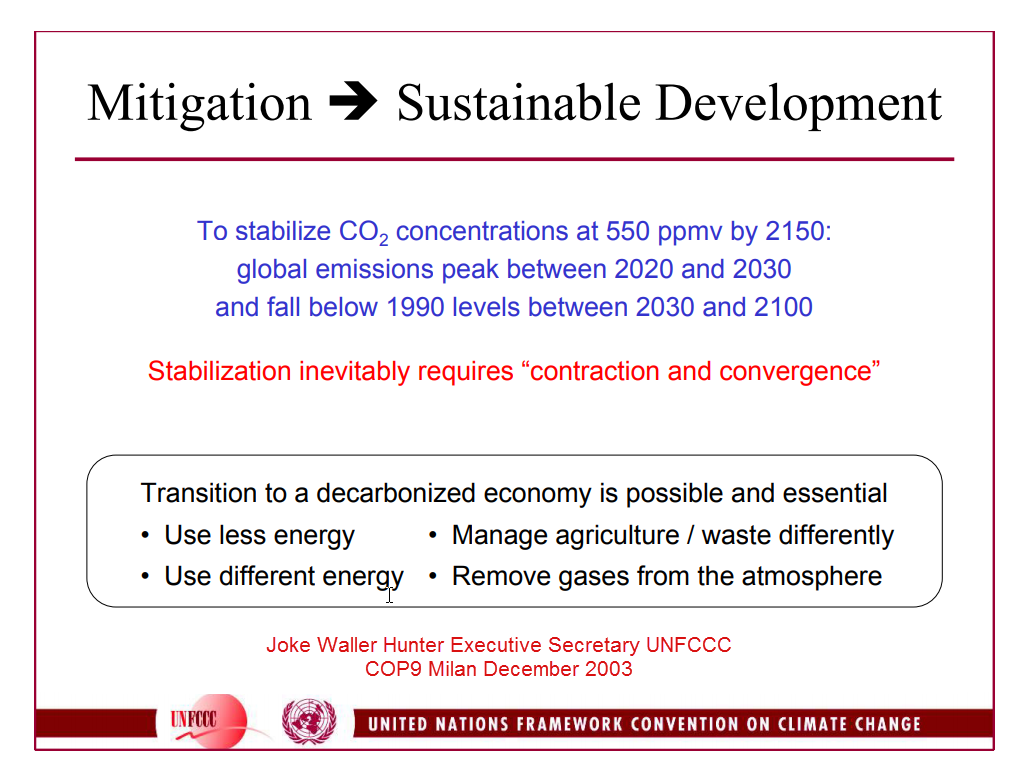
"Stabilization inevitably requires Contraction and Convergence."
In others words, ‘UNFCCC-Compliance' is dependent on C&C.
COP-9 Milan 2004 -
Joke Waller Hunter, UNFCCC Executive Secretary
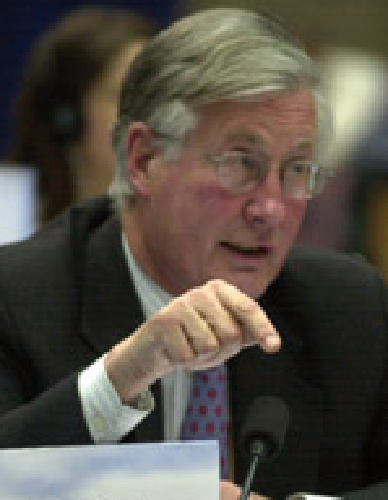
Contraction and Convergence is a very powerful idea and we are moving remorselessly towards it.
Michael Meacher UK Environment Minister [1997 - 2003]
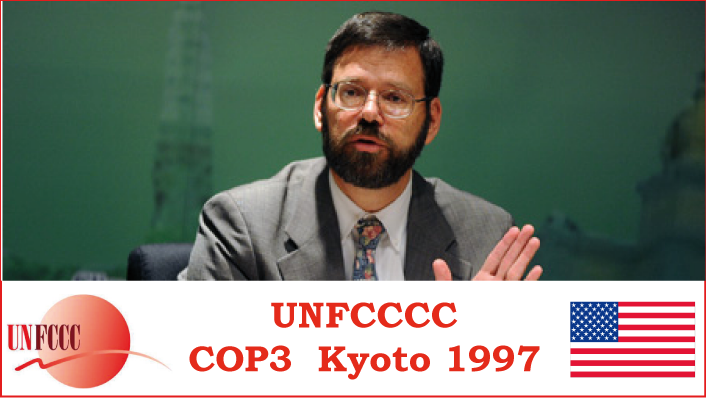
ZIMBABWE: [for the Africa Group]
“ . . . . . we do support the amendment that is poposed by the distinguished delegation from India, and just to emphasise the point of the issues that still need a lot of clarification would like to propose in that paragraph the inclusion, ater “entitlements” that is the proposal by the delegation of India, the following wording; ater “entitlements, the global ceiling date and time for contraction and convergence of global emissions because we do think that you cannot talk about trading if there are not entitlements, also there is a question of contraction and convergence of global emissions that comes into play when you talk about the issue of equity . . . . . “
CHAIRMAN Raul Estrada:
"I thank you very much. May I ask again the distinguished delegate of the USA if they have another suggestion to propose in connection with the proposals made by the distinguished delegate of India. He does."
UNITED STATES OF AMERICA:
“ . . . . It does seem to us that the proposals by for example India and perhaps by others who speak to Contraction and Convergence are elements for the future, elements perhaps for a next agreement that we may ultimately all seek to engage in."

Raul Estrada -
Chairman Kyoto Protocol Negotiations
Intergovernmental Panel on Climate Change [IPCC]
Contraction and Convergence [C&C] - See http://www.gci.org.uk
"Long before the end of the Framework Convention negotiation, the Global Commons Institute (GCI) has presented a proposal on contraction and convergence,
aimed to reach equality in emissions per capita.
We all in this room know the GCI model where contraction is achieved after all governments, for precautionary reasons, collectively agree to be bound by a target of global GHG emissions, making it possible to calculate the diminishing amount of greenhouse gases that the world can release each year in the coming century, subject to annual scientific and political review. The convergence part of the proposal means that each year's global emissions budget gets shared out among the nations of the world so that every country converges on the same allocation per inhabitant by an agreed date. Countries unable to manage within their shares would, be able to buy the unused parts of the allocations of other countries. The entitlement of rights transferred in this trading is legitimised by the per inhabitant criteria. Level of contraction and timing of convergence should be negotiated on the basis of the precautionary principle. Suggestions for emission reductions are well known and convergence should be achieved at medium term to satisfy legitimacy. I have read that the Chairman of IPCC’s WG I, Sir John Houghton, has said that this is the logical approach. Analysis of C&C in TAR is a must if equity is going to be taken into account in the report."
Proceedings 2nd IPCC Expert Meeting on
Development, Sustainability and Equity
Havana, Cuba 23-25 February 2000
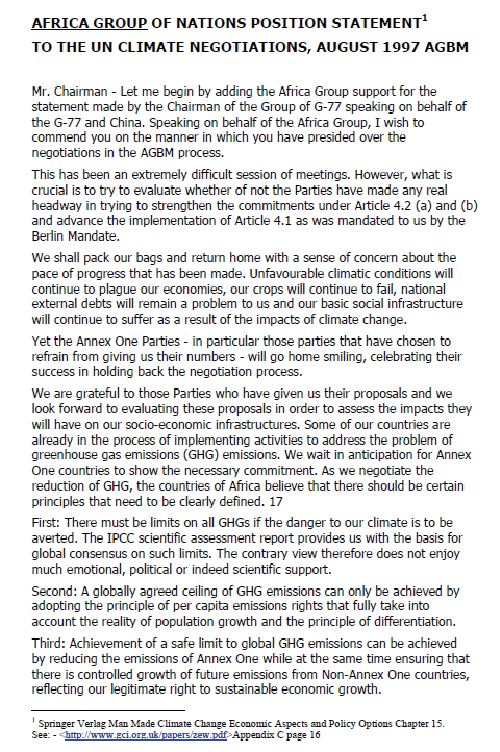
[1] There must be limits on all GHGs if the danger to our climate is to be averted. The IPCC scientific assessment report provides us with the basis for global consensus on such limits. The contrary view therefore does not enjoy much emotional, political or indeed scientific support.
[2] A globally agreed ceiling of GHG emissions can only be achieved by adopting the principle of per capita emissions rights that fully take into account the reality of population growth and the principle of differentiation.
[3] Achievement of a safe limit to global GHG emissions can be achieved by reducing the emissions of Annex One while at the same time ensuring that there is controlled growth of future emissions from Non-Annex One countries, reflecting our legitimate right to sustainable economic growth.
We strongly believe that this will take us along a path to responsible climate management that allows us to reach our goal of defining a mutually agreed point of convergence and sustainable development. Such a convergence Mr. Chairman must ensure that we maintain a global ceiling on emissions to prevent dangerous interference with the climate system.
[4] When we look at time frames, we believe that insufficient commitment by Annex One countries will only result in delaying our influence on the climate system. If this course is maintained, then we will all suffer and the burden will be even greater for humanity in general. The burden for any future mitigation efforts on those of who have not been historically and currently responsible for creating the problem will be greater.
Proceedings 2nd IPCC Expert Meeting on Development, Sustainability and Equity Havana, Cuba 23-25 February 2000
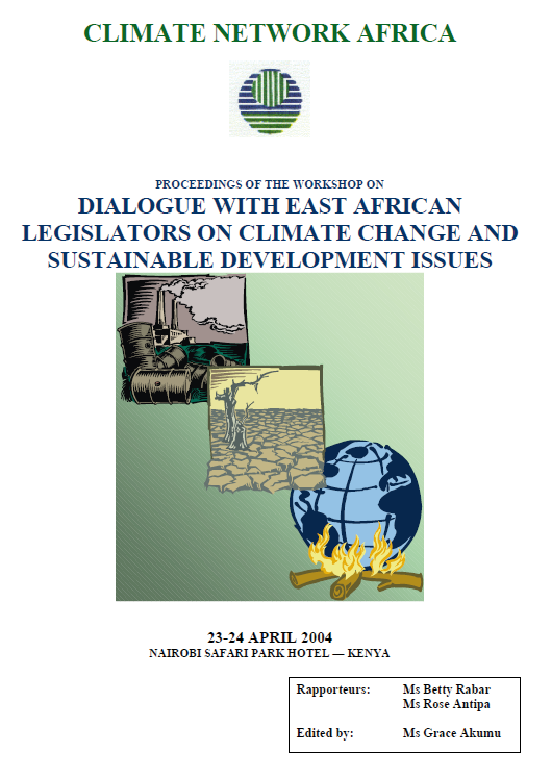
The workshop sought to galvanize urgent international support and action for the concept of the Contraction and Convergence policy framework proposed to the United Nations Convention
on Climate Change by the Global Commons Institute (GCI) since 1990. The African Group of
Nations had proposed during the UNFCCC – COP 3 that a “globally agreed ceiling of GHG
emissions can only be achieved by adopting the principle of per capita emissions rights that
fully take into account the reality of population growth and the principle of differentiation”.
The way forward for East African legislators was envisaged as calling for the UNFCCC
secretariat to study, evaluate and assess the concept of Contraction and Convergence, and at
the same time set the stage for building a global community to support the concept as it added
value to the Kyoto Protocol and also encompassed the major principles in the Climate Change
Convention such as the Precautionary principle, Polluter Pay principle and the Equity
principle.
Proceedings of the Workshop on
Dialogue with East African
Legislators on Climate Change and Sustainable Developement Issues
Nairobi Safari Park - KENYA; 23-24 April 2004
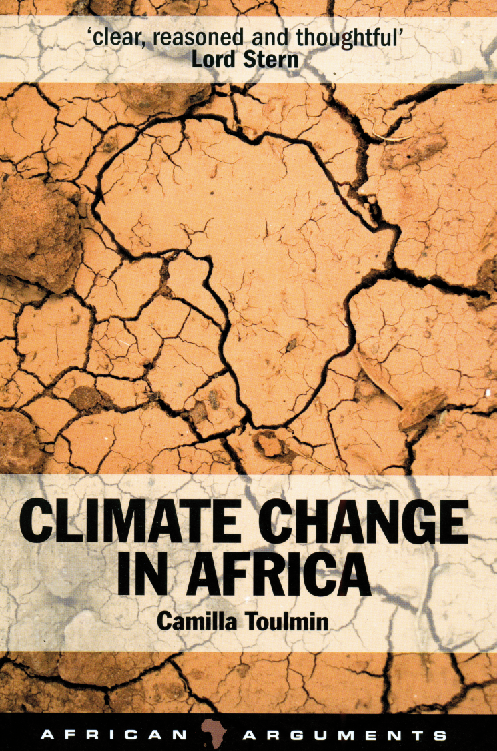
It is now clear that the scarcest resource is the capacity of our atmosphere to continue to absorb the growing volume of CO2 and other GHG that we generate. How should we allocate this scarce resource? Should it be on the basis of where we are now, which confirms the status quo and the associated power of the big polluters? Or should we opt for a fairer, more radical approach, in which all people around the world are deemed to have an equal stake in the atmosphere, and hence rights in and responsibilities for the future of our planet? This is the key principle underlying 'Contraction and Convergence' proposals for managing global warming. In the current global setting, is it better to pitch high for an equity-based solution, or go for the second best, which is more in tune with the current power balance?
The political philosopher John Rawls outlined a theory of distributive justice, which sought to promote 'justice as fairness'. He argued that people are likely to develop the ideal set of rules and institutions if they start from a point where no rules currently exist - a situation Rawls calls the 'original position' - and with the goal that any new rules are based on equal basic liberties for all. The rules will also be fairest if they are drafted by people acting as though they are behind a 'veil of ignorance' and do not yet know where they will be in the future economic and political hierarchy. Rawls's hypothesis is that by applying these principles, people are likely to construct a society based on rules that deliver the best possible outcome for everyone.
Climate Change In Africa
Camilla Toulmin IIED

It is more equitable and fair to consider the per capita emission concept and data. This is because some countries have large total emissions mainly because of their huge population sizes, and not because of the emission intensity. The principle of “contraction and convergence” would be equitable and thus more capable of winning support by more people. In this principle, the world as a whole has to contract or reduce its total emissions. In doing so, an equitable principle is used. Take the total maximum emission level that is sustainable, i.e. that the world is able environmentally to sustain. Divide this total by the world’s population. That level of emission per capita could be considered the “emission right” or “emission entitlement” per person.
Martin Khor
Director
Third World Network - August 2007
To the Special UN General Assembly Session on Climate Change
What GCI said in response to Martin Khor
Martin, we're not sure if you know this but recently some of the Western 'Stop Climate Chaos' NGOs said you had criticized C&C as 'convergence' to per capita equality entitlements globally by 2050 [as in the UK Climate Act] was much too late. We replied to them as follows: - if Martin is saying that, GCI sees and agrees that there are grounds for saying that. In fact, opposed by these very same NGOs every step of the way, GCI has lobbied for twenty years, not only making exactly that point, but also providing the 'Contraction and Convergence' mechanism itself to declare strategically for that very point. With this you and Third World negotiating partners and in an alliance based on that formation can win it at the UNFCCC negotiations themselves. It would be helpful to inform them and these NGOs about that. The UK Daily Telegraph observed these NGOs can't seem to get over their grudge that the truth and reconciliation of C&C at the UNFCCC has set a standard for 'Climate Justice without Vengeance' since the UN Climate negotiations began in 1990.
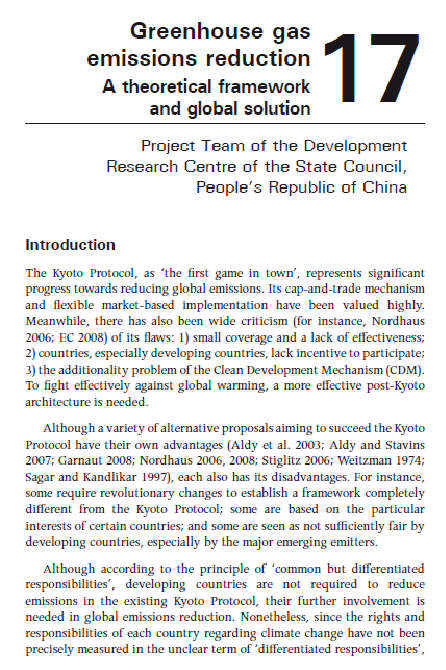
Contraction and convergence
Since the principle of ‘contraction and convergence’ was first proposed by the Global Commons Institute in 2000, it has been widely embraced by some industrialised countries. Under contraction and convergence, each country will start out with emission entitlements equal to its current real emissions levels, and then, over time, converge to equal its per capita entitlements, while the overall global budget contracts to accommodate the emissions reduction objective. The convergence principle should be applied immediately rather than later as the ‘converged point’ in the future. ‘Real emissions’ is a different concept to ‘emissions entitlement’. A country’s high/low per capita real emissions cannot justify its high/low emission entitlements. In the process of convergence, the rights and interests of country B are really infringed by country A. In the NEA-based solution, the concept of convergence can still be incorporated, but it now merely means ‘convergence of real emissions’ rather than ‘convergence of emission entitlements’. Each country’s gaps between its emission entitlements and real emissions need to be balanced by the traded emissions quotas.
Greenhouse gas emissions reduction - a theoretical framework and global solution
Development
Research Centre of the State Council
People’s Republic of China 2009
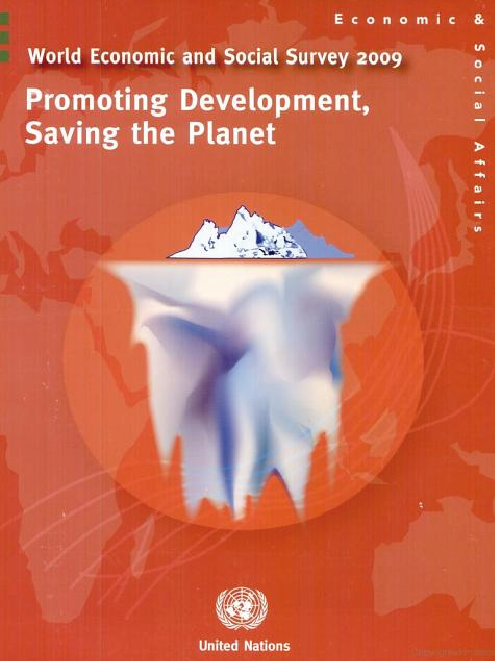
Contraction and Convergence [C&C]. This plan combines equal rights to emit with grandfathering [or assigning rights based on past emissions, the higher the past emissions, the larger the grandfathered emissions rights]. Each country is allocated emissions right based on its past emissions. Countries that exceed desired per capita global emissions have their allocation reduced in each succeeding year, while countries that emit less that this target receive a higher allocation each year. Over time global emissions contract while high an low emitting countries converge on the same per capita emissions [Global Commons Institute].
World Economic and Social Survey 2009
Promoting Development Saving the Planet
UN Department of Economic and Social Affairs
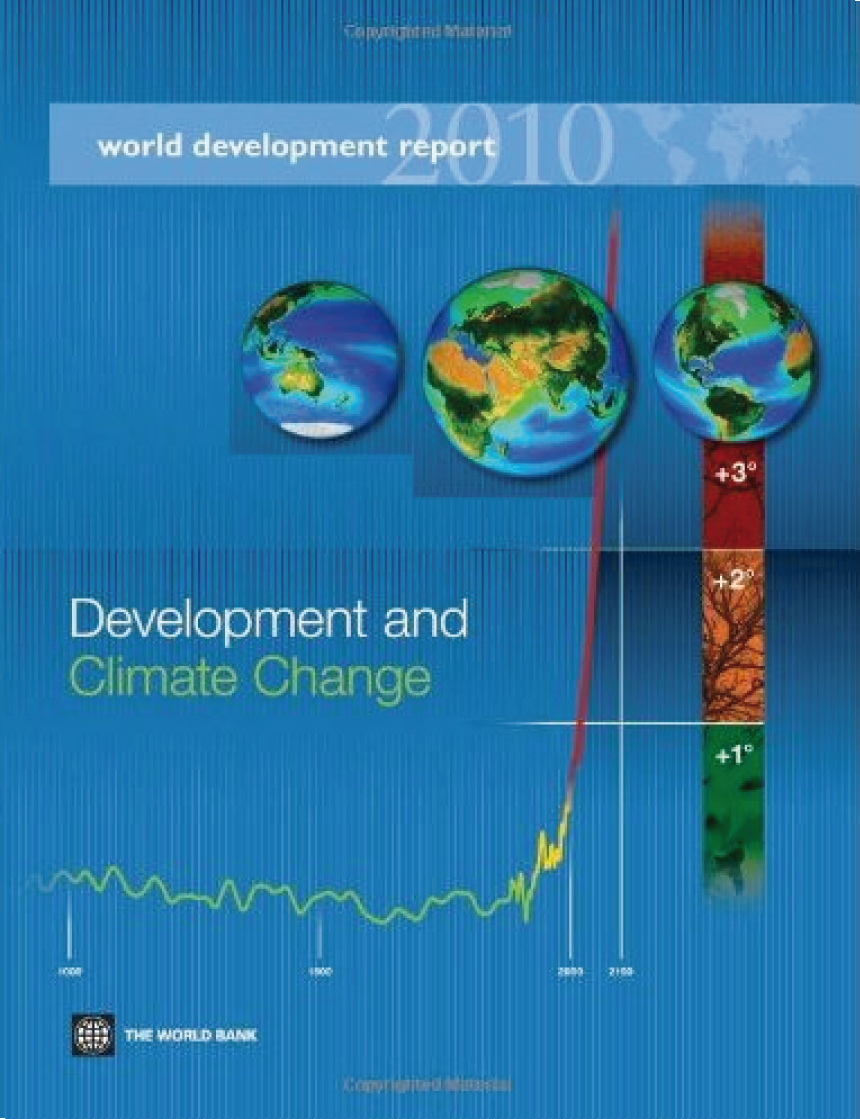
Contraction and convergence
The contraction-and-convergence approach assigns every human being an equal entitlement to greenhouse gas emissions. All countries would thus move toward the same per capita emissions. Total emissions would contract over time, and per capita emissions would converge on a single figure. The actual convergence value, the path toward convergence, and the time when it is to be reached would all be negotiable. [Meyer].
World Bank Development Report 2010
Development and Climate Change
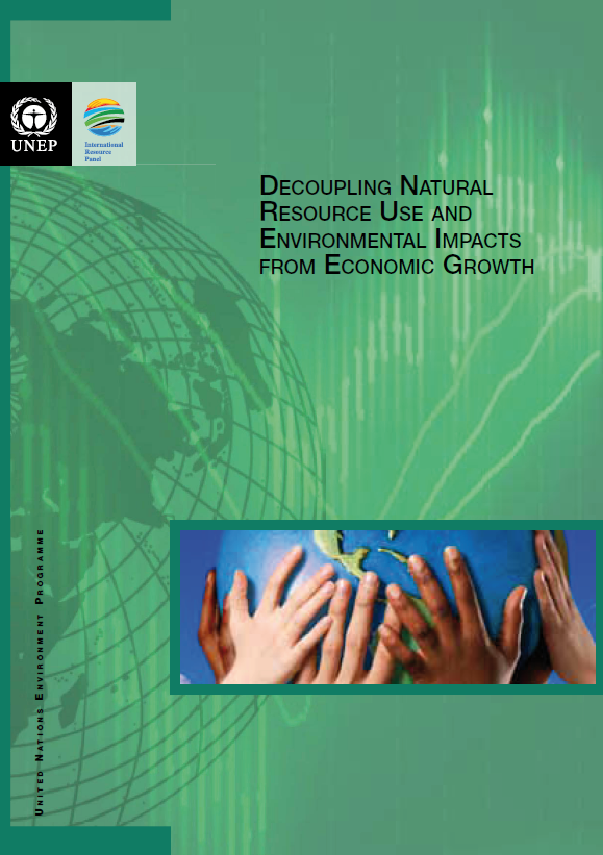
Having reviewed the trends in the use of natural resources and accompanying undesirable
environ-mental impacts in the first section of Chapter 2, the last section of that chapter
considers possible future implications by presenting three brief scenarios: (1) business as
usual (leading to a tripling of global annual resource extraction by 2050); (2) moderate contraction and convergence (requiring industrialized countries to reduce their per capita
resource consumption by half the rate for the year 2000); and (3) tough contraction and
convergence (aimed at keeping global resource extraction at its current levels). None of
these scenarios will lead to actual global reductions in resource use, but all indicate that
substantial reductions in the resource requirements of economic activities will be
necessary if the growing world population can expect to live under conditions of
sustainable resource management. The key
message of the tough scenario is that despite
population growth to roughly 9 billion
people, the pressure on the environment
would remain roughly the same as it is
now. The emissions correspond
approximately to the lowest range of
scenario B1 of the IPCC SRES, but are still
20% above the roughly 5.5 GtC/yr advocated
by the Global Commons Institute for
contraction and convergence in emissions
(GCI, 2003).
UNEP - Decoupling Natural Resource Use and
Environmental Impacts
from Economic Growth - 2011
Dr. Ernst Ulrich von Weizsäcker,
Dr. Ashok Khosla,
Co-Chairs, International Resource Panel (IRP)
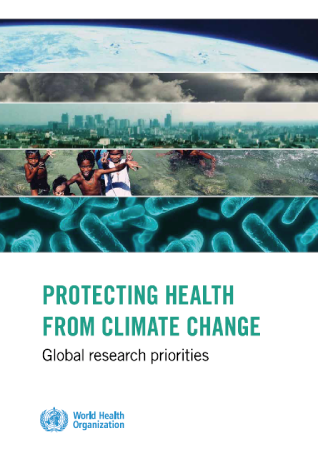
"The few studies that are now beginning to assess the health consequences of
decisions aiming to mitigate or adapt to climate change use very different analytical
methods and assumptions, even for very similar challenges. There is a need to
develop more generic guidance on conceptual frameworks and methods in order
to improve comparability, and assist decision-makers to achieve the greatest health
“co-benefits”, and avoid harm. This should cover the full range of potential decisions,
from the “macro” level for example global contraction and convergence in carbon dioxide
(CO2) emissions; carbon pricing policy and incentives), to more local and sector specific
decisions (e.g. city-level policies to promote public transport, or to protect
a natural watershed)."
Protecting Health from Climate Change
Global research priorities
World Health Organisation 2009

"Carbon emissions must be reduced to avoid the worst outcome of the climate change. Developing economies need rapid economic development so that no country, community or individual is too poor to adapt to climate change. The principle of 'contraction and convergence', conceived by the Global Commons Institute, UK, considers the need to pursue both these actions, reducing global carbon emissions and ensuring economic development of underdeveloped countries simultaneously."
SEA PR 1513
Climate change is a fundamental threat to human health
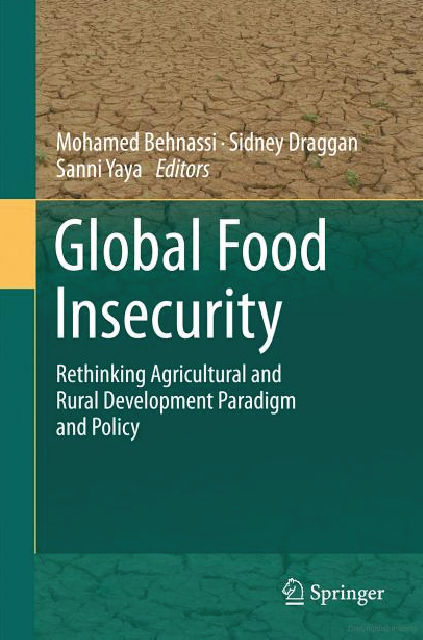
Whilst we can encourage small-scale livestock production for family and local use in poorer nations, those eat high up the food chain surely have a moral oblication to reduce their consumption of animal products. We can eat less so that they can eat more. This theory of contraction and convergence has been outlined by leading public health academics such as Tony McMichael. He and his colleagues believe that those in the developed countries should reduce their meat consumption to no more than 90 gm a day as this would be better for the climate and for their own health (McMichael et al 2007). Those in the developing world could eat more meat until they too reached this level. Even 90 gm a day only helps to stablize and not itself reduce GHG emissions figures.
Global Food Insecurity
Mohamed Behnassi, Sidney Draggan, Sanni Yaya

In a recent paper in The Lancet we propose
that the world should commit to reducing the
global average daily intake of meat, especially
red meat from ruminants. This would be part
of the evolving portfolio strategy – across
various sectors of commerce, energy use and
human behaviour – to mitigate climate change.
The fairest approach is ‘contraction and
convergence’, where the world’s nations agree to
reduce average per-person meat consumption
(currently just over 100 grams per day) and to
do so equitably. High-consuming populations
would reduce their intake and low-consuming
populations could increase their intake up to
the agreed average level.
Contraction and Convergence is Good for our Health
Food Ethics - Tony McMichael
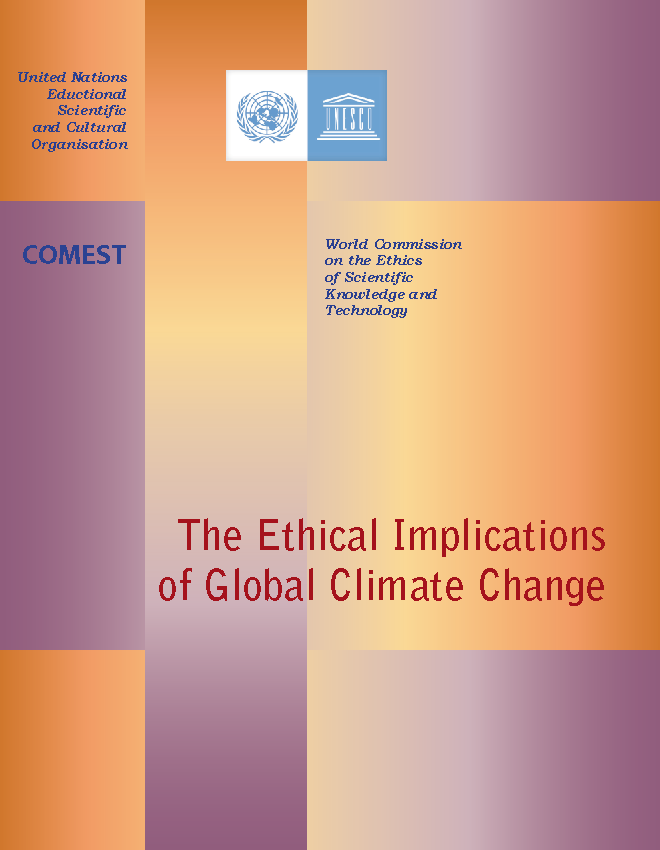
UNESCO COMEST on C&C
"The principle of contraction & convergence refers to the emission of gases contributing to the greenhouse effect. A fair and pragmatic approach, it is argued, would be to move gradually towards quotas that would not be indexed on GOP, as is the case in the Kyoto Protocol, but rather on population, while gradually reducing the permitted total towards the 60% reduction commended by the Intergovernmental Panel on Climate Change (IPCC). Such a principle may be seen as a consequence of both the principles of environmental justice and the principles of earth as global commons. The particular problem whether future emissions allocations should be based on a per capita
basis, as the so-called “contraction and convergence” proposal suggests, or on a country basis,
might be seen in a different light if humanitarian aid were internationally organized on a basis of
each country’s ability to pay. The greater duty of rich countries to contribute to such aid might be
politically easier to accept than more stringent emission limits imposed on “more polluting” and
“past polluting” countries than LDCs (least developed countries), which would also cost “richer”
countries more."
Contraction and Convergence (C&C) is the science-based, global climate policy framework proposed to the
United Nations since 1990 by the Global Commons Institute (GCI).
See http://www.gci.org.uk/briefings/ICE.pdf
UNESCO - The Ethical Implications of Climate Change:
A
Report by the
World Commission on the Ethics
of Scientific Knowledge and Technology
(COMEST)
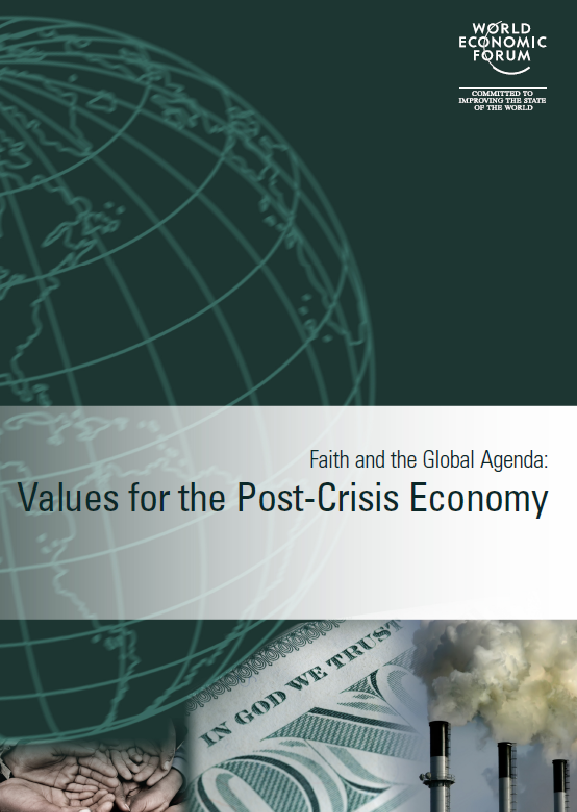
Along with Human Well-Being and Economic Decision-Making, we have to ask about “green taxes” that will check environmental irresponsibility and build up resources to address the ecological crises that menace us. The Contraction and Convergence proposals are among the best known and most structurally simple of these, and it would be a major step to hear some endorsement of them from a body such as this.
Faith and the Global Agenda:
Values for the Post-Crisis Economy
World Economic Forum, DAVOS, Switzerland 2010
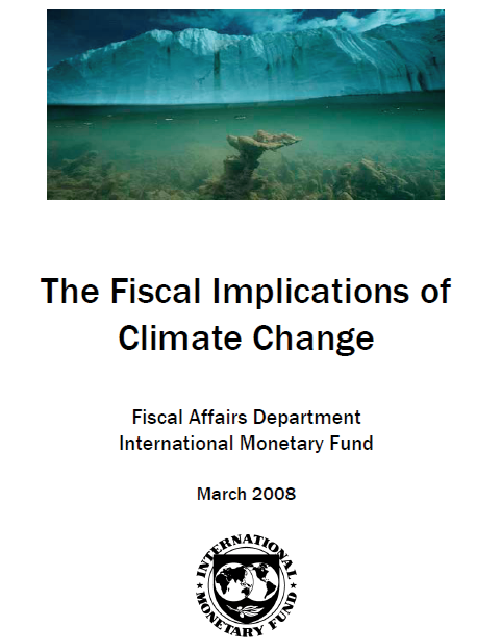
The Global Commons Institute has devised a greenhouse gas
abatement proposal called Contraction and Convergence (Global Commons Institute 1997),
in which the emphasis is placed not only on a significant contraction of anthropogenic CO2
emissions, but also on an equitable per capita distribution of the resulting global carbon budget.
The latter implies a transition to a point (convergence) where future entitlements to emit will
have become proportional to population. The uniform per capita allocation of emission rights
reflects egalitarianism in the sense that all people have inherently an equal right to pollute. The
egalitarian criterion per se has a strong philosophical appeal. However – under contraction of
the global carbon budget – it is unlikely to be acceptable for industrialized countries with
currently high per capita emissions unless the transition path allows for long-term “smooth”
adjustment towards the terminal point.
“Contraction and Convergence
of Carbon Emissions: An Intertemporal Multi-Region CGE Analysis,”
Journal of Policy Modeling; The Fiscal Implication of Climate Change
International Monetary Fund
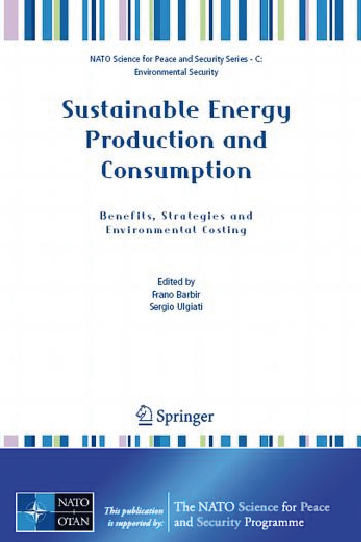
Contraction and Convergence model provides one transparent solution with equal per capita emissions for the mitigation of COs emissions The model requires considerable emissions reductions which, according to our study, seem to be possible when the changes arc analyzed from the point of view of emissions intensity development. According to the Fourth Assessment Report of the IPCC a considerable reduction of greenhouse gas (GHG) emissions is required in order to prevent dangerous anthropogenic interference with the climate system. Various different approaches have been proposed to allocate commitments regarding the future greenhouse gas emission mitigation for different countries. One of them is the Contraction and Convergence (C&C) model of future GHG emissions (GCI. 2003). The C&C approach defines emission permits on the basis of converging national GHG emission rates to an equal level which is based on per capita emissions under a contracting global emission profile. In this study we have used a target of 1.8 tons of CO2 per capita. which should be achieved by all countries by a designated year, 2040. This satisfies the requirement set by IPCC to reduce the total emissions by 50 to 85% from the 2000 level in order to limit the global temperature increase to 2-2.4°C. The purpose of this paper is to analyze what the C&C approach might mean for the examined countries and to analyze the potential changes that are needed in the emission intensities of the selected countries in order to achieve their C&C targets. For further information on the data and methodology used in this study please see GCI (1998, 2003). (IEA (2003 a. b. e) and (UN 2003) for data sources and Luukkanen et al. (2005) for methodology.
Sustainable Energy Production and Consumption - Frano Barbir Sergio Uliati
NATO Science for Peace and Security Programme
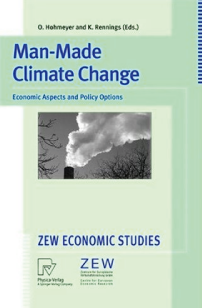
"The Kyoto Protocol, completed in the early hours of December 11th 1997, at
present is no more than a potential breakthrough in the development of effective
global policy for the control of atmospheric concentrations of greenhouse gases and
the mitigation of human-induced global climate changes. The core issue of the
negotiations has been deferred until COP4 in November 1998. The industrial
countries have negotiated a compromise that subject to ratification will legally bind
them to commitments beyond those in the UNFCCC. But, the ratification of the
Protocol by the US still remains contingent on achieving the “meaningful
participation” of “key” developing countries in the abatement regime and the
multilateral acceptance of international emissions trading. This is a struggle to define
property rights. These key developing countries include India and China and they
have made it clear that their acceptance of trading is contingent on the achievement
of “equitable allocations” of emissions entitlements based on achieving equal per
capita entitlements globally.
COP issued instructions to the technical bodies attached
to the UNFCCC to “define the relevant principles, modalities, rules and guidelines for
emissions trading” in time for COP4 in November 1998 in Buenos Aires.
GCI argues that "Contraction and Convergence" is the approach that can
break through this deadlock and welcomes the fact that major parties and interest
groups in this dispute have already acknowledged that they take this approach
seriously and that it has growing support throughout the world. As a leading
economics commentator Peter Jay has noted, “… unless there is some recognition
that eventually no one group of human being can expect to have an internationally
recognised right to consume more of the world's limited capacity to absorb
greenhouse gas emissions than any other group, it is hard to see how a globally
enforceable policy can be built by consent.” And in the words of the President of GLOBE International "Contraction and Convergence is not simply the right way to
solve the problem, it is the only way to solve the problem.”
The Kyoto Protocol and the Emergence of “Contraction
& Convergence” as a framework for an international
political solution to greenhouse gas emissions abatement. A Meyer 1997
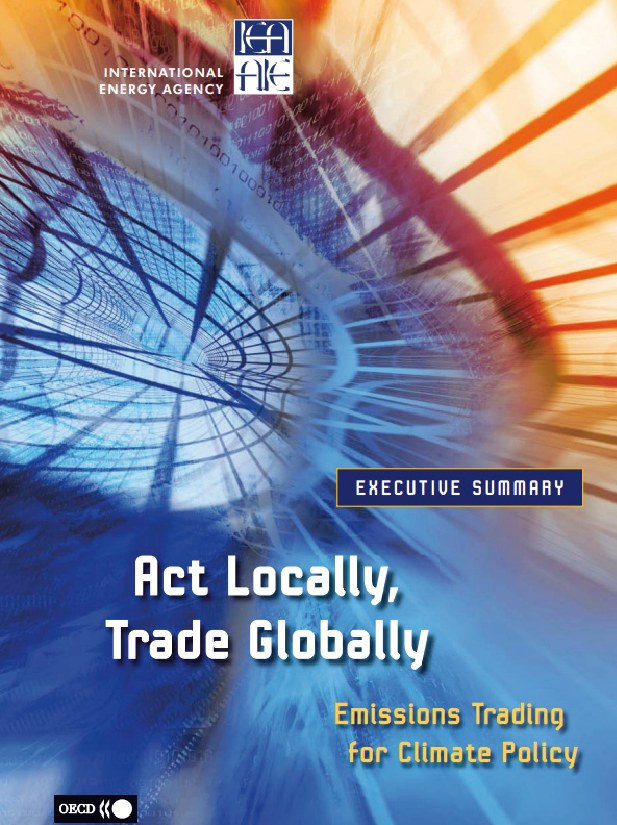
Some proposals compensate the potential burden on developing nations with generous emissions allocation, whether as a simple strategy to obtain developing countries support for the regime or in a realisation of the global equity principle borrowed from social justice. A famous such proposal is “Contraction and Convergence” developed by Aubrey Meyer.
Act Locally Trade Globally - Emissions Trading for Climate Policy
Organisation for Economic Cooperation and Development OECD & IEA

Contraction and Convergence is the major proposal based on egalitarianism. Developed by the Global Commons Institute, it proposes that all countries should move, over a period of time, towards equal per capita emissions, with total emission levels contracting and per capita emissions converging at a safe level. The model is flexible as to the time-frame and final emission level and potentially allows national circumstances to be taken into account.
Climate Policy
Elsevier
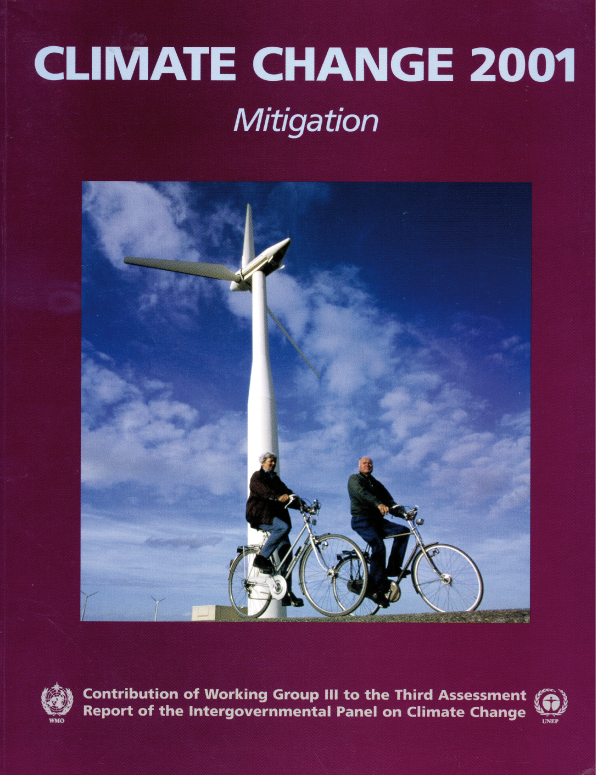
“Rights-based, that is based on equal (or otherwise defensible) rights to the global commons.
A formulation that carries this insight to its logical conclusion is that of “contraction and convergence” (Meyer, 1999), whereby net aggregate emissions decline to zero, and per capita emissions of Annex I and non-Annex I countries reach precise equality.”
IPCC Third Assessment [Cambridge University Press]
Working Group 3 Chapter 1
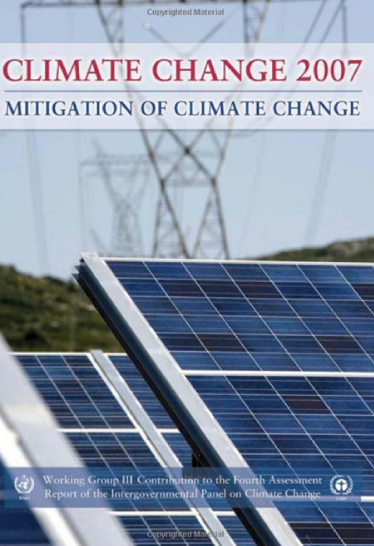
“A number of scenario studies have been conducted for various countries within Europe. These studies explore a wide range of emission caps, taking into account local circumstances and potentials for technology implementation. Many of these studies have used specific burden-sharing allocation schemes, such as the contraction and convergence (C&C) approach (GCI, 2005) for calculating the allocation of worldwide emissions to estimate national emissions ceilings.”
IPCC Fourth Assessment [Cambridge University Press]
Working Group 3 Chapter 3
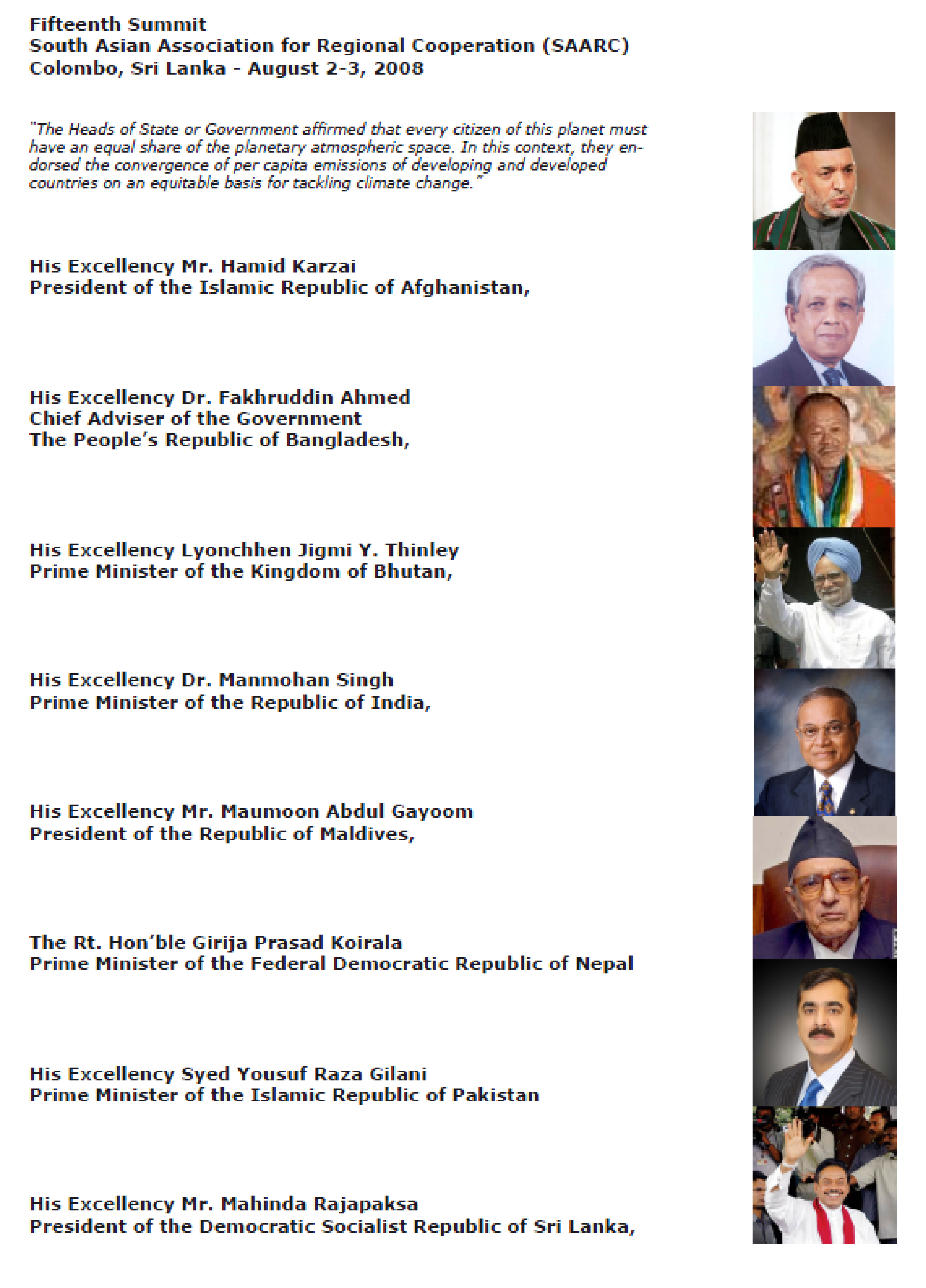
“The Heads of State or Government affirmed that every citizen of this planet must have an equal share of the planetary atmospheric space. In this context, they endorsed the convergence of per capita emissions of developing and developed
countries on an equitable basis for tackling climate change.”
Fifteenth Summit
South Asian Association for Regional Cooperation (SAARC)
Colombo, Sri Lanka - August 2-3, 2008
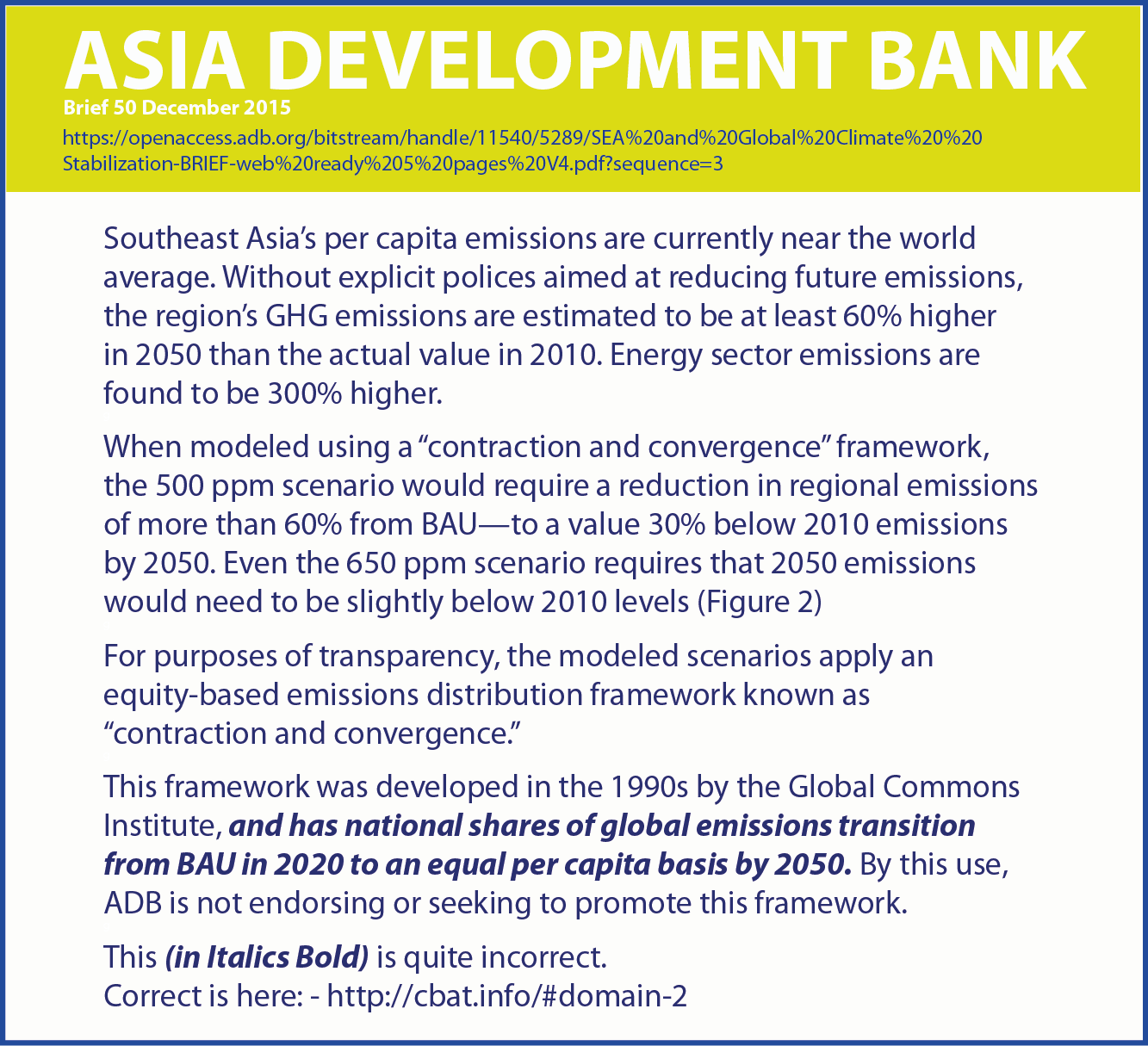

"High Level Dialogue on Climate Change" on C&C
“The framework of contraction and convergence provides a flexible methodology to address the problem of allocation of emission rights. The contraction of overall world emissions pursued along with the convergence of countries’ average per capita emissions, allows developing countries to partake of the carbon budget.
The per capita entitlements approach is an effective one in that it takes into account historical responsibility and is based on the egalitarian distribution of the commons, within which international justice positions of causal responsibility such as the ‘polluter pays principle,’
come in."
Ursula Schäefer-Preuss
Vice President of ADB.
Haruhiko Kuroda
President and Chair ADB Board.
Ban Ki-moon
Secretary General of the United Nations.
Rajendra Pachauri
Director of TERI, Chair IPCC.
Yvo de Boer
Former Executive Secretary UNFCCC.
Gloria Macapagal Arroyo
President Philippines.
Zhou Dadi
Chief advisor national energy strategy, People’s Republic of China.
Full Signatory List
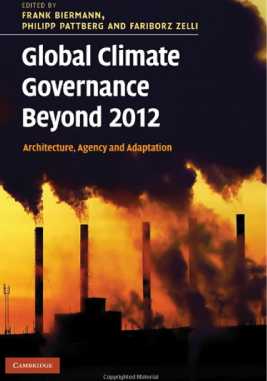
Universal regimes with a predefined emission target - Contraction and Convergence
"Of all the regimes, the ‘contraction and convergence’ regime has been analysed most often. The most crucial reason is its simple formulation - which makes it a good reference for any form of allocation. The first step in the 'contraction and convergence’ regime is to establish a long-term global emission profile. Then emission rights are allocated so that the per capita emissions converge from their current values to a global average in a specified target year [Meyer 2000]."
"Global Climate Governance Beyond 2012" on C&C
Frank Biermann, Philipp Pattberg, Fariborz Zelli
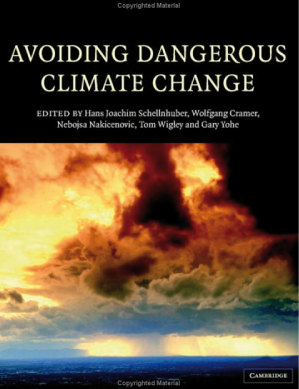
"We chose one of the many possible options for the international regime of of differentiating future commitments [post 2012]: the Contraction and Convergence approach. It is selected here as it is a widely known and transparent approach that defines emissions allowances on the basis of convergence of per capita emissions allowances [starting after 2012] of all countries [including the USA] under a contracting global emissions pathway (Meyer 2000)."
Avoiding Dangerous Climate Change
Schellnhuber, Cramer, Nakicenovic, Wigley, Yohe

Key Recommendations
In light of the growing human impact of climate change and the pressures
of this crisis for humanitarian and development work, the following is a list
of key recommendations made by the different discussion groups at the
2009 Forum.
Climate vulnerable coalition
Those nations most vulnerable to the impacts of climate change should
form a common front in order to increase awareness on the impact
and risks of climate change, share expertise relating to climate change
policy, and influence the development of safe and equitable international
climate change policy, in particular with the strongest possible impact
on the 2009 UN Climate Conference at Copenhagen
Future international climate change agreement
1. The principle of contraction and convergence with a population base
year should provide the basis framework for global greenhouse gas
emission reductions
2. “No deal is better than a bad deal”: it would be more constructive to
avoid conclusion at the 2009 UN Climate Conference at Copenhagen of
any climate change agreement that would not provide for basic levels of
safety, equity and predictability
3. All parts of civil society should make a concerted attempt to create wide
multi-stakeholder partnerships for concentrating pressure for a successful
conclusion to the Bali Road Map and the Copenhagen Conference."
2009 Global Humanitarian Forum
Human Impact of Climate Change
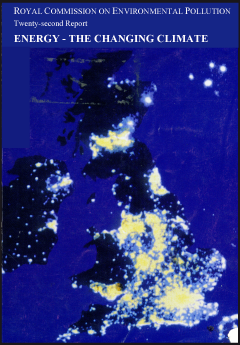
"The UK-based Global Commons Institute has taken the lead in promoting contraction
and convergence, and has developed a computer model which specifies emission allocations
under a range of scenarios. The concept has been supported by several national governments
and legislators. Some developed nations are very wary of it because it implies drastic reductions
in their emissions, but at least one minister in a European government has supported it.
Commentators on climate diplomacy have identified contraction and convergence as a leading
contender among the various proposals for allocating emission quotas to nations in the long
term."
"Energy - The Changing Climate" [2000]
The Royal Commission on Environmental Pollution
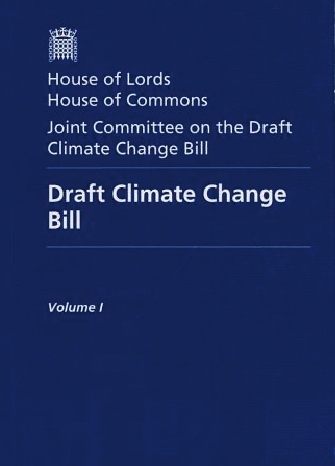
The 60% target
A key feature of the draft Bill is the long-term target of a 60% reduction in carbon dioxide by 2050. This target was first announced in the Energy White Paper of 2003, and, as the Government acknowledged in its oral evidence to us, was in response to a recommendation by the Royal Commission on Environmental Pollution (RCEP) in its influential report, Energy the Changing Climate, published in 2000.
The 60% target which the RCEP recommended was based on the adoption of the 'contraction and convergence' approach first advocated in 1990 by the Global Commons Institute. Contraction and Convergence involves calculating the maximum global level of emissions which could be regarded as 'safe', and apportioning these emissions to countries on an equal per capita basis. Some countries, in particular the carbon-intensive developed nations, would currently be well in excess of their apportioned amount and would need to radically reduce their emissions, while less developed countries would be allowed to increase their emissions.
Joint Committe on the Draft Climate Change Bill
UK House of Commons and House of Lords
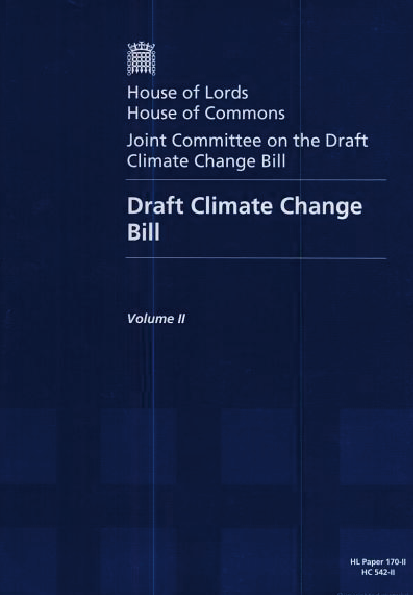
Contraction & Convergence repeatedly referenced by a range of witnesses to this enquiry by the . . .
Joint Committe on the Draft Climate Change Bill [Vol 2]
UK House of Commons and House of Lords
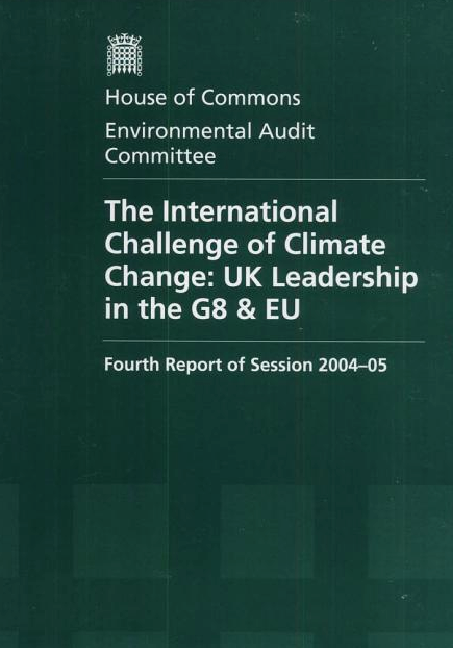
Contraction and Convergence
83. Such calculations provide an interesting and important perspective on the context in
which negotiations on a post-2012 framework should take place. The Global Commons
Institute (GCI) has been promoting the concept of equal per capita emission allocations
since its foundation in 1990, and it has coined the term “Contraction and Convergence”
(C&C) to describe its approach. C&C involves two distinct stages—firstly defining the level
to which global emissions need to be reduced to avoid dangerous climate change, and
secondly allocating this level of emissions to countries on an equal per capita basis.
84. The C&C model put forward by the GCI does not in itself define the mechanisms by
which emission reductions are to be achieved—whether through emissions trading,
international taxes, or regulatory approaches. Nor does it stipulate the actual level at which
emissions should be stabilised, or indeed the timescales over which the targets should be
set. It does, however, graphically illustrate the conse-quences of varying these parameters,
and provides a useful framework within which to set targets and frame policy responses. The real strength of the model, however, arises from the manner in which the concept of equity underpins it.
85. Given the scale of the reductions which are needed, there is now a growing awareness
of the need for a ‘full-term’ framework such as the one C&C provides. Indeed, it is difficult
to argue with the fundamental principle of equal per capita allocations, and various
witnesses—including the Under-Secretary of State of the Foreign Office and the Director-
General of the CBI—acknowledged the viability of the model. 68 This is also reflected in the
joint memorandum submitted by DEFRA and the FCO, 69 and in the recent report from
the International Climate Change Taskforce which explicitly accepted that equal per capita
emissions allowances should form the basis for a long-term solution. 70 While, in their
memo-randum to us, Barclays Capital set out a vision of an all-embracing international ETS
involving 60 year targets determined by a C&C approach. 71
86. Any framework which involves radical emission reductions would in practice
resemble the Contraction and Convergence approach advocated by the Global
Commons Institute. Indeed, in terms of domestic policy aims, the UK Government has already implicitly accepted this approach in adopting the 60% carbon reduction target for 2050; and it is therefore inconsistent not to adopt such an approach internationally.
We do not see any credible alternative and none was suggested in evidence to our
inquiry. We therefore recommend that the UK Government should formally adopt and promote Contraction and Convergence as the basis for future international agreements to reduce emissions.
The International Challenge of Climate Change
UK Leadership in the G8 & EU [much evidence supporting C&C, written and oral, to EAC].
UK Hoc Environmental Audit Committee
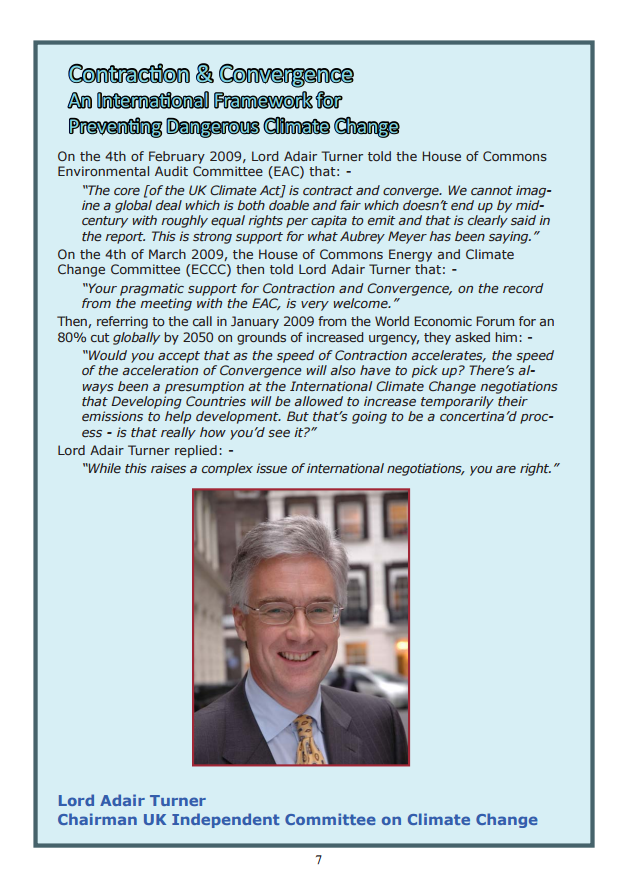
"Climate change is likely to impose massive
economic costs. The case for being prepared to spend huge
resources to limit it is clear,” says Turner, arguing that the cost will
be repaid many times over by the avoidance of disaster.
In any case, “the developed world does not have the moral
right to increase the risk of flooding in Bangladesh”, and, he
adds acidly, “European executives worried about the cost
of action should perhaps consider it the necessary price for
preserving at least some skiing in the Alps. Long term the only sound strategy is that of
‘contraction and convergence’ – cutting greenhouse emissions to
the point where they are shared equally, worldwide, on a per capita
basis.”
Lord Adair Turner -
Chairman UK Climate Change Committee
Interview
in Green Futures
Adair Turner characterised the UK Climate Act as C&C in evidence to the EAC and DECC select committees in 2009 saying that converging to equal per capita entitlements globally is the only option that is, "doable and fair" for organising and sharing the full-term emissions-contraction-event to bring us to UNFCCC-compliance. He agreed that, "if, for reasons of urgency the rate of global contraction has to be accelerated, for reasons of equity the rate of international convergence has to be accelerated relative to that.”
Evidence to House of Commons
Climate and Energy Committee [2010]
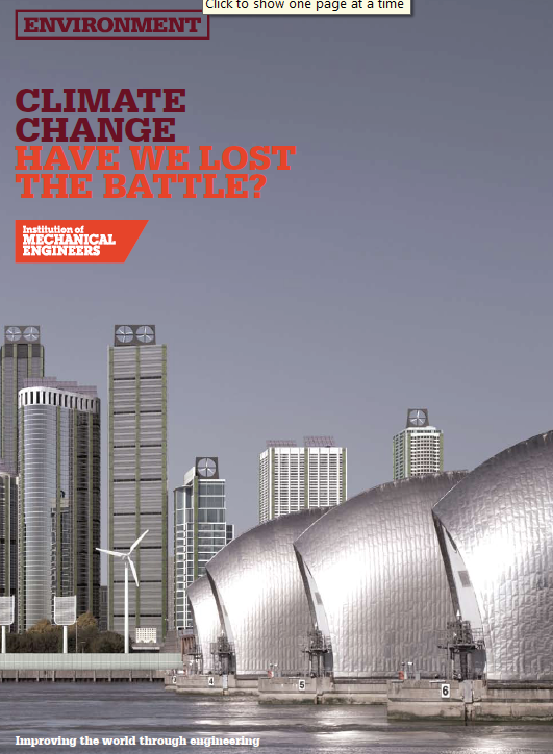
The Government’s targets and budgets have been set using a top-down approach based on the principle of contraction and convergence. This approach involves emissions from industrialised nations reducing (contracting). At the same time, emissions from all nations converge to an overall target consistent with stabilising greenhouse gas concentrations within the atmosphere at an
acceptable level. In this way, over time emissions will contract and converge to an equal share per person globally, regardless of the nation in which they live. The desire from most authorities is to constrain the global mean temperature rise to 2°C or below. This translates the contraction and convergence requirement to an 80% reduction target for the UK relative to 1990 levels by 2050
and the adopted budget profile through to 2020. The Institution of Mechanical Engineers supports the principle of contraction and convergence.
Climate Change - Have We Lost the Battle
Institution of Mechanical Engineers

The G10’s International Contraction and Convergence Agreement has succesfully resulted in a reduction in emissions but carbon levels in the atmosphere are still rising and many commentators are worried that not enough has been done. Governments have been forced to respond with schemes such as the UK’s Carbon Entitlements programme which has been introduced to ration travel. The ice caps are shrinking and global weather patterns are unpredictable; environmentalists believe that the world ismoving into unknown territory.
Scenarios to 2055 - FORESIGHT Programme - June 2011
UK Government Office of Science and Technology

The UK Climate Change Act target of an 80%
reduction in CO2 by 2050 and the London
Climate Change Action Plan target of a 60%
cut by 2025 are both based on a ‘contraction and convergence’ model in which
by 2050 everyone in the world would be entitled
to an equal share of emissions with the aim of
atmospheric CO2 concentrations not exceeding
450ppm. This entitlement is roughly equivalent
to two tonnes of CO2 per person each year.
As UK and London emissions are currently
much higher than this (whether calculated on a
production or consumption basis), the targets are
based on the reductions needed to achieve an
equitable level by 2050.
Capital Consumption - Bioregional
the transition to sustainable consumption and production in London
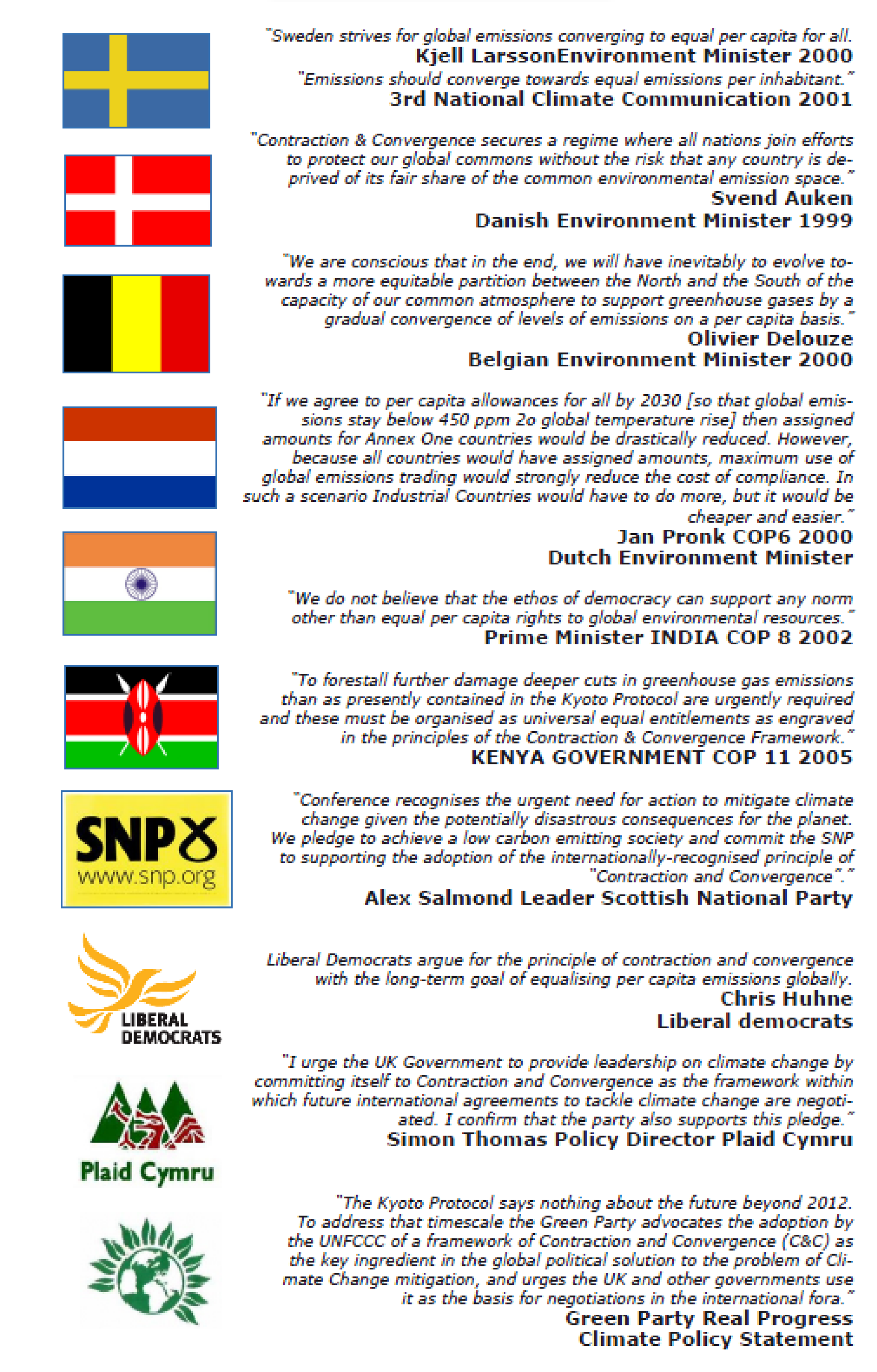
Some Political Support for C&C e.g.

Per capita CO2 emissions meet in the middle.
“In the final analysis the per capita emissions in emerging economies will meet those of industrialised countries. I cannot imagine the emerging economies will one day be permitted to emit more CO2 per capita than we in the industrialised countries. With this proposal, emerging nations with rapidly expanding economies could be on board the global climate negotiations scheduled for 2009.”
Angela Merkel President of Germany 2008

“The international climate regime should be based on legitimate principles of equity, such as long-term convergence of emission levels per capita in the various countries.”
Nicholas Sarkozy President of France 2008

"I fully agree that the GCI's Contraction &
Convergence framework provides a realistic & equitable plan for global
action. That is why C&C was a key part of the Liberal Democrat's manifesto
and why I continue to believe the principle of C&C will be central to our
long-term strategy on climate change."
Nick Clegg Lib Dem MP [2010]
UK Deputy Prime Minister
’
"You know I agree, in the long term there is no other way to solve this problem.”
Chris Huhne Lib Dem MP [2010]
UK Secretary of State Energy & Climate

"Man-made climate change. Little progress can be made without fundamental agreement on the principle of 'Contraction and Convergence', as between high-income countries, which have generated the lion's share of the stock of carbon in the atmosphere, and the big low-income countries, which will contribute the greatest future emissions. Without China and India as full and equal partners in the process, it will fail."
Vince Cable Lib Dem MP [2009] -
UK Secretary of State Business
The Storm: The World Economic Crisis & What It Means

"A good first step would be to pressure Climate and Energy Minister Chris Huhne to stand by Liberal Democrat manifesto pledges to push for an ambitious international climate treaty. Such a treaty should be based on a globally fair emission reduction model like “Contraction and Convergence”, whereby emission targets are set on the assumption that everyone globally is entitled to the same level of per capita emissions.
A model based on contraction and convergence should be the framework that we organise around, in advance of the Cancun climate meetings later this year. At the same time, in order to ensure we fulfil our part of the C&C contract domestically, we should urgently revisit the idea of carbon quotas. Back in December 2006, when David Miliband was Environment Secretary, he briefly took up the idea of Domestic Tradeable Quotas."
Caroline Lucas Leader of the Green Party [2010]
Britain’s first Green MP
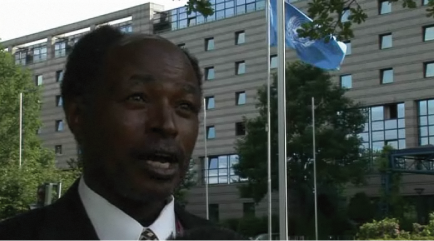
"I think that Aubrey is a good gentleman because he has really been on this issue for years – donkey's years – and he’s not giving up. He has the stamina. I think if all of us were like Aubrey we would have achieved very high levels. Unfortunately not many of us have been that strong."
Joshua Wairoto, Deputy Director Met Office Kenya

“Aubrey Meyer has done an amazing job and shown extraordinary persistence and ingenuity in working out a scheme of this kind. I very much admire him for it. Above all he’s laid out an intellectual and legal framework which is what you need if you’re going to set global arrangements in place.”
Sir Crispin Tickell, former UK Ambassador to the UN [2007]
Director of the Policy Foresight Programme James Martin Institute Oxford University

"GLOBE International adopted the "Contraction and Convergence" analysis
in May 1977. Since then, I and my colleagues have campaigned for its
acceptance. This pamphlet is a record of those efforts and provides a short
summary of the work of the Global Commons Institute (GCI) in this field. I
would like to pay tribute to all the GLOBE parliamentarians who have fought
so hard for this cause and particularly to the work of Aubrey Meyer and the
GCI team on whose brilliant analysis the campaign is based. If you read only one book on climate change,
its past and future, politics and solutions, read this one.
This is the global picture and the key to a global solution."
Tom Spencer Former Director GLOBE International
Chair European Parliament Foreign Affairs Committee

"Talking about why it is important that everybody in the world gets Contraction and Convergence [C&C]. I don’t say things like this lightly. I am not really one for hyperbole or strange religious motivations. What I find is important is that my whole life experience has taught me that things that have proportionality to them, that have melody to them, that are profoundly simple, usually have something right going for them. And secondly that you can judge an idea by the quality of the enemies it gets and there have been some profound enemies for C&C, which is based on an understanding that perhaps there is something of the night about it there is something not properly scientific. Well actually it is, it is totally scientific and more important than that it has blended something the age of reason was never able totally to do which is blending the empiricism of it with ‘soul’; the quite obvious rightness of a system that apportions to every person on earth a carbon contract that it theirs to dispose of over a period of time to create a parity that enables us to live one with another in a way that enables us to be connected to the earth itself in terms of being able to make us live with the grain of nature and not apart from it. I have yet to hear anyone provide an argument that makes it ethically unsound, however uncomfortable they may feel about it. I have yet to find someone who can scientifically disprove the work of Aubrey Meyer."
Tim Smit Chief Executive and Co-Founder of the EDEN Project

"Several ideas derived from Contraction and Convergence [C&C] have surfaced since Kyoto with ideas that can be perhaps in various ways incorporated into C&C. However, there is an overwhelming need for an over-arching UNFCCC-compliant Framework that enables the globally competing interests of the over-consuming and the under-consuming to be reconciled with each other and with the objective of the UNFCCC in a non-random manner.
We feel that C&C is the veteran and indeed the apex example of this and urge you to consider our request. At Kyoto in December 1997 and shortly before they withdrew from these negotiations, the USA stated, “C&C contains elements for the next agreement that we may ultimately all seek to engage in.”
The adversarial reasons for their withdrawal then were in play again at COP-15: http://www.gci.org.uk/public/COP_15_C&C.swf
C&C answers this in a unifying and constitutional way and the need for this answer becomes increasingly critical."
Tim Yeo MP [2010]
Chairman of the House of Commons Energy & Climate Change Committee
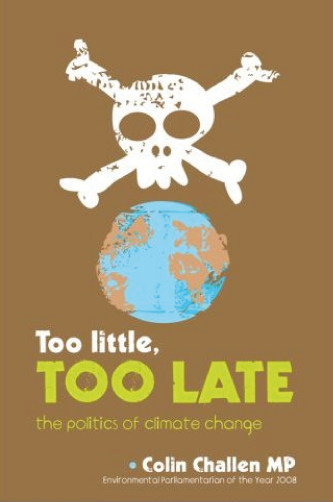

"Let us recognize that a global deal has to be fully inclusive, demonstrate how we calculate burden-sharing and be equitable as no-one will accept a deal that builds in their disadvantage. That framework is Contraction and Convergence."
Too Little, Too Late: The Politics of Climate Change
Colin Challen - Former Chair UK HoC
All Party [2008]
Parliamentary Group on Climate Change
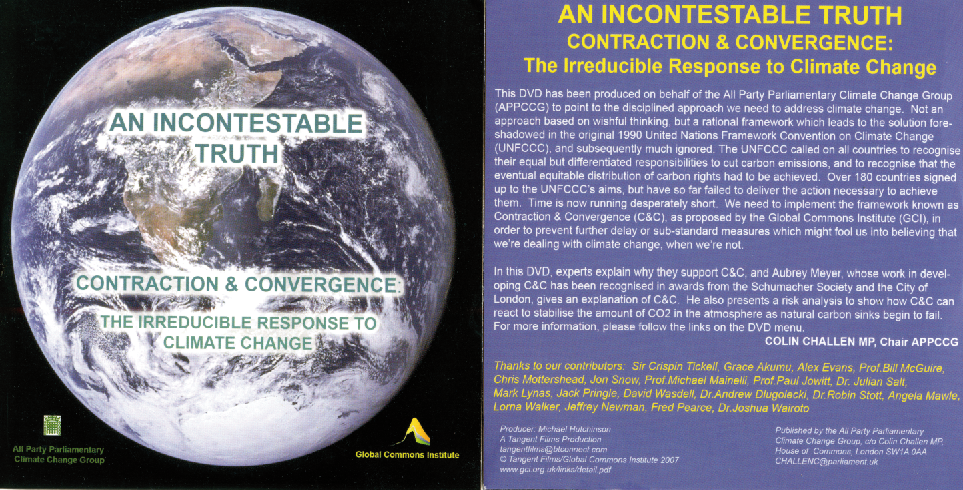
This DVD was produced on behalf of the UK House of Commons All Party Parliamentary Climate Change Group of MPs (APPCCG) by GCI and Tangent Films. It was distributed to all sitting UK MPs in 2007. It points to the disciplined approach we need to address climate change. Not an approach based on wishful thinking, but a rational framework which leads to the solution foreshadowed in the original 1990 United Nations Framework Convention on Climate Change (UNFCCC), and subsequently much ignored.
The UNFCCC called on all countries to recognise their equal but differentiated responsibilities to cut carbon emissions, and to recognise that the
eventual equitable distribution of carbon rights had to be achieved. Over 180 countries signed up to the UNFCCC's aims, but have so far failed to deliver the action necessary to achieve them. Time is now running desperately short. We need to implement the framework known as Contraction & Convergence (C&C), as proposed by the Global Commons Institute (GCI), in order to prevent further delay or sub-standard measures which might fool us into believing that we're dealing with climate change, when we're not.
This DVD gives an explanation of C&C. Experts also explain why they support C&C and Aubrey Meyer, whose work in developing C&C has been recognised in awards from the Schumacher Society and the City of London. He presents a risk analysis to show how C&C can react to stabilise the amount of C02 in the atmosphere as natural carbon sinks begin to fail.
For more information, please follow these links
Thanks to our contributors: Sir Crispin Tickell, Grace Akumu, Alex Evans, Prof. Bill McGuire,
Chris Motters-head, Jon Snow, Prof. Michael Mainelli, Prof Paul Jowitt, Dr. Julian Salt,
Mark Lynas, Jack Pringle, David Wasdel, Dr. Andrew Dlugolecki, Dr. Robin Stott, Angela Mawle,
Lorna Walker, Jeffrey Newman, Fred Pearce, Dr. Joshua Wairoto.
COLIN CHALLEN MP, Chair APPCCG
Contraction and Convergence -
An Incontestable Truth [1]
The Irreducible Response to Climate Change [2]

UNFCCC-compliant Global Climate Change Framework
We all face an increasingly urgent situation with the threat of runaway rates of climate change occurring and the persistent failure to come to terms internationally to deal with this. There is an international need to establish a UNFCCC-compliant Global Climate Change Framework to redress this threat as soon as possible. Contraction and Convergence is a prime example of this. It is a rational formulation for reconciliation of 'Climate Justice without Vengeance'.
Sir Martin Rees from letter to Secretary of State [signed with 200 others].

"Contraction and Convergence is a beautiful model."
David Milliband at the Green Alliance
“One of my first parliamentary questions as a callow backbencher was about contraction and convergence [C&C - the proposition that regions with high per capita carbon emissions must contract them progressively to converge with those of current low emitters at a level that is globally sustainable]. I think any international agreement is going to have those principles at its heart - shared responsibility, equitable burden-sharing."
David Milliband in Green Futures

"There is an attractive justice element to the contraction and convergence idea."
Ed Milliband to the HoC Environmental Audit Committee 27 OCTOBER 2009
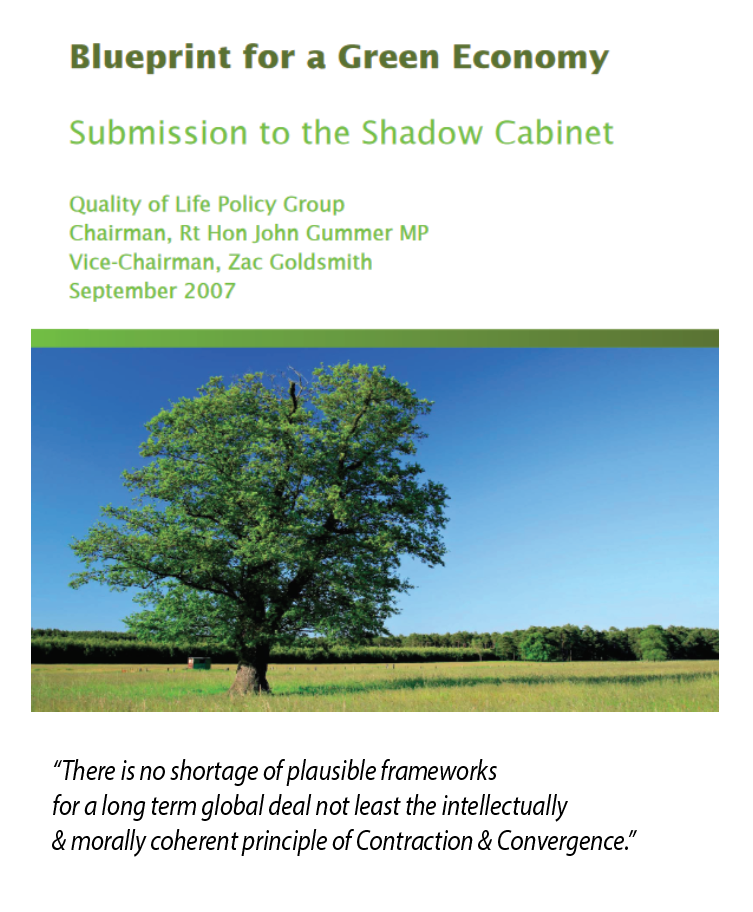

Jon Gummer David Cameron Zac Goldsmith
"There is no shortage of plausible frameworks for a long term global deal on the table, not least the
intellectually and morally coherent principle of Contraction and Convergence."
UK Conservatives Quality of Life Challenge: -
"Blueprint for a Green Economy" on C&C

"'When one looks at the kinds of reductions that would be required globally, the only means for doing so is to ensure that there's Contraction and Convergence and I think there's growing acceptance of this reality. I don't see how else we might be able to fit into the overall budget for emissions for the world as a whole by 2050. We need to start putting this principle into practice as early as possible'."
Rajendra Pachauri - Global Humanitarian Forum 2008
Chairman Intergovernmental Panel on Climate Change

“If I thought that global warming was a crisis I’m not sure that I would agree that Aubrey has worked out about how to solve it or the path down which we ought to go. But he’s serious about it and has a legitimate and well thought out programme that is not about “how do we gain more political power for ourselves, how do we create a command and control economy for the energy sector that we’re in charge of?” He isn’t interested in being in charge of anybody. He is interested in solving a problem and that again makes him unusual because a lot of the environmental groups are really in political power because they know better and they ought to be telling people how living their lives. Aubrey respects people and he respects individual human beings and he’s not about telling them how to live their lives. I think that makes him very special and I really enjoy seeing him and reading what he’s putting out and looking at his whole programme.”
Myron Ebell: so-called 'climate-sceptic' Competitive Enterprise Institute [CEI]
COP-15 Copenhagen 2009,
after IPCC 4th Assessment
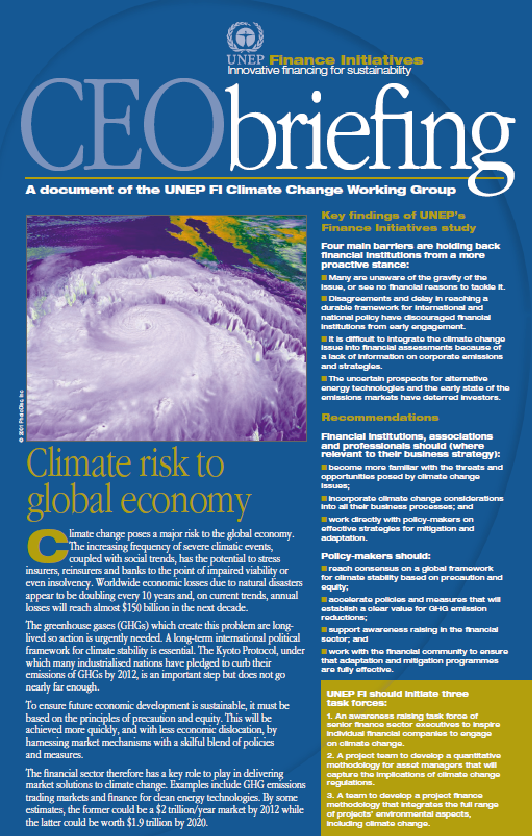
For the long term, the agreement of an international policy based on the principles of precaution,
equity and economic efficiency is critical if we are to reduce the risk and engage all parties in the
endeavour. A number of approaches have been proposed, including the ‘historical’ method, under
which a nation’s future emissions goals would be determined by its past GHG output; the carbon-intensity
approach, in which future emissions goals would be indexed to GDP; and “Contraction
and Convergence” which would aim to achieve equal per capita emissions for all nations by an
agreed date. Up to now, however, most of the work under the United Nations Framework Convention
on Climate Change (UNFCCC) has been directed at finalising and ratifying the Kyoto Protocol.
[For more information on C&C refer to the website of the Global Commons Institute]
UNEPFI CEO Briefing
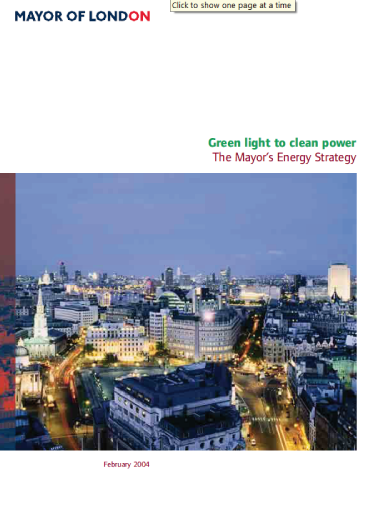
Contraction and convergence
Contraction and convergence is a simple approach to distributing the
total greenhouse gas emission reductions required internationally,
between various countries or groups of countries. The approach is based
on two principles:
1 there is an upper limit to acceptable global atmospheric
greenhouse gas concentration, beyond which the damage from climate
change would not be acceptable
2 the atmosphere is a global commons, so that as individuals we all
have equal rights to emit greenhouse gases. Contraction and convergence is arguably the most widely supported, equitable, global
approach to tackling climate change and the Mayor supports the principle of contraction and convergence. The contraction and convergence proposal was developed by the Global Commons
Institute, London. Details of its origins, methodology, and support are available online at http://www.gci.org.uk
Green light to clean power
The Mayor’s Energy Strategy
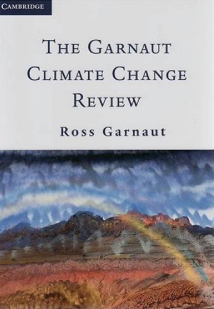
"A precise version of the per capita approach, often referred to as ‘contraction and
convergence’ (GCT 2000), has figured in the international
debate for some time. It has been promoted by India and has been discussed
favourably in Germany and the United Kingdom (German Advisory Council on
Global Change 2003; UK Royal Commission on Environmental Pollution 2000).
Recent reports have shown increasing support for variations on this general
approach, see for example, Stern (2008) and the Commission on Growth and
Development (2008).
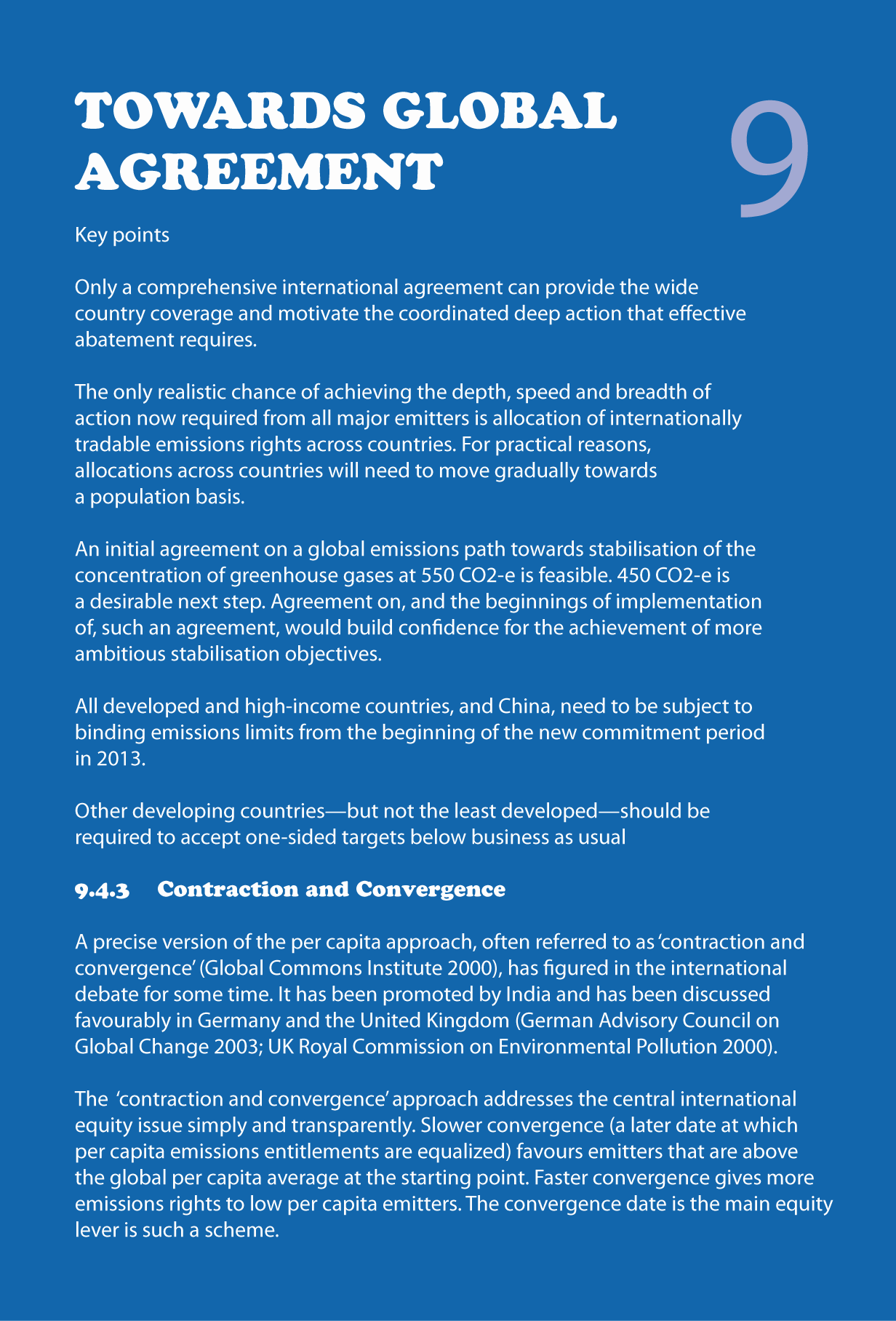
The contraction and convergence approach addresses the central international
equity issue simply and transparently. Slower convergence (a later date at which
per capita emissions entitlements are equalised) favours emitters that are above
the global per capita average at the starting point. Faster convergence gives more
emissions rights to low per capita emitters. The convergence date is the main equity
lever in such a scheme."Global Commons Institute 2000, ‘GCI C&C Briefing’, originally published as Meyer, A. 2000, Engineering
Sustainability 157(4): 189–92.
"Garnaut Review" - C&C Chapter

Ross Garnaut now argues for a ‘modified contraction and convergence framework’
The contraction and convergence approach has figured in the
international climate change debate since being developed by the
Global Commons Institute in the United Kingdom during the 1990s.
The approach has been promoted by India and discussed favourably in
Germany and the United Kingdom. Reports by Nicholas Stern and the
Commission on Growth and Development in 2008 supported variations
on this general approach pointing to the need for all countries to aim
for equal per capita emissions over the long term.
Garnaut Climate Change Review Update 2011

For many years, most environmentalists who have been involved in the international debate have agreed that in the long term the international sharing of the emissions reduction burden should be based on per capita allocations. There is thus widespread support for the contraction and convergence model as the only principle that can include developing countries in a fair way. It is thus gratifying to see this principle adopted by Professor Ross Garnaut.
The Best Australian Political Writing
Eric Beecher

Caps like the Copenhagen Accord’s global 2°C increase ceiling
imply a wake-up call for rallying stakeholders. The real job starts when this overall
long-term goal must be specified in work packages by country. For reasons of clarity
and mutual understanding the global 2°C ceiling is best translated in individual
Parties’ annual emissions per person “contraction and convergence” trajectories from
2010 to 2050. The London based Global Commons Institute has
propagated the contraction and convergence idea since the 1990s.
Cancun: muddling or policy reversal -
Aviel Verbruggen
Sustainable Energy Research

We are living in a world that the CIA coined VUCA – times of volatility, uncertainty, complexity and ambiguity. If one looks at the nature of the recent commodity price crisis (2007), financial crisis (2008), economic recession (2009), public debt crisis and oil spill disaster in the Gulf of Mexico (2010) one can arguably identify a “transgression problem” (Pascal Lamy) at their root. Humanity is transgressing thresholds at two levels:
- Humanity is transgressing reasonable limits of debt - The recent recession was to a large degree caused by the collapse of an asset bubble that inflated financial values well beyond the true value of underlying economic resources just for the sake of stimulating demand. Once the asset price bubbles burst and increased public borrowing was needed to protect the banks and to fund economic recovery, public sector debt and gross external debt rose sharply. According to IMF calculations the total cost of the financial crisis will amount to the astronomic figure of $12 trillion or 20% of annual world output.
- Humanity is transgressing “planetary boundaries” - Under the weight of both the growing size and the intensifying activity of humanity, human impact is no longer only at local levels. Global natural systems are being affected. Climate is the most visible system that is being destabilized, but others are equally critical (oceans, fresh water, biological diversity etc.). Earth systems scientists are working on nine planetary boundaries where dangerous tipping points into less favorable conditions for human survival are highly likely.
These phenomena are similar in nature and have impacts that go far beyond the financial and ecological systems: When assessing the progress that has been made on the Millennium Development Goals, Secretary General of the United Nations, Ban Ki Moon, had to admit in June that improvements in the lives of the poor have been unacceptably slow, regionally uneven and that some hard-won gains are being eroded again by the climate, food and economic crises. In fact all phenomena are related to governance failures:
- Failure of governance to limit debt levels in relation to GDP;
- Failure of governance to acknowledge planetary boundaries and to decouple GDP from energy and resources;
- Failure of governance to meet globally accepted targets in redistributing GDP for the benefit of the most vulnerable persons in the world.
This development path is unsustainable and prone to destabilization and conflict, passing on to future generations vast and perhaps crippling financial, ecological and social debts. What is needed is a higher degree of systemic resilience. Therefore, governance agendas should be transformed from single issue-objectives to multiple, integrated social-ecological ones:
- As to the finance system governance should aim at higher levels of bank capital and liquidity and at taking precautionary measures to prevent risks without endangering sustainable growth. As to national budgets the task is to reduce the increasing levels of public debt.
- Concerning planetary boundaries the time is ripe for identifying scientifically endorsed resource and emission caps, and for establishing reduction targets associated with these caps - “Contraction and convergence” strategies. There is also a strong case for getting prices right in order to properly account for energy and material flows.
- As to global poverty governance needs to reinforce the MDGs and Rio Process and deliver tangible results.
In a way one of the key challenges for economic governance is to devise broader measures of well-being to assess the right things along the triple bottom line of people, planet and growth in the right way, so that policy makers know towards what they should steer and what progress they are making in that direction. “What gets measured gets done.” This is a task that has begun with the Istanbul declaration of the OECD world forum in 2007. To monitor the state of an economy, there should be an accepted set of performance indicators to help diagnose the state of the system. Today one single indicator prevails – GDP growth. Growth is essential. But the question is – what kind of growth. To tackle this question involves a twin effort in governance: To complement GDP growth as the principal indicator of economic development with other indicators of ecological and social progress and to refine GDP so that is covers much more than material growth. Today this is no longer an academic exercise. It is key for a governance system that is responsibly addressing the integrated social-ecological challenges and adequate to the volatility, uncertainty, complexity and ambiguity of our times.
Sustainability and Global Governance
Wolfgang Schüssel
The GES Advisory Board provides advice on the development of the GES, may suggest themes and special events at the GES, helps attracting high-ranking participants, and may propose new Advisory Board members. Its members benefit from a privileged access to the GES’s business, political, civic, and academic communities, and to state-of-the-art economic research on global affairs.
June 3rd, 2011
Academia:
Akerlof, George A. Nobel Laureate; Professor of Economics, University of California, Berkeley
Blanchard, Olivier Chief Economist, IMF
Ernst, Richard Nobel Laureate; Swiss Federal Institute of Technology, Zurich
Feldstein, Martin Professor of Economics, Harvard University
Freeman, Richard Professor of Economics, Harvard University
Guidotti, Pablo Professor at the School of Government and Member of the Board of Directors, Universidad Torcuato Di Tella
Heckman, James Nobel Laureate; Professor of Economics, University of Chicago
Krueger, Anne O. Professor of International Economics, SAIS, Johns Hopkins University; Senior Fellow, Stanford Center for International Development
Lazear, Edward Professor of Human Resources Management and Economics, Graduate School of Business, Stanford University
Lindbeck, Assar Professor of International Economics, Stockholm University
McFadden, Daniel L. Nobel Laureate; Professor of Economics, University of California, Berkeley
Naím, Moisés Editor-in-Chief, Foreign Policy Magazine
Portes, Richard Professor of Economics, London Business School
Rajan, Raghuram G. Professor of Finance, University of Chicago
Rogoff, Kenneth Professor of Economics, Harvard University
Simonsen Leal, Carlos Ivan President, Getulio Vargas Foundation
Spence, Michael A. Nobel Laureate; Chairman, Commission on Growth and Development
Victor, David G. Adjunct Senior Fellow for Science and Technology, Council on Foreign Relations, Stanford
Yu, Yongding Director, Institute for World Economics and Politics, Beijing
Politics:
Honorary Chairperson
Schmidt, Helmut Former Chancellor, Federal Republic of Germany
Members:
Ahluwalia, Montek Singh Deputy Chairman, Planning Commission, India
Almunia, Joaquin European Commissioner for Economic and Monetary Affairs, European Commission
Al Qasimi, Sheikha Lubna Minister of Foreign Trade, UAE
Arthur, Sir Michael Ambassador to Germany, Embassy of Great Britain
Ba ç , Erdem Governor, Central Bank of the Republic of Turkey
Borg, Anders Minister of Finance, Sweden
Cabral, Antonio José Senior Advisor to the President, European Commission
Liikanen, Erkki Governor, Central Bank of Finland
im ek, Mehmet Minister of Finance, Turkey
Torry, Sir Peter Former Ambassador to Germany, Embassy of the United Kingdom
Turhan, Ibrahim Deputy Governor, Central Bank of the Republic of Turkey
Visco, Ignazio Deputy Director General and Member of the Governing Board, Central Bank of Italy
Weber, Axel President, Central Bank of Germany
Yamaguchi, Yukata Former Deputy Governor, Central Bank of Japan
International and Non-Governmental Organizations:
Cotis, Jean-Philippe Lead Director General, National Institute for Statistics and Economic Studies
De Geus, Aart Deputy Secretary-General, OECD
El-Baradei, Mohamed Former Director General, IAEA
Pachauri, Rajendra K. Nobel Laureate; Chairman, Intergovernmental Panel on Climate Change;
Director General, The Energy and Resources Institute, New Delhi
Panitchpakdi, Supachai Secretary-General, UNCTAD
Thielen, Gunter Chairman and CEO, Bertelsmann Stiftung
Business:
Banerji, Shumeet CEO, Booz & Company
Browne, Lord John Managing Director and Managing Partner (Europe), Riverstone Holdings
Bürkner, Hans-Paul President and CEO, The Boston Consulting Group
Cleary, Sean Chairman, Strategic Concepts (Pty) Ltd
Evans, Richard CEO (retd.), Alcan Inc and Rio Tinto Alcan
Feldmann, John Member of the Board of Executive Directors, BASF
Frenkel, Jacob A. Chairman, Group of Thirty; Chairman, J.P.Morgan Chase International
Frost, David Director General, British Chambers of Commerce
Haley, John J. Chairman of the Board and CEO, Towers Watson
Hatzius, Jan Chief Economist, Goldman Sachs
Mittal, Sunil Bharti Chairman and Group CEO, Bharti Enterprises
Obermann, René CEO, Deutsche Telekom
Regling, Klaus CEO, European Financial Stabilization Fund
Schwartz, Rodney CEO, ClearlySo
Walter, Norbert Managing Director, Walter & Daughters Consult
Zemlin, Jim Executive Director, Linux Foundation
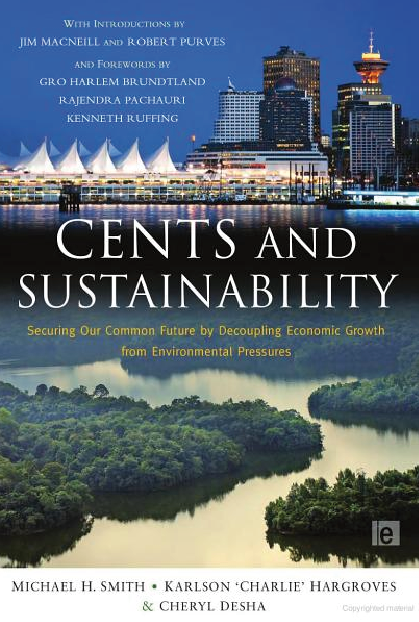
The Australian economist Ross Garnaut showed the need to country-specific trajectory curves based on Contraction and Convergence as illustrated. As his report pointed out, “Broad international agreement will require acceptance of global limits on emissions, sharing of rights to emissions across countries within these limits.”
Cents and Sustainability
Michael H. Smith, Karlson Hargroves, Cheryl Desha

"An
approach that is receiving significant attention, and endorsed by the German Advisory
Council on Global Change, is some form of contraction and convergence whereby total
global emissions are reduced (i.e., contraction) to meet a specific agreed target, and the
per capita emissions of industrialized and the developing countries converge over a
suitably long time period, with the rate and magnitude of contraction and convergence
being determined through the UNFCCC negotiating process. "Contraction and
Convergence” (C&C). C&C is a science-based global climate-policy framework proposed by
the Global Commons Institute (GCI) with the objective of realizing "safe”13 and stable
greenhouse gas concentrations in the atmosphere. It applies principles of precaution and
equity, principles identified as important in the UNFCCC but not defined, to provide the
formal calculating basis of the C&C framework that proposes:
• A full-term contraction budget for global emissions consistent with stabilizing
atmospheric concentrations of greenhouse gases at a pre-agreed concentration
maximum deemed to be “safe” using IPCC WG1 carbon cycle modelling.
• The international sharing of this budget as ‘entitlements’ results from a negotiable
rate of linear convergence to equal shares per person globally by an agreed date
within the timeline of the full-term contraction/concentration agreement.
• Negotiations for this within the UNFCCC could occur principally between regions of
the world, leaving negotiations between countries primarily within their respective
regions, such as the European Union, the Africa Union, the US, etc, comparable to
the current EU bubble.
• The inter-regional, inter-national and intra-national tradability of these entitlements
should be encouraged to reduce costs.
• Scientific understanding of the relationship between an emissions-free economy and
concentrations develops, so rates of C&C can evolve under periodic revision."
Commissioned Issue Paper of the
UN Millennium Project
Task Force on Environmental Sustainability
Energy and Environment
Robert T. Watson Former Chairman IPCC and
Chief Scientist, The World Bank
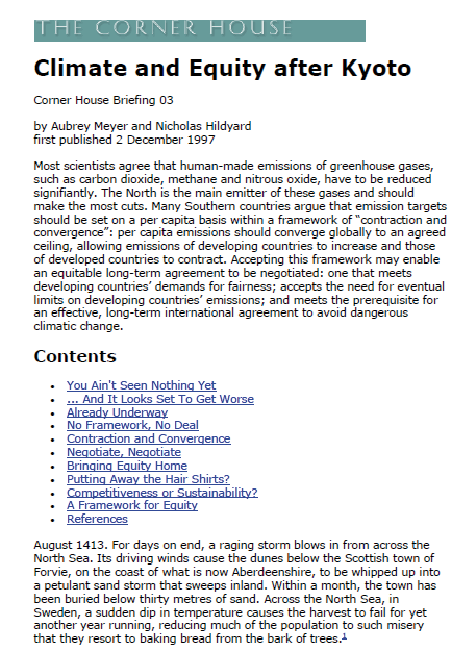
Most scientists agree that human-made emissions of greenhouse gases, such as carbon dioxide, methane and nitrous oxide, have to be reduced signifiantly. The North is the main emitter of these gases and should make the most cuts. Many Southern countries argue that emission targets should be set on a per capita basis within a framework of “contraction and convergence”: per capita emissions should converge globally to an agreed ceiling, allowing emissions of developing countries to increase and those of developed countries to contract. Accepting this framework may enable an equitable long-term agreement to be negotiated: one that meets developing countries’ demands for fairness; accepts the need for eventual limits on developing countries’ emissions; and meets the prerequisite for an effective, long-term international agreement to avoid dangerous climatic change.
Climate and Equity after Kyoto - Corner House Briefing 03
Aubrey Meyer and Nicholas Hildyard 1997

"As with all great ideas, C&C is deceptively simple, addresses the root causes of the problem, and is recognized as a grave threat to those vested interests who fear the climate change problem’s successful resolution because of the fundamental changes it will wrought on our economic status quo. The sustained effort of GCI over 20 years is a testimony to Aubrey's integrity, commitment,
and resolve. The logic and calculus of C&C is inescapable once an objective analysis
is undertaken. For years, it was foolishly dismissed as impractical! Somewhat ironically, those who now view the problem with a clear head are increasingly accepting that
C&C presents the only politically acceptable solution to the foundational question of how
the permissible emissions can be distributed amongst the people of Earth."
Professor Brendan Mackey Australia National University
Winning the Struggle Against Global Warming
What Will It Take? The Earth
Charter Global Dialogue on Ethics and Climate Change
Brendan Mackey and Song Li
Protecting Life from Climate Change
The need for synergies between policy, ethics, and education -
David Chalmers

Contraction and Convergence
Capping greenhouse gas emissions globally is
indispensable for maintaining the integrity of life on
the planet. Sixty percent in six decades is roughly the
order of magnitude contraction requires. However,
the Kyoto Protocol so far fails to live up to this
challenge. It does not demand serious reductions from
the North, and does not include newly industrializing
countries from the South. Nevertheless, for the
second commitment period of the Kyoto process, an
ecological breakthrough cannot be reasonably
expected unless the South assumes commitments as
well. Otherwise, the North will stall, and, more importantly,
the steep rise in emission levels in the South
will continue unchecked.
At this point, the issue of equity will reveal itself
as the major bottleneck for any serious progress in
climate protection. On the one side, the South will
refuse obligations before the North follows through on
its responsibility, while on the other side the North
will not be forthcoming before commitments for the
South are defined. Unless the reduction commitments
of the North and those of the South are balanced out
in fairness, no real climate protection will happen.
Only a framework that respects the principle of equal
per capita right to the resources of this Earth will
eventually hold up to equity and fairness. Any other
allocation scheme (”grandfathering”, ”cost-base ”)
would repeat a colonial constellation of granting disproportionate shares to the North. If the use of the
commons has to be restrained through common rules,
it would violate the principle of equity to design these
rules to the advantage of some and the disadvantage
of many. The equal right of all world citizens to the
atmospheric commons is therefore the cornerstone of
any viable climate regime. Therefore, for the second
commitment period of the Kyoto Protocol, a process
allocating emission allowances based on per capita
equal rights to each country, has to be initiated. This
is hard on the North, but not unfair as in exchange for
accepting the rule of egalitarianism in the present,
industrial countries would not be held liable for
emissions accumulated in the past.
It is from this right to atmospheric commons that
all countries (and all classes) in the long run converge
in their trajectories upon a similar level of fossil
energy use per capita. The North contracts downwards,
and the South converges upwards. Over-users
will have to climb down from the present level, while
under-users are permitted to raise their present level,
albeit at a gradient that is much less than the one
industrial countries went through historically, levelling
off at the point of convergence. However, the convergence of North and South on equal emission
levels cannot be achieved at the expense of contraction,
i.e. the transition to globally sustainable levels
of emissions. Once again, sustainability gives shape to
equity. The vision of ”contraction and convergence”
combines ecology and equity most elegantly; it starts
with the insight that the global environmental space
is finite and attempts to fairly share its permissible
use among all world citizens taking into account the
future generations as well.
The Jo'burg Memo
Heinrich Boell Foundation
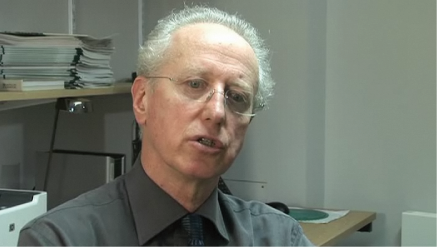
"Many congratulations on the endorsement from the UK Deputy Prime Minister and on your tremendous commitment sustained over many years to an equitable approach to climate action. Politically Contraction and Convergence [C&C] is the only credible approach which could be widely accepted."
Professor Sir Andy Haines University College London
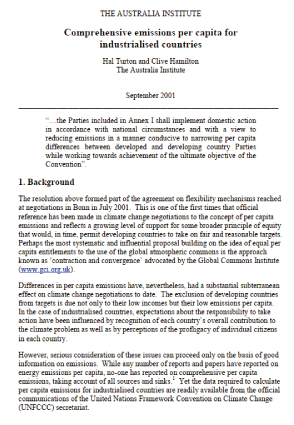
"…the Parties included in Annex I shall implement domestic action
in accordance with national circumstances and with a view to
reducing emissions in a manner conducive to narrowing per capita
differences between developed and developing country Parties
while working towards achievement of the ultimate objective of the
Convention”.
"This resolution formed part of the agreement on flexibility mechanisms reached
at negotiations in Bonn in July 2001. This is one of the first times official
reference has been made in climate change negotiations to the concept of per capita
emissions and reflects a growing level of support for some broader principle of equity
that would, in time, permit developing countries to take on fair and reasonable targets. Perhaps the most systematic and influential proposal building on the idea of equal per
capita entitlements to the use of the global atmospheric commons is the approach
known as ‘contraction and convergence’ advocated by the Global Commons Institute."
Australia Institute
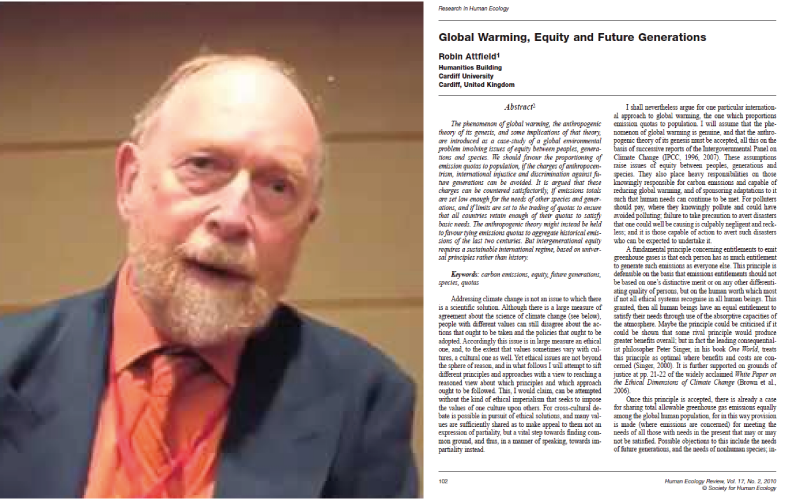
" . . . More countries might be willing to agree to Contraction and Convergence from the outset than to the supplementary
system, while developing countries might agree to join
the former in view of the desperate need for a climate change
agreement and of the prospect of the supplementary system
being introduced in its wake, once international co-operation
about mitigation and adaptation was in place. Hence a system
of Contraction and Convergence probably remains the best
prospect for addressing the global problems of mitigation and
adaptation, and at the same time a promising spring-board for
achieving a global agreement on addressing the problems of
poverty and under-development of the kind that is also urgently
needed."
Human Ecology Review, Vol. 17, No. 2, 2010 105
Robin Attfield

There is an alternative on the table known as Contraction and Convergence [C&C]. At COP-9 Milan many representatives admitted privately that, “C&C is what we have been waiting for.”
An Introduction to Human Geography: Issues for the 21st Century
Prof Peter Daniels Prof Michael Bradshaw Dr Denis Shaw Prof James Sidaway
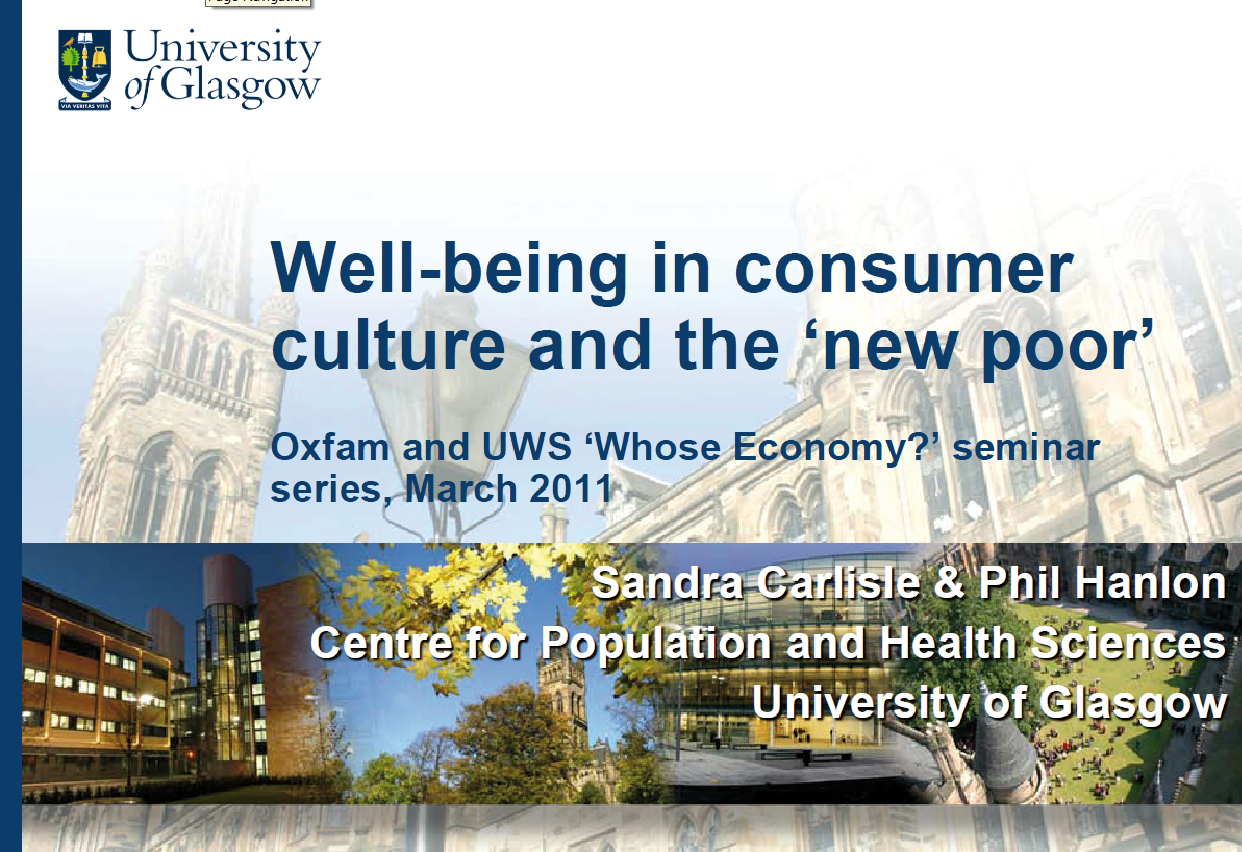
There are also other ideas and models that can help us think differently and challenge conventional thinking. Perhaps one of the most significant is the concept of "contraction and convergence‟ developed by Aubrey Meyer of the Global Commons Institute, in response to the threat of runaway climate change (Meyer 2000). Meyer notes that the whole world needs a contraction in the production of carbon dioxide - an output of increased industrialisation and economic growth. Rich and poor nations must eventually converge in their carbon production, to avoid catastrophe. Less developed nations must be allowed to develop – so their carbon use goes up - whilst industrialized and post industrial nations must make substantial reductions.
OXFAM Briefing - Well-being in consumer culture and the New Poor
Sandra Carlisle and Philip Hanlon
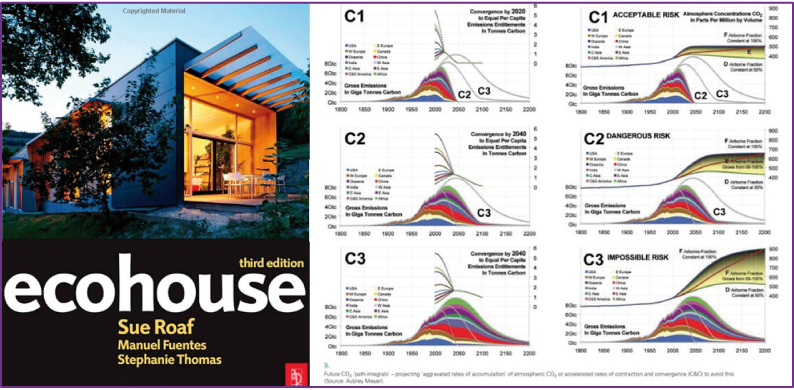
For a full account of the theory of Contraction and Convergence see the GCI website
Ecohouse
Sue Roaf
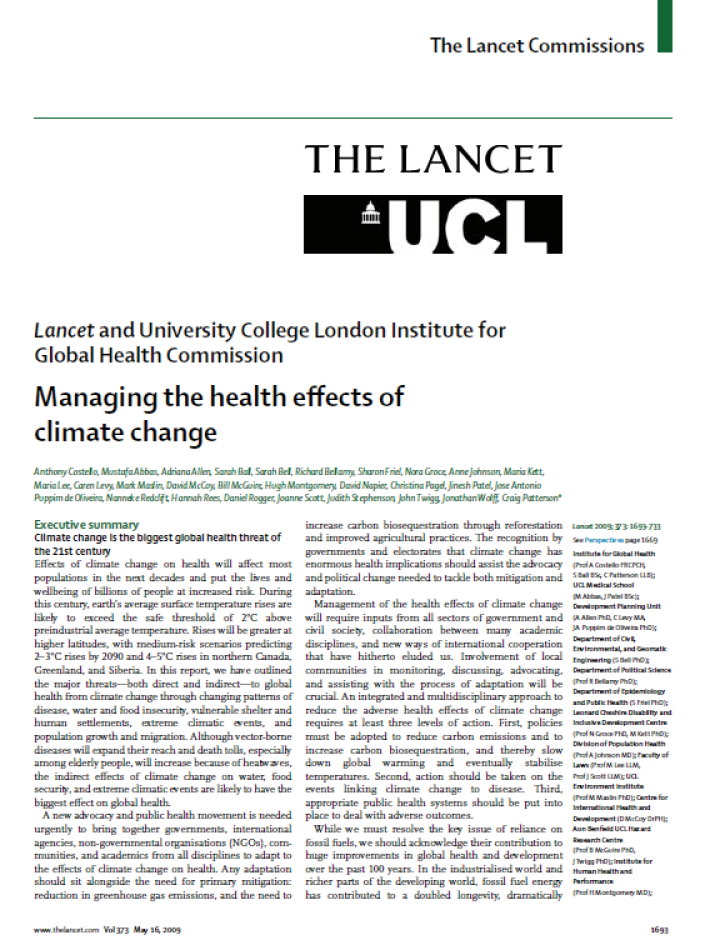
"Luxury emissions are different from survival emissions, which emphasises the need for a strategy of contraction and convergence, whereby rich countries rapidly reduce emissions and poor countries can increase emissions to achieve health and development gain, both having the same sustainable emissions per person.
Contraction and convergence
Climate change requires two possibly conflicting actions. Carbon emissions must be reduced to avoid the worst outcome of climate change. Poor countries need rapid economic development so that no country, community, or individual is too poor to adapt to climate change. The concept of contraction and convergence, developed by the Global Commons Institute, considers the need to pursue both these actions simultaneously. Contraction and convergence reduce overall carbon emissions to a sustainable level but do so according to an equal share of emissions per person globally. Industrialised countries would dramatically reduce their emissions whilst developing countries would increase theirs to allow for, and stimulate, development and poverty reduction."
Lancet and University College London Institute for Global Health Commission
Managing the Health Effects of Climate Change
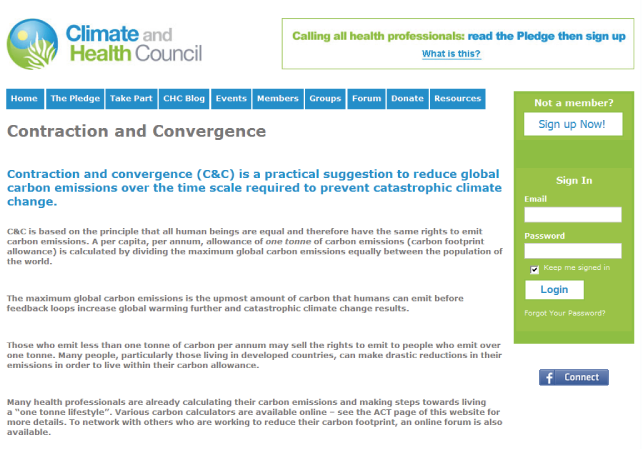
Contraction and Convergence [C&C] is a practical suggestion to reduce global carbon emissions over thetime scale required to prevent catastrophic climate change.
Climate and Health Council
An extensive network of Doctors and Health Professionals

More recently, awareness of the threat of global ecological hazards to human health has seen the emergence of ‘ecological’ forms of public health. A number of different approaches to this topic can be discerned within our discipline (Hanlon and Carlisle 2010). Some, for example, have applied a very traditional scientific model to particular issues that will arise from a given rise in global temperature.
Consider, for example, the challenge of ‘contraction and convergence’ (Meyer 2000). This is a concept that has been developed in response to global warming and other environmental threats. The idea is simple. The world needs a contraction in output of carbon dioxide but for all to buy into such an agreement it must be transparently just: hence the need for convergence. Less developed nations must be allowed to develop, which may mean increased carbon utilization, whilst industrialized and post industrial nations must make substantial reductions. However, an ethical framework which ensures global justice and equity while safeguarding the rights of individuals has yet to emerge. This will be a key challenge if the world is not to face runaway climate change and collapse.
In Search of Transformational Change
The Future Public Health: An Integrative Framework
Prof Phil Hanlon, Dr Andrew Lyon, Dr Margaret Hannah,
Dr David Reilly & Dr Sandra Carlisle
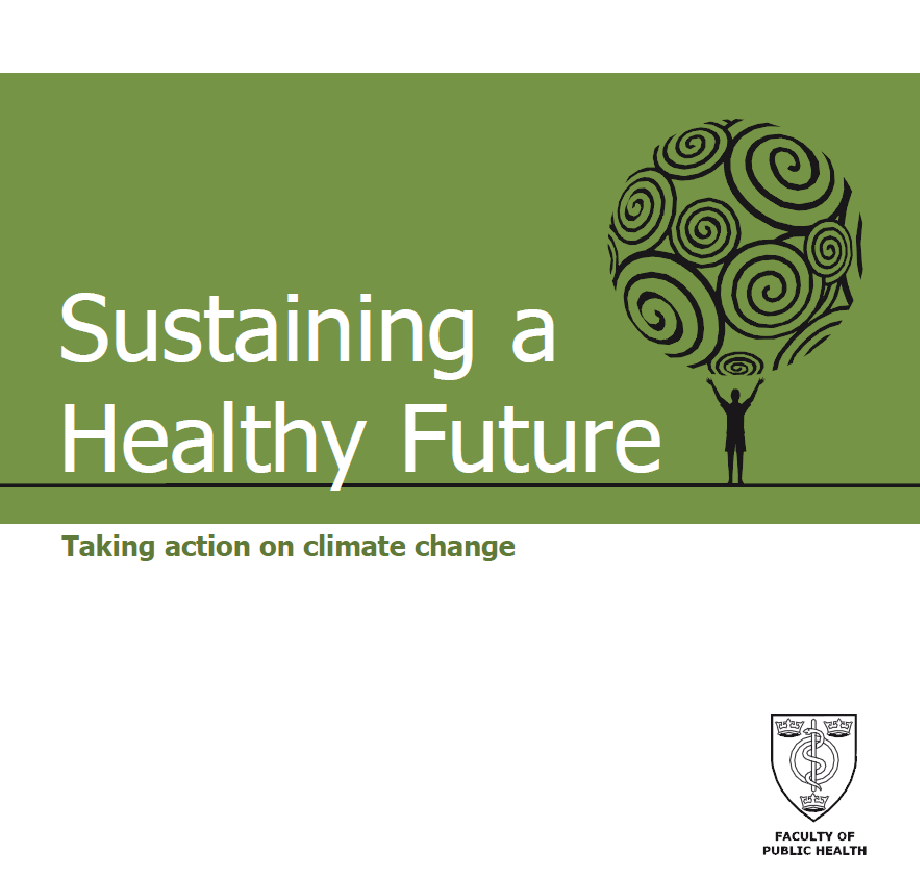
Contraction and convergence
Contraction and convergence is a global framework – not yet adopted by the UK
government – for tackling climate change through the equitable allocation of carbon
rations. The ‘contraction’ component entails setting a global carbon budget, reducing
or 'capping' this annually to an agreed level so that the planet's climate once again
gains equilibrium. ‘Convergence’ entails giving an equal entitlement of the capped
carbon to each of the four billion or so adult inhabitants of the globe. The
disadvantaged – generally low carbon emitters – will have entitlements which would
allow for economic and social development or which they could sell to high carbon
emitters ie. richer, developed countries. The framework implies both carbon rationing
and carbon trading. Contraction and convergence is viewed by many as central to
discussions on tackling climate change and sustainable development because of its
focus on equity - see
Sustaining a Healthy Future - Taking Action on Climate Change
This publication has been endorsed by:
Association of Directors of Public Health
British Trust for Conservation Volunteers
Chartered Institute of Environmental Health
Climate & Health Council
Commission for Architecture and the Built Environment
Institute of Public Health in Ireland
Local Government Association
Neil McKay, Chief Executive, NHS East of England
National Heart Forum
NHS Confederation
Royal College of Physicians of Edinburgh
Royal College of Physicians of London
Royal Institute of Public Health
Royal Society of Health
Scottish Healthy Environment Network Steering Group
Sustain
Sustainable Development Commission
Sustrans
UK Public Health Association
Produced in consultation with the Carbon Trust
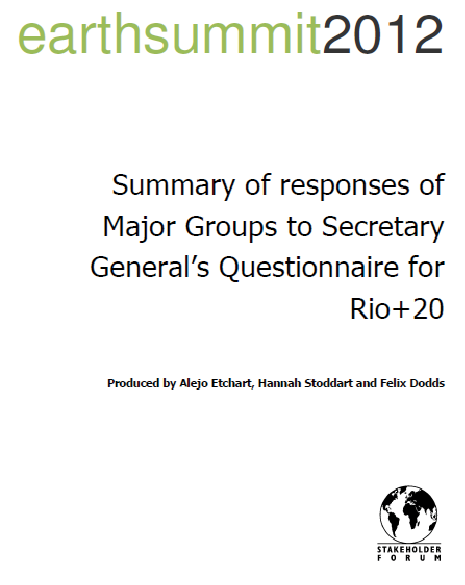
Carrying Capacity and Ecological Limits - Living within the carrying capacity of the Earth, recognition of the achievement of basic needs and livelihoods within ecological limits, and a move away from economic expansion, especially in developed nations, under a framework of contraction and convergence guaranteeing geopolitical stability. This policy recommendation was put forward in relation to the Green Economy in the context of Sustainable Development and Poverty Eradication for the Earth Summit 2012 by One Earth, Stakeholder Forum and EPF.
GREEN ECONOMY
IN THE CONTEXT OF SUSTAINABLE DEVELOPMENT AND
POVERTY ERADICATION

"There is a way of cutting global greenhouse gas emissions that is equitable, sensible and workable. It is called Contraction & Convergence, or simply C&C. It is the brainchild of the South African musician Aubrey Meyer, founder of the London-based Global Commons Institute. Meyer grasped the urgency of finding a viable solution to climate change earlier than most of us realised that there was a problem."
Seven Years to Save the Planet
Bill McGuire on C&C
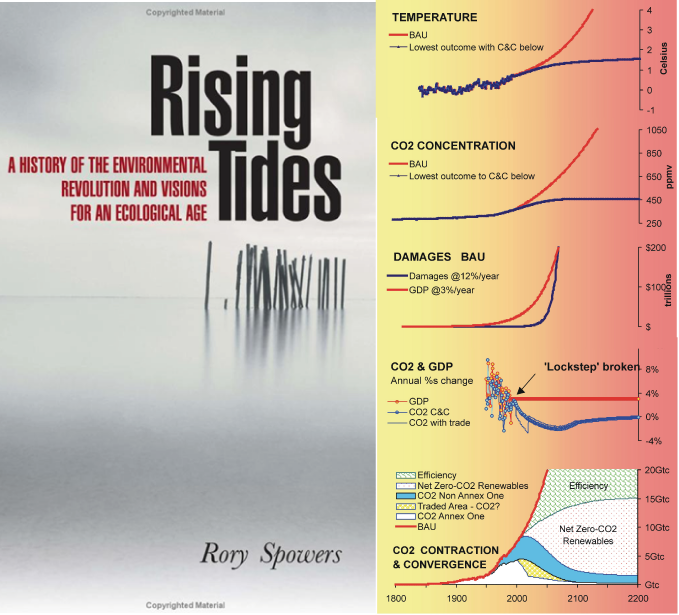
"Developed by Aubrey Meyer and the Global Commons Institute [GCI] the Contraction and Convergence [C&C] is perhaps the most simple yet sophisticated framework which tackles the seemingly impossible task of stabilising the atmospheric concentrations of of carbon dioxide and averting the irreversible trends of runaway climate change."
Rising Tides
Rory Spowers
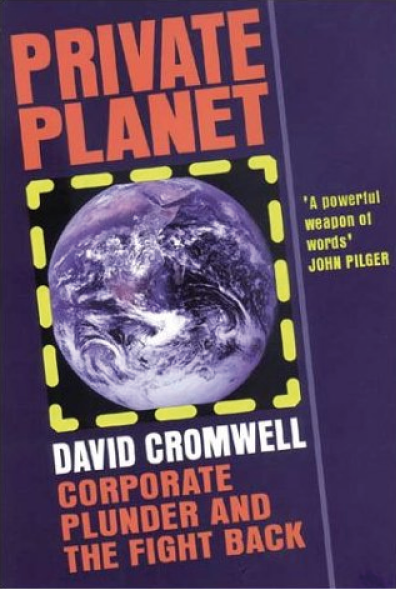
"We assume that the UK progressively reduces its carbon footprint so that it uses only its fair share of total global carbon emissions under the given, interim target, making sure that other countries, particularly developing countries, have space to develop and make their own transition to a sustainable future. We assume a global ‘deal’ based on ‘contraction and convergence’ to limit, reduce and maintain total global emissions within defined limits (the contraction); we also assume that the UK’s total share of emissions progressively comes into line with its fair global share (the ‘convergence’), with significant transfer payments to developing countries during the process to facilitate their sustainable development. [In 1997] "Robin Cook's initiative, which was jointly agreed with John Prescott's Department of the Environment, represented one possible way to get the developing world and, by implication, the US, on board the climate train.
However, it is not the only way or, for that matter, the sustainable way. Environmentalist Aubrey Meyer believes that he has a more comprehensive 'world-saving idea' that could really cut the Gordian knot of international climate negotiations. Under the auspices of the Global Commons Institute, the London-based lobbying group he helped to set up with friends from the Green Party in 1990, Meyer has been promoting a simple and powerful concept which has already had a major impact on senior politicians and negotiators. GCI's eye-catching computer graphics illustrate past emissions and future allocation of emissions by country, achieving per capita equality by 2030, for example. After this date, emissions drop off to reach safe levels by 2100. This so-called 'contraction and convergence' in emissions has gathered the support of a majority of the world's countries, including China and India. It may be the only approach that developing countries are willing to accept."
Private Planet
David Cromwell

"The idea behind 'Contraction [of emissions] and Convergence [of rights to emit),
is now main-stream. Like all successful ideas, it now has many would-be fathers.
But it was Aubrey Meyer and GCI who took it to market and sold it."
Climate Wars
Gwynne Dyer on C&C
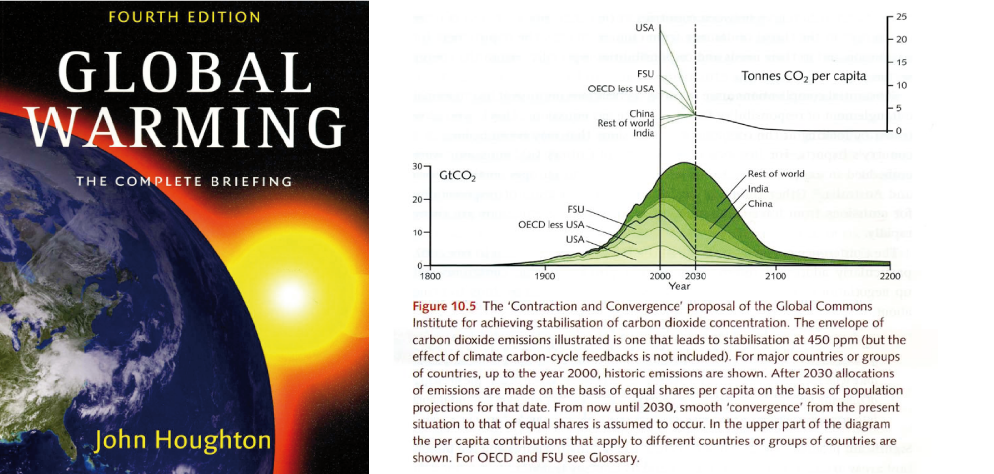
"An example of how the approach to stabilisation for carbon dioxide
might be achieved is a proposal
called 'Contraction and Convergence' that originates with GCI, a non-governmental organisation based in
the UK."
Global Warming; Complete Guide
J Houghton on C&C
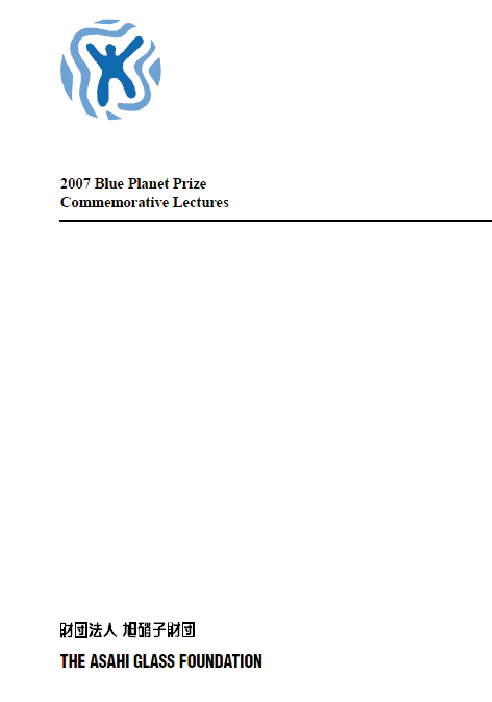
The equitable vision of "contraction and convergence," where all countries have the same carbon emission rights per person and everyone continues to get richer, especially in developing countries, could head for carbon reductions around 90% over the next century. Could that grand vision of a richer, fairer, cooler, and safer world actually be feasible and profitable?
ASAHI GLASS Blue Planet Lecture
Amory Lovins 2007
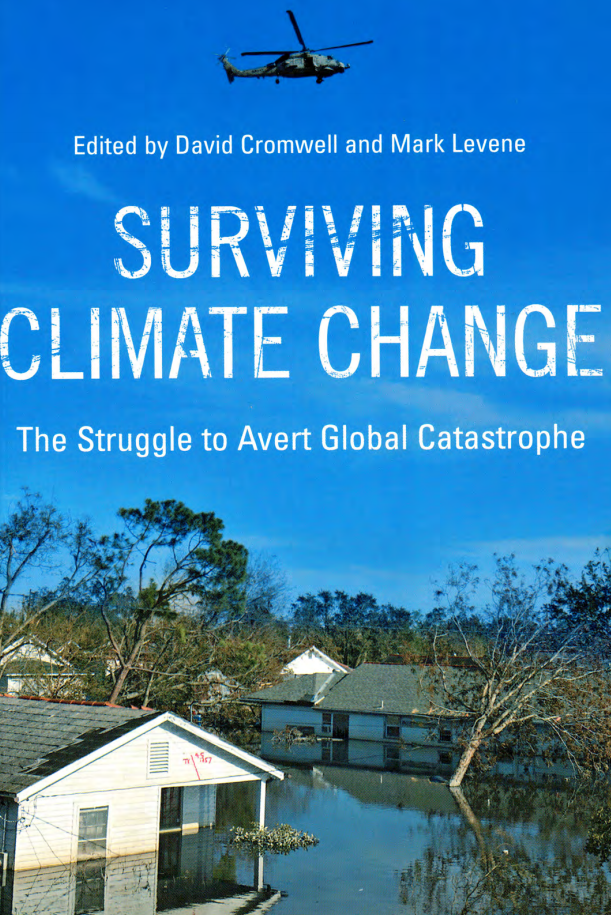
"Climate change is a pressing reality. From hurricane Katrina to melting polar ice, and from mass extinctions to increased threats to food and water security, the link between corporate globalization and planetary blowback is becoming all too evident. Governments and business keep reassuring the public they are going to fix the problem. An epochal change is called for in the way we all engage with the climate crisis.
Key to that change is Aubrey Meyer's proposed "Contraction and Convergence"
framework for limiting global carbon emissions, which he outlines in this book."
"Surviving Climate Change"
Editors Levene & Cromwell
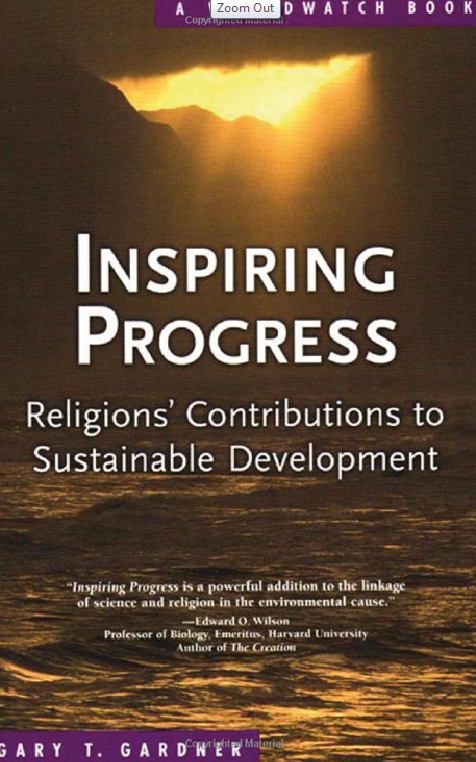
The challenge to treat countries according to the Global Ethic might receive a boost. The so-called "contraction and convergence" [C&C] initiative of the Global Commons Institute in the UK might for example be attractive from this perspective.
Inspiring Progress: Religions’ Contributions to Sustainable Development
Gary T. Gardner
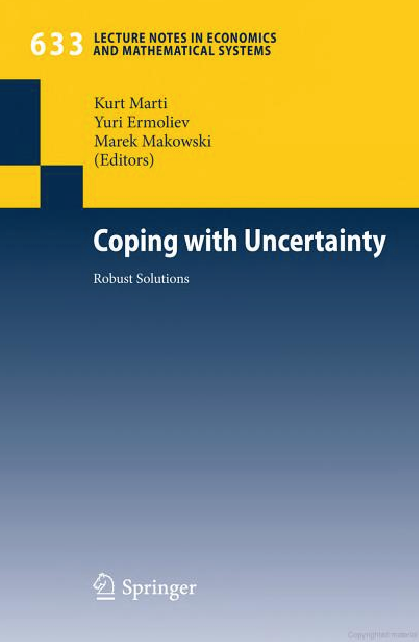
The situation would be different if the non-uniformity of the emissions limitation or reduction commitments would be the outcome of a rigorously based process in a straightforward rule that applies equally to all countries as would be the case under the so-called Contraction and Convergence approach.
Coping with Uncertainty; Robust Solutions
Kurt Marti, Yuri Ermoliev, Marek Makowski
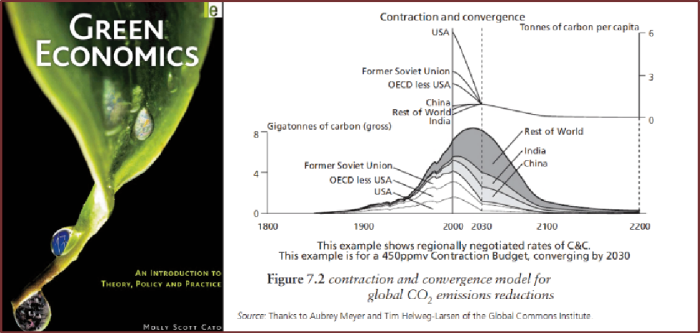
“Since enforcing a carbon cap via tradeable permits effectively creates a huge economic value, it should belong to all citizens rather than a small minority. Such a commitment to equity leads to a plan for the sharing of the global commons, such as the Global Commons Institute’s Contraction andConvergence – the first approach to tackling climate change that began fromthe simple notion that each person on the planet had an equal right to produce CO2. The ‘convergence’ was the name given to the commitment to share these emissions fairly within a meaningful cap on total output of CO2. Overproducing countries would then be required to compensate underproducing countries. The ‘contraction’ is the process of all countries, in step, reducingtheir emissions gradually over the next 50 years. The scheme is illustrated in Figure 7.2. The rising curve is the historical increase in CO2 emissions; these are portrayed following a sharp descent over the next century (the contraction) during which time countries also converge towards a share of the global total that represents the size of their population.”
Green Economics Molly Scott Cato

"Challen presented the alternative policy; namely, 'contraction and convergence', devised by the London-based Global Commons Institute led by Aubrey Meyer: We know that we need to reduce our carbon emissions so that we arrive at a safe concentration in the atmosphere - perhaps 450 parts per million. We also know that without developing countries being part of a global agreement, it won't work. The answer is convergence - we should aim to contract our emissions while converging to a per-capita basis of shared
emissions rights. Challen's warning of the consequences, should contraction and convergence fail to be adopted worldwide as a post-Kyoto climate policy, was expressed in extremely stark terms:
Our economic model is not so different in the cold light of day to that of the Third Reich :'" which knew it could only expand by grabbing what it needed from its neighbours. Genocide followed. Now there is a case to answer that genocide is once again an apt description of how we are pursuing business as usual, willfully ignoring the consequences for the poorest people in the world. This was a crucial and hard-hitting message. So how did the mainstream media respond to the parliamentary climate change group's challenge? The environment editors and commentators at the Daily Telegraph, Financial Times, the Guardian and The Times had nothing at all to say. Only the Times published a commentary. This was penned by its anti-green columnist, Mike Hume, rubbishing the parliamentary group as a 'cream-puff army' peddling 'irrational' drivel."
NEWSPEAK in the 21st Century
David Edwards and David Cromwell
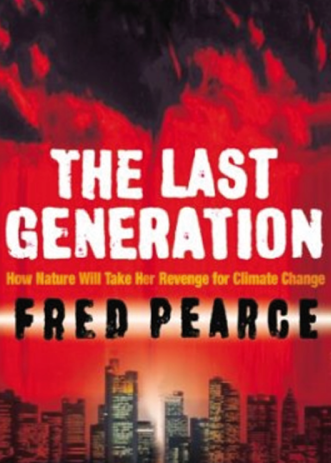
"The only solution is a ration system with pollution rights that everyone is seeing as fair. Perhaps the simplest plan for a ration system is known by the term 'contraction and convergence'. The model was developed by a small British group, the Global Commons Institute, and finds support around the world. The contraction half includes a consecutive series of annual targets for global emissions. These objectives begin about where we are now and decrease in the coming decades. They are rated so that the atmosphere never passes the limit of carbon dioxide concentrations that the world has set for itself. The convergence half of the formula implies that the annual allowable global emissions are spread over the countries in proportion to their population. So national targets could start by about 1 ton of carbon per capita and then drop to, say half a ton in 2050 and much less in 2100, according to the agreed global goal. Naturally, the rich countries would in the beginning have not enough rights and poor countries have more rights than they need. So they trade these rights. The demand and supply of pollution rights would provide a significant boost to the global cleaning. Political fantasy? Maybe. But we will need something of that order if we want to avoid climate disasters."
The Last Generation
Fred Pearce on C&C

"Looking further ahead, there is a democratic, transparent, and simple form of international agreement that might one day replace Kyoto. Known as Contraction and Convergence (C&C) it has been championed by UK politician Aubrey Meyer for over a decade. In some ways C&C is an ultrademocratic variant of the Kyoto Protocol, for at its heart is the simple idea that the only equitable way to reduce emissions is to grant every human being an equal "right to pollute" with greenhouse gases . As with Kyoto, this right could be traded, though under C&C the volume of trade is likely to be far larger than under Kyoto. When facing a grave emergency, it’s best to be single-minded."
The Weather Makers
Tim Flannery on C&C
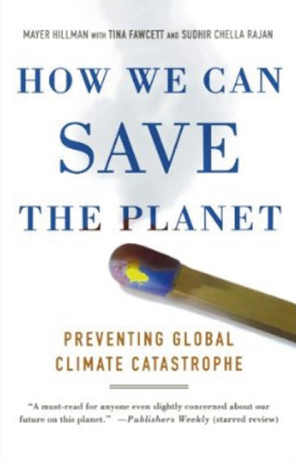
“A brilliant, imaginative and simple means of reaching such an agreement on emission reductions has been put forward. Known as Contraction and Convergence (C&C), it was first proposed by the Global Commons Institute (GCI) in the early 1990s. Recognition of its unique qualities as a framework for combating climate change has grown at an astonishing rate since that date. It is thought by an increasingly influential number of national and international institutions to be the most promising basis for global negotiations.”
How We Can Save the Planet
Mayer Hillman on C&C
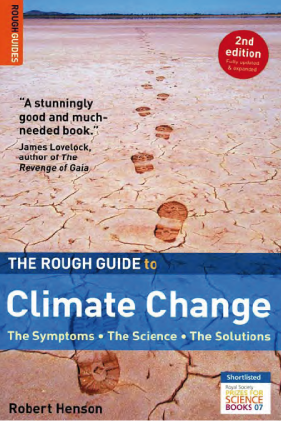
"Among the most intriguing plans offered to date is the contraction and
convergence (C&C) model developed by the Global Commons Institute,
a British group headed by Aubrey Meyer. It was introduced by the Indian
government in 1995 and adopted by the Africa Group of Nations in 1997
during the run-up to Kyoto. The plan has also received votes of support
from the European Parliament and several UK and German advisory
groups."
Rough Guide to Climate Change
Robert Henson on C&C
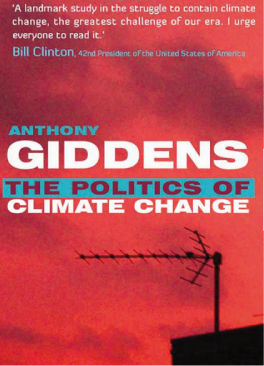
"The Kyoto agreements have been widely dismissed - with a goodly dose of irony - as 'hot air'. Apologists for them offer several arguments in their favour by way of riposte. It has been said, for instance, that they are, above all, a learning process. In the post-2012 period, the world can come up with more universal and rigorous formulae - negotiations for a post-Kyoto regime are already under way; they began in Bali in 2007. The principle of 'common but differentiated responsibility', it is argued, provides a way forward for the world community. Contraction and convergence puts flesh on this idea. The website of the Global Commons Institute led by Aubrey Meyer, provides detailed background information"
Politics of Climate Change
Anthony Giddens on C&C
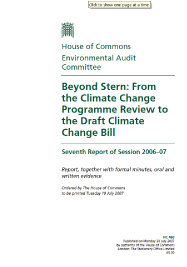
"Above all, the Government must draw attention, at home and abroad, not just to
percentage targets for the annual emissions in a certain year, but even more to the
absolutely crucial issue of the cumulative total budget of greenhouse gases that the
world can afford to emit by 2050 if it is to have a reasonable chance of holding global
warming to 2oC. In terms of the way in which this cumulative global budget is divided up among
individual nations, we recommend that the Government explicitly endorses, and
promotes internationally, the Contraction and Convergence method, or a method
similar to it."
House of Commons
Environmental Audit
Committee
Beyond Stern: From
the Climate Change
Programme Review to
the Draft Climate
Change Bill -
Seventh Report of Session 2006–07
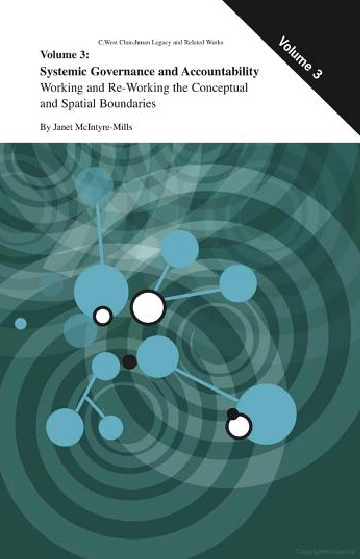
Meyer A 2000 “Contraction and Convergence - The Global Solution to Climate Change.” Schumacher Briefing No 5 Green Books for the Schumacher Society Devon. It is about working conceptual and geographical boundaries. It is transdisciplinary, transorganisational and can be summed up as providing a process for testing out ideas and designing an ‘inquiring system’ that enables mindfulness. It is a democratic process where the experts are those with lived experience. We can distinguish between the old silo-based approach and the new systemic approach and argue that we need a shift in our thinking and practice to more open to new ideas.
Systemic Governance and Accountability
Working and Re-working the Conceptual and Spatial Boundaries - Janet Judy McIntyre-Mills
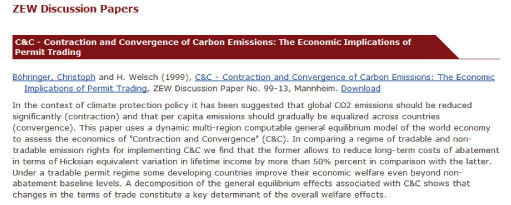
"The Global Commons Institute has devised a greenhouse gas
abatement proposal called “Contraction and Convergence” (Global Commons Institute 1997) in which the emphasis is placed not only on a significant contraction of anthropogenic CO2 emissions, but also on an equitable per capita distribution of the resulting global carbon budget.
The latter implies a transition to a point (convergence) where future entitlements to emit will
have become proportional to population. The uniform per capita allocation of emission rights
reflects egalitarianism in the sense that all people have inherently an equal right to pollute. The
egalitarian criterion per se has a strong philosophical appeal. However – under contraction of
the global carbon budget – it is unlikely to be acceptable for industrialized countries with
currently high per capita emissions unless the transition path allows for long-term “smooth”
adjustment towards the terminal point.
Equity considerations are not only ethically founded; they also conform to the idea that
equity might “serve a positive role as a unifying principle that facilitates an international
greenhouse warming agreement” (Rose and Stevens, 1996 p.1)."
ZEW discussion paper No. 99-13 -
C&C - Contraction and Convergence of Carbon Emissions:
The Economic Implications of Permit Trading
Christoph Böhringer and Heinz Welsch
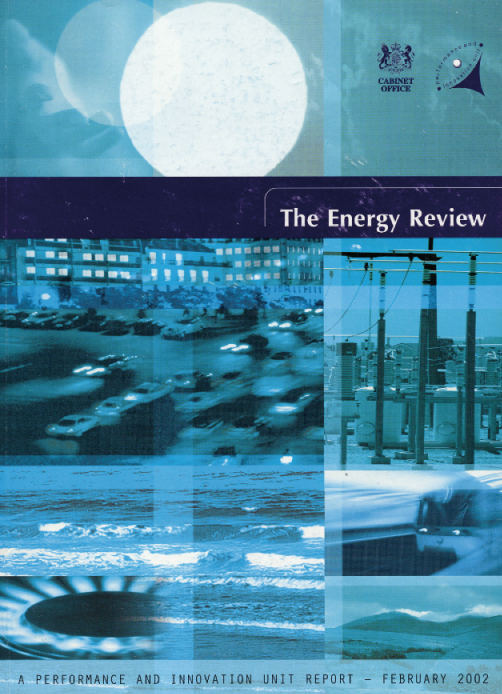
“The project’s outputs will be a key input to the UK
Government’s future policy on security and diversity of energy
supply and on climate change including its response to the Royal Commission on Environmental Pollution (RCEP) report on ‘Energy, the Changing Climate'. The centrality of carbon and the climate change issue”
The UK practices a ‘leading’ approach to climate change. This
approach to climate change implies 3 separate policy timelines with measures to: -
- comply with agreed targets;
- prepare for future targets not yet agreed but probably
involving not all countries and operating for limited time
periods, and
- prepare for a world of long-term emission limits agreed
between all countries, possibly based on the principles of contraction and convergence.
There is no clear dividing line between these phases. Post-Kyoto targets affecting the UK could be finalised by 2005
but agreement might take longer, perhaps a lot longer, and the
scale of the next targets is uncertain. Likewise, it is possible
that we could be in a world of long-term universal targets by
2010.
There is even a remote possibility of moving directly to the final
phase from the current position.
In the same way, it is far from clear what the scale
of future targets will be. The RCEP suggested that a 60%
reduction for the UK by 2050 would be needed within a
contraction and convergence agreement, but the exact figure is
very uncertain. All that is certain, whether we move to a contraction and
convergence world, as suggested by the RCEP, or follow the
guidance produced by the IPCC about global levels of emission
reductions that will be needed to avoid dangerous climate
change, is that developed countries will need to make very substantial cuts from current emission levels over the century ahead."
PIU Energy Review
UK Cabinet Office
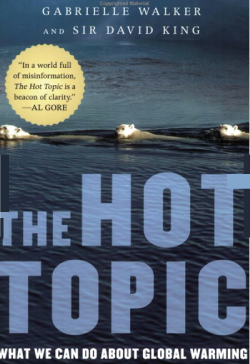
“Contraction and Convergence is the buzz phrase on many
negotiators’ lips. It
has the benefits that every nation is involved from the beginning, that it’s a transparent,
straightforward concept and that it produces a definite final concentration of greenhouse gases.“
Global Commons Institute 2000, ‘GCI briefing: contraction and convergence’
Originally published as Meyer, A. 2000, Engineering Sustainability 157(4): 189–92.
The Hot Topic
David King C&C on C&C
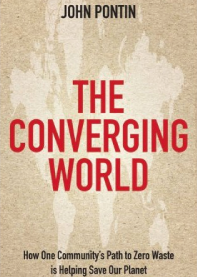
"Within a few years the principle of 'contraction and convergence'
(C&C) emerged. From the talented hand of Aubrey Meyer a violinist turned environmental campaigner, came a policy intended to curb the worst effects of global warming. Contraction means lessening the use of fossil fuels and all activities that contribute to the pollution that leads to climate change. Convergence is the ethic of sharing. When it comes to Earth's resources, the wealthy northern hemisphere countries have developed the habit of gobbling up oil while the countries of the southern hemisphere are largely sparing in their use of 'black gold'. North and south have diverged. Meyer believes everyone in the world is entitled to the same share of those precious resources. He has come up with a common-sense one-size-fits-all formula that will ensure it is so. It is the element of social justice in C&C that was an appealing shift in thinking."
"The Converging World"
John Pontin
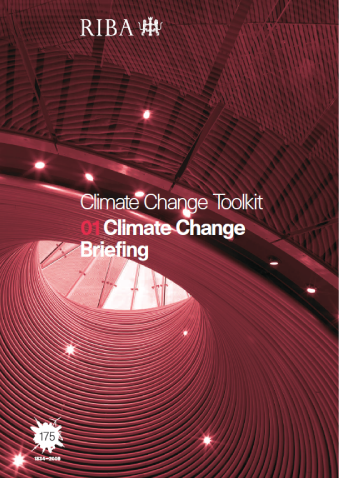
"One approach to reducing GHG emissions
is known as ‘Contraction and Convergence’.
This involves emissions from industrialised
nations reducing (contracting) and emissions
from all nations converging to an overall target
consistent with stabilising GHG concentrations
in the atmosphere. Over time, emissions
would contract and converge to an equal
share per person. To achieve this equitable
distribution, each of us in the UK would need
to reduce our average annual carbon dioxide
emissions from 10 tonnes to two tonnes. Contraction and
Convergence is the science-based,
global climate-policy
framework, proposed to
the United Nations since
1990 by the Global
Commons Institute. It is
supported by many climate
change scientists and policy
makers, including the
Royal Commission on
Environmental Pollution." See here & here
RIBA Climate Change Toolkit
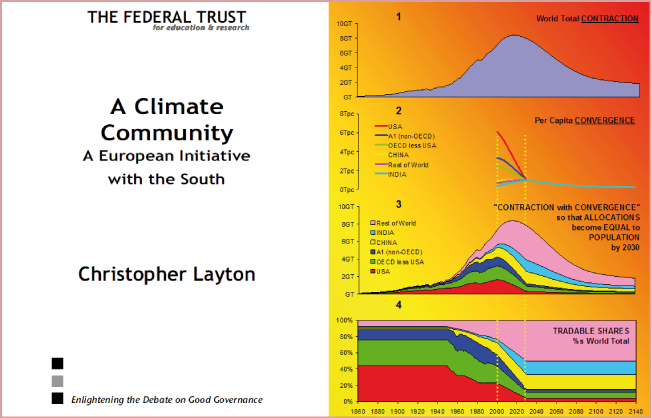
"This concept, known as Contraction and Convergence, is familiar
enough to cognoscenti of global climate negotiations. It was
developed by Aubrey Meyer of the Global Commons Institute and
expanded in a recent book.10 It has been adopted as a policy goal
by the major developing regions - India, China and much of Africa
- and approved by a resolution of the European Parliament.11 It has
been urged by the Royal Commission on Environmental Pollution.12
In March 2001 the Chartered Insurance Institute in a research
report13 on the grim effects of climate change bluntly told
Government and industry stakeholders ‘to show some leadership
by coming out in support of the principle of Contraction and
Convergence.’"
A European Initiative with the South Federal Trust
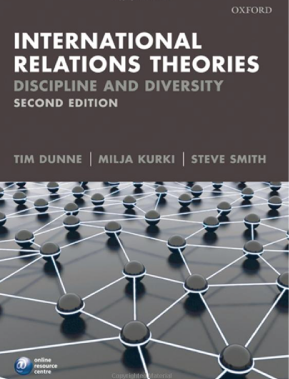
"One such model is ‘contraction and convergence’ developed by the London-based Global Commons Institute, which proposes a major contraction of emissions by the rich countries and an eventual per capita convergence by all countries at a level that the atmosphere can safely absorb. This model provides developing countries with some room to grow, while also facilitating a considerable transfer of resources from the high per capita emitters to the low per capita emitters under carbon-trading schemes.
In contrast, the Kyoto model is based on targets that individual industrialized countries are prepared to accept, which is a long way short of what is required to protect the Earth’s atmosphere. Moreover, some green critics argue that the ‘flexibility instruments’ introduced into the Kyoto Protocol, such as carbon trading and tree planting, are simply too flexible to guarantee significant reductions of emissions at source, given the weak aggregate targets. They also enable rich nations to ‘buy their way out of the problem’ rather than set an example for developing countries to follow."
GREEN THEORY ROBYN ECKERSLEY
International Relations Theories: Discipline and Diversity
Tim Dunne, Milja Kurki, Steve Smith
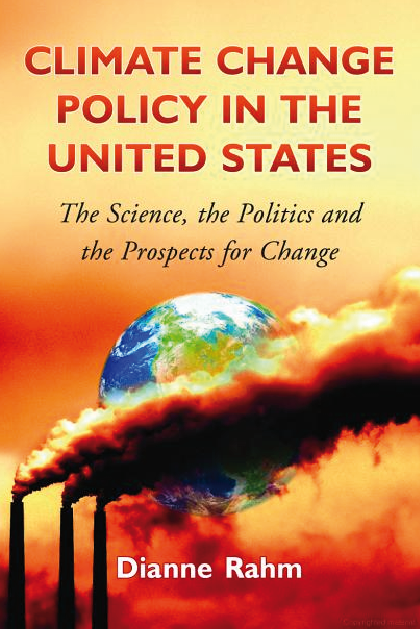
The failure of the Kyoto Protocol to include Developing Countries in emissions reductions is a serious one. Annual emissions of Developing Countries are growing so rapidly that even if the Industrialised Countries meet all their goals under the Kyoto Protocol, the goal of reducing emissions enough to avoid a global climate crisis will not be achieved. One approach under consideration is Contraction and Convergence [C&C]. The total number of permits issued is based on overall emissions contraction over time with the per capita emissions converging over time. During the transition period, emissions allowances converge from the status quo to equal per capita emissions.
Climate Change Policy in the US
Diane Rahm
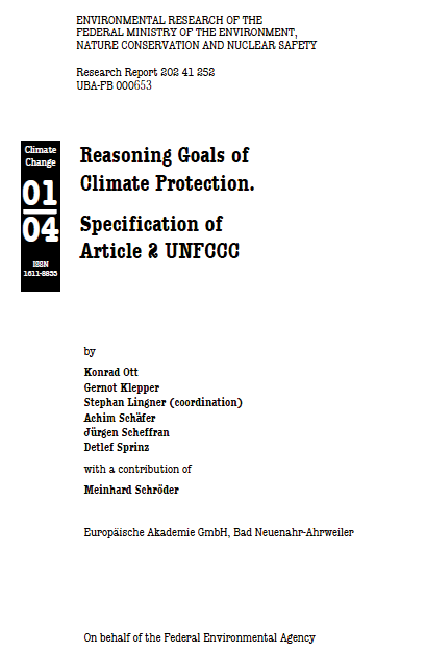
The concept of “contraction and convergence” originated with the Global Commons Institute in London and has resonated well with political actors, including those of the European Parliament. Two basic ideas are merged into one scheme: (i) contraction of emissions and (ii) convergence of entitlements to emit CO2. The fundamental idea behind this proposal is the conviction that only very ambitious emission reductions leading to 350 – 450 ppm CO2 can adequately prevent dangerous interference with the climate system in line with Art. 2 UNFCCC; this shall be reached by a specific target year, e.g. the year 2100. In addition, equity is solely interpreted as equal per capita entitlements to be achieved by a transition from present day per capita emissions to equal emission rights by a convergence year, either in a rapid non-linear fashion or as a linear transition between present day per capita emissions and equal per capita emissions.
Reasoning Goals for Climate Protection
Specification of Article 2 UNFCC
Federal Ministery of the Environment Germany

"The most prominent proposal is that of ‘contraction and convergence’ [GCI] Under this model, global emissions would be reduced over time, and entitlements to emit would be proportional to population for each country after a transition period—a convergence towards equal per capita allocations across the globe. The underlying ethical position is that each human being has an equal right to the atmosphere, and if access to the atmosphere as a repository for greenhouse gases has to be rationed, then each person should be entitled to an equal share. Industrialized countries would be allocated many fewer permits than their current emissions, and thus have to buy permits from developing countries. India and other developing countries with low per capita emissions are supporting the concept of equal per capita emissions rights, but others with relatively high emissions intensity (such as South Africa) would be unlikely to support this allocation rule. To agree on equity models such as contraction and convergence would thus require a fundamental rethink in rich societies about what their fair share of global resources and the global environment is, to acknowledge that they have been using a far greater share than is rightfully theirs and to drastically reduce their claim on global resources."
Developing Countries and the Future of the Kyoto Protocol
FRANK JOTZO (Australian National University)

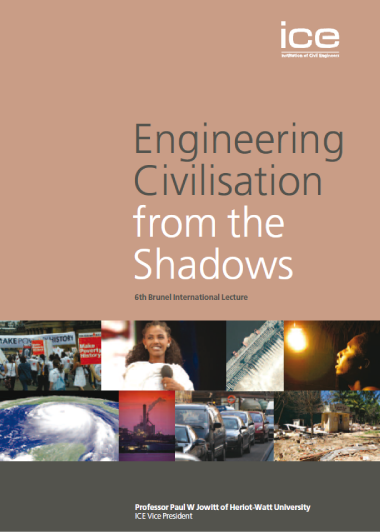
“Atmospheric CO2 levels are reaching critical levels and there must be a strategy to stabilise concentrations to a (relatively) safe level, and with the Kyoto process in limbo, some other process or protocol will be required to arrest the asymmetric pattern of ‘Expansion and Divergence’ and which leads to a more equitable and less self-destructive use of the earth’s resources.
The “Contraction and Convergence” (C&C) Strategy proposed by the Global Commons Institute offers such a process, drawing widespread interest and support, for example from the Indian Government, the Africa Group of Nations40 and the USA41. In December 1997 at the United Nations Framework Convention on Climate Change (UNFCCC) in Kyoto and shortly before they withdrew from the Kyoto negotiations the USA stated: “Contraction and convergence contains elements for the next agreement that we may ultimately all seek to engage in.”
“The fundamental attraction of Contraction & Convergence to me is that it’s logically based. It’s not based on essentially market issues and arbitrary decisions about how many tons of CO2 permits are going to be allowed. It also doesn’t have the risk in my view of one of the real issues with trading that some of the poorer nations and poorer peoples of the world will mortgage their future on a futures market of trading permits.”
Prof Paul Jowitt - President ICE
The Global Commons Institute (GCI), founded in 1990 by musician Aubrey Meyer after the Second World Climate Conference, is an independent group concerned with the protection of the “Global Commons”.
GCI has contributed to the work of the UN Framework Convention on Climate Change (UN FCCC) and the Intergovernmental Panel on Climate Change (IPCC). www.gci.org.uk
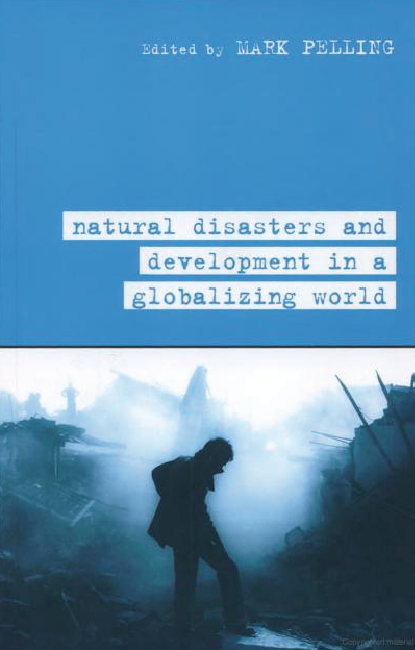
Ideally global emissions have to contract to an end-point [concentration level of say 550 ppmv] and converge by a given date [say 2050]. This approach is formally known as “Contraction and Convergence” and was created by Aubrey Meyer of the Global Commons Institute.
Natural Disasters and Development in a globalizing world
Mark Pelling

"An equitable basis for allocation of future emissions will be important to obtaining the agreement of transition-economy and developing nations – particularly China and India. Ideally the agreement could adopt ‘Contraction and Convergence’ as the model for determining national emissions allocations."
"RICS Report" - C&C Statement
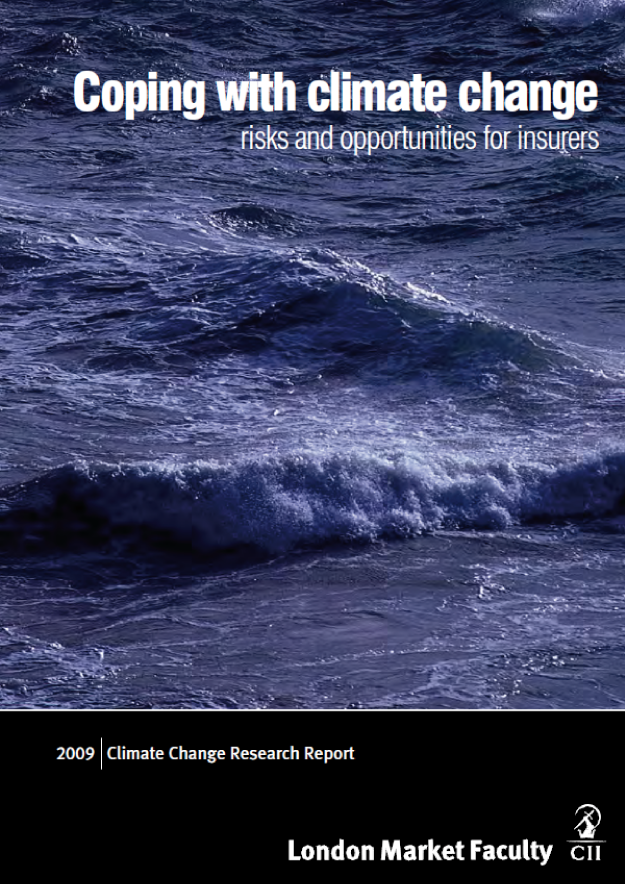
"Many scientists believe that an atmospheric level of 450 ppmv (parts per million by volume) of carbon dioxide should be the initial target for prudence; already we are at 380.
For long-term allocation, the “Contraction and Convergence” model (C&C) seems appropriate. The name C&C reflects the facts that the annual emissions contract to a safe level, and the per capita shares converge to become equal. C&C has the advantages of simplicity and fairness, gives long-term confidence in emissions reduction and in the short-term can accommodate a variety of ‘fixes’ as well as facilitating the flow of funds to developing countries."
"Coping with Climate Change"
CHARTERED INSTITUTE OF INSURERS - Dlugolecki on C&C
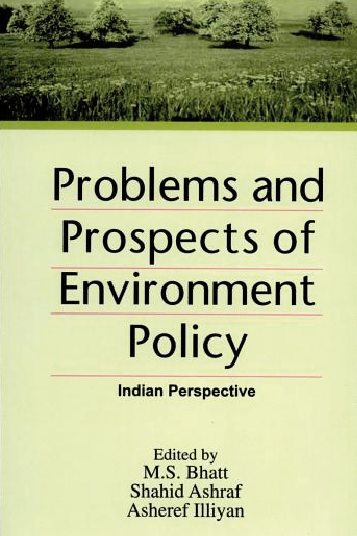
As early as 2000 the Royal Commission on Environmental Pollution [RCEP] recommended the “contraction and convergence” in its report to Government and the Government’s White Paper of 2003. The Insurance industry is the earliest among the business community to recognise the seriousness of global warming and the most concerned to find a quick solution as it impact its bottom line directly. Looking for a real world solution that will truly work the Chartered Insurance Insitute of the UK had no hesitation in accepting contraction and convergence.
Problems and Prospects of Environment Policy
M S Dhatt, Sahid Ashraf, Asheref Illiyan
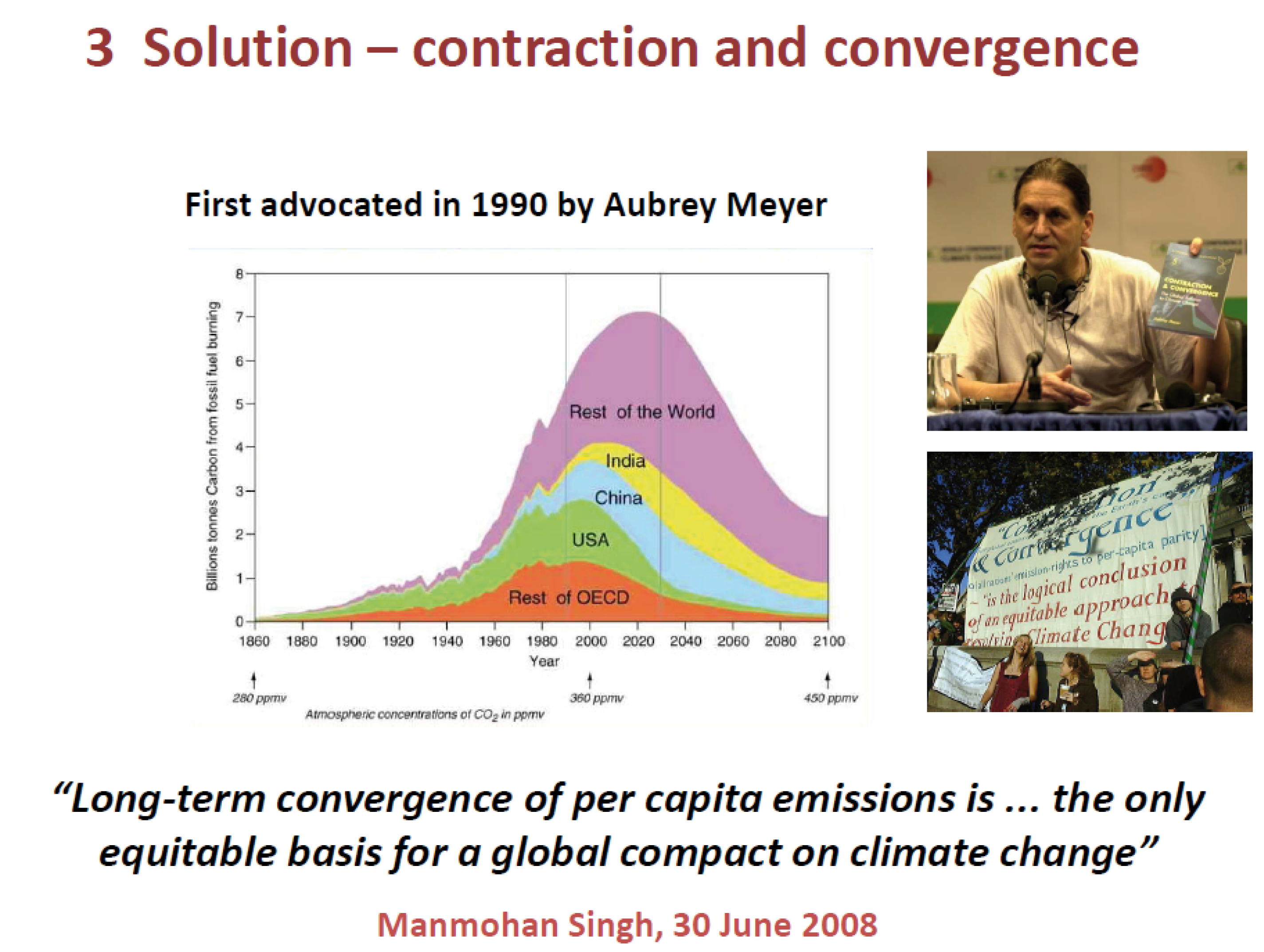
Solution - Contraction and Convergence - first advocated in 1990 by Aubrey Meyer.
“Long-term convergence of per capita emissions is . . . the only equitable basis for a global compact on climate change.”
Prime Minister India, Manmohan Singh, 30 June 2008
Professor Mike Hulme UEA
CIBSE ANNUAL LECTURE 2010
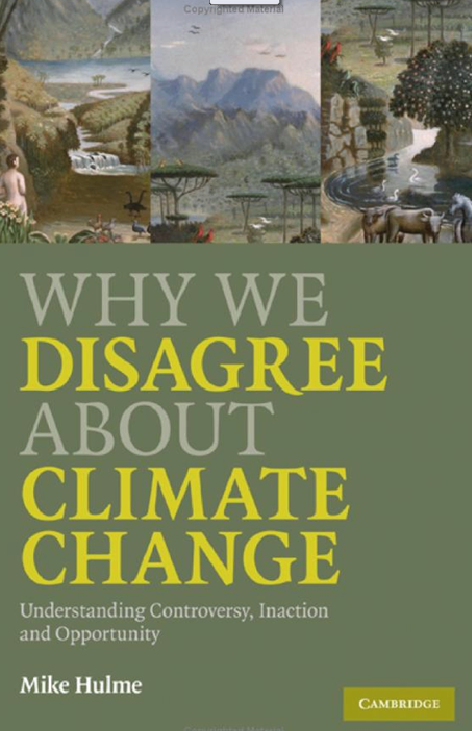
The idea of Contraction and Convergence (C&C) was first advocated in 1990 by Aubrey Meyer, a UK-based South African musician, author and founder of the Global Commons Institute. It
offers a straight-forward framework for an international agreement on climate change, the basic principle of which states that all citizens of the world have an equal right in principle to emit greenhouse gases. This right would be granted by a specified future date, the flat individual allowance for each citizen to be derived from an agreed eventual global greenhouse gas concentration target (often claimed by Meyer and others to be around 450 ppm). The C&C strategy consists of reducing global emiss ions of greenhouse gases to secure this target level (i.e. 'contraction'); a goal reached because every country brings its emissions per capita to a level which is eventually equal for all countries (i.e. 'convergence'). Initially, these entitlements would reflect the current distribution of emissions across nations, but would eventually converge by a date to be agreed through negotiation (often suggested to be 2050). In order to meet these per capita targets, nations would be entitled to trade allowances, thus facilitating financial transfers from higher-emitting nations to lower-emitting ones.
Why We Disagree About Climate Change
MIke Hulme

To combat global warming and ocean acidification, effective control of greenhouse gas emissions is likely to prove one of the most important scientific and technological challenges of the 21st Century. An equitable international agreement to keep CO2 levels in the atmosphere below even 550 ppmv based on emissions Contraction and Convergence [C&C] by 2050 could require a reduction in UK emissions by 60 or even 80%.
Underground Gas Storage
D J Evans R A Chadwick

"What is Contraction and Convergence, and what does it mean for housing? The Global Commons Institute proposes a framework for a global reduction in carbon emissions while simultaneously moving towards greater equity and social justice. The framework known as “Contraction and Convergence” consists of reducing overall emissions of greenhouse gases to a safe level [contraction], while every country brings emissions per capita to a level that is equal for all countries [convergence]. In Britain, this means reducing our current per capita emissions of about 12 tonnes down to i.5 tonnes. Some countries with low per capita emissions might initially be entitled to a rise in their carbon rations and could sell their surplus to richer countries. Once all countries achieve an equal level of emissions - 2030 is the target suggested by the Global Commons Institute - then the carbon ration for all countries would continue to fall to an agreed safe level. “Contraction and Convergence” represents a break from the vicious cycle where affluent industrialized word reaps benefits from fossil fuels while the developing world pays a disproportionate share of the costs in terms of climate change. In its place stands a virtuous circle where everyone benefits from reducing fossil fuel dependency. Based as it is on a philosophy of equal shares within a global limit, the framework could usher in a new era of global justice."
Local Sustainable Homes: How to Make Them Happen in Your Community
Chris Bird
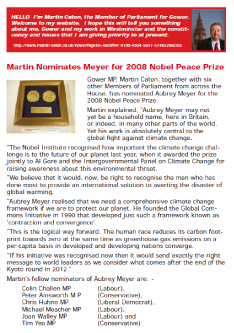
Gower MP, Martin Caton, together with six other Members of Parliament from
across the
UK House of Commons, nominated Aubrey Meyer for the 2008 Nobel Peace Prize.
Martin explained, “Aubrey Meyer may not yet be a household name, here in
Britain, or indeed, in many other parts of the world. Yet his work is absolutely
central to the global fight against climate change.“ The Nobel Institute recognised how important the climate change challenge is to
the future of our planet last year, when it awarded the prize jointly to Al Gore and
the Intergovernmental Panel on Climate Change for raising awareness about this
environmental threat. “We believe that it would, now, be right to recognise the man who has done most
to provide an international solution to averting the disaster of global warming.“ Aubrey Meyer realised that we need a comprehensive climate change framework
if we are to protect our planet. He founded the Global Commons Initiative in 1990
that developed just such a framework known as ‘contraction and convergence’. “This is the logical way forward. The human race reduces its carbon footprint
towards zero at the same time as greenhouse gas emissions on a per capita basis
in developed and developing nations converge.
If his initiative was recognised now then it would send exactly the right message
to world leaders as we consider what comes after the end of the Kyoto round in
2012.”
Martin’s fellow nominators are Colin Challen MP (Labour), Peter
Ainsworth MP (Conservative), Chris Huhne MP (Liberal Democrat), Michael
Meacher MP (Labour), Joan Walley MP (Labour) and Tim Yeo MP (Conservative).
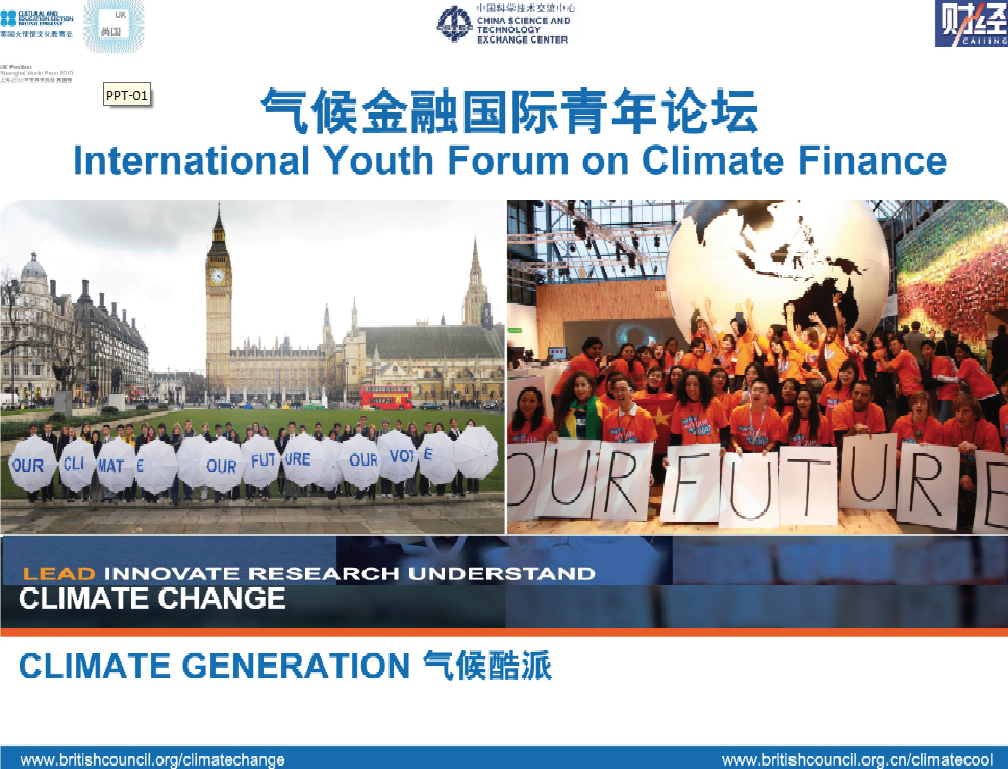
"Stop the blame game! Countries must move away from national interests and have a global view - a globally equitable rate of contraction and convergence that correlates to the 2°C rise path as mentioned in the IPCC AR4."
International Youth Forum
Shanghai
Declaration on Climate Finance 2010
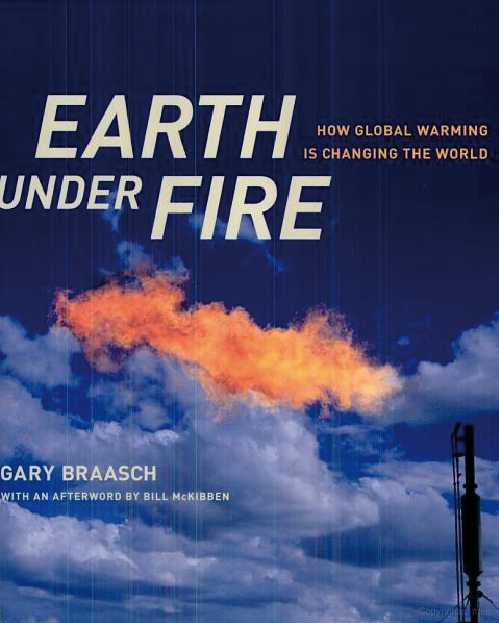
One of the most highly developed models is contraction and convergence which leads from egalitarian ideals by way of science. The best estimate of the amount of greenhouse gasn a stable atmosphere well short of catastrophic climate change would be the target and nations would move towards it [contraction based on an eventual equal distribution of emissions per person [convergence]. Proponents see the equality as the only way of apportioning ‘use’ of the atmosphere, which has no boundaries and supports everyone. The Global Commons Institute has been bringing this idea to the international climate meetings since 1990.
Earth Under Fire
Gary Braasch

“Contraction and Convergence’, has 3 main components: -
- each person on the planet is granted an equal right to emit carbon by virtue of their equal right to use the benefits provided by a shared atmosphere. This principle is treated as intrinsic to the architecture of the approach and not a longer-term aspiration as in the case of Kyoto Plus.
- a ‘global ceiling ‘ for greenhouse emissions is set based on a calculation of the amount the global environment can withstand without dangerous climate change taking place.
- each country is allocated a yearly ‘carbon emissions budget ‘ consistent with the global ceiling not being exceeded, and calculated according to each country’s population size relative to an agreed base year. The name of the approach comes from the notion that over time, it aims to bring about a stabilisation, and later a contraction, in global greenhouse emissions so that they stay below a safe level; and that, in the longer term, developed and developing countries will converge on a roughly equal level of per capita emissions.
Within this overall approach, a country that wants to emit more than its yearly quota must buy credits from countries that have spare capacity. The country selling the credits is then free to invest the receipts in activities enabling it to develop sustainably. An emissions mechanism is a key feature of all of the proposed successors to Kyoto, but in this version the trading zone covers the whole planet from the outset. The consequence is that Contraction and Convergence offers a unique mixture of equity and flexibility which does not seek a literal convergence in greenhouse emissions, but rather a convergence in the rights of all countries to make use of the atmospheric commons. Unlike a number of competing approaches, Contraction and Convergence, if fully implemented and complied with, could be expected to reduce the risks of dangerous climate change substantially, although it will not prevent many adverse impacts in the short to medium-term. It also has the merit that it adopts emissions targets based on scientific criteria for protecting inequalities between developing and developed countries, and between generations, relative to its rivals. It will also tend to improve, relative to rival approaches, the position of the worst off since research suggests strongly that very many of the worst off will be members of developing countries in a future world blighted by climate change. Finally, it will be attractive to those who wish to bring as many people as possible to the point where they have enough since the measures it will introduce will benefit many millions of people in developed and developing countries who lead, or will lead, lives lacking in what is needed for a decent life without bringing more than a very limited number of people below the sufficiency level."
"Contraction and Convergence - the Global Solution to Climate Change" -
Aubrey Meyer Green Books.
C&C
was pioneered by the Global Commons Institute
Climate Change, Justice and Future Generations
Edward Page
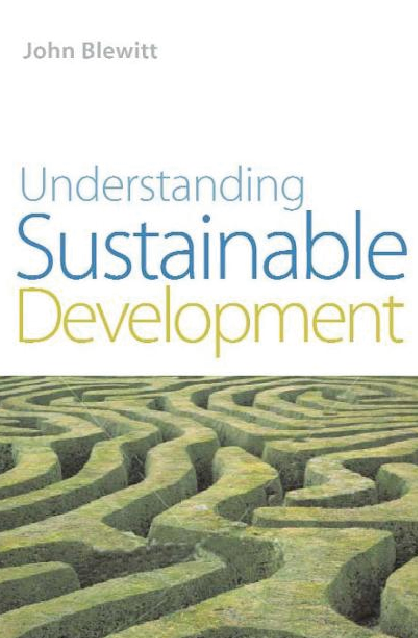
Creative Policy Solutions: Contraction and Convergence
Aubrey Meyer, musician and composer, former member of the UK Green Party and co-founder of the Global Commons Institute in 1990, is an active promoter of climate mitigation through ‘Contraction and Convergence’ - a practical and equitablc approach to combating climate change. He believes that those economists who argue that climate mitigations is too expensive a policy option effect ively condone the murdering of many of the world's poor. He argues (Meyer 2000) that although greenhouse gas emissions have been accumulating in the atmosphere as a result of industrialization for over 200 years, suggesting
that in principle every citizen on the planet has an equal right to emit, there must be an equitable individual allowance based on safe global emissions targets provided by the best scientific understanding available. Contraction and Convergence offers a simple model on which an international agreement on greenhouse gas emissions can be based.
It can be achieved in three stages: -
1. securing an agreement on a cap on CO2 concentrations in the atmosphere;
2 calculating the speed at which emissions need to be reduced to reach that target;
3 calculating the consequent total carbon budget and allocating a per capita allowance throughout the world.
The result will be that per capita emissions from each state wil converge at a fair level while the global sum of emissions will 'contract’. Meyer believes that greenhouse gas
concentrations should contract to 450 ppm and that convergence to equal per capita emissions should be achieved by 2030. This process requires the creation of a carbon currency, which could finance clean technology and eradicate Third World debts, combat global poverty, and minimize the economic differences between the developed and developing worlds. As Flannery (2005) notes, this ‘strong medicine,' could be the foundation for a new Kyoto that does away with ‘free-riders’ but will mean definite political and economic costs for the developed nations. Contraction and Convergence is thus a vehicle for achieving global equity not only in CO2 emissions but also in economic wealth, prsoperity and human well-being. The rich nations of the North are by far the biggest emitters of greenhouse gases. Even today, Africa's accumulated emissions are a small fraction of those produced by the UK. But Contraction and Convergence can only be realized of the participation, dialogue, debate and accommodation that is beginning to characterize global politics in major areas of environmental and sustainability policymaking develop further. NGO pressure groups, independent think-tanks, swcientific organizations and corporate and government bodies, which form 'epistemic' or knowledg-based communities must work with rather than against each other if agreement on climate change is to be secured. As Gough and Shackley (2001. p332) write: -
"The science-policy nexus represented by the IPCC and supporters of the UNFCCC Kyoto Protocol, with its inclusion of Government officials, international organizations, scientists, NGOs, business and so on incorporates the key elements of an epistemic community. A distinctive knowledge-based approach to climate assessment and policy has emerged within the IPCC in which the NGOs have been instrumental both as expert advisors and in provideing the legitimacy of inclusiveness needed for the epistemic coalition to have sufficient authority. The fact that environmental NGOs (ENGOS), governmental and intergovernmental actors, the scientific establishement and even some business groups are in coaltion can be atermendously powerful influence. NGOs that have helped to create the climate change epistemic community have needed to move their own terms of reference towards science and technical policy measures and resonses away from ethics and overtly political matters, such is the price of membership of the coalition. This is to shut the door on the use of a range of potnetially useful concepts and devices such as global equity and North-South development."
Understanding Sustainable Development
John Blewitt
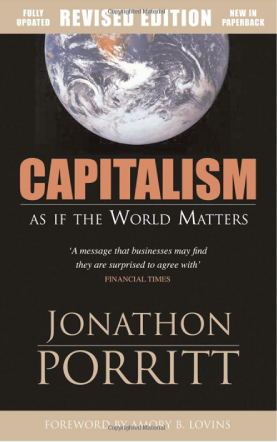
"The assiduous campaigning over the last decade by the Global Commons
Institute (based on its idea of 'contract and converge', under which the rich
nations undertake to reduce emissions even as developing nations are permitted
to grow their emissions until such time as per capita emissions converge at the
same level) has given this kind of approach some real credibility. So, too, has the
growing readiness of developing countries such as Brazil, Indonesia and Argentina
to accept emissions targets for their own counties - not least because they too are
already beginning to feel the impacts of climate change.
The real strength of this approach is that it is based upon a trading system,
with rich nations needing to purchase additional carbon credits from poorer
nations. This appeals a lot to those campaigning for global economic justice: a
global trading system in carbon would begin to shift substantial resources from
rich countries to poor countries as nations with wasteful, carbon-intensive
lifestyles have to purchase additional carbon credits from nations with low-carbon
economies."
"Capitalism as if the World Matters"
Jonathon Porritt & Amory Lovins
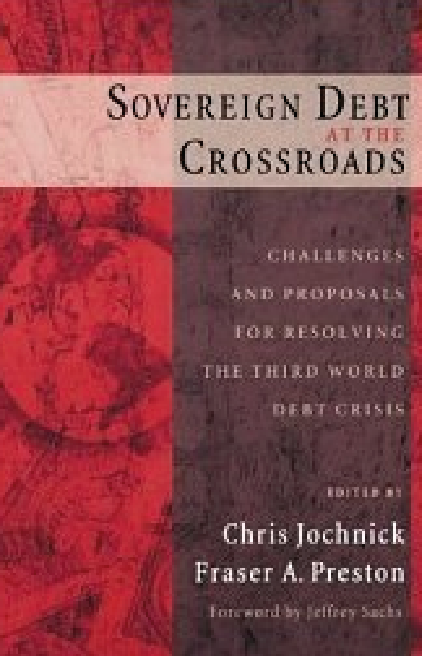
A formula is used such that, in an agreed timeframe, entitlements to emit are predistributed in a pattern of international convergence so that, globally, shares become equal per capita. This procedure, unavoidable if chaos is to be prevented, was given the term "contraction and convergence" [C&C] by the London-based Global Commons Institute (Meyer 2000). Interestingly, C&C would fit with the stated
position of the otherwise recalcitrant United states. In his statements on climate change, President George W. Bush has set out specificcriteria for what sort of treaty the United states would be willing to support. How they explain that logic to India, China, Brazil, or Ethiopia will make
for an interesting ministerial meeting. They have shown the necessary contraction but not the convergence. yet the two must occur together. Applied more generally, there is a sentiment absolutely in line with
C&C and a way of reconciling the ecological debt crisis. But it is possible that neither the C&C framework nor the approach of an environmental war economy will succeed alone without reform of our monetary system. Spare emissions permits from underconsuming countries in the C&C framework could be traded in a special currency, the "EBCU" (energy-backed currency unit). The EBCU issue to governments would be a one-time event on the same per capita basis as the emission permits. Spare permits under a given
ceiling would be made available upon payment in EBCUs.
Sovereign Debt at the Crossroads
Chris Jochnich Fraser A Preston
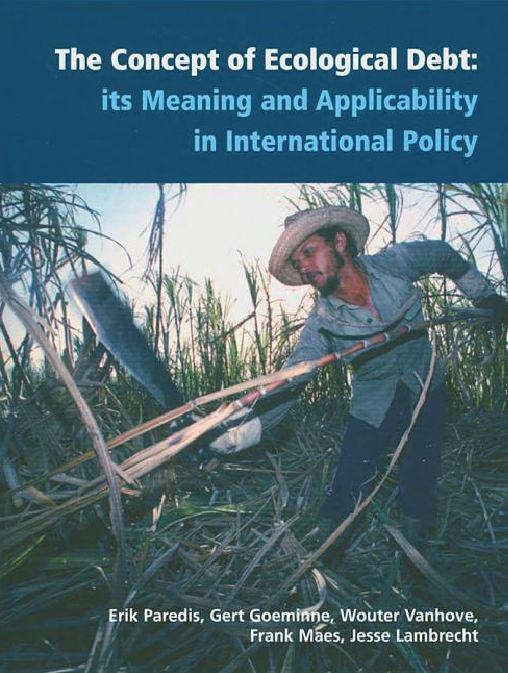
The problem of global warming can illustrate the models. In this case the over-consumers of the North and under-consumers of the South follow a path of Contraction and Convergence [C&C].
The Concept of Ecological Debt
Erik Paredis, Gert Goeminne, Wouter Vanhove, Frank Maes, Jess Lambrecht

"The One Planet initiative adopts the principle of Contraction and Convergence which
means that countries with high per capita emissions will have to reduce their emissions much more rapidly
than countries that currently have low per capita emissions. The end result being that per capita emissions
from each country will converge at a more equitable level and the global total of emissions will contract.
BioRegional will work with partners to agree community specific trajectories. For example, for
communities in developing countries a suitable trajectory will have to take into account whether the
development is targeted at residents with high impact lifestyles or very low income residents with low
carbon emissions."
Common International Targets
January 2011
ONE
PLANET
COMMUNITIES

Here are ten factors which have made it hard to campaign effectively ‘on climate’.
1. Scientists defined the issue
2. Governments ran off with the issue
3. There was no campaign [sequence]: NGOs adopted secondary roles
4. The issue had no public
5. The media were left to define the issue in visual terms
6. Governments soft pedalled on the issue
7. Scientists led calls for education of the public
8. Many NGOs tried to make the Framework Convention ‘work’
9. Other NGOs tried to connect it with “bigger issues”
10. There is no common proposition
Only extraordinary individuals such as Aubrey Meyer, father of ‘contraction and convergence’, managed to penetrate this remote citadel.
NGOs could prioritise it but they were stuck in someone else’s game.
Campaign Strategy - Why Campaigning on Climate is Difficult
Chris Rose
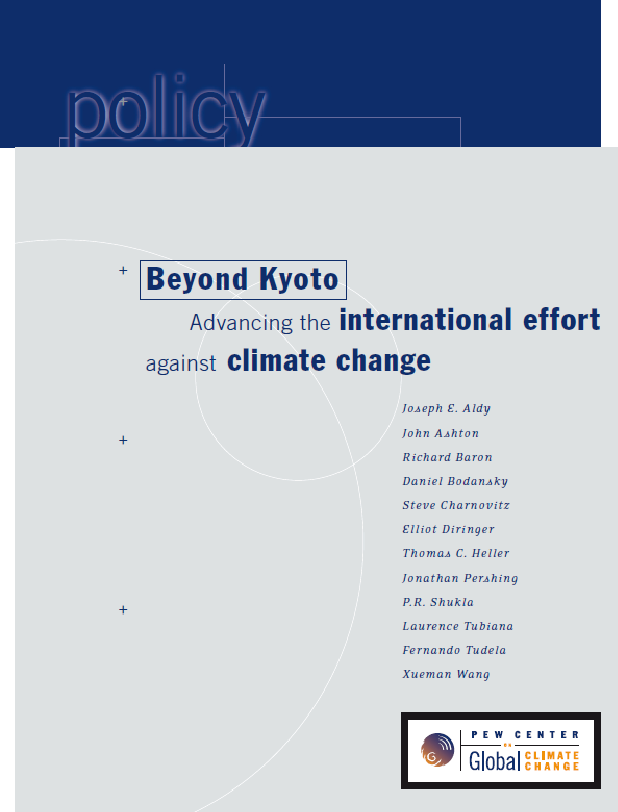
The “Contraction and Convergence” proposal, developed by Aubrey Meyer, assigns every human being an equal entitlement to GHG emissions. All countries should thus move towards the same per capita emissions. Total emissions should contract over time, and per capita emissions should converge on a single figure. The actual convergence value, the path towards convergence, and the time when it is to be reached would all be negotiable. The proposal allows for the trading of emissions entitlements using mechanisms of the kind permitted under the Kyoto Protocol.
At one level, this is compelling. It offers a long-term architecture for an international emissions regime, potentially robust across several of the equity dimensions identified in this paper. It would not require developing countries to shift their immediate focus away from their basic needs: their emissions constraints would bite gradually as per capita emissions increased. And by emphasizing entitlements as well as commitments, it could help address the sense of inequity that arises from the unrequited “carbon debt” of past emissions by industrialized countries.
Ultimately, almost any conceivable long-term solution to the climate problem will embody, at least in crude form, a high degree of contraction and convergence. Atmospheric concentrations of GHGs cannot stabilize unless total emissions contract; and emissions cannot contract unless per capita emissions converge. The practical question is not whether this is a reasonable scheme, but whether the quickest way to realize it is to base the next stage of the negotiations explicitly on it.
The contraction and convergence proposal plays an important role in the climate process. It focuses attention on the ethical questions at the heart of the climate problem, which no long-term solution can afford to ignore. If supported by a critical mass of countries, it would become an important force in the negotiation. The ideas behind the proposal will remain relevant to any discussion of climate and equity for as long as the search continues for a global response to climate change.
Beyond Kyoto PEW Centre
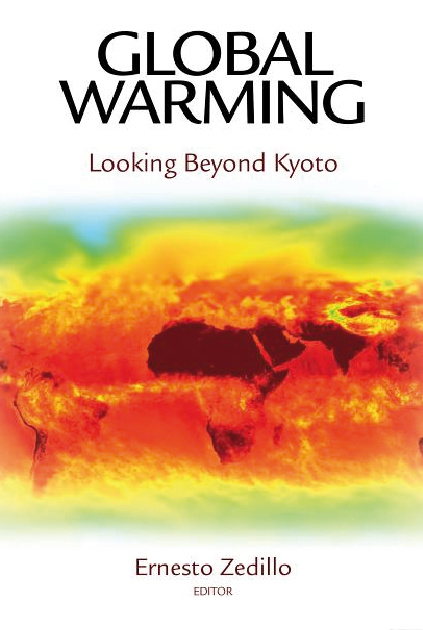
Eventually, the developing countries will need to graduate and join the industrial world with binding caps. This process could build a contraction and convergence path.
Global Warming - Looking Beyond Kyoto
Ernesto Zedillo, Ponce de León

Following the inconclusive end to the Bonn talks a group of climate scientists and campaigners wrote to energy and climate change secretary Chris Huhne, calling on him to stand by the Liberal Democrat manifesto pledge to push for an ambitious international climate treaty based on the contraction and convergence emission reduction model.
The letter calls on Huhne to convene a high-level public meeting to discuss the failure of UN climate negotiations and the extent to which a contraction and convergence model, whereby emission targets are based on an assumption that everyone is entitled to the same level of per capita emissions, could break the current deadlock between developed and developing economies on emission caps.
Few could argue against a model of reducing overall emissions while also equalizing emissions between developed and developing nations, which is the principle of contraction and convergence, but this is an ideology that is seemingly almost impossible to implement at the current time.
ENGAGE - What Happens after Kyoto

The partial success of the “contraction and convergence” model to induce influential
climate-change policy-setters to reduce national carbon emissions (GCI 2000) shows that inviting powerful states to being part of the solution rather than part of the problem should be pursued.
GCI (2000) Contraction and Convergence: A Global Solution ot a Global Problem, Meyer 2000
Getting Transboundary Water Right:
Theory and Practice for Effective
Cooperation

"The vision of contraction and convergence as a response to climate
change, which is described in this volume, is one that I support.
I have also called upon our Church to undertake an ecological audit
of some sort; information about how to do this can be found in Part
Three. Such local, internal responses are vital if our voice as a Church
is to have integrity."
Sharing God's Planet
"Those who think contraction and convergence is Utopian simply haven't looked honestly at the alternatives."
Rowan Cantuar - The Archbishop of Canterbury

Aubrey Meyer’s visionary Contraction and Convergence proposition (you can read more on this in Meyer’s‘The Case for Contraction and Convergence,’ in David Cromwell and Mark Levene, eds., Surviving Climate Change, The Struggle to Avert Global Catastrophe, London: Pluto Press, 2007, pp. 29-56), is not only at fundament about piku’ah nefesh, it also in its insistence on an time-ordered reconciliation of all humanity by way of equal carbon entitlement is nothing less than eschatological in its vision of a world community which has arrived at its ethical end-goal. But Meyer’s proposition, of course, does not openly speak in these prophetic terms. Utterly grounded in the climate science, its purpose is to find a practical framework by which yearly, incremental carbon reduction can be brought to safe-limits. And its method is social justice. While all humanity will converge to a common carbon point, it will be the rich countries who will have to do almost the entirety of the ‘contraction’ to meet the overall targets, and in the process – through the tradability of entitlements – enabling the poor and disadvantaged the investment not only for clean sustainable technologies but a belated meeting of their fundamental right to wellbeing. A Jewish community which takes to its soul this ideal of and makes of it a goal of practical implementation is one which is truly fulfilling its time-honoured purpose. It would also in the process be helping to break an actual log-jam. Contraction and Convergence has been much theorised but what is arguably needed now is visible evidence that it can be made to work in a Western environment where the ‘sacrifice’ has to be made. Normative Judaism through its historic orthopraxy is particular suited to this exercise. Traditionally Jews lived by a very tight code of rules and observations governing every aspect of conduct and behaviour in their daily lives. Large numbers of the religious still do so. Re-orientating these guidelines to a template governing a sustainable life-style would not as an idea be that revolutionary. In the sense that it would actually involve a thorough-going programme of transition to low-energy living it would be as far-reaching as could be conceivably imagined.
Can Jews help to stop Climate Change?
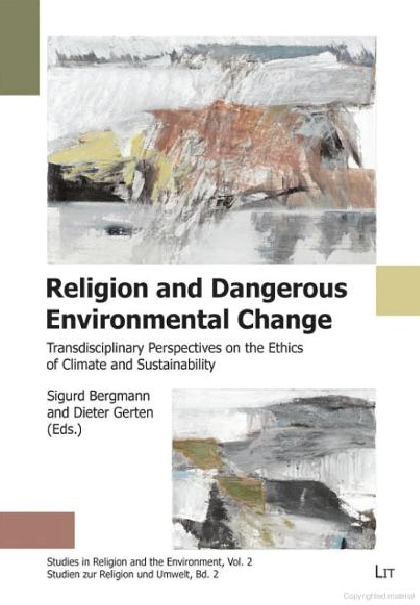
In 48 points or “better steps”, German philosopher and envrionmental ethicist Konrad Ott continues "Kronolid’s struggle with the ethical implications of climate change by elaborating basic foundations on existing and necessary policies for climate change. The short sections are consistently formulated as “ethical claims” and the reader should approach these slowly and with concentration, so that the subsequent steps are converted into one single walk and path.
At the core of the author’s argument lies the climate-ethics concept of “Contraction and Convergence”. This argument provokes a constructive debate, and it presumes to to support a concept that has been regarded as “Utopian a decade ago but has now entered the political stage. What might it contribute to international climate policy in a nondistant future?
Religion and Dangerous Environmental Change
Sigurd Bergmann Dieter Gerten [Eds]
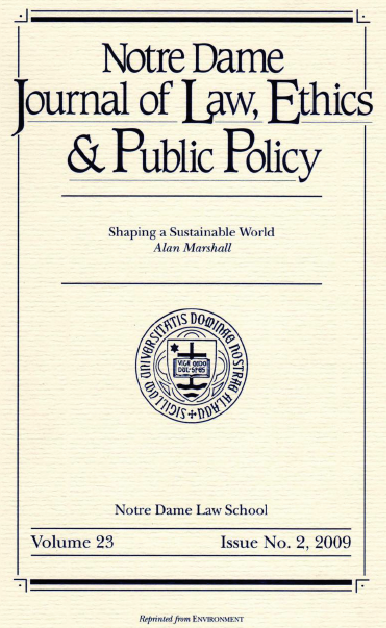
The leading model for distributing emissions rights between nations on a per-capita basis is the proposed international framework called Contraction and Convergence. Formulated in the U.K. by the Global Commons Institute, it recognizes that because the emissions cuts required by developed nations are so deep, convergence to per-capita emissions rights is only possible over time.
Notre Dame
Journal of Law, Ethics & Public Policy -
Shaping a Sustainable World
Alan Marshall

"Looking towards the upcoming negotiations on the second commitment period,
the Contraction and Convergence Model is an important contribution. It
corresponds to the initial vision of the Convention that demands the reduction of
CO2 emissions of industrialized countries and leaves space for the development of
developing countries. It presents a starting point for deliberations and negotiations
directed to finding a justice-based global approach to climate change."
World Council of Churches

Public Policies based on the Concept of Enough
Enough has important philosophical and reflective aspects, but it is also at the heart of many concrete proposals and frameworks for making the changes we need, in order to live well in the future. Such proposals include ‘Contraction and Convergence’ based on the idea of a fair distribution of carbon-emission quotas to all citizens of the globe.
Jesuit Centre for Faith and Justice

The film the Age of Stupid offers a good illustration of a contraction and convergence approach so that film-goers come away knowing that there are solutions on offer.
Creation Challenge CTBI

Church of England National Environment Campaign
Synod as carried - February 2005
That this Synod: -
1. commend Sharing God’s Planet as a contribution to Christian thinking and action on environmental issues;
challenge itself and all members of the Church of England to make care for creation, and repentance for its exploitation, fundamental to their faith, practice, and mission;
2. lead by example by promoting study on the scale and nature of lifestyle change necessary to achieve sustainability, and initiatives encouraging immediate action towards attaining it;
3. encourage parishes, diocesan and national Church organizations to carry out environmental audits and adopt specific and targeted measures to reduce consumption of non-renewable resources and ask the Mission and Public Affairs Council to report on outcomes achieved to the July 2008 group of sessions;
4. welcome Her Majesty’s Government’s prioritising of climate change in its chairing of the G8 and its forthcoming presidency of the European Union;
5. urge Her Majesty’s Government to provide sustained and adequate funding for research into, and development of, environmentally friendly sources of energy;
6. and in order to promote responsible use of God’s created resources and to reduce and stabilise global warming, commend to the consumers of material and energy, the approach of ‘contraction and convergence’;
7. and to the producers of material and energy systems, safe, secure and sustainable products and processes based on near-zero-carbon-emitting sources.
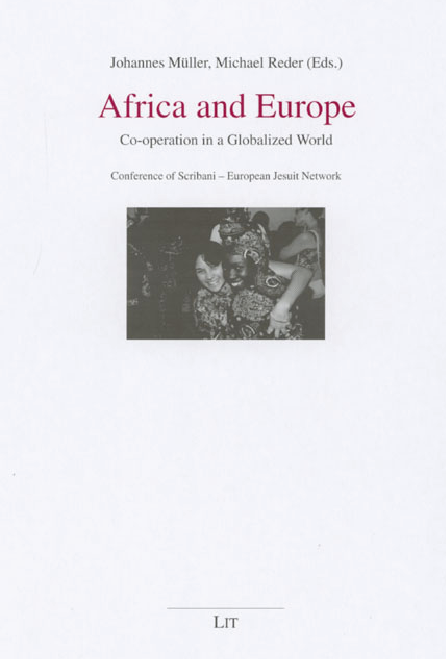
The reality is that if we fail to address the consequences of global warming and don’t massively reduce carbon emissions over the next 30 years, the future of human civilization will be in doubt in 100 years time. To prevent this catastrophe we need world wide agreement on Contraction and Convergence. Contraction and Convergence means that we ask climate scientists to tell us how much carbon dioxide can be safely emitted globally. We then move over time to a per capita entitlement with the OECD countries having to massively reduce emissions. So that developing countries being able to grow but having access to new technologies do not emit as much CO2 in the course of their development as did Europe and North America. So it's clear even for those who are not convinced of the need for radical action for moral reasons, that as our climate and
environmental problems become more serious, there is need for action in order to preserve human civilization. As Africa is the poorest continent with the least power in the international sytem, it would be the right place for Europe to start in constructing a more just and equitable world order in order to cope with the problemes that face the whole of humanity.
Africa and Europe: co-operation in a globalized word
Johannes Müller, Michael Reder, Scribani-European Jesuit Network
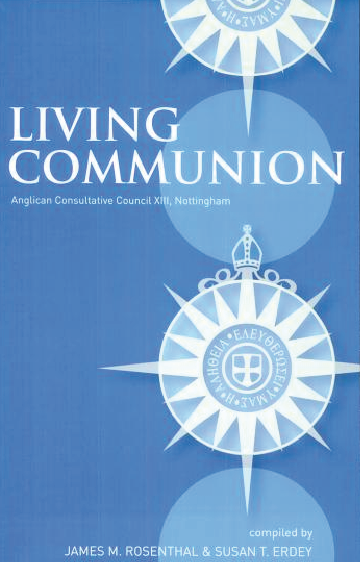 Anglican Communion Environmental Network
Anglican Communion Environmental Network
The Anglican Consultative Council notes thc Statement to thc Anglican Communion from the ACEN, and
endorses its recommendation that all Anglicans be encouraged to: -
[1] recognise that global climatic change is real and that we are contributing to the despoiling of creation
[2] commend initatives that address the moral transformation needed for environmentally sus tainable economic practices such as the Contraction and Convergence process championed by the Archbishop of Canterbury
[3] understand that for the sake of future generations and the good of God's creation, those of us in the rich nations need to be ready to make sacrifices in the level of comfort and luxury we have come to enjoy.
Living Communion: Anglican Consultative Council XIII, Nottingham
James Rosenthal

Before the Framework Convention, the Global Commons Institute in the United Kingdom presented a proposal using ‘Contraction’ (to a level of global GHG emissions) and ‘Convergence’ (so that each country converges on the same allocation per inhabitant by an agreed date), aimed at equality in emissions per capita. In this proposal, countries unable to manage within their shares would be able to buy the unused parts of the allocations of other countries. Proposals calling for Contraction and Convergence represent a way to implement per capita equality in the long run. Industrialized countries have nearly locked themselves into a fossil-based infrastructure that requires some lead time to dismantle, even disregarding resistance from power and oil companies. Factors other than population Size need to be taken into account, including geographical and climatic conditions, and intensity of the economy. Contraction in carbon emissions is nevertheless a path for industrialized nations to start down.
For Contraction and Convergence policies to be implemented, nations would need to agree to stay within safe limits of the climate system. A scientifically derived global carbon budget would be the upper limit for all combined emissions, and that budget would be divided among the countries of the world. Industrialized nations would start the contraction process with more of this global budget but would receive fewer and fewer allowances as time goes on. Industrializing nations would begin at a point of much lower levels of emissions but would in the process of development increase those emissions, receiving a larger share of the emissions budget. While the polluting nations would engage in a process of contraction, the developing nations would eventually converge with the industrialized nations at a point that is safely within the absorptive capacity of the atmosphere.
Wind, Sun, Soil Spirit
Carol Robb
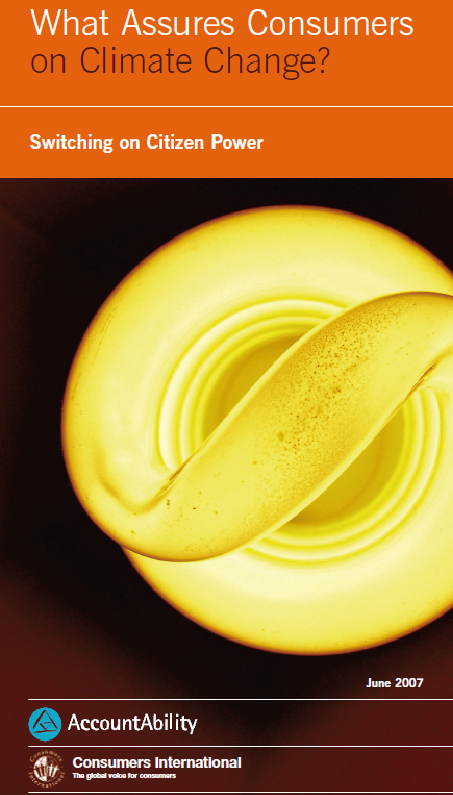
Civil society organizations are beginning to make the crucial links between global warming, poverty and sustainable development, but struggle to fit climate change into their existing schemas of perpetrators and victims, donors and beneficiaries, global problems and activist solutions. Protection of the atmos-pheric global commons is a challenge of accountability. The development and adoption of energy efficient, low-emission technologies is of course critical. But it is equally urgent that new policies and institutions are able to make the link between socioeconomic development and global warming and then transit from blueprint to implementation. There are many proposals already on the table: Some countries, and many campaigners support a policy of ‘contraction and convergence’ towards sustainable and equitable per person emission quotas globally.
What Assures Consumers on Climate Change?
Switching on Citizen Power
Accountability &
Consumers International - The global voice for consumers

A policy proposal called “Contraction and Convergence” was made and developed by Aubrey Meyer, linked to the British Green Party.
Límites del crecimiento y cambio climático
Mauricio Schoijet
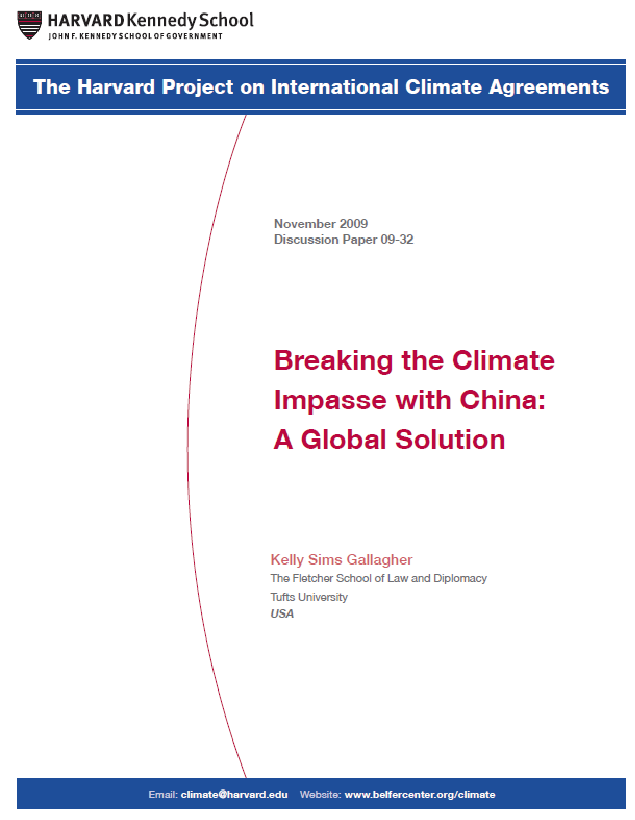
One of the most
prominent for emissions allocations is the Global Commons Institute’s
“contraction and convergence”
approach (Meyer 2001)
Breaking the Climate Change Impasse with China
Harvard University BELFER Centre

An option is to consider per capita distribution. Each country is then allocated emissions entitlements in accordance with the number of people living there. This principle also makes it possible to allocate quotas among countries in the future – the “contraction and convergence” principle. The proposal originated from the Global Commons Institute, but research communities have also shown interest. The goal of “contraction and convergence” is to gradually decrease global emissions, while simultaneously evening out the differences in the total emissions of each country. The time perspective is long-term, and at a given point in the future the aim is that all people will have the same emissions entitlements.
It is time to settle the bill after many years of high CO2 emissions. But who should pay?
Anne Therese Gullberg CICERO

Under the Copenhagen Accord, it appears that 2°C above preindustrial
levels has already been agreed upon. The allowable future cumulative emissions required to keep global warming below this temperature threshold can then be calculated. Determining how such future CO2 emissions are partitioned, perhaps under a contraction and convergence framework, could then be the subject of international negotiations.
Toward the Second Commitment Period of the Kyoto Protocol
Policy Forum, Andrew Weaver, AAAS Science Magazine May 2011

The Society’s Board unanimously agreed that the ‘Contraction and Convergence’ framework provides an important step forward in helping all sectors of community, business and government to understand how we can move forward together, on a global scale, to tackle climate change. John Brady, Chair of the Society welcomed this approach and said, “On behalf of the Society for the Environment I am proud to endorse the ‘Contraction and Convergence’ framework which will be important in helping us to work towards a sustainable and equitable future, not just for the UK but communities and economies worldwide.”
Society for the Environment
1. Arboricultural Association (AA)
2. Chartered Institute of Building (CIOB)
3. Chartered Institution of Wastes Management (CIWM)
4. Chartered Institution of Water and Environmental Management (CIWEM)
5. Institute of Agricultural Management (IAgrM)
6. Institute of Ecology and Environmental Management (IEEM)
7. Institute of Environmental Management and Assessment (IEMA)
8. Institute of Fisheries Management (IFM)
9. Institute of Professional Soil Scientists (IPSS) (associate member)
10. Institution of Agricultural Engineers (IAgrE)
11. Institution of Chemical Engineers (IChemE)
12. Institution of Civil Engineers (ICE)
13. Institution of Environmental Sciences (IES)
14. Institution of Water Officers (IWO)
15. Landscape Institute (LI)
16. Royal Institution of Chartered Surveyors (RICS)
17. Royal Meteorological Society (RMetS)

Such aims must be reached through an equitable global climate regime that continues the efforts of the Kyoto Protocol under the umbrella of the United Nations Framework Convention on Climate Change (UNFCCC). At the heart of this regime could be a cap-and-trade philosophy, which stems from the concept of climate justice and has been termed contraction and convergence. The idea is to put a cap on total global emissions and continually reduce the global cap over the years (until 2050, for example) until the cap level is reduced to a targeted sustainable threshold. This means that global greenhouse gas emissions – from industrial production and consumption to land, sea and air traffic – would decrease substantially over the long term (contraction). Emission allocation would start from the status quo and gradually reach an equal per-capita basis (convergence). In practical terms, this means that the per-capita emissions of industrialized countries, which are comparatively much higher at present, will be decreased significantly, while most developing countries may initially increase their per-capita emissions.
If many people share the same dream, it won't be a dream for long.
Frithjof Finkbeiner, International Coordinator, Global Marshall Plan Initiative, Chairman, Global Marshall Plan, Foundation, Member Club of Rome. James B. Quilligan, Coordinator, Global Marshall Plan, Initiative-USA, Director, Centre for Global Negotiations/Brand 21 Forum

"Contraction
and convergence—
sustainability with equity."
UNDP - Human Development Report 2008
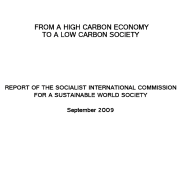
"Fairness in allocating emissions targets for all the nations of the world will be the key to reaching agreement on a new climate change treaty. One way forward could be a system based on per capita emissions, with national targets based on population, the so-called “contraction and convergence” formula created by the Global Commons Institute."
From a High Carbon Economy to a Low Carbon Society: Report of the Socialist International Commission for a Sustainable World Society -
September 2009
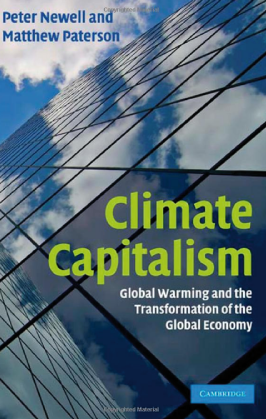
"One way of allocating emissions could be on the basis of the notion of 'contraction and convergence', This idea was developed by a little known London outfit called the Global Commons Institute, led by concert violinist and engaging orator Aubrey Meyer. With colourful diagrams and impeccable logic, Meyer's argument moved relatively quickly from the margins of the debate, dismissed as unrealistically radical to the mainstream. Contraction & Convergence meant that while overall global emissions would contract to a level consistent with the overall goal of the UNFCCC - to 'prevent dangerous anthropogenic interference with the climate system' - these emissions would converge at a common per capita level. Emissions in the North would thus decline while those in South grew, albeit at a slowed rate. By 2030, per capita emissions across the globe converge, while overall global emissions peak about 2020 and then decline."
Climate Capitalism: Global Warming and the Transformation of the Global Economy
Peter Newell and Matthew Patterson
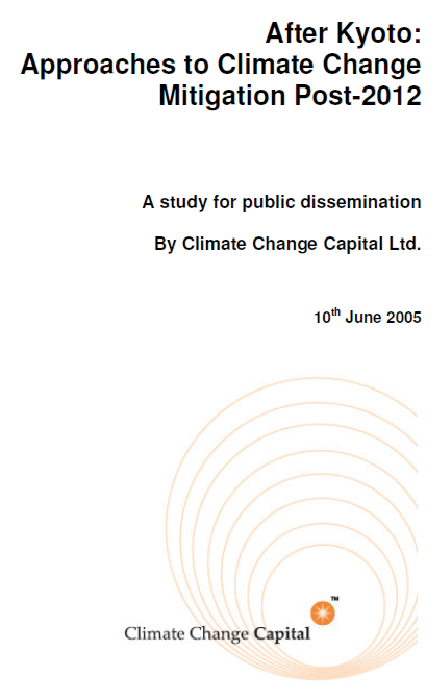
Contraction and Convergence (C&C)
This approach was developed by the Global Commons Institute and presented in 1996 at COP2 of the UNFCCC. It first involves the identification of a long-term target for global emissions stabilisation, for example such that concentrations of CO2e do not exceed 450 ppm by 2050 (Contraction). The corresponding level of annual emissions required for this stabilisation is then divided between countries on an equal per capita basis by a future date (Convergence), although this need not be the same date as that for Contraction. The key principle behind C&C, that of equal per capita emissions rights, is fundamentally sound. It seems only fair that access to a finite resource should be divided equally among those who would use it. And it is apparent that C&C may be important in determining future emissions reduction targets, at least as a means of informing negotiations about how to achieve a specific concentration of GHGs in the atmosphere. It is useful here to recall the basis upon which the UK has set its own target of a 60% reduction in GHG emissions by 2050, and that figures discussed generally in the EU tend to be consistent with a C&C approach.
After Kyoto: Approaches to Climate Change Mitigation Post-2012
A study for public dissemination By Climate Change Capital Ltd. 10th June 2005
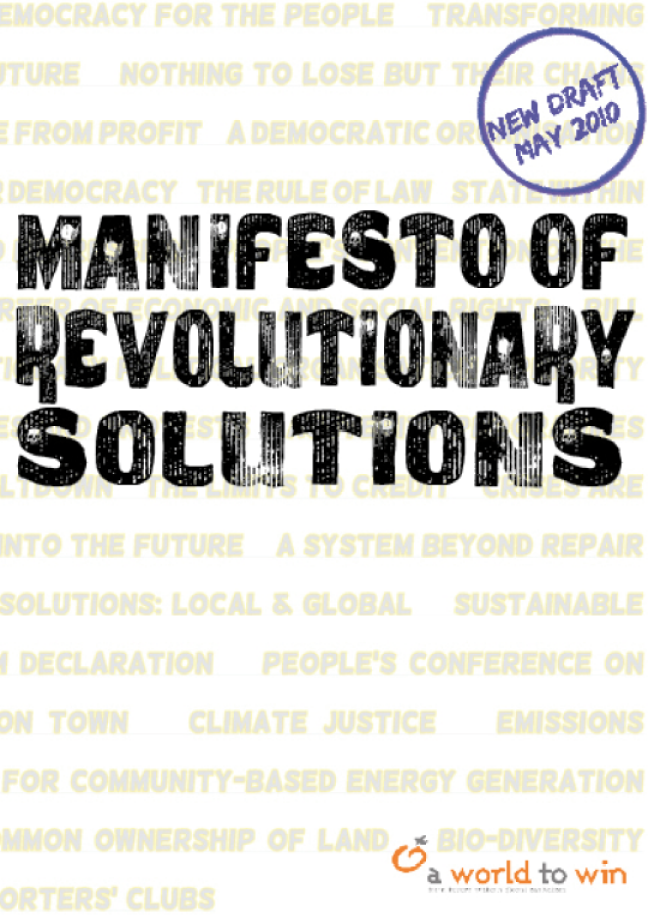
"To avoid disastrous climate change, it is estimated that carbon emissions
must be limited to no more than around 2.7 billion tonnes by 2030
annually, or a per capita allowance of around 0.33 tonnes per year.
The only equitable way of achieving this is through contraction and
convergence.
Countries like Britain need to reduce emissions to 0.33
tonnes per capita per year, while developing countries increase, until
their emissions converge up to the same level.
The concept of climate justice, which underpins the “contraction
and convergence” idea, needs to be expanded to include justice within
countries and not just between them."
Manifesto of Revolutionary Solutions
A World To Win
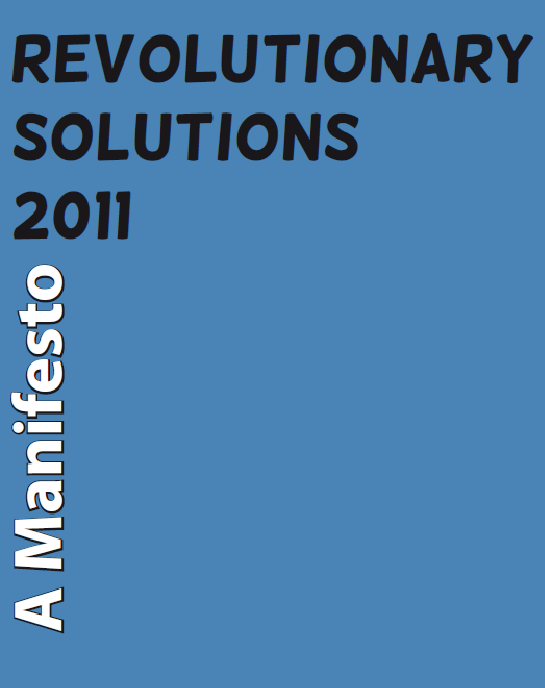
This manifesto supports the Bolivian government’s proposals for a binding global treaty recognising Mother Earth Rights. This will protect the rights of indigenous people, who live in wildernesses or other tribal lands, for all time and make the patenting of any plant species illegal. The only equitable way of halting climate change is through contraction and convergence. We need a democratic global forum to plan to halt the growth in emissions and to mitigate the impacts that are now inevitable. They would draw on all the expertise represented by climate scientists, world food and health experts and support each others’ development towards self-government and economic independence.
Manifesto of Revolutionary Solutions 2011
A World To Win
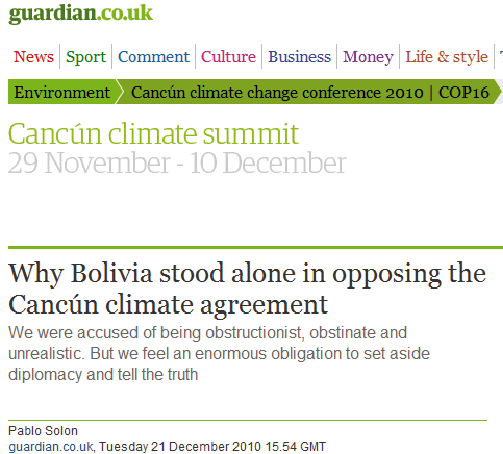
We were accused of being obstructionist, obstinate and unrealistic.
But we feel an enormous obligation to set aside diplomacy and tell the truth.
Why Bolivia stood alone in opposing the Cancun climate agreement
Ambassodor Pablo Solon of Bolivia
What GCI said in reponse
Ambassador Solon, as far as it goes, your critique was focused and fair.
Since the Kyoto Protocol to the UNFCCC was negotiated in 1997, progress towards ‘UNFCCC-compliance’ has persistently failed to secure arrangements for ‘doing enough, soon enough’ to avoid dangerous rates of climate change and major players have sustained ambivalence about the piecemeal and non-reciprocal way in which the calculation of future greenhouse gas emissions has been done.
This was again apparent in December 2010 at COP-16 - and it is to this that you rightly speak - where the ‘gap’ between the sum of the severally declared ‘Copenhagen pledges’ to control emissions on the one hand and the sum of efforts required jointly to achieve UNFCCC-compliance and no more than 2 degrees on the other is as wide as ever.
In the light of this and as we continue to cause the problem of climate change much faster than we organize our efforts to prevent it, UNFCCC-compliance now becomes progressively harder to achieve and our collective dilemma grows.
You are correct to be concerned about this.
However, Bolivia's position would be strengthened in the negotiations if Bolivia deliberately - rather than just protesting about the inadequate and piecemeal 'holding reality' of the Copenhagen Accord - aligned itself with this focused and fair rationale: -
A global climate deal based on Contraction and Convergence [C&C] can still close this 'gap' and achieve 'UNFCCC-compliance'.
Subject to the full-term global carbon ‘contraction-budget’ that is small enough to stabilise CO2 in the atmosphere at a 'safe' level - in other words UNFCCC-compliance - ‘convergence’ simply assumes each person globally is entitled to an equal share of this budget but acquired at a ‘convergence-rate’ agreed jointly by Parties to the UNFCCC. This simple expedient reconciles ‘over-consumers’ with ‘under-consumers’ and transcends the incalculable problems of assuming any further randomness and inequality of global shares.
Its not rocket science, but nor is it more of the racket that has increasingly ruined the UNFCCC negotiations to date about which you rightly remonstrate. Without rancour, C&C adds up to what's needed and not less.
With the greatest respect, please think about this. We all know know that we can't have more of what's simply not available. So if you organise like this you won't be alone anymore
Recommended (13)
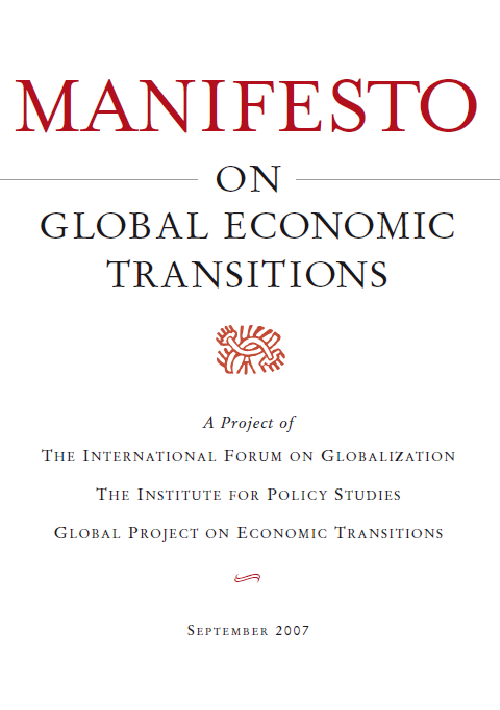
As the currently over-consuming nations of the world proceed to “power down” their energy use, and to reduce material throughputs, while lowering personal consumption levels, overall global impacts can eventually be optimized well below the maximum sustainable capacities of the planet. However, we must remain cognizant of enormous disparities among nations as to present levels of use. Many nations and peoples of the world already live at very low consumption levels; in fact far below levels that can sustain personal, family and/or community well-being. Such disparities among and within nations are often the result of prior or present colonial periods of exploitation. It is unarguable that many countries of the industrial north have achieved their excessive natural resource use by depriving southern countries of theirs, a process that continues in many places today. Recognizing this, we believe that each person and community, whether in the industrial North, or the global South, has fundamental rights to “sufficient” food, shelter, clothing, housing as well as sufficient community health and other public services, to sustain a satisfactory level of well-being beyond bare minimum survival needs. (Note: Working definitions of “sufficiency” and a “global sufficiency index” have been proposed and need further development and definition. As part of this project, we hope to soon advance a viable new clear standard.) Meanwhile, the argument is compellingly made by some Southern countries, historically disadvantaged, that they should not be asked to “power down” to the same degree as Northern countries. In the interests of survival, they may often need to increase their material throughputs, and energy use, from renewable sources; not to approach a level of excess consumption, but toward a level of “sufficiency,” well within the planet’s capacity to sustain.
Thus, the concepts of “cap and share,” or, “contraction and convergence” have emerged. As wealthy over-consuming countries reduce their activity far below present overconsumptive levels, the goal is for the poorest countries and peoples to bring their levels up until “convergence” or equity is approached. Overall, however, the convergence target must remain far below the maximum sustainable levels for all planetary material throughputs, including total energy use, thus requiring profound net reductions in all areas. To assist this process will require considerable reallocation of planetary resources, wealth and sustainable technologies from the rich countries to the poorest countries and peoples, being certain to avoid the pitfalls and corruptions of prior historic patterns of aid, also usually rooted in colonial contexts. For example, within poor countries there are sometimes very wealthy elite minorities who gained from colonialism and globalization; they are sometimes called “the north within the south.” Transfers and contributions from this wealthy class should be included in the domestic equation. (Note: There are a growing number of proposals for how such transfers from North to South might operate, several of which are mentioned in the Resources section. We do not favor any of these proposals above others at this time; all should be studied and debated as to their optimum viability.) Equally important: The interests of equity also require rapid withdrawal of giant export-oriented agricultural corporations from food growing lands in poor countries. These lands have mainly been acquired over years by a variety of unacceptable means—sometimes militarily, or with the help of corrupt regimes—and most recently via the appalling rules of global bureaucracies, including the WTO and World Bank. Lands thus alienated from local people must be returned to the control of local communities and farmers. This in itself would free millions of people to re-assume their traditional local food growing activities that sustained their communities. Ultimately, the goal must be to achieve international accords on formulas that achieve “contraction” and “convergence,” i.e., formally mandated global economic formulas that lead to overall economic “contraction”—to live within realistic planetary limits—and “convergence” at an agreed global standard of“sufficiency” for all, as planetary health and resources permit. We believe that such a transition can lead to successful responses to this crisis, increased equity within and among countries, and a renewed sense of personal and global good feeling, well-being and peace.
MANIFESTO on Global Economic Transition -
Powering-Down for the Future
Toward a Global Movement for Systemic Change: Economies of Ecological Sustainability, Equity, Sufficiency and Peace, “Less and local” -
EDITOR Jerry Mander
A Project of the International Forum on Globalization
The Institute for Policy Studies Global Project on Economic Transformations. 09 2007
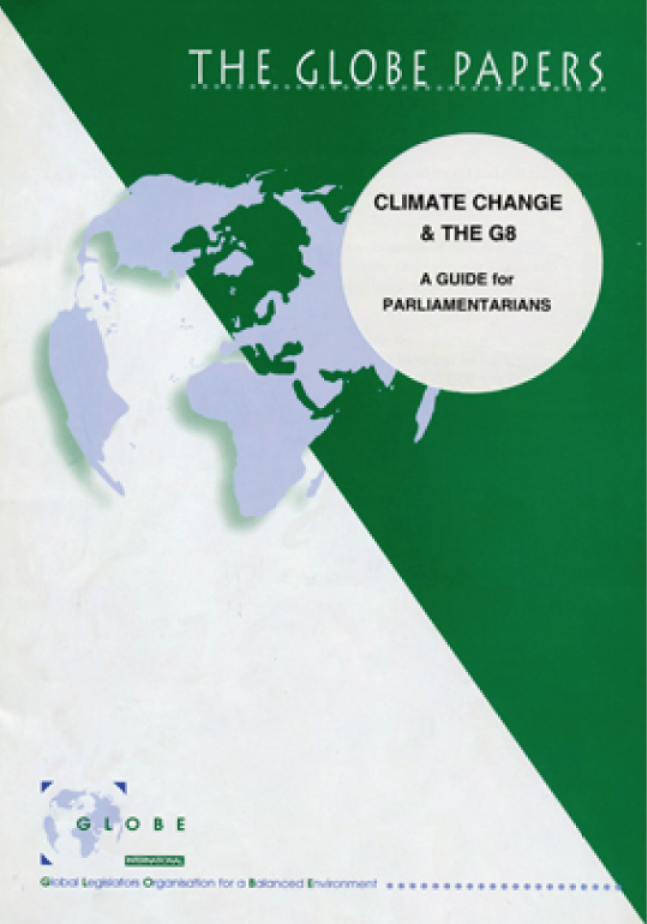
"GLOBE International adopted the "Contraction and Convergence" analysis
in May 1977. Since then, I and my colleagues have campaigned for its
acceptance. This pamphlet is a record of those efforts and provides a short
summary of the work of the Global Commons Institute (GCI) in this field. I
would like to pay tribute to all the GLOBE parliamentarians who have fought
so hard for this cause and particularly to the work of Aubrey Meyer and the
GCI team on whose brilliant analysis the campaign is based. "Contraction and Convergence" is the only practical and convincing way
forward for the world. It is vital that the 08 leaders recognize this and
commit themselves to negotiating ahead of COP4 the global solution for what
everyone accepts is the global problem."
Globe International
Climate Change & the G8

Die soziale Frage und der Lebensstil -
Was die Wachstumskritiker in den siebziger Jahren nicht in der
notwendigen Klarheit gesehen haben, ist die soziale Frage. Sie
kritisierten vor allem »Überkonsum« im reichen Norden und
»Überbevölkerung« im armen Süden. Heute kann sich die
politische Diskussion eine solche soziale Leerstelle nicht mehr
leisten. Innergesellschaftliche und zwischengesellschaftliche
Gerechtigkeit müssen integral in umweltpolitische Konzepte
aufgenommen werden. Dabei dürfte in den internationalen
Beziehungen ein neues Leitbild an Bedeutung gewinnen
– »Contract and Converge«: Die Industrieländer müssen mit
Pro-Kopf-Emissionen und -Ressourcenverbräuchen herunter,
während den Entwicklungsländern noch ein moderates Wachstum
derselben zugestanden wird, bis man auf einem globalen
naturverträglichen Niveau angekommen ist.
Grüne Marktwirtschaft -
Beiträge zur wirtschaftspolitischen Debatte
bei Bündnis 90/Die Grünen [German Green Party]
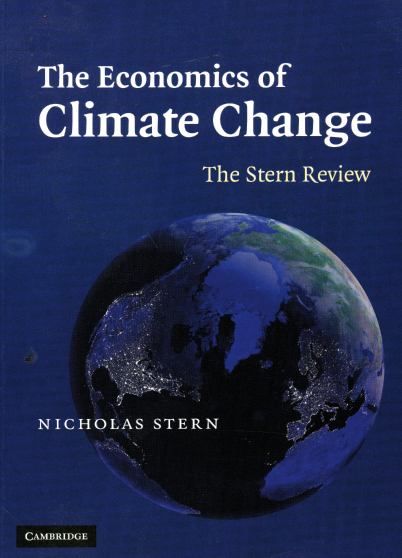
"The notions of the right to climate protection or climate security of future generations
and of shared responsibilities in a common world can be combined to
assert that, collectively, we have the right only to emit some very small amount
of GHGs, equal for all, and that no-one has the right to emit beyond that level
without incurring the duty to compensate. We are therefore obliged to pay for
the right to emit above that common level. This can be seen as one argument in favour of the ‘contract and converge’
proposition, whereby ‘large emitters’ should contract emissions and all individuals
in the world should either converge to a common (low) level or pay for the
excess (those below that level could sell rights)."
Source: Contraction and Convergence ™ (C&C)
is the science-based, global climate policy
framework proposed to the UN since 1990 by the Global Commons Institute (GCI)
The Economics of Climate Change
Nicholas Stern on C&C
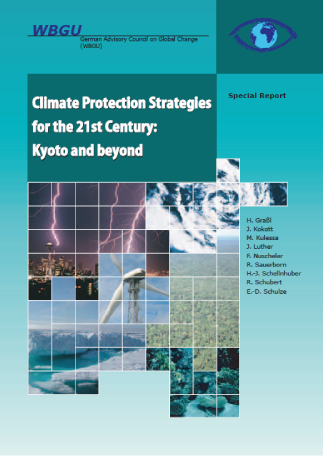
"The WBGU recommends
that emission rights for the green-house gases covered by the Kyoto Protocol
be allocated according to the ‘contraction and convergence’ [C&C] approach. The C&C model (Meyer, 2000) is based
upon a fundamentally equal right of all individuals to emit. This can be derived
from the human right to equal treatment, and corresponds to the principle
of equity under the UNFCCC (Art. 3(1)), and thus corresponds to the
egalitarian principle postulated by the Council."
"Climate Protection Strategies"
WBGU on C&C
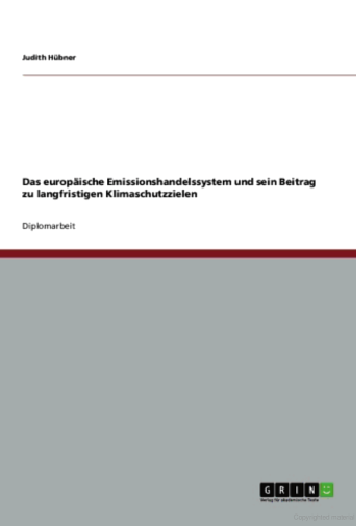
In the debate about long-term climate targets, the indicator of per capita emissions of developing countries especially in connection with the approach of the so-called “contraction and convergence” is used. This is also discussed by WBGU (see, WBGU 2003a). According to a just cause, the significant reduction of global emissions (“reducing”), and the continuous approximation of the per capita emissions of all countries (Convergence) is sought. To reduce the cost of this conversion, a functional capability of global emissions trading is required (WBGU 2003a).
The European emissions trading system and its contribution to long-term climate change goals
Judith Hubner
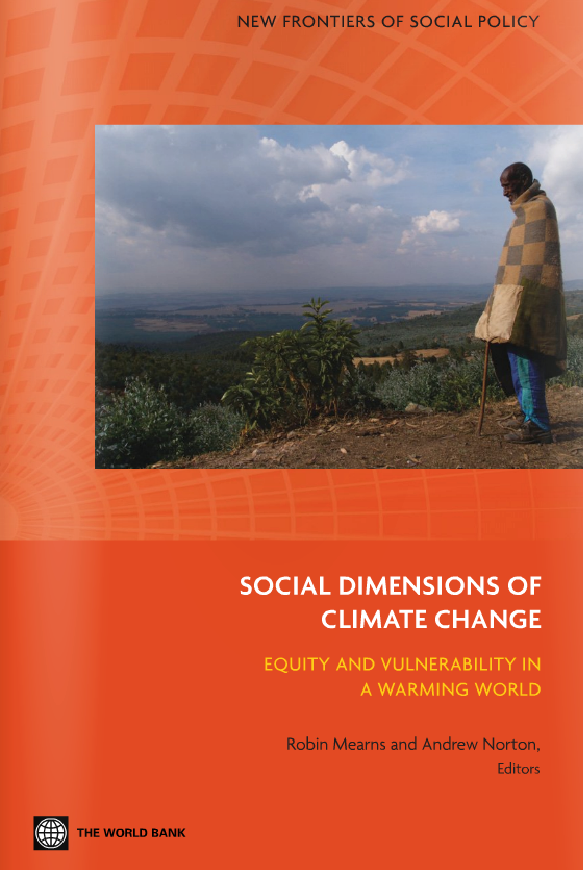
A number of principled proposals have been advanced to help address the enormously complex political question including the Contraction and Convergence approach of GCI. In such proposals emissions are normally calculated on a per capita basis to draw attention to the underlying inequities in historical and current patterns of global consumption.
The Social Dimensions of Climate Change
Robert Mearns and Andrew Morton - World Bank
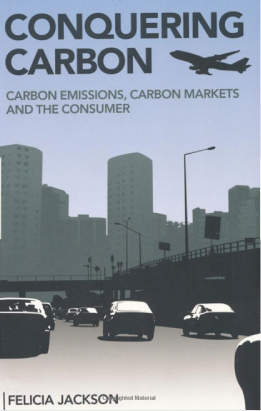
Contraction and Convergence
"One of the key issues underlying all post-Kyoto debate is how to make any international approach equitable. In 1990, Aubrey Meyer, at the Global Commons Institute, proposed the original idea of contraction and convergence as a means of achieving this. The concept was adopted during the original Kyoto discussions by India and in 1997 by the Africa Group of Nations. However, it never made it through the final Kyoto negotiations. The central concept of Meyer’s proposal is that all GHG emissions should be, capped at the level nceded to prevent dangerous climate change within a framework that includes every country and that emission rights should be allocated to each country on a per capita basis."
Felicia Jackson
Conquering Carbon: Carbon Emissions, Carbon Markets and the Consumer
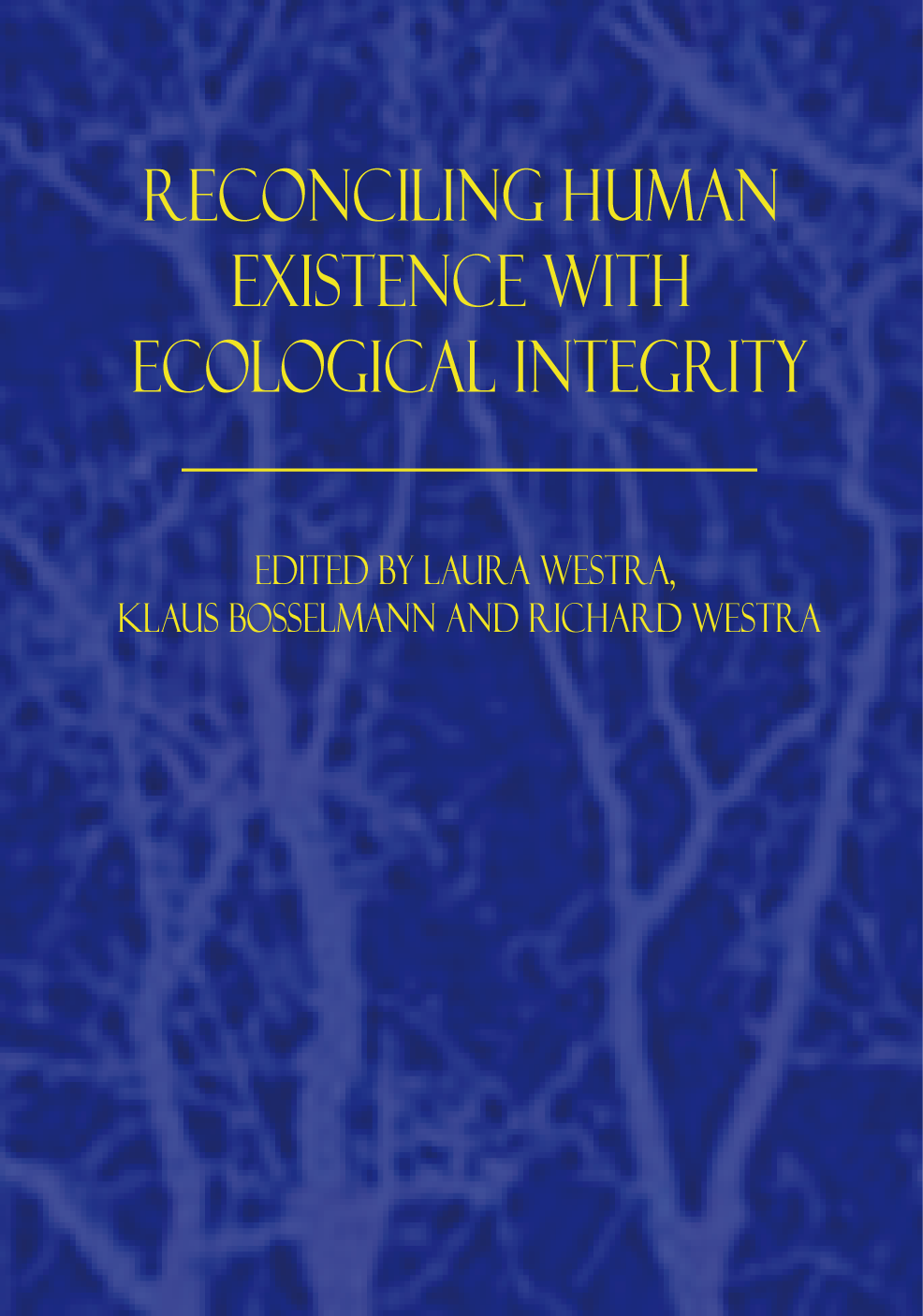
"Contraction and Convergence (C&C) is a global framework for reducing GHG emissions to a safe level. C&C was designed by the Global Commons Institute for the Intergovernmental Panel on Climate Change and the UN Framework Convention on Climate Change.12 Longtime industrialised countries, which have produced the bulk of greenhouse gases, bear a much larger burden in preventing climate change; therefore they will have to play a leadership role, both regarding drastic emissions reduction and development of low- or no-carbon technologies to provide room to poor developing countries for economic development within the boundaries of a global carbon regime. C&C is based on the science of limits and the principle of carbon justice, striving for convergence to equal-per-capita emissions rights, assisted by a medium-term, multistage approach accounting for differentiated national capacities. “Contraction” means global emissions are reduced in total over time so the concentration of greenhouse gas in the atmosphere stabilises at a level low enough and soon enough to prevent dangerous rates of climate change from taking hold. “Convergence” means that subject to this global limit, initial entitlements to emit carbon are distributed to all the countries or regions of the world with an agreed process of convergence to equalise per capita emissions entitlements across the planet. During contraction and convergence, entitlements are assumed to be tradable and hence must be capped, with quotas initially distributed to the government, which then auctions them to users who are allowed to re-sell them. C&C also could work using the carbon tax rather than cap and auction-and-trade."
Climate change and the energy crisis
Alleviating climate change
Robert Goodland and Simon Counsell
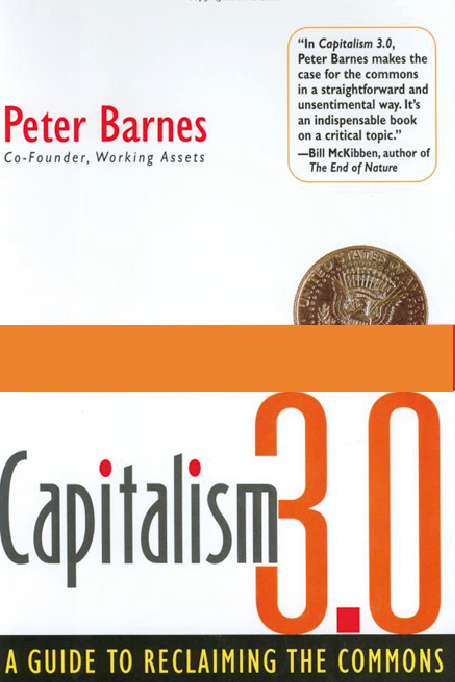
"Without an organizing principle based on equity,
it’s hard to see how any deal can be reached. Fortunately, an equitable
organizing principle has been advanced: it’s known as contract and
converge. Here’s how it would work. First, an overall reduction schedule
would be agreed to; this is the contract part of the equation. Then,
rights to the global atmospheric commons would be divided among nations
in proportion to their populations—in other words, one person, one
share. However, absolute propor-tionality wouldn’t kick in for a decade
or two, during which time the allocation formula would converge toward
proportionality. The rate of convergence would be a topic for
negotiation; the goal of per capita equity would be accepted at the
outset. Before and after convergence, poor and populous countries with
more permits than emissions could sell their excess permits to rich and
relatively underpopulated countries that are short on them. In this way,
nations could pollute at different levels, with overusers of the
atmosphere paying underusers for the privilege. Americans could, in
other words, extend our present level of carbon use for another decade
or so, but we’d have to pay poor countries to do so."
Capitalism 3
Peter Barnes
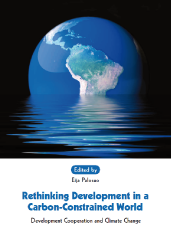
Contraction and convergence
"In order to picture which development paths might bring the world to a greater level
of resource justice, it may be useful to employ the model of ‘contraction and convergence’
(Meyer 2000). This model schematically envisages two different development
paths: one for industrial countries, one for developing countries. All nations of the
world would adjust their use of resources so that in half a century from now they
no longer overstretch the absorption and regeneration capacity of the biosphere. The
model assumes no nation has the right to a disproportionate share of the global environment,
so each one endeavours – though with individual variations – to achieve
the common goal of material and energy consumption compatible with the demands
of other countries, while remaining within the carrying capacity of the biosphere.
In the end, there is no justification for any other distribution of globally important
resources; the right of all nations to self-defined, self-determined and equal development
permits it only to make claims that are socially and ecologically sustainable at a
global level. This is what the contraction and convergence argument inspired by Kant
comes down to: institutional patterns of resource consumption should be considered
unjust if they rest upon rules which cannot in principle be adopted by all other nations.
Consequently, the model requires that the industrial countries contract – that is,
that they reduce their consumption of resources drastically. Resource justice in the
world crucially depends on whether the industrial countries are capable of retreating
from overconsumption of the global environment.
The example of greenhouses gases
may serve to illustrate the path of shrinking resource consumption. By the middle
of the century, the overconsumers must reduce by 80% to 90% the strain they put
on the atmosphere by burning fossil fuels, in order to do justice to the precepts of
both ecology and fairness. It goes without saying that this figure refers to the global
North, i.e. the consumer class in the countries of the South is placed under the same
responsibility. On the other hand, developing countries appear in the model as tracing
an upward curve in resource consumption. First, poorer countries have an unquestionable right to attain at least a ‘dignity line’ of resource consumption which should
apply to all citizens of the world. Without access to kerosene or biogas, without an
energy and transport infrastructure, it is hard to satisfy even the basic needs of modern
human life.
Moreover, each country will try to achieve different images and forms
of a prosperous society – an ambition that in turn requires access to resources such as
energy, materials and land. However, this upward movement ends at an upper line of
ecological sustainability for all; natural limits set the framework for justice. As it happens,
a number of emerging economies are already about to hit that limit in the coming
decade.
The conceptual model of ‘contraction and convergence’ thus combines
ecology and justice. It begins with the insight that environmental space is finite, and
it ends with a fair sharing of the environment by the citizens of the world."
Rethinking Development in a
Carbon-Constrained World
Edited by
Eija Palosuo for
Finnish Foreign Affairs
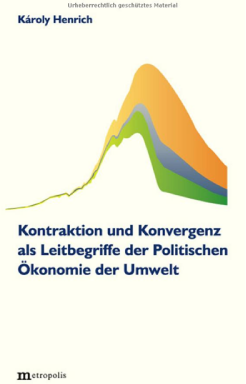
"Expansion and Divergence have characterised human use of nature throughout history. Humankind has increasingly expanded those parts of the ecosphere dominated, disrupted and destroyed by it. At the same time, levels of natural resource consumption have increasingly diverged within human societies. In response to problems emerging on this development path, the ‘Contraction and Convergence’ approach has now been postulated for the specific field of climate sustainability. This approach can in fact be applied as a general principle. An overarching environmental policy goal, it would imply reducing excessive overall levels of natural resource consumption while at the same time harmonizing per capita consumption levels worldwide. However, fundatmental structural and development circumstances - in the realms of demography, economy, technology, politics and social psychology stand in the way of realizing this concept of sustainability."
Kontraktion und Konvergenz als Leitbegriffe der Politischen Okonomie der Umwelt
Karoly Henrich
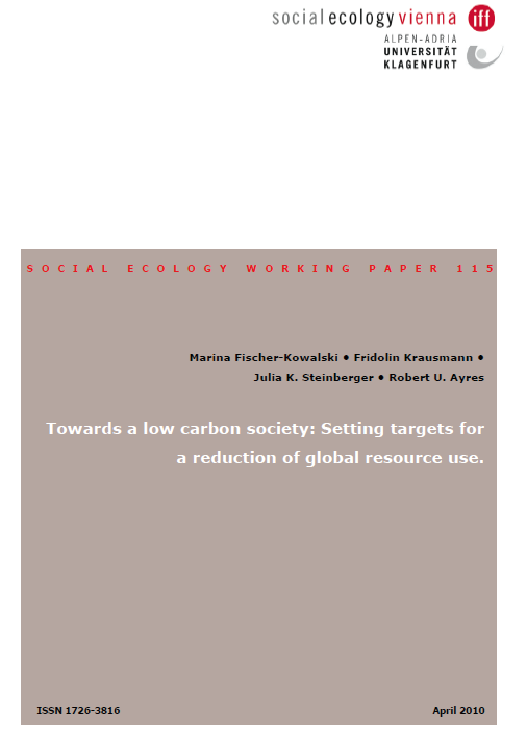
Three scenarios for the year 2050 have been
constructed and may be compared to the baseline of the year 2006. The first represents
one vision of "business as usual", and the two others are increasingly stringent versions of
the "contraction & convergence" ideas put forward in the climate debate (GCI 2003).
Towards a low carbon society: Setting targets for
a reduction of global resource use
Marina Fischer-Kowalski • Fridolin Krausmann •
Julia K. Steinberger • Robert U. Ayres
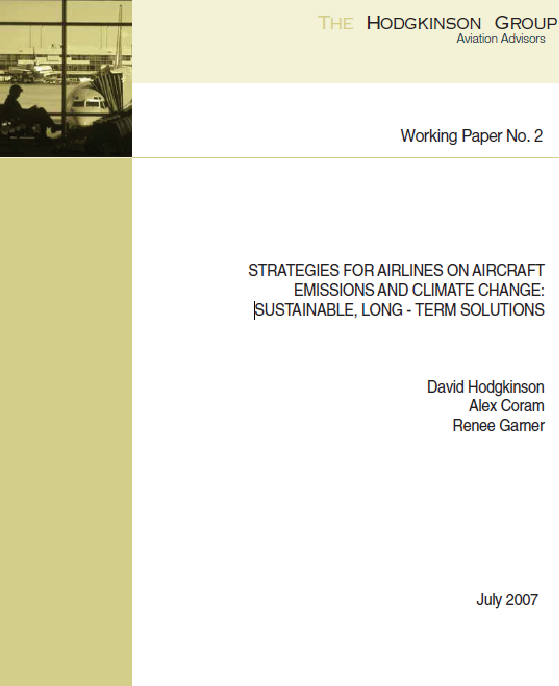
The “contraction and convergence” principle has gained increasing support as a method
for apportioning global emissions to the national level. Under contraction and
convergence, all nations work together to achieve collectively an annual contraction in
emissions. Furthermore, nations converge over time towards equal per-capita allocation
of emissions. Contraction and convergence is an international framework for
apportioning equitably a contracting global carbon dioxide emissions budget. Within this
framework, the world’s nations work together to set and achieve a global annual
emissions target - contraction. In addition, nations converge towards equal per-capita
emissions by an expressly defined year - convergence. By simultaneously ‘contracting
and converging,’ such a policy requires all nations to impose targets from the outset.
STRATEGIES FOR AIRLINES ON AIRCRAFT EMISSIONS AND CLIMATE CHANGE:
SUSTAINABLE, LONG TERM SOLUTIONS - July 2007
David Hodgkinson
Alex Coram
Renee Garner
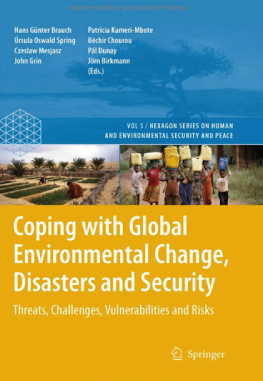
"Contraction refers to the 'full-term event' in which the future global total of greenhouse gas [GHG] emissions from human sources is shrunk over time in a measured way to near zero-emissions within a specified time-frame. The example shows 90% by 2100. Calculating future emissions contraction on the basis of concentrations and sink evidence is a non-random way of responding to the objective of the UNFCCC.
Convergence refers to the full international sharing of the emissions contraction-event, where the 'emissions-entitlements' for all countries result from them converging on the declining global per capita average of emissions arising under the contraction rate chosen. Converging at a rate to be agreed - the example shows 2030 - is a non-random way of responding to the principle of 'equity' in the UNFCCC, whilst still meeting its objective." GCI
Coping with Global Environmental Change, Disasters and Security:
Threats, Challenges, Vulnerabilities and Risks
Hans Günter Brauch (Editor), Úrsula Oswald Spring (Editor), Czeslaw Mesjasz (Editor), John Grin (Editor), Patricia Kameri-Mbote (Editor), Béchir Chourou (Editor), Pál Dunay (Editor), Jörn Birkmann (Editor)
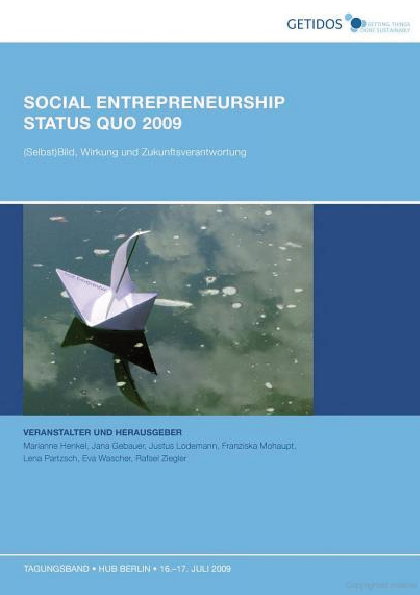
In the paradigmatic applications of a theory of strong sustainability, we propose the climate policy after Aubrey Meyer’s concept of Contraction and Convergence.
Social Entrepreneurship Status Quo 2009:
Marianne Henkel, Jana Gebauer, Justus Lodemann, Franziska Mohaupt,
Lena Partzsch, Eva Wascher, Rafael Ziegler

Carbon Contraction 2000-2100 fror 450 ppmv atmospheric concentration with Convergence equal per capita shares globall by 2030. Aubrey Meyer see
Assessing Building Performance
Wolfgang F E Preiser (Editor), Jacqueline C Vischer

"The contraction and convergence policy option proposes that equalizing global per-capita emissions across countries would ensure equity in the global climate change mitigation process. It supports climate change negotiations that aim to equalize per-capita emissions at a future date, with the levels of permissible global per-capita emissions and the different years by which the emissions have to be equalized varying according to several formulae. This would allow citizens of all countries, regardless of size or level of development, equal space in the atmosphere, and thus equal responsibility to mitigate. While there are concerns that contraction and convergence may provide incentives to high population growth rates, it is entirely feasible, and indeed widely proposed, to place a limit on population beyond which no further entitlements would be granted. Furthermore, countries with high population growth rates would still bave to provide resources for their growing populations. Therefore, the economic incentive to encourage high population growth rates may not even exist."
"Global Sustainability - A Nobel Cause" on C&C

There are many ways of looking at our ecological or carbon footprint. If you are looking at carbon footprints you could start by thinking about C02 Contraction and Convergence – C&C calculates
that given we have a global population of seven billion. If you divide that up each person
can emit up to two tonnes of CO2 a year. At that rate our planet could sustain it. But the problem
is that our population is rising and so then that fi gure would have to be reduced still further.
Right now the average person in the UK is responsible for 12 tonnes. They have less than 1% of
the world’s population but produce 2.3% of the world’s carbon emissions. In order to try and
reduce these numbers, we need to think about how much CO2 our activities produce. We can
do that by changing the amount of energy we waste on a daily basis through the energy we consume
in our homes, transportation, leisure, overconsumption and waste. All of these make up our
ecological footprints and their impact on the world.
Peace Child International

What the world urgently needs is climate justice and one of the fairest ways to make sure that happens is by adopting the idea of contraction and convergence. Put very simply, this would mean everyone on the planet having an equal right to emit equal levels of carbon dioxide and other greenhouse gases. Contraction and convergence would set a ceiling on a safe and stable amount of greenhouse gases allowed in the atmosphere and divide this by the number of people on the planet. What is good about this system is that people in poor countries who do not emit their allowance of carbon, because they use much less energy than people in rich countries, could sell their allowances to rich people who, because of their lifestyles, wanted to emit more. The result would be win, win, win! The threat of climate change would be avoided, poverty would be tackled by trading CO2 in favour of poor countries and the world would become a more equal place. To learn more about Contraction and Convergence see here. Global Footprints

An important step in making the transition to a strong sustainable consumption and production pattern is to
urgently implement radical changes in how we produce even our most basic needs, including food, shelter,
entertainment and mobility. Old, unsustainable technologies dominate our current economy and unfairly
compete with the innovations that are already made. The two century old industrial revolution in agriculture
needs to be replaced with the organic revolution currently taking place. The fossil‐based economy needs to be
replaced by a renewable energy based economy, without of course endangering food security and sovereignty.
Decentralisation and public ownership of energy and water supply is needed. Each of these transitions are
possible, the concepts and innovations exist. What lacks is a system that allows them to beat the unsustainable
technologies that are driving our societies to the edge of collapse. By implementing these radical changes, we
will radically reduce the use of our planet’s natural resources by the few who can afford them, and provide the
environmental space for all inhabitants of this planet to enjoy a high quality of life.
So we see the need for a guided long‐term contraction of the economies in industrialised nations to ensure
wellbeing within environmental limits, and to give “environmental space” for the countries that have to grow to
meet their basic needs and a minimum level of well being. A process of ‘contraction and convergence’ in the use
of natural resources is needed. Reallocation of wealth is one of the best ways for poverty eradication.
ANPED, the Northern Alliance for Sustainability,

That this House welcomes the recent decision of the Synod of the Church of England to support contraction and convergence as the overarching framework to tackle climate change; further welcomes the comments of the Honourable Kalonzo Musyoka, Minister for Environment and Natural Resources, Kenya, given at a meeting for African Environment Ministers in Nairobi in February, supporting contraction and convergence; congratulates Aubrey Meyer, founder of the Global Commons Institute, which formulated the concept of contraction and convergence, on receiving the Climate Change Champion Award made by the Corporation of London, for his work in attracting the support of many government and international agencies for contraction and convergence; and calls upon the Government to seek, during its presidency of the G8, to advance the international effort to avert the dangers of climate change by promoting the constitutional framework of contraction and convergence, which embodies the principle of equal rights to the global commons. [Tabled 21.03.2005 - Total number of signatures: 168].
Early day motion 961 - G8 and CONTRACTION & CONVERGENCE

CONTRACTION AND CONVERGENCE
An exemplary global framework
‘Contraction and Convergence’ is a strategy aimed at capping
and then reducing carbon dioxide emissions (contraction) and
by giving an equal entitlement of the capped carbon to every
adult, ensuring that all get fair shares of this capped global
carbon allocation (convergence).
Climate change, poverty and war Robin Stott
JOURNAL OF THE ROYAL SOCIETY OF MEDICINE Volume 100 September 2007

Contraction and Convergence is a proposed global framework for reducing Greenhouse gas emissions to combat Climate change. Conceived by the Global Commons Institute in the early 1990s, the Contraction and Convergence strategy consists of reducing overall emissions of greenhouse gases to a safe level where the global emissions are reduced because every country brings emissions Per capita to a level which is equal for all countries. It is intended to form the basis of an international agreement which will reduce Carbon dioxide emissions to avoid Climate change, carbon dioxide being the gas that is primarily responsible for changes in the Greenhouse effect on Earth. It is expressed as a simple mathematical formula. This formula can be used as a way for the world to stabilize carbon levels at any level. Advocates of Contraction and Convergence stress that negotiations at the United Nations Framework Convention on Climate change are governed sequentially by the 'objective' of the UNFCCC followed by its organising principles. C&C is widely cited and supported www.gci.org.uk endorsements.html The "contraction" part of Contraction and Convergence model calculates the total amount of carbon being put into the atmosphere as a 'path-integral' or a total 'contraction-event'. Future global emissions will shrink over time and the shape and extent of this will depend on the final level of atmospheric carbon considered safe, subject to the changing source-sink relationship in future as future atmospheric GHG accumulation continues.
VETERINARIANS TODAY

"There is now little doubt that climate change has become a reality. Glaciers are melting all over the world. Weather patterns are becoming more erratic. The IPPC forecasts increases of global mean temperatures of up to 5.8 degrees this century and sea level rises of up to one meter. Half the world's people live within 50 km of seashores and their lives will be severely affected by flooding. Up to a million species of plants and animals could be lost due to climate change.Are viable transitional scenarios available to deal with climate change? Can the widely acclaimed Contraction and Convergence scenario be implemented through international agreement? Can emissions trading be made to work and what are its limits? Could biological and technical carbon sequestration be part of a transitional strategy over the coming decades? Is adaptation to rather than prevention of climate change a realistic scenario?"
World Future Council

What does “Converging World” mean?
The Converging World concept is large and complex. The converging aspect derives partly from the ‘Contraction & Convergence’ principle proposed by Aubrey Meyer of the Global Commons Institute (see Schumacher Briefing No 5), which sees, across the world, an equal per capita right to emit ‘carbon’. The Converging World idea goes beyond carbon trading, although this is a fundamental aspect requiring emergency attention. It is a vision of a world where everyone has a fair and equal share of all the resources that the Earth can easily provide without jeopardising its potential to support life in all its diversity. It is also a world where everyone has a fair and equal share of, and access to, human created resources such as knowledge. The vision extends to an indiscriminate right, and equal access, to the functions of our institutions for justice, health, education and security. In this converging worldview environmental issues are inseparable from social justice.
Go Zero - The CONVERGE PROJECT

Contraction & Convergence is a concept for international agreement on greenhouse gas reduction. It has been gaining ground because it outlines a way to fight climate change that is fair and equitable for everyone on the planet. This YouTube video on C&C is from the film The Age of Stupid.
Connecting Manitobans to Climate Change Facts and Solutions
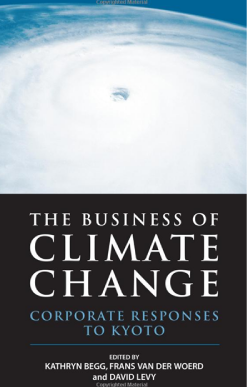
In its position paper for COP-7, UNEPFI commends ‘Contraction and Convergence’ [C&C] to policy makers as a method to tackle the risks for the financial sector, including the Insurance industry.
The Business of Climate Change: Corporate Responses to Kyoto
Kathryn Begg, Frans Van Der Woerd, David Levy
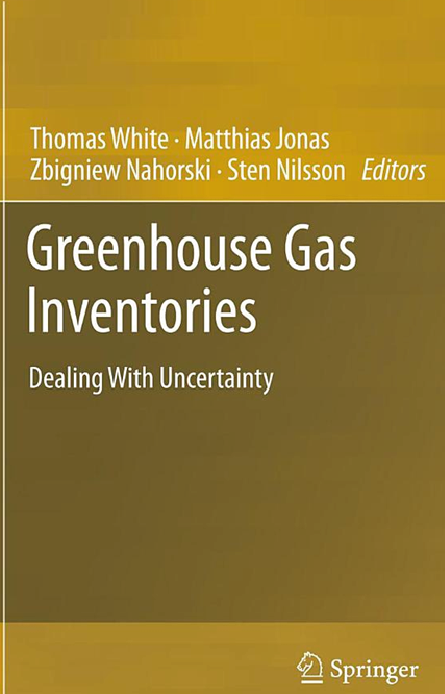
The widely discussed Contraction and Convergence proposals.
Greenhouse Gas Inventories: Dealing With Uncertainty
Thomas White, Matthias Jonas, Zbigniew Nahorski, Sten Nilsson
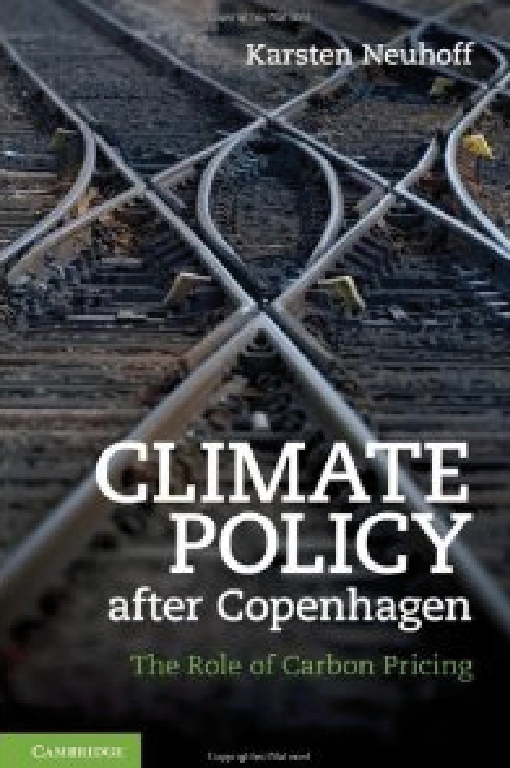
Cap and Trade schemes can only be linked if the countries have committed to firm emissions caps. In Europe, national emissions caps have been set in an interactive way, first for 2008-2012, and as of summer 2010, it is discussed whther to increase the level of emissions reductions for the period 2013-2020 from 20% to 30%. While deciding about targets in the EU ontext is a complex matter, the question arises how would negotiations be hedl if emissions-trading schmese were more widely linked? The answer depends upon the basis for the international negotiations on emissions targets. A veriety of approaches has been discussed. First, a country’s recent emissions can serve as a reference point for negotiations about the level of efforts to reduce emissions. Second equal emissions budgets can be defined per capita, combined with trading schemes, to allow countries with higher emissions levels to acquire some of the allowances from countries with lower emissions while they are reducing their own emissions levels. This is refined in a third option “Contraction and Convergence”, which envisages a gradual move from historic emissions levels towards equal per capita emissions budgets, for instance by 2050 [GCI].
Climate Policy after Copenhagen:
The Role of Carbon Pricing Karsten Neuhoff

Re-conceiving growth: contraction and convergence
The dominant development model, based on the unlimited meeting of consumer wants leads inexorably to overconsumption. Yet the continued physical expansion in the global reach of commodity supply systems means that consumers in developed countries continue to perceive
resource flows as bountiful, and develop no sense of limits to consumption. Whether as consumers or citizens, people in industrialized economies show no awareness that production
systems are ecologically flawed or constrained.
In order to achieve fair shares of the global resources available, theories of growth need to be transformed to theories of contraction and convergence, to balance the increases in energy and material use that are needed to raise living conditions among the poor against contractions among the wealthy and super-rich. There is a growing interest in ideas of ‘degrowth’ (décroissance). Degrowth is a term created by radical critics of growth theory intended to make space for alternative projects as part of post-development politics. Degrowth is (like sustainability) an ethical concept of how the world needs to change. Proponents of contraction want ‘to create integrated, selfsufficient and materially responsible societies in both the North and the South’.
Re-conceiving growth builds on longstanding arguments about the need for, and feasibility of, ‘zero-growth’, notably perhaps Herman Daly’s work on ‘steady-state economics’. Back in 1977, Daly’s ‘impossibility theorem’ pointed out that a high mass-consumption economy in the US style was impossible (at least for anything other than a short period) in a world of four billion people. Since then, lockin to progressivist growth economics has if anything deepened, and so too have the risks that sustainability thinking seeks to address. The idea of a contraction-based society poses a challenge: to find alternative models for the creation of human welfare from industry, technology and nature. Poor countries need to be able to industrialize
and grow to meet the welfare needs of their people, but they need a way of doing this that avoids the world-busting models of past industrialization. Rich countries need to see ways forward that maintain quality of life, while shedding the habits and structures that damage the biosphere and corner an unfair share of the resources that are needed by the world’s poor.
IUCN - Transition to Sustainability: Towards a Humane and Diverse World
S J Jeanrenaud W M Adams
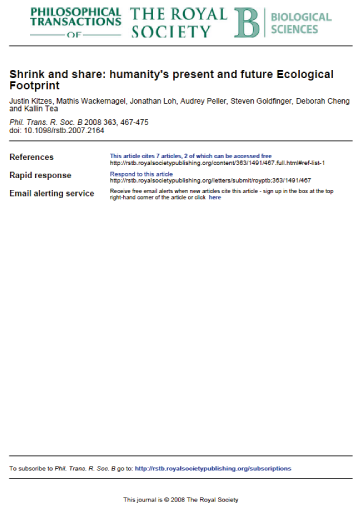
Contraction and convergence
"The current state of global overshoot highlights the need for analysis and strategy to bring the human economy within the limits of the biosphere. Similar concerns about global emissions of carbon dioxide have led to a conceptual framework for reducing these emissions known as ‘contraction and convergence’.
First described by the Global Commons Institute (Meyer 2000), contraction and convergence proposes a framework for stabilizing atmospheric carbon dioxide concentrations through two complementary approaches:
- Contraction. The need to reduce humanity’s CO2 emissions to a level that will result in the eventual stabilization of atmospheric carbon dioxide at an agreed-upon level (e.g. 550 ppm).
- Convergence. The need to collectively negotiate how this reduction in greenhouse gas emissions will be allocated between nations.
Since its initial debut, the contraction and convergence framework has gained increasing recognition and sponsorship from decision makers, particularly in Europe. Influential organizations such as the European Parliament have passed resolutions using contraction and convergence as a basic principle (e.g. European Parliament 1998)."
Shrink and share: humanity’s present and future Ecological Footprint Justin Kitzes, Mathis Wackernagel, Jonathan Loh, Audrey Peller, Steven Goldfinger, Deborah Cheng and Kallin Tea

Rallying HECA's 'Heroic Energy Conservation Army' with the 'powerful vision of 'Contraction and Convergence'.
HECA Conference May 2005

Contraction & Convergence or 'C&C'
"Minimising manmade climate change is almost certainly the biggest challenge faced by humans. Some impacts are happening right now (often in parts of the world least equipped to deal with them) because of greenhouse gases already released into the atmosphere. We have to act quickly and decisively to avoid really dangerous climate effects. Developed by Aubrey Meyer of the Global Commons Institute, the Contraction and Convergence (C&C) model is a widely accepted global framework for reducing greenhouse gas emissions (GHGs) to safe levels in a socially just way. The model provides a global ‘carbon budget’ with annual reduction targets for CO2 emissions, based on levels considered safe to avert dangerous climate change. Once in the atmosphere, GHGs can take up to 200 years to decay, so to stay within safe levels we'll have to continue to reduce, or ‘contract’ emissions year-on-year, to near zero by around 2080."
Fair Shares, Fair Choice is a campaign from Charity Sustainability South West for individuals, organisations, businesses and community groups who support the principle of ‘A globally fair and safe carbon share for everyone’

"What is Eco-affluent Convergence? Eco-affluent convergence is the merging of two ideas, eco-affluence and contraction and convergence. The term was created by Green Frontier’s founder, Craig Embleton, to describe the mechanism by which everyone can lead sustainably affluent lifestyles as we wean ourselves of our fossil fuel addiction. Eco-affluence James Martin talks about a globally sustainable civilisation in his book “The Meaning of the 21st Century”. He writes that …“we can have spectacularly affluent civilizations where we don’t use more resources than the environment can provide. I call this eco-affluence. There can be new lifestyles of the grandest quality that heal rather than harm our global ecosystem”. Contraction and Convergence Contraction and convergence is a term used to describe the mechanism for reducing global emissions of greenhouse gases which contribute to global warming. It is based on the principles of equity and survival, whereby global carbon emissions reduce as the per capita emissions across the global population converge to the same level. Contraction & Convergence is the brainchild of Aubrey Meyer, founder and director of the Global Commons Institute (GCI). The use of the word “contraction” to describe the framework by which we get to a better state goes against the hopes and aspirations of the people who will need to “contract” as it implies a lesser lifestyle. We can wean ourselves off our current addiction to fossil fuels and concurrently move to a higher level of living. Eco-affluent Convergence Putting the two ideas together, to provide sustainably affluent lifestyles for everyone on Earth that are rich in terms of everthing that actually counts, we have a mechanism called eco-affluent convergence."

The Findhorn Foundation community were privileged to attend a keynote address to open an exciting training programme, Global Climate Change and the Sustainable Energy Revolution, hosted by CIFAL Findhorn. Our dynamic May East, Chief Executive of CIFAL Findhorn, organised for Aubrey Meyer to share his address with the whole community. Meyer is best known for his strong voice on a global climate policy framework, Contraction and Convergence. This approach was first presented to the United Nations in 1990.Having not met him before, little did I realise that the violinist serenading the arriving guests was none other than our esteemed guest speaker! It was with delight that I saw him put down his violin and pick up the microphone, and the delight didn’t stop there, Aubrey continued to jump between technical climate change campaigner and concert violinist through his hour-long presentation. He told the audience about his first ahaa moment in making a commitment to saving the planet. One night when kissing his four year old daughter goodnight she asked him, was the planet really was dying? Staggered by the question, he responded by telling her don’t worry, we’ll sort it out. In that moment his life changed. It was his commitment to his daughter that spurred him on and motivated him to leave his musical career and find solutions to global climate change.
FINDHORN

An international commitment to equally sharing our right to the atmosphere, and our right to pollute it, alongside strict targets for emissions reductions, will go a long way to ensuring the viability of life on earth for future generations. The contraction and convergence mechanism works in line with the principle of sharing and provides the necessary framework for CO2 sustainability.
How to Share The World's Resources: A Proposal

However it is achieved, avoiding dangerous climate change requires industrialised nations to cut emissions by at least 80% (some estimates cite a figure of 95%) while developing nations grow their economies. One proposed global framework is contraction and convergence (C&C), which was conceived by the Global Commons Institute [GCI] in the early 1990s. C&C consists of reducing overall emissions of GHGs to a safe level (contraction), with global emissions being reduced because every country brings emissions per capita to an equal level (convergence). The first stage of implementation is a contraction budget for global emissions consistent with stabilising atmospheric concentrations of greenhouse gases at a pre-agreed safe maximum concentration. C&C is favoured by the European Commission, European Parliament and many other government bodies; and with the contraction aspect reducing total carbon emissions, it is supported by many campaigners (including George Monbiot cited above). Supporters of C&C, such as the Climate Justice Project, believe that the safe maximum is much lower than other estimates. Specifically, they believe that the IPCC's safe estimate of 550 ppmv CO2 is wrong and risks entering a phase of runaway ‘climate feedback’, with one change causing another with unpredictable results. They advocate a more precautionary approach, with atmospheric CO2 being stabilized at 350–450 ppmv. In the UK, to reach these targets, individuals' emissions would need to be cut by between 60% and 90%. GCI has information on contraction and convergence.
Open University - Setting a personal target - contraction and convergence
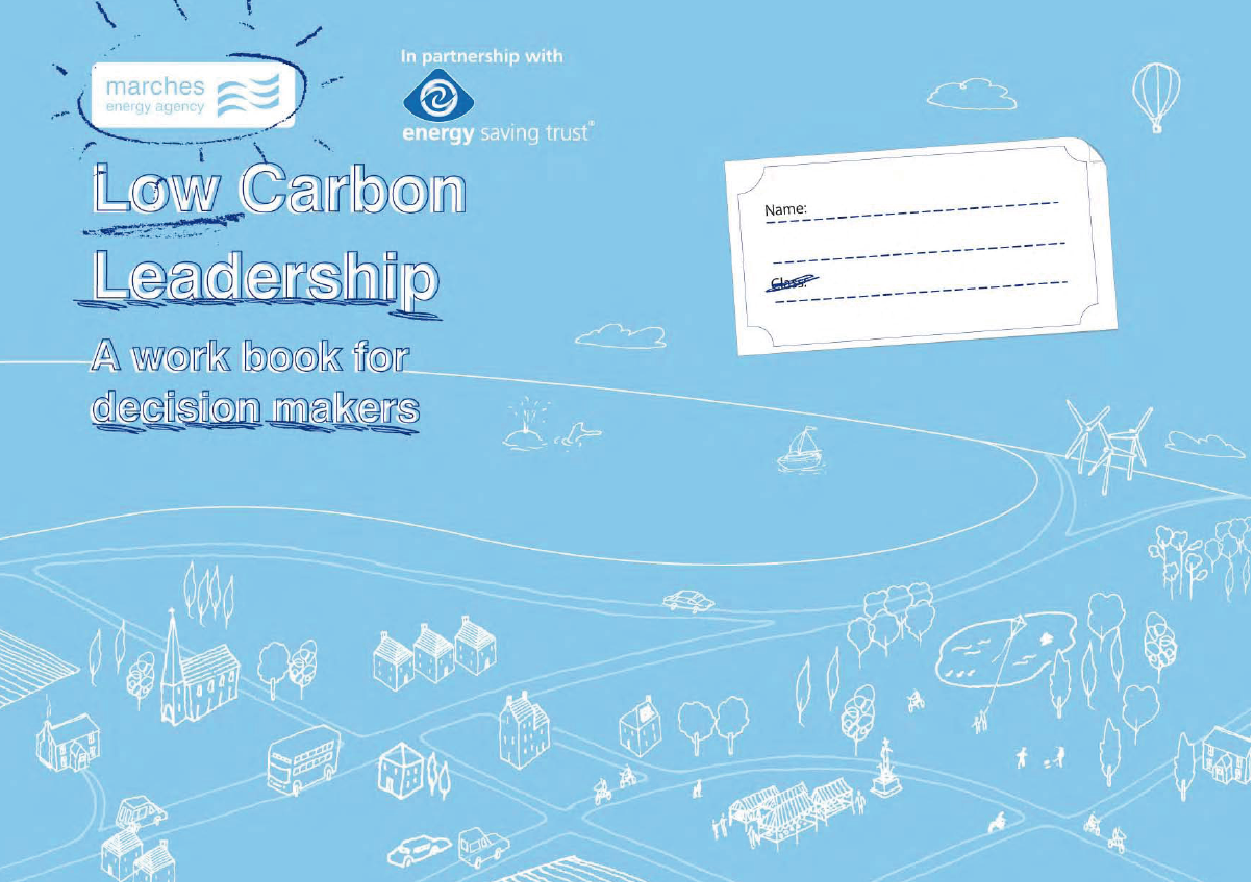
Visionary Plans
Below are some of the things you might expect to be going on across the country while you’re progressing your plans. Have a browse through to get some inspiration before writing up your first set of plans.
International -
A post-Kyoto Cap and Trade system is in place by 2009, generating £100 billion each year for low carbon investment.
Contraction and Convergence to supply the framework for long term global CO2 reduction, bringing in both developed and developing nations. Contraction and Convergence (C&C): A proposed global framework for reducing greenhouse gas emissions to combat climate change. Conceived by the Global Commons Institute in the early 1990s, the Contraction and Convergence strategy consists of reducing overall emissions of greenhouse gases to a safe level, ‘Contraction’, where the global emissions are reduced because every country brings emissions per capita to a level which is equal for all countries, ‘Convergence’.
All developing nations agree to have carbon capture and storage for all coal fired power stations.
International agreement made on reduction of deforestation.
Low Carbon Leadership
Carbon Forum
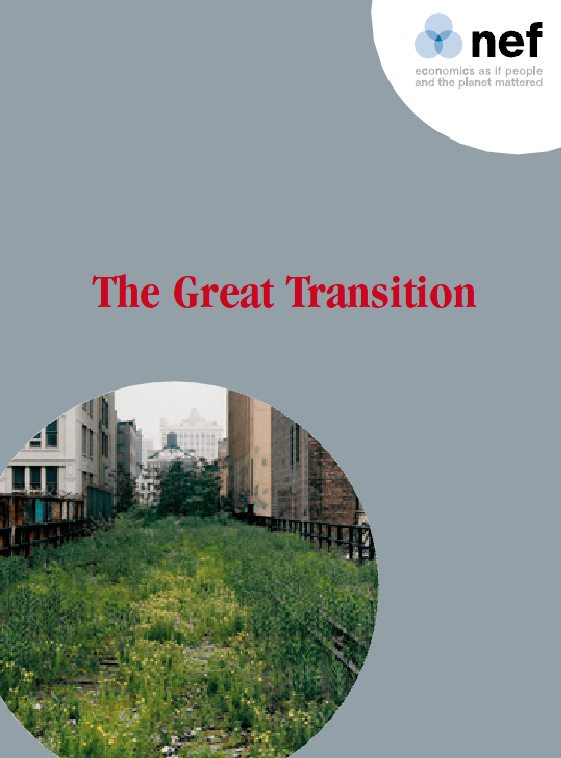
"We assume a global ‘deal’ based on ‘contraction and convergence’ to limit, reduce and maintain total global emissions within defined limits (the contraction); we also assume that the UK’s total share of emissions progressively comes into line with its fair global share (the ‘convergence’), with significant transfer payments to developing countries during the process to facilitate their sustainable development."
The Great Transition
New Economics Foundation - 2010
The Great Transition NEF Recommendation: -
"Government must agree a global fair deal on climate change with appropriate contraction and convergence targets to avert dangerous climate change, reflecting the UK’s ‘fair share’ of total sustainable carbon emissions."
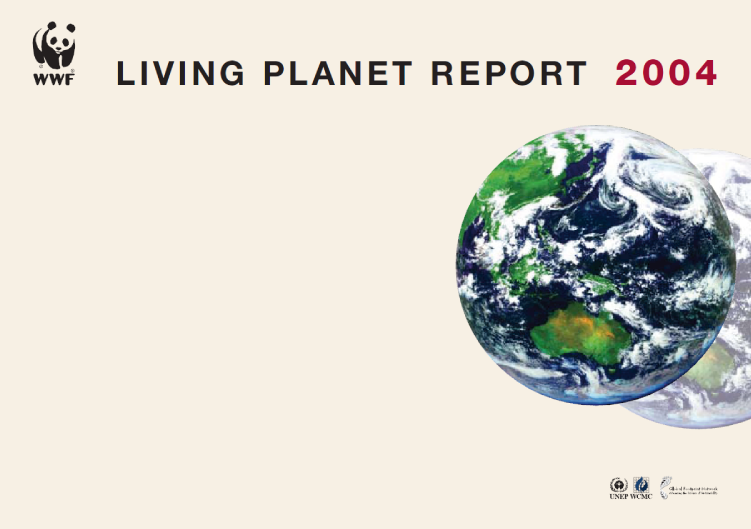
10. Contraction & Convergence and Shrink & Share
"Contraction & Convergence (C&C) as proposed by Aubrey Meyer from the Global Commons Institute (Meyer 2001) provides a simple framework for globally allocating the right to emit carbon in a way that is consistent with the physical constraints of the biosphere. The approach rests on two simple principles:
• contraction: reducing humanity’s emissions to a rate that the biosphere can absorb
• convergence: distributing total emissions so that each person ultimately gets the same portion of the “global budget”.
Although C&C focuses exclusively on CO2 emissions, which are responsible for about 50 percent of humanity’s Ecological Footprint, the C&C framework can be extended to other demands on the biosphere. The extension of C&C to all demands on the biosphere is referred to as Shrink & Share. Shrinkage would occur when nations, organizations, and individuals reduce their footprints so that consumption, production, investment, and trade activities do not exceed the regenerative capacity of the globe’s life-supporting ecosystems. Sharing
would occur if these reductions were allocated in ways considered equitable by the participants. This includes many possibilities: for example, it might imply that consumption, production, investment, and trade patterns change such that the per capita footprints in various nations deviate less and less from each other, that there is a more equitable distribution of the rights to use resources, or that resource consumption rights are more closely tied to the resources a region or nation has available. Further discussion on Shrink & Share and how this can supporterisk assessments and ecoinsurance schemes can be found in Lovink et al."
Living Planet Report WWF 2004
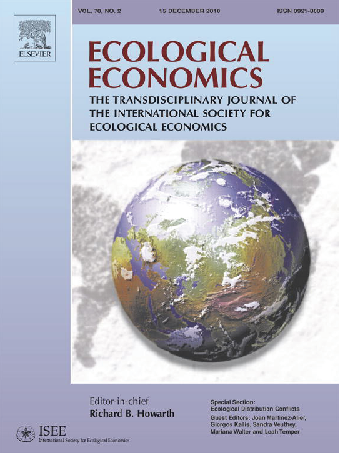
The Global Commons Institute's famous proposal calls for
a “Contraction and Convergence” (GCI, 2003) to a global mean of
carbon emissions per capita far below a ton, which would be needed
for atmospheric CO2 concentrations to stay within 450 ppm. However
if an energy or carbon threshold for human needs can be estimated,
there is no reason to believe it remains constant over time: our goal is
to question the immutability of this relationship.
From constraint to sufficiency:
The decoupling of energy and carbon from human needs,
1975–2005
Julia K. Steinberger, J. Timmons Roberts
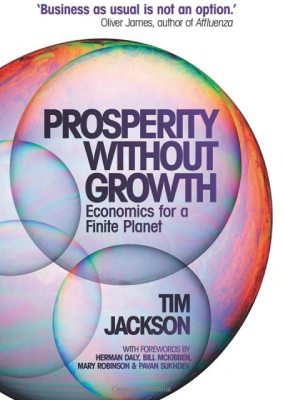
"Contraction and Convergence (C&C) refers to an approach originally proposed by the Global Commons Institute (GCI) but now widely agreed to represent a fair and meaningful way of achieving stabilization targets. Overall emissions 'contract’ to a level compatible with the stabilization target, and per capita emissions 'converge' towards an equal per capita shares of the overall emissions budget. Very simply, C&C is a way of transparently structuring future negotiations on the understanding that prosperity is governed by ecological limits on the one hand and fair shares on the other."
For more information on the approach see for example Meyer 2004, See also briefings by the Global Commons Institute, online here and here
Prosperity Without Growth: Economics for a Finite Planet
Tim Jackson

“We all have an innate sense of fairness and justice, and that is the only thing required of the ecological citizen”
How do you think the international community is going to deal with climate change in future, after the failure of Copenhagen?
Future negotiations need to be much more participatory ahead of the main conference. Above all it is crucial that the views and needs of developing countries are taken much more obviously into account. Justice is the key objective, since without it there will never be a sufficiently wide agreement on emissions reduction. 'Contraction and Convergence' is the best way to frame future agreements, since this is fair both on 'developed' and 'developing' countries. The sight of the world's most powerful countries putting a deal together at the last moment must not be repeated in future.
Interview with Andrew Dobson
Professor of Politics, Keele University (UK)

Contraction and Convergence
Climate change is driven, and its impacts are experienced, to different extents by different populations
across the globe. Total emission figures mask a huge heterogeneity in per person energy consumption
which varies widely both within national borders and between them. Equity, including equality of
opportunities for development, must therefore be the central pillar around which climate change policy
is developed. In response to these discrepancies, ‘Contraction and Convergence’ presents a framework in which
finite bio-spherical capacity is equitably shared amongst all of the earth’s inhabitants, thus placing the
importance of per capita emissions centre stage. This framework recognizes the right of the developing
world to develop economically, and that their per capita emissions will rise as a result. On the other
hand the emissions of the developed world will have to contract, with the overall objective of arriving at
an equitable global per capita emission level. Population growth is fundamentally relevant to this
model, since total population size will largely determine the cap at which total safe emissions can be
set.59 Again the complexity of this issue is crucial to grasp: in the short term, it will be in the interests of
individual countries to have large populations to capture as large a share of the global emissions as is
possible. At the global level the reverse is the case; the larger the global population, the smaller the per
capita global emission level will be.
PSN will promote increased understanding of the links between population and climate change and advance approaches, such as contraction and convergence, which mirror the PSN ‘Population – Consumption Coin’ concept by recognizing the twin rights and responsibilities of the developed and developing worlds.
The Population & Sustainability Network
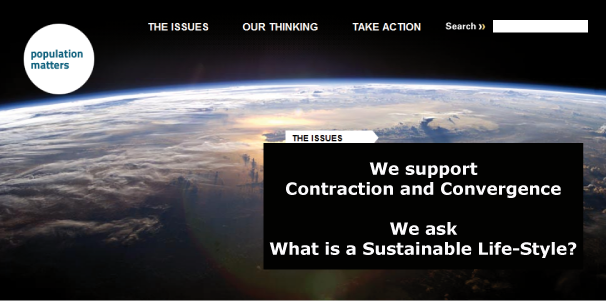
"Humanity as a whole is already consuming more resources than the earth can in the longer term provide. Therefore consumption in the richer countries will have to be reduced to allow those in poorer countries to attain a decent lifestyle. Consumption will inevitably grow in developing countries as they industrialise and urbanise, even if they take on board the need for sustainable lifestyles. It will be up to wealthier communities, principally in developed countries, to moderate their lifestyles and adopt consciously green practices. We already know that what one country considers acceptable would be considered far from acceptable to another. How should the level be set? By whom? On what criteria? The concept of Contraction and Convergence (C&C) was conceived by the Global Commons Institute in the early 1990s. The principle is that the rich should consume progressively far less resources per capita than before, while the poor consume rather more than they did, so we converge towards a common ‘fair share’ for each, which the planet can sustain. We support this principle of C&C or global equity, but it must take account of the plain arithmetic fact that every additional person reduces everyone else’s sustainable share. We have therefore insisted on including a population base year at which the ultimate target figures, notably for sustainable carbon emissions per person, should be calculated country by country. Without it, countries with high population growth would consume ever more, at the expense of those who had succeeded in restraining or reducing their numbers. We were delighted when Kofi Annan endorsed our view in his Chairman’s Key Recommendations following a conversation we had with him after a workshop we gave at the Global Humanitarian Forum in June 2009."
POPULATION MATTERS
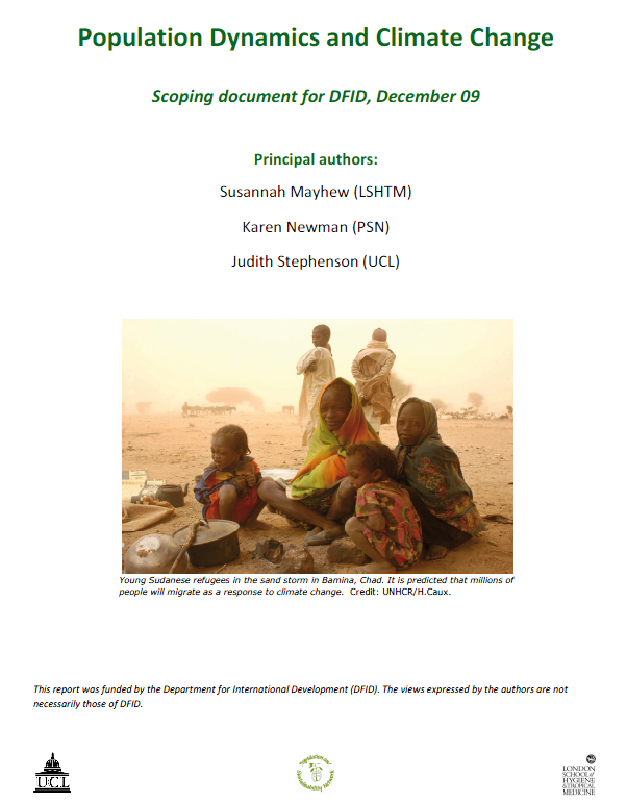
Contraction and Convergence
Climate change is driven, and its impacts are experienced, to different extents by different
populations across the globe. Equity should therefore be a maintained as a guiding principle
around which climate policy is developed. The model of contraction and convergence seeks
to develop a framework in which the finite biospherical capacity is equitably shared amongst
all of the earth’s inhabitants. Contraction and convergence describes a process whereby the
high emitters of green house gases contract the rates at which they consume fossil fuel
energy and eventually converge at a sustainable level with those who need to increase their
consumption above what they currently consume in order to achieve satisfaction of
necessary material and social needs. It has the advantage of explicitly recognizing the
developing world’s right to develop, and the likelihood that their per capita emissions will
grow as a result of this process, and of identifying a globally equitable way of managing this
within the context of a global need to reduce carbon emissions.
There is an important distinction to draw between the “luxury” and “survival” emissions
produced between different populations and the patent and urgent need to address gross
inequalities and widespread poverty experienced in many parts of the world. Addressing
human development through stimulating economic activity and other means of improving
human welfare will inevitably lead to increases in GHG emissions; there is hence an allowance
for an increase in emissions from poor populations in the contraction and convergence
model. The budget at which emissions should contract to is estimated to start at 450 CO2
ppm (at the time that Kyoto was created), which may have to be revised downwards towards
350 ppm, this however doesn’t account for any feedbacks triggered in the climate system
which might mean that the budget would have to be set even more conservatively.
The convergence date sets 2100 as an approximation to reach a globally equitable
distribution of energy consumption, though efforts should be focused on the earliest date
possible, as we move past the point of equity for equity’s sake towards the pursuit of equity
for survival.
Since this model is based on equilibrium between per capita and total rates of emissions,
population is a critical factor influencing its achievability. Population projections are central
for the subject of negotiation, and increasingly so if the medium UN 2050 projections, upon
which the contraction allowance was crafted are jeopardized as a result of a crumbling base
of global family planning services resulting in stalling rates of fertility decline in many
countries. Population is the major denominator of this model, largely determining how hard
it will be to achieve a globally feasible and equitable per capita emission figure; at the global
level, a larger world population means a lower, more difficult to achieve, number. Similarly it
could prove counter-intuitive if it became in the interest of nations to stimulate population
growth in order to increase their share of the global emissions budget in an absolute sense.
Population Dynamics and Climate Change -
Scoping document for DFID, December 09
Susannah Mayhew (LSHTM)
Karen Newman (PSN)
Judith Stephenson (UCL)
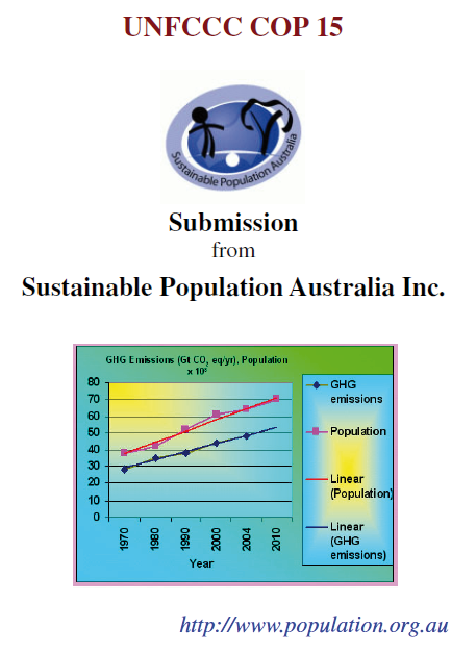
Contraction and Convergence
In the early 1990s, the Global Commons Institute developed the theory of contraction and
convergence as a means to reducing greenhouse emissions in an equitable manner. The Contraction
part lays down an annual fall of global emissions. The Convergence determines how the
entitlements to emit carbon are distributed between the countries of the world and is based on
per capita entitlements. The per capita element, however, risks encouraging countries to increase
their population to earn more entitlements. Thus, if convergence and contraction is to work, it
will be necessary to set maximum populations beyond which no further entitlements would be
gained.
Submission from Sustainable Population Australia for COP-15
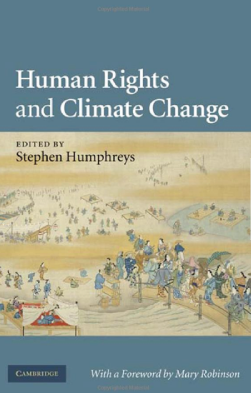
"The best known rights-based approach to climate change mitigation is the 'contraction-and-convergence' (C&C) framework presented by the Global Commons Institute (GCI) at the second Conference of the Parties to the UNFCCC in 1996. The idea, very briefly, was to articulate a longterm
mitigation strategy that, while reducing the overall amount of GHG in use over time, would also lend toward equalising GHG emissions per person on a global scale. In such a regime, as overall global emissions dropped, the fall would be more precipitate in wealthy countries, while usage in poorer countries would continue to rise for a period in line with their greater development needs - toward convergence between rich and poor countries at some point in the future. Initially GCI abjured the term ' rights' in reference to C&C, because they regarded the atmosphere as a global commons that 'cannot be appropriated by any state or person. Today, however, GCI claims that C&C 'establishes a constitutional, global-equal-rights-based framework for the arrest of greenhouse gas emissions. This new formulation appears to be in line with a general shift toward the language of rights in the climate change arena. Whereas the 'rights' at issue in models such as C&C amount to speculative universal 'rights to emit' GHGs, with no obvious basis in human rights law, they might be framed as deriving from the 'right to development', which is mentioned somewhat obliquely in the UNFCCC. Such a derivation would depend on demonstrating that 'subsistence emissions' were in fact required to achieve basic human rights, a claim that is at least plausible. The right to development is a difficult and somewhat confusing notion. In international law, it has
had, since 1986, declaratory (non-binding) status, and has been a subject of protracted and sometimes polarising discussion within the United Nations. But whatever its doctrinal status, discussion of the right to development has evolved with time, albeit rather as a space for negotiating the differing interests of different parties in the international system rather than as law in the ordinary sense. For many, particularly in countries most vulnerable to climate change, it still provides a natural hook for assessing the rights implications of climate change and the policy premises that should underlie solutions."
Human Rights and Climate Change
Stephen Humphreys
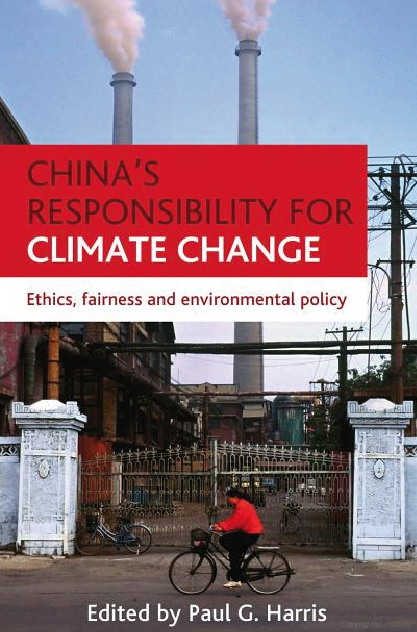
Costs of emissions reductions will adversly impact the economies of some regions more than others. Dislocating coal jobs in the poorer regions will have a greater political-economic impact than on the wealthier coastal and urban regions where the energy from coal is primarily used.
As Hu (2009) argues, it is the wealthier regions that need to make the reductions first, allowing interior and western regions to continue developing while the wealthier regions taken on the burden of beginning the process of contraction and convergence across sectors. In developing a national C&C roadmap, China’s governance will require a scalar methodology of oversight resembling the approach introduced as the climate box. Ensuring that this box is tightly sealed is a difficult problem for the Government, as emissions slippage will almost certainly occur at multiple levels. Furthermore, each of these scales of governance represents an opportunity for intervention by foreign governments, non-governmental organisations, firms and other parties that have an interest in seeing China converge its CO2 output and contract towards the nations fair share of global emissions. The primary challenges facing China will be on-site compliance and accountability of climate strategies, and the developments of more robust forms of public participation to ensure that they are measurably effective.
China’s Responsibility for Climate Change:
Ethics, Fairness and Environmental Policy - Paul Harris
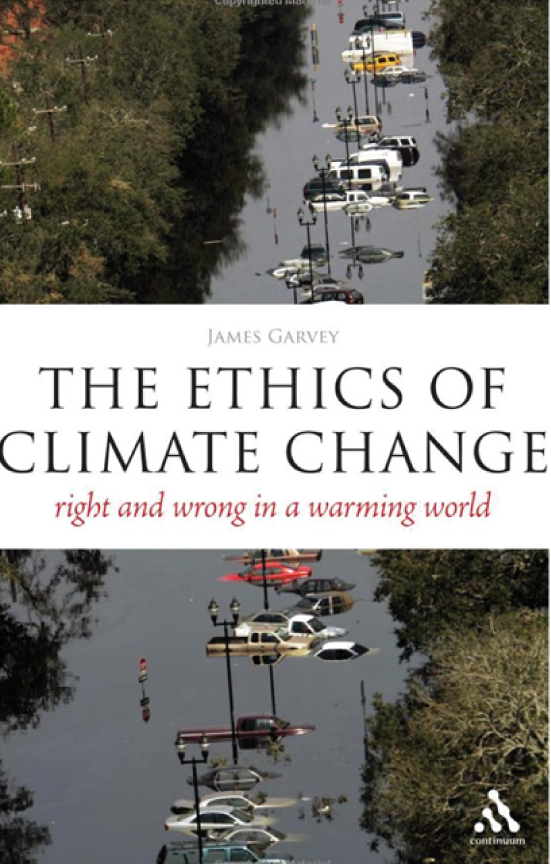
The equal per capita option is certainly a live possibility. One of the most attractive versions is called “Contraction and Convergence” (C&C), and it rightly receives a lot of attention. As the name suggests, C&C is a model with two parts. The governments of the world begin by reaching agreement on some particular greenhouse-gas target: some global limit to emissions and a date by when this limit must be reached. C&C can then determine how quickly current emissions must contract in order to achieve the target. On the way to the target date, global emissions converge to equal per capita shares. The moral adequacy of this particular proposal depends on how its parts are cashed out. The Global Commons Institute, the largest advocate of C&C, makes a point of emphasizing what we have been calling the sustainability criterion: the greenhouse-gas budget we opt for ought to be tied to our best current scientific thinking, and it ought to be extremely risk-adverse. A large emphasis is not placed on historical responsibility, but certainly C&C requires larger burdens for faster and more substantial reductions on the part of developed countries. It does satisfy at least a large part of the present capacities and entitle-ments criterion, most obviously because ilt aims towards equal per capita emissions, but also because it allows for emissions trading. Whatever else it might do, emissions trading tends to narrow the gap between the rich and the poor. Finally, C&C is at least a long way down the road to procedural fairness. Rooted as it is in the notion that everyone has equal access to the atmosphere, there's just no room for either horse trading or bullying. From a moral point of view, C&C has a great deal to recommend it.
The Ethics of Climate Change Right and Wrong in a Warming World
James Garvey
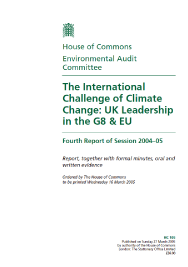
"Any framework which involves radical emission reductions would in practice
resemble the Contraction and Convergence approach advocated by the Global
Commons Institute. Indeed, in terms of domestic policy aims, the UK Government
has already implicitly accepted this approach in adopting the 60% carbon reduction
target for 2050; and it is therefore inconsistent not to adopt such an approach
internationally. We do not see any credible alternative and none was suggested in
evidence to our inquiry. We therefore recommend that the UK Government should formally adopt and promote Contraction and Convergence as the basis for future international agreements to reduce emissions."
House of Commons
Environmental Audit
Committee
The International
Challenge of Climate
Change: UK Leadership
in the G8 & EU
Fourth Report of Session 2004–05
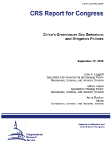
"There has been substantial literature internationally concerning “contraction and
convergence” of emissions per capita." See http://www.gci.org.uk/contconv/cc.html
"Report for Congress" on C&C
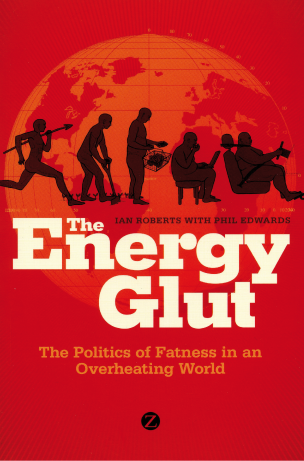
"A simple and transparent policy framework for reducing greenhouse gas emissions: If such a framework was implemented, then not only would it ensure that atmospheric levels of greenhouse gases were kept to within a safe level, but all of the steps suggested in the earlier chapter of this book would become the easy options, as they would for everyone else around us. The policy is called Contraction and Convergence and it was devised by the Global Commons Institute. The principle of contraction and convergence has been endorsed by governments, non-governmental organizations, environmentalists, scientists and religious leaden around the world. You can get some idea of the range of individuals and organizations that support the principle from the Global Commons Institute website. It reads like an international Who’s Who of the great and the good. In fact, according to the UK government, the only group that is not convinced about the merits of the approach is the public."
"The Energy Glut"
Ian Roberts on C&C
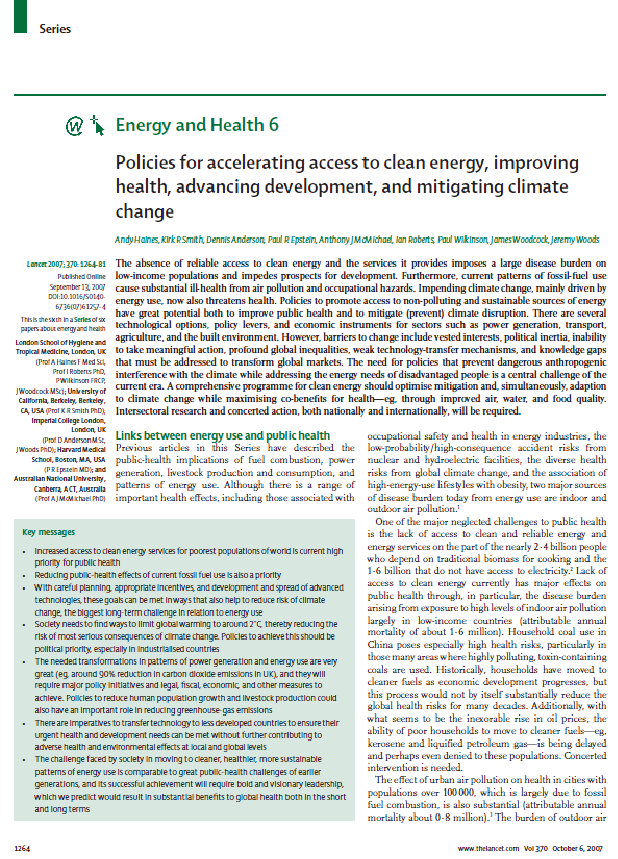
The
wide international inequalities in greenhouse-gas
emissions will need to be addressed not least because
developing nations are unlikely to accept their continued
existence and, if the world’s population had the same
per-head emissions as, for example, the citizens of the
USA, the consequences would be profound. For this
reason the concept of contraction and convergence has
been proposed, which aims for equal per-head emissions
over time. This aim requires choosing a stabilisation target
and a date for convergence in per-head emissions between
countries. Stabilisation at 450 ppm CO2e and convergence
by 2030, for example, would necessitate reductions of
per-head emissions of 90% for many developed nations
(around 95% for the USA).
Energy and Health 6, The Lancet -
Policies for accelerating access to clean energy, improving
health, advancing development, and mitigating climate change -
Andy Haines, Kirk R Smith, Dennis Anderson, Paul R Epstein, Anthony J McMichael, Ian Roberts, Paul Wilkinson, James Woodcock, Jeremy Woods
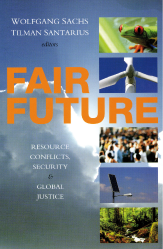
Hypotheses are shorthand for a complex reality: they reduce a dense tangle of events to a simple but comprehensible schema. In order to picture which development paths might bring the world to a greater level of resource justice, it may be useful to employ the hypothesis of 'contraction and convergence' that developed out of research on future climate policy. It concentrates on two development paths: one for the industrial countries, one for the developing countries.
Equality - at what level?
In the 'contraction and convergence' model for the future, the world's nations adjust their use of resources so that in half a century from now they no longer overstretch the absorption and regeneration capacity of the biosphere. Since no nation has the right to a disproportionate share of the global environment, each one tries - though with individual variations - to achieve the common goal of material and energy consumption compatible with the d emands of other countries, while remaining within the load-bearing capacities of the biosphere. In the end, there is no justification for any other distribution of globally important resources; the right of all nations to a self-defined and equal development p ermits each nation only to make claims that are socially and ecologically sustainable at a global level. This is what the argument inspired by Kant comes down to: institutional patterns of resource consumption should be considered unjust if they rest upon rules which cannot in principle be adopted by all other nations. This image of the future requires that the industrial countries contract - that is, that they reduce their consumption of resources. For it strictly follows from the above premises that the overconsumers should first of all step down from their excessively high level. R eso urce justice in the world crucially depends on whether the industrial countries are capable of retreating from overconsumption of the global environment. The example of greenhouse gases may serve to illustrate the path of shrinking resource consumption. By the middle of the century, the overconsumers must reduce by 80 to 90 per cent the strain they put on the atmosphere by burning fossil fuels, in order to do justice to the precepts of both ecology and fairness. Since fossil energy at present accounts for the bulk of resource budgets in the rich countri es, it has proved useful to speak of a 'Factor 10':5 which means that by mid-century these countries will have to manage on resources ten times lower than the consumption levels of 1990 - unless viable technologies for the disposal of CO2 can be developed in the meantime. W e should remember that the consumer class in the countries of the South is placed under the same responsibility. The Factor 10 formula simply defines the order of magnitude; lower or even higher targets may be set in individual cases. Although Factor 10 refers to fossil resources, the aim is also to reduce consumption of biotic resources; the cuts may turn out be less drastic, but the limited areas of land suggest that restrictions will have to apply here too. The developing countries, for their part, appear in the model as tracing an upward curve in resource consumption. First, poorer countries have an unquestionable right to attain at least the 'dignity line' of resource consumption which should apply to all citizens of the world. Without access to kerosene or biogas, without an energy and transport infrastructure, it is hard to satisfY even the basic n eeds of human life. Moreover, each country will try to achieve different images and forms of a prosperous society - an ambition that in turn requires access to resources such as energy, materials and land. But the upward movement cannot lead to an exponential curve; it should follow a linear path and tend towards convergence with the industrial countries in a common 'target corridor'. For the ascent ends at an upper line of ecological sustainability for all; natural limits set the framework for justice. The future model of 'contraction and convergence' thus combines ecology and justice. It begins with the insight that environmental space is finite, and it ends with a fair sharing of the environment by the citizens of the world.
Fair Future
Wolfgang Sachs and Tilman Santarius

An international Contraction and Convergence strategy with a reduction of the average worldwide consumption of animal products has been suggested to counteract the risk associated with the growth in meat consumption.
Challenges for Agricultural Research OECD Publishing

World Society for the Protection of Animals
WSPA’s Recommendations:
• The economy has to be conceptualized not as end in itself, but as instrumental to achieve a healthy environment and wellbeing for life on earth. Systematic recognition is needed of the social/ethical dimensions of sustainability, e.g. animal welfare.
• Food production needs to move away from industrial, multinational systems towards moderate- and small scale, humane models with local supply chains and markets.
• The rise of the consumption of animal proteins has to be halted by contraction and convergence, thus ensuring a fair share. If a modest increase in consumption of animal products by the poorest people in developing countries is the best way to improve their nutrition, this should be facilitated, and offset by greater reductions in consumption by those better off and better fed.
Civil Society Consultation Conducted by the UN Non-Governmental Liaison Service For the UN Secreatry-General’s High Level Panel on Global Sustainability

"That this House welcomes the recent decision of the Synod of the Church of England to support contraction and convergence as the overarching framework to tackle climate change; further welcomes the comments of the Honourable Kalonzo Musyoka, Minister for Environment and Natural Resources, Kenya, given at a meeting for African Environment Ministers in Nairobi in February, supporting contraction and convergence; congratulates Aubrey Meyer, founder of the Global Commons Institute, which formulated the concept of contraction and convergence, on receiving the Climate Change Champion Award made by the Corporation of London, for his work in attracting the support of many government and international agencies for contraction and convergence; and calls upon the Government to seek, during its presidency of the G8, to advance the international effort to avert the dangers of climate change by promoting the constitutional framework of contraction and convergence, which embodies the principle of equal rights to the global commons."
EDM 961 UK House of Commons
Signed by 168 MPs of all parties

"Policies such as Contraction & Convergence to solve global warming also require simultaneous implementation. As far as any future regulation of transnational corporations is concerned, surely it is difficult to see how any significant regulation could possibly be implemented on any basis other than globally and simultaneously."
SIMULTANEOUS POLICY

"On the question of global equity, which I have avoided in this
book, the reader may want to explore the Web site of the London-based
Global Commons Institute. GCI is promoting the concept of
“contract and converge” as a way to resolve the dispute between
rich and poor countries about how to share the global atmosphere.
Under “contract and converge, the per capita emissions of the rich
and poor would converge to equality over’ say fifty years. During
this time, total global emissions would contract. But because poor
countries per capita emissions are far below the rich countries’
(the average American emits six times as much carbon dioxide as
the average Chinese person), the poor countries’ emissions would
actually rise at first. Though considered a radical idea just a few years ago, contraction and convergence
is slowly gaining acceptance."
"Who Owns the Sky?"
Peter Barnes
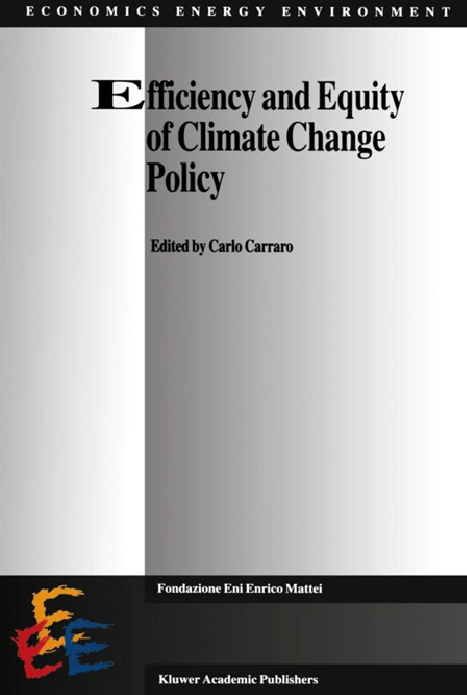
The long-term perspective with respect to the distribution of rights and their evolution over time. One example would be the so-called Contraction and Convergence scenario of the Global Commons Institute, which defines emissions permits on the basis of a convergence of per capita emissions.
Efficiency and Equity of Climate Change Policy Carlo Carraro
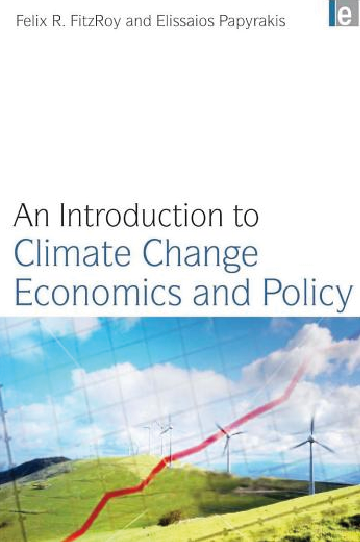
For reasons of equity, there is much support for a 'contraction and convergence' scheme, which would provide allowances for carbon emissions to all countries in proportion to their population. This also requires agreement among the main emitters that global emissions shuold be capped, by issuing a total number of permits which represents less than current global emissions. Thc cap should then decresse over time (so that we can ideally reduce our global emissions by 80-90 percent by 2050 or earlier. Developed countries would receive fewer permits than their current emissions, and would thus have to buy excess allowances from poor states that emit less than their allocated permits. This would generate a flow of aid from rich to poor countries, declining inequality and convergence of per capita income levels, though without any implication that actual equality would be reached in the foreseeable future
An Introduction to Climate Change Economics and Policy
Felix FitzRoy, Elissaios Papyrakis

"Contraction and convergence: - The long-term trend in the climate regime will probably reflect the principle that greenhouse gas emissions should converge to a common per capita level. Achieving this target would involve two steps: (i) an emissions quota is specified in accordance with an agreed level of long-term reductions in greenhouse gases in the atmosphere (contraction); (ii) emission quotas are distributed among countries in such a way that per capita emission converge by an agreed date (convergence)."
Renewable energy sources in Latin
America and the Caribbean:
two
years after the Bonn Conference
Coordinated by Manlio F. Coviello
Economic Commission for Latin America and the Caribbean (ECLAC)
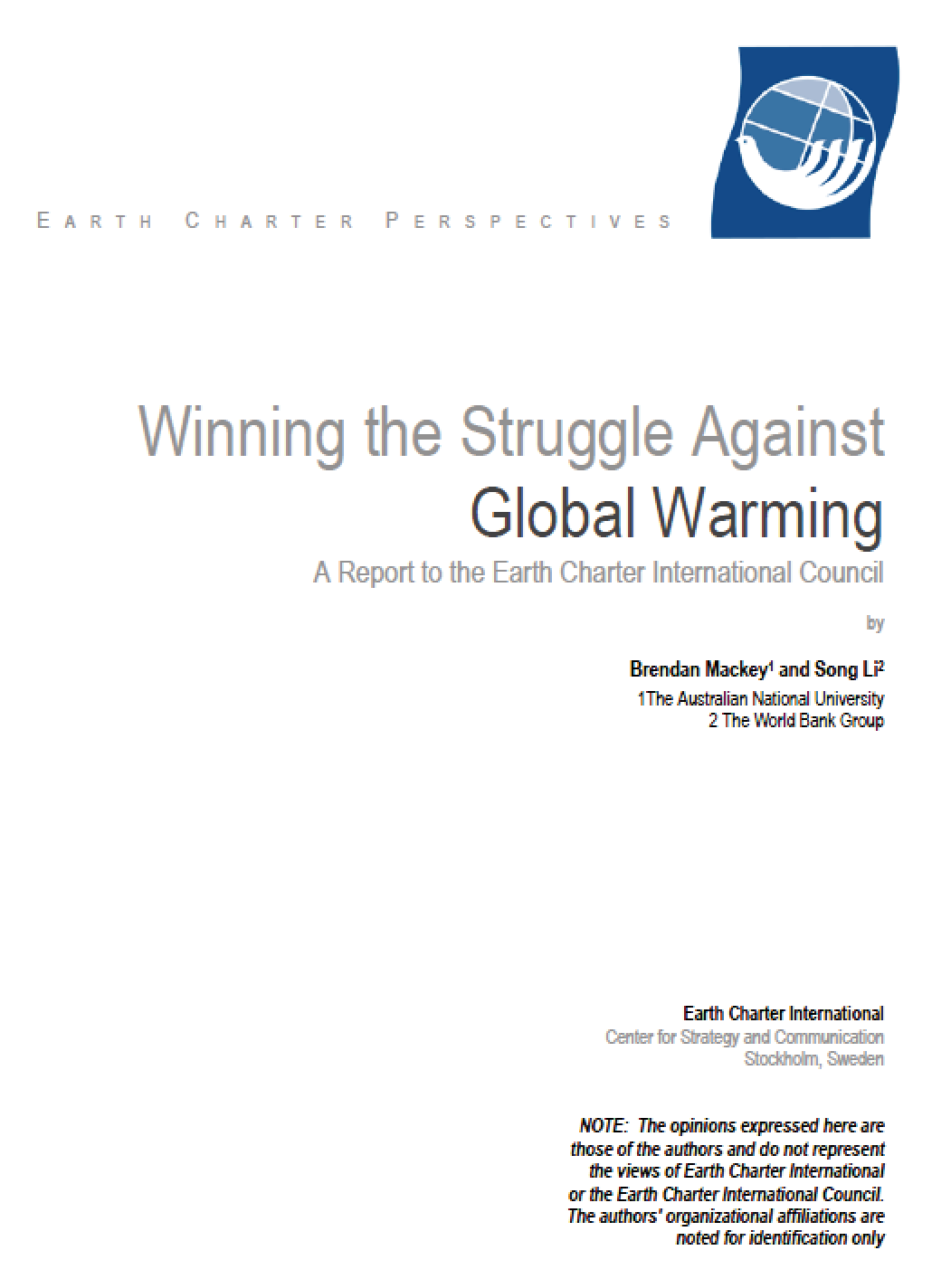
"Fortunately, the nations of the world have signed the UNFCCC – the United Nations Framework Convention on Climate Change. This commits all nations to work together in solving the global warming problem. However, national governments now need to agree on a new protocol that commits everyone to reducing the total global emissions of greenhouse gases to a safe level. But what would such a new protocol look like?
The answer is called Contraction and Convergence. "C&C" is a framework that forces governments to agree on three vital questions. First, what is a safe concentration of atmospheric greenhouse gases? Is it twice the current concentration? Half the current concentration? The present concentration? Many scientists argue a safe concentration is what it was during the 1960s. The fact is that the Earth system can absorb a certain amount of greenhouse gases without causing harmful change to the climate. So once a safe concentration is agreed upon, it is then easy to calculate the total global amount of greenhouse gas that can be emitted each year. The second question C&C forces governments to answer is, 'When will the total global emissions of greenhouse gases be reduced to the amount needed to maintain atmospheric concentrations at the agreed safe level?' In 2050? 2100? Next year? The sooner the better, of course, because the longer we wait the more harm is done to people and nature and the more expensive it becomes to fix the problem. The third important question a C&C framework would force governments to reach agreement on concerns how the permissible annual amount of greenhouse gas emissions will be allocated between nations. The simplest and fairest way is to give every person an equal share. This is called a per capita allocation, and is what C&C calls for. One important feature of C&C is that it treats nations fairly. Under this framework, the emission entitlement of people in a poor country will increase relative to what it is now, while that of people in a wealthy country will decrease. This is fair because historically poor countries have not caused the global warming problem and they need to now quickly develop to eliminate poverty. However, under a new C & C-framed protocol, all countries, including developing countries, will be committed to meeting their specified national greenhouse gas targets by the agreed date.
Once a new protocol is in place based on the C&C framework, national governments can then begin the difficult
and complex task of negotiating their way through the various implementation issues - that is, working out how to most
efficiently and fairly reduce emissions of greenhouse gases to the agreed safe level. In his report to the UK Treasury,
Nicholas Stern, former Chief Economist of the World Bank, argued that international co-operation to solve the global
warming problem must cover all aspects of policy to reduce emissions including pricing, technology, the removal of
behavioural barriers, as well as action on emissions from land use. C&C does not solve all these problems, but
provides a framework for their negotiated solution." Details on the Contraction & Convergence framework can be found at the web site of the Global Commons Institute.
"Winning the Struggle Against
Global Warming
A Report to the Earth Charter International Council"
by
Brendan Mackey and Song Li
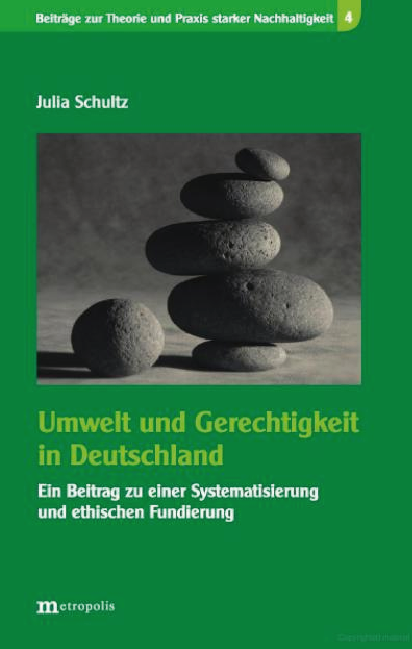
The special replacement value of the C&C approach is that the principle of precaution and equity by income (ability) and emissions (responsibility) is differentiated and the historical emissions are included.
Umwelt und Gerechtigkeit in Deutschland
Julia Schultz
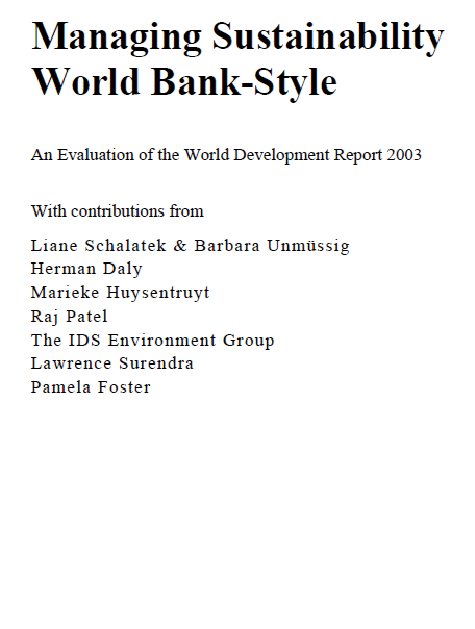
The Very Global: Climate Change - The World Development Report is to be commended for its recognition that climate change poses major threats to developing countries including serious risks of catastrophic and irreversible climate and ecosystem disruption. While the WDR authors propose switching to zeroemissions energy sources, a more energy-efficient long-lived capital stock, and increasing incentives for agricultural intensification and forest conservation, etc., they duck the vital debates on equitable global institutional arrangements and approaches to achieve them.
In light of a widely acknowledged impossibility of solving the global warming problem with uncoordinated market-based activity, what is a proper constitutional basis for solving the problem on the basis of precaution, prevention and equity, as required by the UN Climate Change Treaty? Aubrey Meyer of the Global Commons Institute argues that “Contraction and Convergence” (2000) is logically the only way of resolving this set of problems.
Managing Sustainability World Bank-Style
An Evaluation of the World Development Report 2003
Liane Schalatek, Barbara Unmüssig, Herman Daly, Marieke Huysentruyt
Raj Patel, The IDS Environment Group, Lawrence Surendra, Pamela Foster
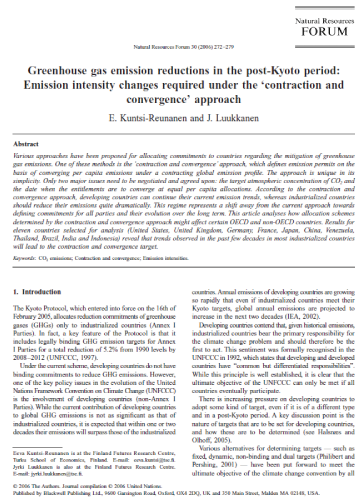
"Various approaches have been proposed for allocating commitments to countries regarding the mitigation of greenhouse
gas emissions. One of these methods is the ‘contraction and convergence’ approach, which defines emission permits on the
basis of converging per capita emissions under a contracting global emission profile. The approach is unique in its
simplicity. Only two major issues need to be negotiated and agreed upon: the target atmospheric concentration of CO2 and
the date when the entitlements are to converge at equal per capita allocations. According to the contraction and
convergence approach, developing countries can continue their current emission trends, whereas industrialized countries
should reduce their emissions quite dramatically. This regime represents a shift away from the current approach towards
defining
commitments for all parties and their evolution over the long term. This article analyses how allocation schemes
determined by the contraction and convergence approach might affect certain OECD and non-OECD countries. Results for
eleven countries selected for analysis (United States, United Kingdom, Germany, France, Japan, China, Venezuela,
Thailand, Brazil, India and Indonesia) reveal that trends observed in the past few decades in most industrialized countries
will lead to the contraction and convergence target."
Greenhouse gas emission reductions in the post-Kyoto period:
Emission intensity changes required under the ‘contraction and
convergence’ approach
E. Kuntsi-Reunanen and J. Luukkanen
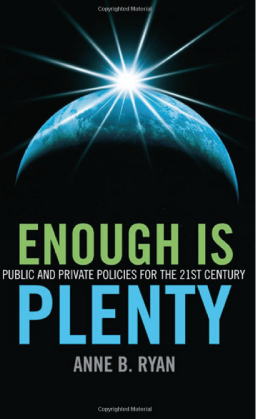
"A Contraction and Convergence framework of global quotas has the potential to contribute highly to global justice. The recent “make poverty history” movement has demonstrated a moral awakening and a will among the affluent to see justice created worldwide. But with this, as with so many other things, individuals cannot create new systems. Global quotas can create new sytems and new forms of wealth and ensure that wealth is evenly pre-distributed to all citizens of the globe. The trading of quotas brings money to poor countries as a right, not as aid. By insisting on equity, Convergence addresses the objections of “less developed” economies to paying for the damage caused by the developed affluent communities. Poor and vulnerable countries and communities are most at risk from the climate change that results from global warming, even thought they are least responsible for causing the problem. And those who are already cash-poor have fewer immediate resources for escaping from or coping with the effects of climate change. Trading in quotas is a way to create a rights of greater social justice."
"Enough Is Plenty: Public and Private Policies for the 21st Century"
Anne B Ryan
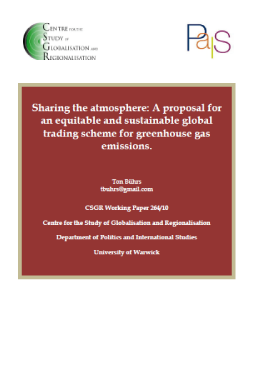
The ‘Contraction and Convergence’ (C&C) approach, which also assigns, in principle, an
equal per capita ‘right’ to GHG emissions to all people, and expects emissions of all
countries to converge to that level by a set date, can be seen as an application of the ES
approach. (Kuntsi-Reunanen and Luukkanen, 2006; Meyer, 2000; Najam, et al., 2003;
Pearce, 2003). Although initially dismissed as idealistic, there are signs that its political
acceptability is growing, in part because there seems to be no other way to bring
countries like China and India into the fold of a global climate change regime. Many
political and business leaders, including the German Chancellor Angela Merkel, have
expressed support for the adoption of a global agreement based on the Contraction and
Convergence model, recognising that, in global political terms, it is the most realistic
basis for forging international consensus on a post-Kyoto climate change agreement
(Global Commons Institute, 2008; Spiegel Online International, 2007).
Sharing the atmosphere: A proposal for
an equitable and sustainable global
trading scheme for greenhouse gas
emissions
Ton Bührs
University of Warwick
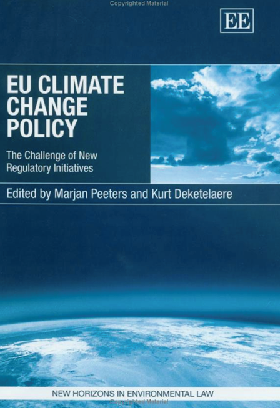
There are a number of proposals in the market. These include Contraction and Convergence [see Aubrey Meyer 2000].
Eu Climate Change Policy: The Challenge of New Regulatory Initiatives
Marjan Peeters, K. Deketelaere
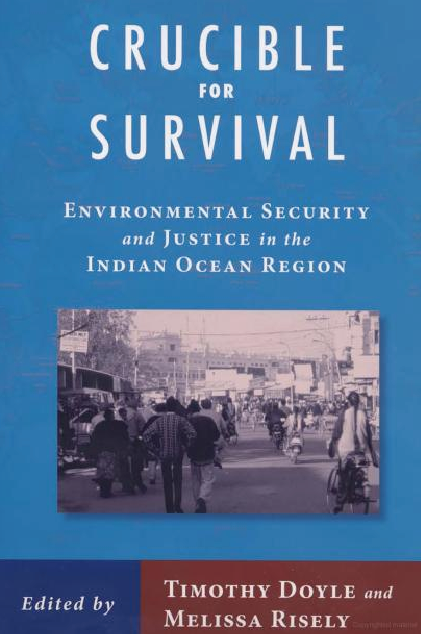
Sharing the world's future emissions "budget" (that is the level of emissions that are sustainable) equally. This type of entitlement comes from the Contraction and Convergence model. Under this approach, the world would have to agree on what would be the upper limit of atmospheric corbon concentration which can be considered acceptable, and by which year this conce ntration should be achieved, then distribute the resulting cubon budget equally between all people and establishing a per capita emissions target, or entitlement, which all countries will agree to converge on.
Crucible for survival: environmental security and justice in the Indian Ocean Region
Timothy Doyle, Melissa Risely
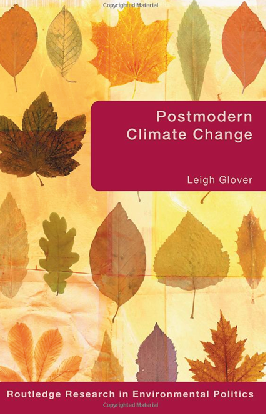
The London-based Global Commons Institute has proposed per capita allocations on what the Institute co-founder Meyer has called Contraction and Convergence. Meyer (2000) proposes that all nations should converge on a
uniform per capita carbon dioxide emission rate at which atmospheric greenhouse gas concentrations are stabilized, which entails great reductions by citizens of high emissions nations and slight increases by those inhabiting the lowest emissions nations. Per capita 1evels are pegged at the populalion
levels of a base year, neutralizing any aloocations benefits gained by allowing population to rapidly increase.
Postmodern Climate Change (Routledge Research in Environmental Politics)
Leigh Glover
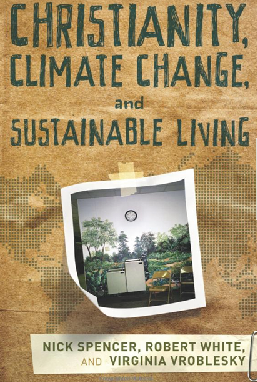
Contraction and Convergence, a model devised by Aubrey Meyer [see figure 7.3].
Christianity, Climate Change, and Sustainable Living
Nick Spencer Robert White Virginia Vrodlesky
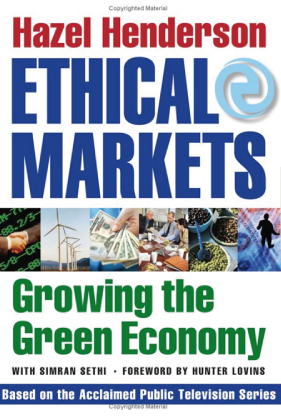
"Colin Challen, chair of the All Party Parliamentary Climate Change Group in Britain, in a speech on March 28, 2006, called for the Contraction and Convergence plan of the Global Commons Institute based in
the UK, (www.gci,org.uk), which calls for globally shared “emission
rights" for every man, woman, and child, so that poorer people could sell theirs to the richer thereby converging on equitable reductions of CO2."
"Ethical Markets: Growing the Green Economy"
Hazel Henderson

"Contraction and convergence" - "Given the obvious shortcomings of an immediate "equal per capita allocation of emission rights that would be compatible with scenarios leading to stabilising GHG concentrations at low levels, their proponents usually see it as a longer-term objective (Meyer, 2000). Allocation for near-term targets would thus be an interpolation between current emission levels and a longer-term equal per capita allocation."
OECD "Beyond Kyoto" Energy Dynamics and Climate Stabilization
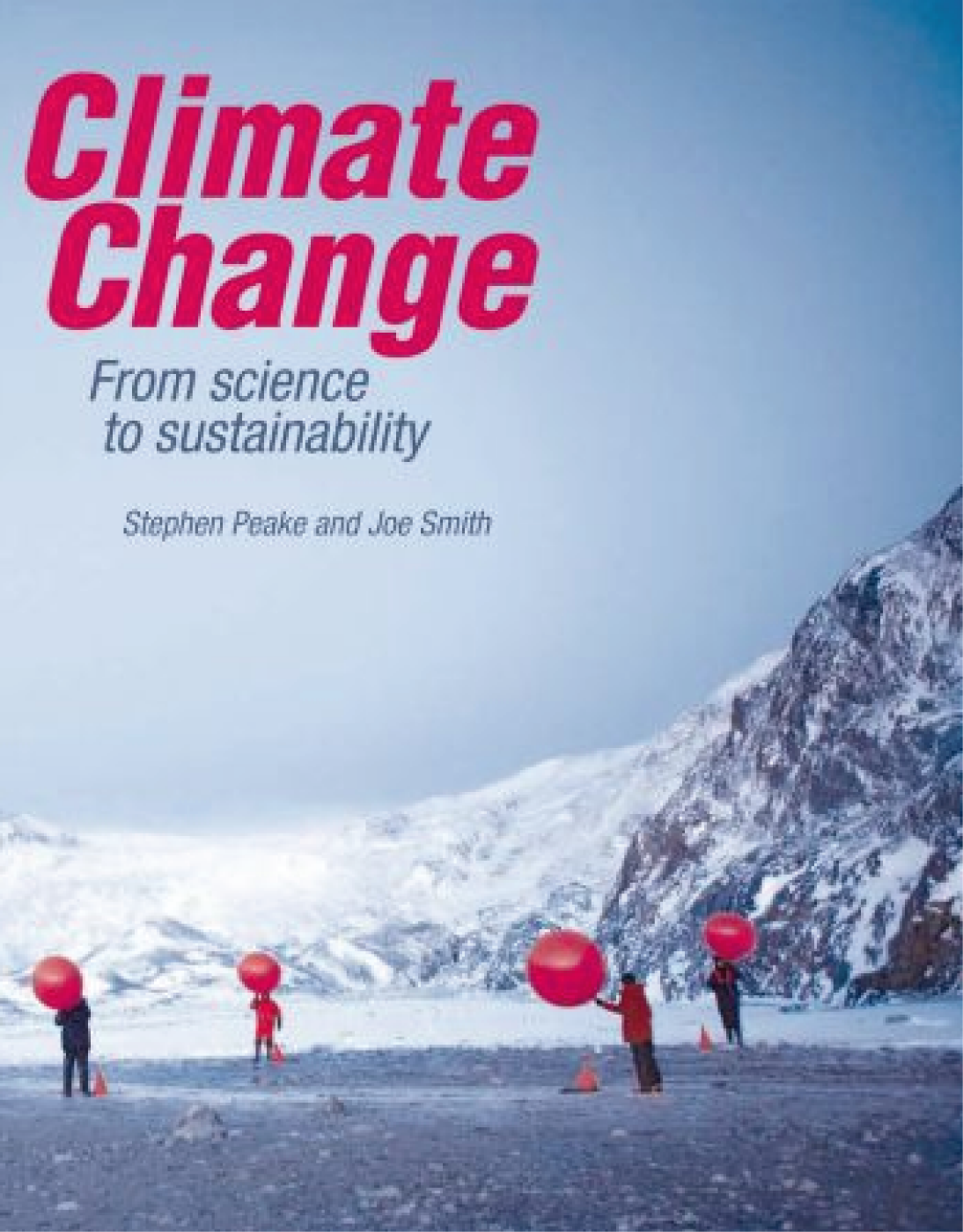

"Contraction and convergence" - "One way of ensuring climate equity or justice assumes equal rights to the global commons - that is the oceans, Antarctica, space and the atmosphere. One influential example of this way of thinking is the Contraction and Convergence approach. In this case, the goal is to see net aggregate emissions decline over time below some maximum threshold level that stabilises greenhouse gas concentrations with per capita emissions of Annex I and Non. Annex I countries arriving at equality. A key assumption within this approach is that international climate change agreement should be based on the equitable distribution of rights to emit greenhouse gases. It is interesting to note that the idea did not come from a well-resourced international NGO or one of the international agencies, but was forced on the climate-change negotations by the determination of a few campaigners like Aubrey Meyer, a former classical musician. With some savings, a suitcase, a laptop computer, some support from friends
he toured the climate-change negotiations to press his arguments. He and his colleagues could be seen as the Robin Hoods of climate negotiations from the 1990s onwards."
Climate Change - from Science to Sustainability:
Stephen Peake Jo Smith OUP
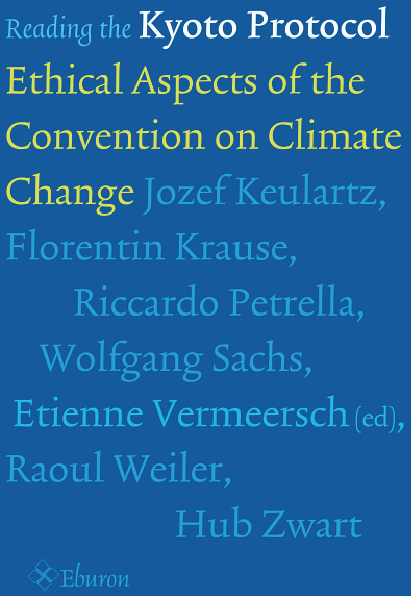
WHOSE ATMOSPHERE?
The IPCC low concentration scenario results in a CO2 concentration of 450 ppmv CO2 and a total greenhouse gas concentration equivalent to about double pre-industrial levels. TIlis would produce a long.term temperature increase of about 2.5·C at the present best estimate of climate sensitivity. However, it is difficult to maintain that such a target would be tolerable with respect to the human rights of considerable sections of the world population. A lower target is required. taking into account not only
the aggregate cost of dimate change mitigation, but also protection of the inalienable livelihood rights of la rge numbers of world cit izens. The Climate Action Network has therefore called for a target which keeps the global mean temperature increase below 2”C above pre·industrial levels, with the temperature being reduced as rapidly as possible after the time that it peaks. Such a target is unlikely to be ‘safe”, but the probability of a large scale dangerous change would be lowered for most regions.
So far, both Northern and Southern governments - apart from the Island States - have shown little interest in defining low danger emission caps in the climate negotiations. All parties disregard the fact that when it comes to capping emissions, the choice is between human rights and the need for affluence. The task of keeping the temperature rise below 2’C appears too large, and too threatening to the economic interests of consumers and corporations. In particular, it still seems to have escaped the
attention of Southern countries that dimate protection is of the utmost importance for the dignity and survival of their own people. It is time they become protagonists of climate protection, because climate protection is not simply aoout crops and coral reefs, but fundamentally aoout human rights.
The point of convergence of North and South on equal emission levels cannot be achieved at the expense of contraction , i.e. the transition to globally sustainable levels of emissions. Once again, sustainability gives rise to equity.
Indeed, the vision of "Contraction and Convergence” combines ecology and equity most elegantly; it starts with the insight that the global environmental space is finite, and attempts to fairly share its permissible use among all world citizens. taking into account the
future generations as well.
Ethical Aspects of the Converntion on Climate Change
Wolfgang Sachs
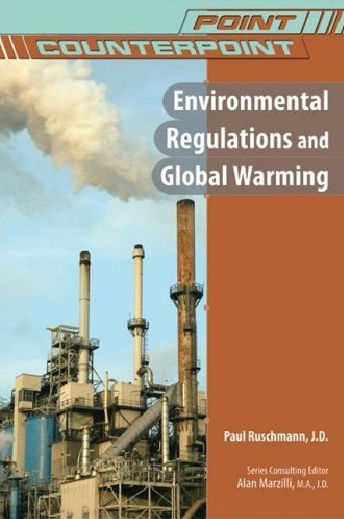
In 1990, a group of activists led by Aubrey Meyer founded the Global Commons Institute [GCI]. Its objective is to find a solution to global warming that is fair to all inhabitants of the Earth. A GCI publication, "Contraction and Convergence: A Global Solution to a Global Problem", states:
"Because everyone - regardless of status - is now increasingly vulnerable to the impacts of climate change, the rich have little choice but to share the burden of contraction fairly." The GCI presented its original agenda to the Second World Climate Conference in 1990. Later, at the urging of the IPCC, it developed a plan that is now known as "Contraction & Convergence" (C&C). The goal of C&C is to reverse the current state of affairs in which industrialized countries account for a growing share of emissions. Developing countries suffer most
of the effects of global warming and the two sides cannot agree on how to so solve the problem. The Institute observed, “We consider that a failure to face and secure a global commitment of this kind will result in a perpetual stalemate in the international political process to the extent that the agreement and delivery of global abatement targets will become less and less possible."
Environmental Regulations and Global Warming
Point/Counterpoint:
Issues in Contemporary American Society - Paul Ruschmann Alan Marzilli
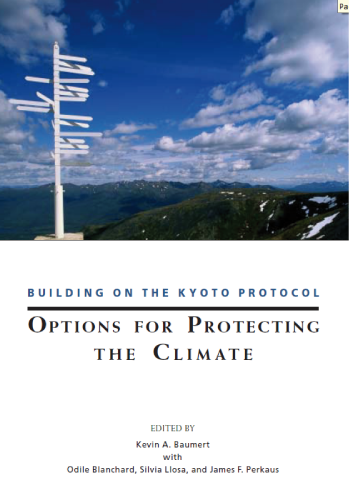
"Contraction and Convergence" This scheme was first introduced by the NGO Global Commons Institute (GCI) in 1990 and has been refined further into what is popularly termed “contraction and convergence.” According to GCI, it is not possible to tackle the climate issue without adhering to these two key elements—contraction (environmental integrity) and convergence (equal per capita entitlements) (Meyer 2000).
"Options for Protecting the Climate"
Mark Malik Aslam WRI
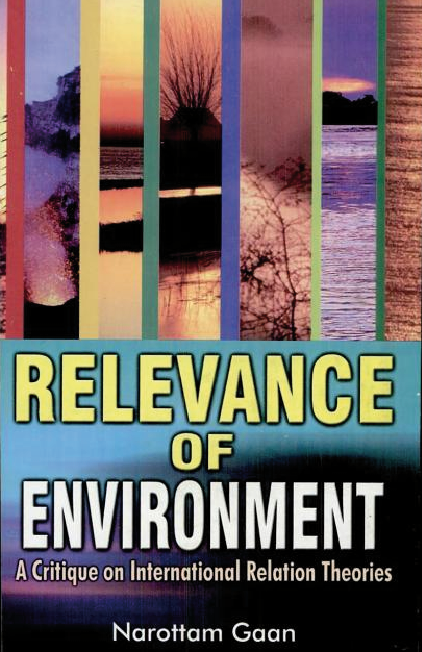
Per Capita the Only Way
Support from unexpected quarters came as a welcome surprise for developing countries such as India, which have demanded that international climate change negotiations be based on the principle of equity. A report released by the UK’s Royal Commission on Environmental Pollution
(RCEP) in June 2000 said that an effective, enduring and equitable climate agreement will require greenhouse gas (GHG) emission quotas to be allocated to nations on a simple and equal per capita basis.
The UK government is expected to respond in writing in the form of a commentary on the report, an explanation of how existing policies and programmes can be reconciled with it and what new policies - if any - the govemmenl is considering in light of the report. So far, the UK has held a position of indifference towards the South’s demand to calculate GHG
emissions on a per capita basis as each human being has an equal entitlement to the atmosphere.
As a system of per capita entitlements cannot enter into force immediately, the report proposes ‘contraction and convergence’. “Initially shares are ‘as is’, that is, approximately proportionaito each country’s income”, explains Aubrey Meyer from the London-based Global Commons lnstitute, a leading advocate of this approach. ‘’Over an agreed future period
of years however, all countries will converge on the same allocation per head of their population in a base year to be agreed. This means the quotas of industrialized countries fall year by year, while those of developing countries rise until all nations emit equal amounts of GHG per head (convergence)." The RCEP report proposes 2050 as the year for convergence. It will also be cut-off date for national populations, that is, further changes in acountry’s population will not affect its emissions quotas.
From then on, after convergence has been achieved, the quotas of all nations would decline together at the same rate (contraction). According to the report, commentators on climate diplomacy have identified contraction and convergence as the leading contender among the various proposals for allocating emissions quotas to nations in the long run. To make an agreement based on per capita allocation quotas more feasible. The report supports emission trading between nations. Countries that wish to emit GHG in excess of their respective quotas would be able to purchase unused quotas at prices that incline other countries to emit less than their
quotas.
Relevance of Environment
Narottam Gaan
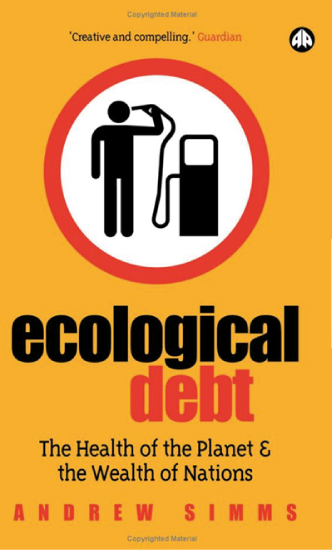
"Contraction and Convergence [C&C] would reduce the complexity of climate negotiations to two simple variables that would need to be agreed:
• the target atmospheric concentration of CO2, and
• the date when entitlements converge to being equal per capita.
The approach offers the best chance of solving a great, and immensely
destructive, international paradox. Interestingly, C&C would also fit the stated position of the otherwise recalcitrant United States. In his statements on climate change, President George W. Bush set out specific criteria for what sort of treaty the US would be willing to sign. They included: a truly global deal including emissions targets for developing countries (or, from another perspective, entitlements) and the need for a science-based approach. Contraction and convergence, with its global participation design and formal greenhouse gas concentration target is exactly such an approach."
"Ecological Debt"
Andrew Simms on C&C
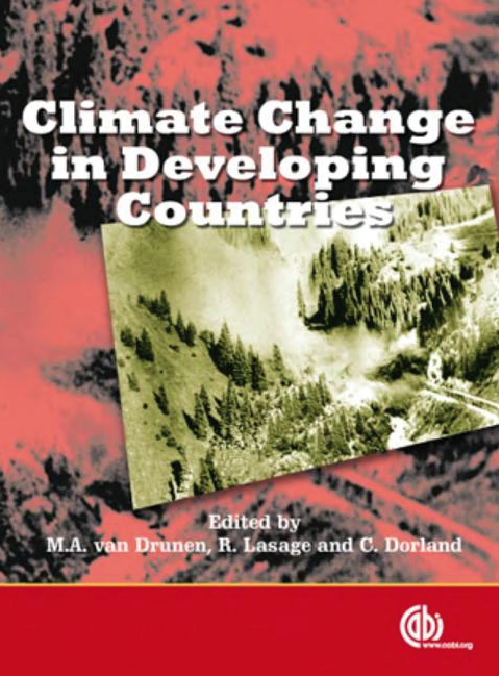
Contraction and Convergence a framework for long-term climate policy, is an idea promoted by the Global Commons Institute. The aim is to avoid climate destabilization in an equitable way. The first part starts with the assumption that there is a certain safe level of GHGs in the atmosphere. If this level is exceeded, the world would risk catastrophic effects of climate change. It is difficult to say exactly what the safe level is, but it is commonly agreed that CO2 concentrations should stay within a range of 450-550 part million by volume [ppmv]. On the basis of this the worldwide CO2 emissions can be calculated. To be realistic, contraction should take into account the current CO2 emissions and the growth path of emissions in the short term. In the longer term, there has to be a large contraction of emissions in order to stay within the safe level of for example 450 ppmv in the atmosphere. Based on the agreed upper limit of CO2 concentration combined with a feasible rate of emissions reduction over time a global emissions budget can be set. The second part convergence is about an equitable distribution of the worldwide emissions budget. The ideal would be an equal per capita distribution of the emissions entitlements. This could be done per year and distributed per country. The emissions entitlement should then be tradable between countries. Given population growth and the fact that emissions have to be reduced over time, the per capita entitlements will become less each year. A sudden introduction of an equal per capita distribution of emissions entitlements would not be politically acceptable. The current per capita emissions in developed countries are many times higher than those in developing countries.
Climate Change in Developing Countries
M van Drunen, R Lasage, C Dorland

Contraction and convergence
What would it imply to bring the world to a greater level of resource justice? The vision of ‘contraction and convergence’ (Meyer, 2000) anticipates two different development paths: one for industrial countries: one for developing countries, All nations of the world would adjust their use of resources so that in half a century from now they no longer overstretch the absorption and regeneration capacity of the biosphere, Since no nation has the right to a disproportionate share of the global environment, each one endeavours - though with individual variations - to achieve the common goal of material and energy consumption compatible with the demands of other countries, while remaining within the carrying capacity of the biosphere. In the end, there is no justification for any other distribution of globally important resources: the right of all nations to a self-defined and equal development permits it only to make claims that are socially and ecologically sustainable al a global level. Given that the industrial countries excessively occupy the global environmental space, it follows that they are called upon to contract - that is, that they reduce their consumption of resources drastically. Resource justice in the world crucially depends on whether the industrial countries are capable of retreating from overconsumption of the global environment. The example of greenhouses gases may serve to illustrate the path of shrinking resource consumption. By the middle of the century, the over-consumers must reduce by 80 to 90 percent the strain they put on the atmosphere by burning fossil fuels, in order to do justice to the precepts of both ecology and fairness. Clearly, the need to reduce fossil fuel consumption and carbon emissions applies to the ‘global North’, which includes the wealthy consumer classes of the South.
On the other hand, the contraction and convergence perspective sees developing countries as tracing an upward curve in resource consumption. First, poorer countries have an unquestionable right to attain at least a ‘dignity line’ of resource consumption that should apply to all citizens of the world. Without access to kerosene or biogas, without an energy and transport infrastructure, it is hard to satisfy even the basic needs of human life. Moreover, each country will try to achieve different images and forms of a prosperous society - an ambition that in turn requires access to resources such as energy, materials and land. However, this upward movement ends at an upper line of ecological sustainability for all; natural limits set the framework for justice. As it happens, a number of emerging economics are already about to hit that limit in the coming decade.
The conceptual model of 'Contraction and Convergence’ thus combines ecology and justice. It begins with the insight that environmental space is finite, and it ends with a fair sharing of the environment by the citizens of the world. It was as early as October 1926 that Mohandas Gandhi sensed the impasse of development. In one of his columns for Young India, the mouthpiece of the Indian independence movement, he wrote ‘God forbid that India should ever take to industrialization after the manner of the West. The economic imperialism of a single tiny island kingdom (Britain) is today keeping the world in chains. If an entire nation of 300 million took to similar economic exploitation, it would strip the world bare like locusts.’ More than 80 years later the wider implications of this statement have lost none of its relevance.
Indeed, its importance has increased, since today there are no longer 300 million but 1000 million setting out to imitate the model of development that began in Britain with the Industrial Revolution. Gandhi suspected that it would not be possible to restore India’s dignity, and still Iess China’s or Indonesia’s, at the economic level of Britain. The biophysical limits to the spread of the Euro-Atlantic civilization have impressively confirmed Gandhi’s intuition.
The International Handbook of Environmental Sociology
Michale Redclift and Graham Woodgate
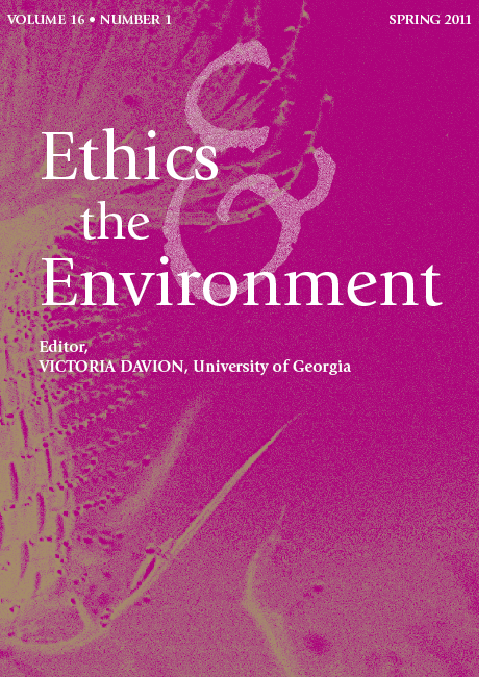
It can be argued, if current generations in the developed countries claim sole ownership to the assets that they have inherited from prior generations, then they are also owners of the liabilities associated with those assets, and they are accountable for the excess use of the atmospheric commons by prior generations. As Bhaskar notes, "if I take an object, not knowing that it belongs to you, and give it to my daughter, you are surely entitled to reclaim it, even though neither my daughter nor I may be a thief" (1995, 116). Similarly, when one discovers that one has taken more than one's fair share, one is expected to make some form of reparation to the party or parties who were disadvantaged. Past practices of utilizing more than one's fair share of a common trust is not justification for continued bad behavior. To resolve these tensions, the contraction and convergence (C&C) response to climate change challenges seeks a global agreement on the concentration of atmospheric GHGs below which the planet's temperature will not rise more than two degrees Celsius, whether that concentration is set at 350,400 or 450 parts per million of CO2 , When this benchmark is set, the planet's carrying capacity for that concentration of GHGs can then be allocated to nations on a per capita basis. Those countries that are presently emitting more than their allotment (primarily the developed, industrialized countries) will be required to reduce their emissions (contraction) while those countries who are presently emitting less than their share (primarily developing countries) will be temporarily permitted to grow their emissions until, by an agreed date, all countries have reached their equal per capita entitlement (convergence) (den Elzen et al 2005). Developing countries might sell their surplus GHG shares during the adjustment phase which would presumably be completed by 2050 (Global Commons Institute 2008). For the C&C approach to become operational, the signatories to the UNFCCC must agree on a safe concentration of atmospheric GHGs, the proportional allocation of this limited capacity based on national populations, the fair assessment of current levels of emissions, targets for contraction of those national emissions that exceed allocations' and the concurrent temporary increase in emissions for those countries which have not utilized their full allocation - an enormous undertaking that has thus far been elusive (Bows & Anderson, 2008).' Nevertheless, the proponents of the C&C approach argue that it can provide an equitable and just response to the climate change challenge that can win the support of the developing world since it both protects their ability to develop and obligates the developed world to reduce its excess emissions (Global Commons Institute 2008). They further argue that the date of convergence should be realized as soon as possible since the most vulnerable and least responsible for climate change are currently bearing a disproportionate and unjust burden created by those who have utilized more than their fair share of the atmospheric commons, and justice demands that this be resolved as soon as possible.
Ethics the Environment
Victoria Davion University of Georgia
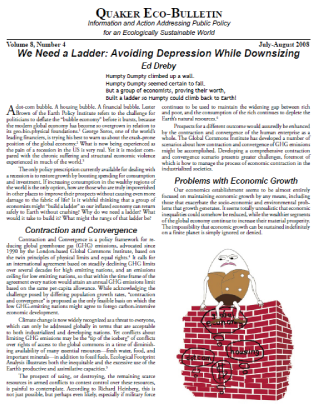
"Perhaps there would be more consideration of economic
contraction by high-consuming societies if there were a collective
rethinking of our economic mythology, and an
effort among economists to propose both a vision and some key steps for making a transition to a
smaller economic scale. There might be less fear
of talking about contraction and convergence,
of GHG emissions and of human enterprise as a
whole, if there is a ladder for Humpty Dumpty
to climb safely to Earth, where the pursuit of
happiness and fulfillment can go forward without
jeopardizing the future."
We Need a Ladder: Avoiding Depression While Downsizing
Ed Dreby Quaker Eco-Bulletin
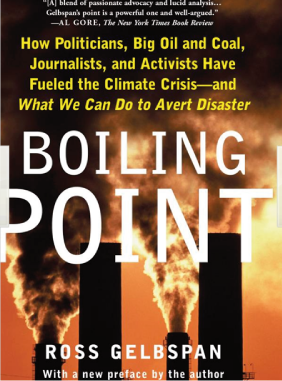
"The Contraction and Convergence [C&C] plan is driven by the major concern that industrial nations, in particular the US, will devise a way of bring down the world’s aggregate arbon emissions and, at the same time, either perpetuate or more likely, intensify - the relative poverty of the developing world. In other words the countries of the North will try to achieve climatic stability on the back of the world’s poor. The premise is surely justifed historically."
Boiling Point: How Politicians, Big Oil and Coal, Journalists, and Activists Have Fueled a Climate Crisis -- And What We Can Do to Avert Disaster; Ross Gelbspan

"The best-known articulation of the idea is “contraction and
convergence,” which Aubrey Meyer, director of London’s Global
Commons Institute, has been tirelessly promoting for many
years. The term 'contraction' refers to a reduction of global
emissions from today’s unsustainable levels to future “safe”
levels, while 'convergence' implies that at the same time,
developing country emissions allocations would be allowed
to increase in the interests of development, while rich-world
allocations would drop. The result of these transitions would be
a global convergence to equal, and low, per capita allotments.
The contraction-and-convergence framework assumes that
convergence takes place over some transition period (by, say,
2030) and that allocations are tradable, so that per capita
emissions themselves may or may not actually converge."
"Dead Heat: Global Justice and Global Warming"
Tom Athansiou and Paul Baer

Contraction and Convergence
"Contraction & Convergence (C&C) principles require reductions from rich countries in order to allow developing countries to increase their emissions and economic growth, ending in convergence on a globally similar per capita level of emissions, (Meyer 2000). This alternative approach would represent a major shift from the current Kyoto Protocol approach. Instead of focusing on the question of how to share the emission, reduction burden as in the present Kyoto Protocol, this approach starts from the assumption that the atmosphere is a global common to which all are equally entitled, and focus on sharing the use of the atmosphere (resource sharing). The
approach defines emissions rights on the basis of a convergence of per capita emissions under a contracting global emission profile. With this approach all parties would participate immediately after 2012 with per capita emission permits (rights) converging towards equal levels over time. More specifically, over time. all shares converge from actual proportions in emissions to shares
based on the distribution of population in the convergence year."
"Carbon Markets: An International Business Guide"
Arnaud Brohé, Nick Eyre, Nicholas Howarth (Authors)
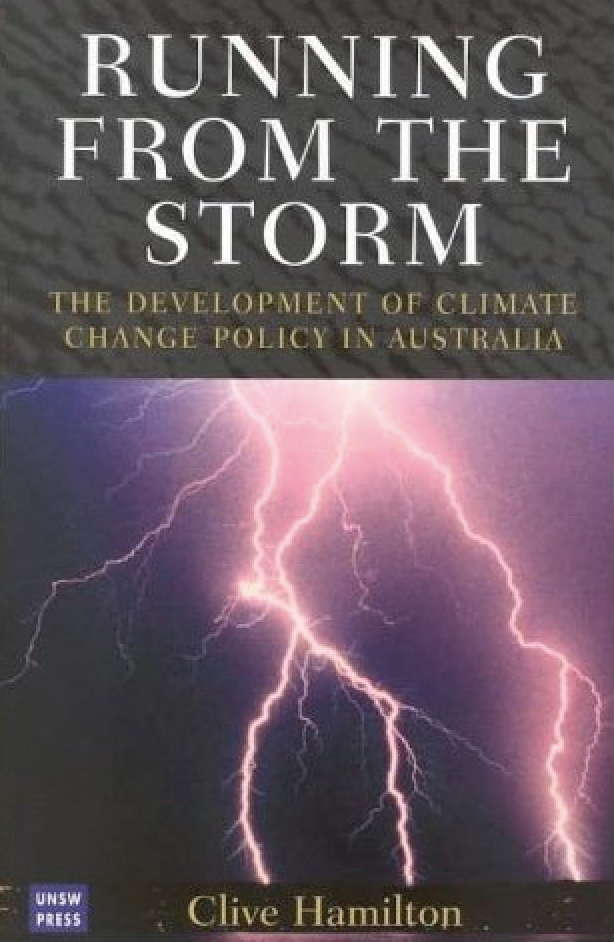
“ . . . . the longer time frame and the more broadly accepted
ethical underpinnings of Contraction and Convergence [C&C] ought to make negotiations less
fraught than those leading up to and subsequent to Kyoto.
Is contraction and convergence pie in the sky? There is no
doubt that it is a radical approach with far-reaching implications
for the management of the Earth’s common resources. It would
redraw the legal and ethical relationships between nations
and initiate an era of supranational management of those
environmental issues that cross national borders. Difficult, yes;
but what is the alternative?”
"Running From The Storm"
Clive Hamilton, Director of
The Australia Institute

"Preventing runaway climate change is essential for a healthy and sustainable future. However, the economic and social policies that will need to be implemented in order to reduce greenhouse gas emissions will also bring substantial health improvements. Specifically, they could bring important reductions in inequalities in health, heart disease, cancer, obesity, diabetes, road deaths and injuries and urban air pollution. These health benefits arise for three reasons:
1 Because Contraction and Convergence, which is the fairest, most clearly articulated and most widely supported global framework for reducing greenhouse gas emissions, has justice and equity at its core and injustice and inequality are major determinants of human suffering and sickness (Global Commons Institute, 2008).
2 Because climate change policies will impact in a health-promoting way on two of the most important determinants of health: human nutrition and human movement
3 Because climate change policy has to include population policy and the promotion of family planning has huge potential to improve global health (Cleland et al. 2006)."
The Health Practitioner's Guide to Climate Change
Jenny Griffiths (Editor), Mala Rao (Editor), Fiona Adshead (Editor), Allison Thorpe (Editor)
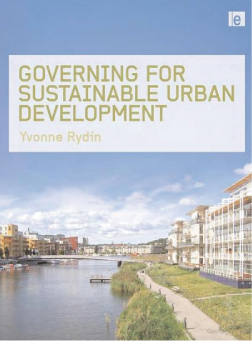
"If a target is set for an acceptable concentration of greenhouse gases in the atmosphere, and an 'emissions budget' set to to meet it, it becomes possible to work out for every year from now until the target is met what everybody's logical and equal share is of the atmosphere's ability to soak up our waste emissions.
To do this a formula is used so that, in an agreed timeframe, entitlements to emit are pre-distributed in a pattern of international convergence so that, globally, shares become equal per capita. This unavoidable procedure - if chaos is to be avoided - was described and given the term 'contraction and convergence' by the London-based Global Commons Institute.
In essence, the world has a carbon cake strictly limited in size. Beyond certain dimensions it becomes rapidly poisonous for everyone, and the only way to begin negotiations on how to cut the cake is to start with the principle that we all have equal access rights. What we do with them is another matter."
Governing for Sustainable Urban Development
Yvonne Rydin
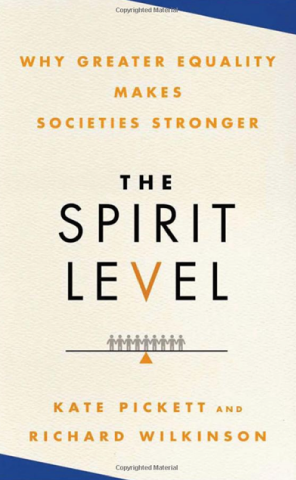
"Clearly, any system for tackling these problems has to treat rich and
poor countries differently. India, producing 1.6 tonnes of carbon per
person annually, cannot be treated the same as the USA, producing
24.0 per person. Any regulatory system has to include policies for contraction and convergence or 'cap and share. Both approaches
propose a year-on-year contraction in permitted emissions levels,
leading to an eventual convergence on equal per capita emissions across the planet."
"The Spirit Level: Why Greatr Equality Makes Societies Stronger"
Kate Pickett and Richard Wilkinson
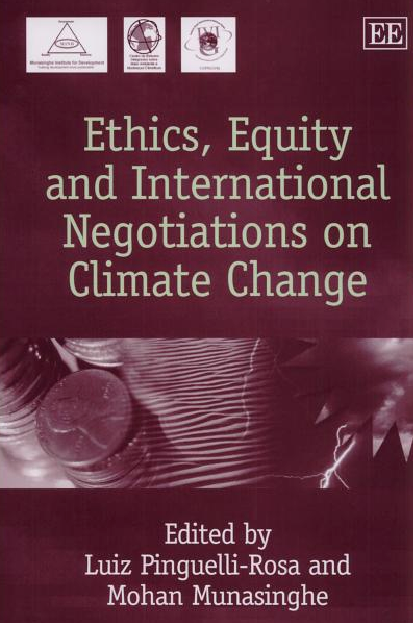
The issue of 'equity' broadens the policy discourse by including
considerations not primarily motivated by the impacts of climate change
and mitigation policies on global welfare as a whole, but rather by
whether climate change and mitigation policics would exacerbate existing
inequalities among and within countries. This is the basis for policy
strategies that seek to promote greater equity in global use of resources by
allowing the emissions of developing nations to expand while overall
global emissions are reduced. An important product of this is the
'contraction and convergence' approach in which the
pursuit of greenhouse gas stabilization drives convergence of per capita
emissions and income. This focus has led from considerations of equity
towards an agenda of sustainable development.
Ethics, equity, and international negotiations on climate change edited
Luiz Pinguelli Rosa, Mohan Munasinghe
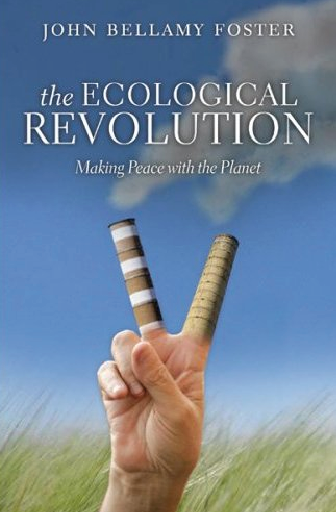
Ecological debt proponents advocate a process of contraction and convergence.
The Ecological Revolution: Making Peace with the Planet
John Bellamy Foster
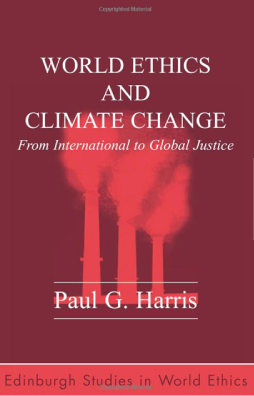
"One increasingly popular proposal for action on climate change involves 'contraction and convergence' (Meyer 2000) which calls for per-capita emissions of each state to be brought to a level that is equal with other states and that the atmosphere can withstand, in practice meaning that emissions in wealthy countries would come down to a safe level (contraction) and in most developing countries would go up to that level (convergence). The notion of contraction and convergence is essentially based on egalitarianism (Heyward 2007: 526). The equal per-capita amount that the atmosphere can withstand is roughly l .5 tonnes carbon-dioxide equivalent per person per year, which compares with about 20 tonnes in the United States, on one end or the spectrum, and about 0.1 tonnes in Mali, on the other (Smith 2006: 97). What the cosmopolitan corollary would require is that this policy be implemented not only among states but within them as well. This would mean that while most people in rich countries would lower their
greenhouse gas emissions to the globally safe per-capita level most people in poor countries would be allowed to increase their emissions to that level. A difference between this approach and international doctrine is of course that poor people in wealthy states would not bear an unfair burden. Conversely, while most people in poor and developing countries would be allowed to increase their greenhouse gas emissions to the globally safe level, a large minority of people - the affluent - in those same countries would be required to reduce them. The precise amounts set for people would reasonably and fairly depend on their circumstances. Some people are in no position to reduce their emissions, and some emissions over the safe per capita limit might be allowed for certain people if there is no alternative. At the same time, it is reasonable and probably necessary to expect some people to reduce their emissions below the globally safe level. The candidates for this requirement will be those who have polluted far more than they should have done already and who have the means (financial technological and so forth) to reduce
their emissions below the globally safe level while still meeting their basic needs."
World Ethics and Climate Change: From International to Global Justice
Paul G Harris
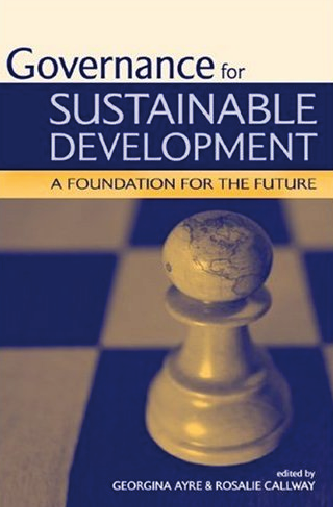
C&C and the US
Interestingly. Contraction and Convergence (C&C) would fit with the stated position of the otherwise recalcitrant US. In his statements on climate change, President Bush set out specific criteria for what sort of treaty the US would be
willing to sign up to. These indude a truly global deal with emission targets (or from another perspective entitlements) for developing countries and the need for a science-based approach. C&C,wlth its global participation design and formal
greenhouse gas concentration target is exactly such an approach. C&C is also fully consistent with the famous 1997 Byrd Hagel US Senate resolution that stipulated that the US would not sign up to any treaty that did not include developing countries.
This has enormous and from a development perspective, very positive consequences since it can liberate resources to finance development. However, as action to combat global warming is delayed, emissions grow and populations rise,
and the sustainable size of a carbon cake slice will get smaller and smaller. ln other words, the sooner we act the better.
Governance for Sustainable Development
Georgina Ayre, Rosalie Callway
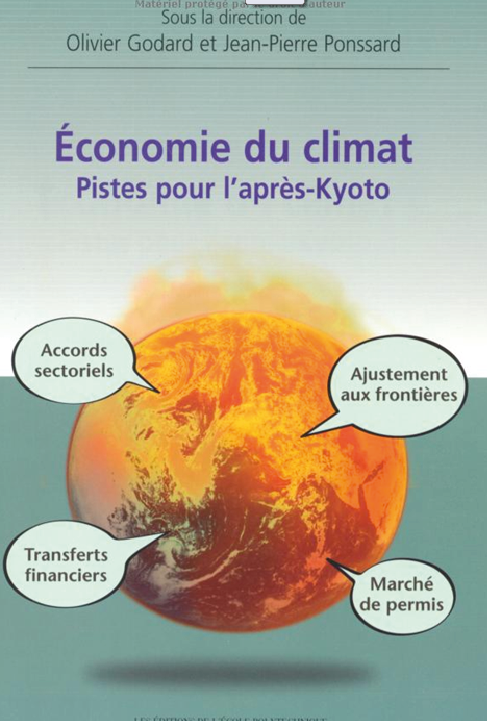
"A global cap is allocated to countries on the basis of a contraction and convergence with the convergence of emissions per capita in 2100 and a linear progression towards this target between 2013 and 2100."
Economie du Climate Pistes pour apres-Kyoto
Oliver Godard Pierre Ponsard
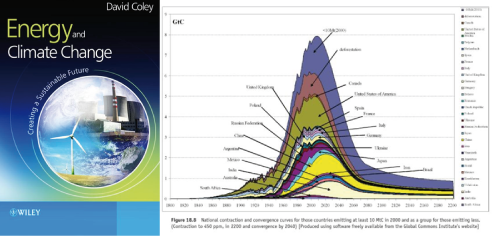
CHAPTER 18 POLITICS IN THE GREENHOUSE: CONTRACTING AND CONVERGING
Together, these steps represent an approach called Contraction and Convergence (C&C). Although it does have an ethical basis, C&C is essentially a pragmatic approach. Given the need to create a worldwide solution, because of growing emissions from the developing world and the reluctance of the USA to contemplate an approach which is not worldwide, C&C resolves this problem.
Contraction and Convergence Green Books 2000 Meyer.
A personal account of the subject and of the climate negotiations.
Energy and Climate Change: Creating a Sustainable Future
David Coley
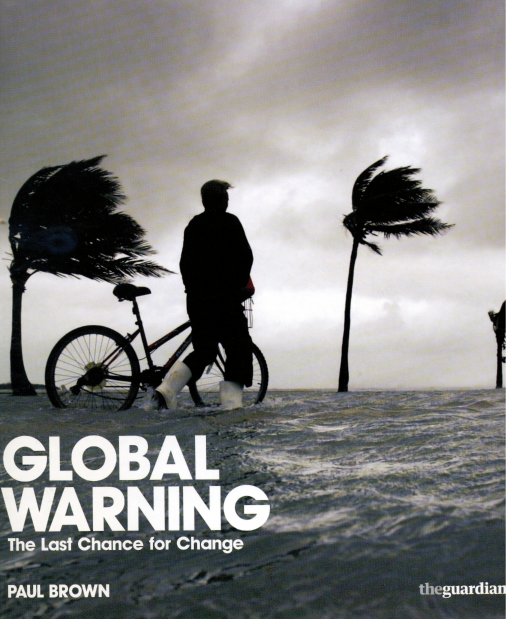
"This is a practice that will become more widespread, although whether it will ever achieve the aims of a long-running and laudable
campaign by Aubrey Meyer, of the Global Commons Institute, is debatable. His idea is to allow everyone in the world an individual
carbon budget. The starting point is that the average American emits 20 tonnes of carbon dioxide each year, the average European 11
tonnes, a Chinese 2.4 tonnes and an Indian just over 1 tonne. Africans produce on average even less. Aubrey's idea is a carbon allocation for the entire world, on the basis of a cut in man-made emissions of 60%. This total is then divided between countries based on the number of citizens that live in it. Over this century each country should reach its allocation. This would allow poor countries to increase their carbon output for the time being as they develop while the already industrialised countries adopt new clean technologies to reduce their carbon footprint. He calls it contraction and convergence. The idea has been widely praised as a possible way forward in inter-national negotiations but so far, for many countries, mostly the profligate emitters, it seems too tall an order."
GLOBAL WARMING The Last Chance for Change
Paul Brown
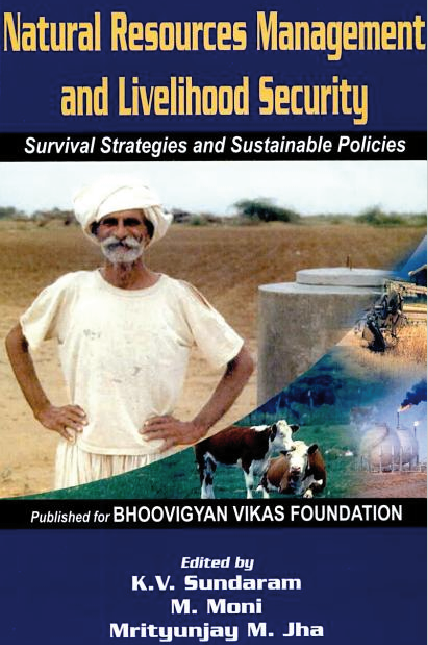
The per capita emissions and the time for adjisting to safe levels of CO2 concentration are matters to be negotiated internationally. This strategy will hopefully lead to a just and legally-binding framework for global safely and saving the world from a looming catastrophe. While some developed countries like Denmark, The Netherlands, United Kingdom and Japan have endorsed this principle of 'contraction and
convergence' at the Kyoto discussions, some others like USA,
who are the worst polluters, have not yet agreed to do so.
Natural Resources Management and Livelihood Security
K V Sundararaman M. Moni, Mrityunjay M. Jha
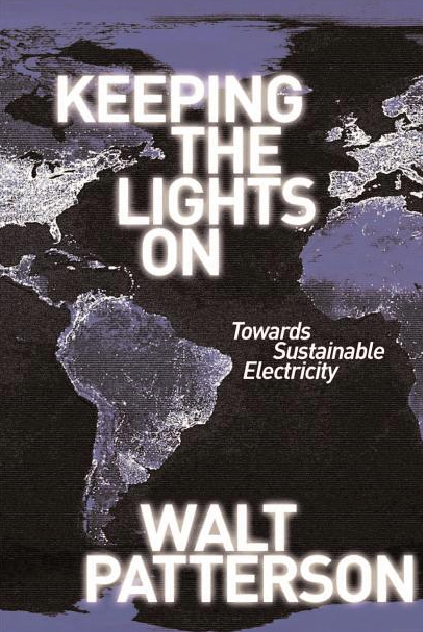
They invite governments to initiate a process of 'contraction and convergence', by allocating carbon allowances, whereby those who emit too much carbon buy allowances from those who do not.
Keeping the Lights On
Walt Patterson
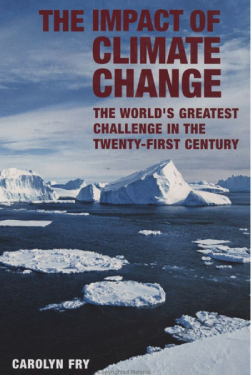
A better fairer method, which has gained wide support among scientists and policymakers, is one of Contraction and Convergence developed by the Global Commons Institute
The Impact of Climate Change: The World’s Greatest Challenge in the Twenty-first Century
Carolyn Fry
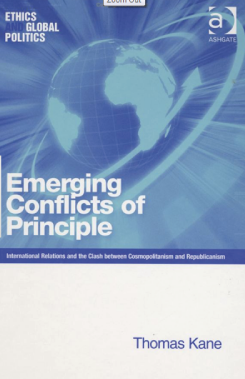
The fact that Developing Nations have endorsed the Contraction and Convergence [C&C] suggests that it has the potential to overcome the US Senate’s stated objection.
Emerging Conflicts of Principle: International Relations and the Clash Between Cosmopolitanism and Republicanism
Thomas Kane
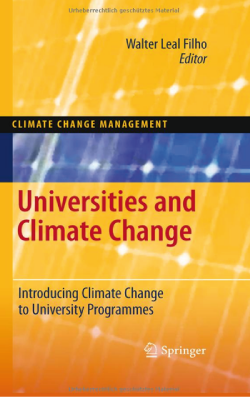
"Perhaps the most interesting lessons for the authors came from being involved in
a very small-scale version of the type of negotiations that are taking place internationally as nations try to agree on global emission reduction targets. Although
there were only five organizations involved, the negotiations mirrored the international negotiations in many ways. The participants sought an equitable distribution
of the burden of climate change response, while arguing for their own special
circumstances and the need for differentiation of targets to take these circumstances
into account. It is interesting, though perhaps not surprising, that a contraction and
convergence approach emerged as the only equitable way to provide differentiation
of targets across the participants. Some authors (e.g. Garnaut 2008; Singer 2006)
believe that such an approach is the only way to achieve a successful equitable
outcome in international negotiations on climate change response and the ATN
experience supports this conclusion. However, the key factor that allowed this
approach to succeed in the ATN was the commitment of all parties to the ATN
partnership and its spirit of collaboration. A similar spirit is sorely needed in
international negotiations on climate change response." Contraction and Convergence - A Global Solution to a Global Problem
Universities and Climate Change
Chris Riedy and Jane Daly - Walter Leal Filho [Editor]

"The world is defined by an effective policy commitment to high mitigation through strong policy coordination. In the 'coordinated mitigation world', the international community succeeds in developing a new Kyoto-like regime, negotiated under the UNFCCC entailing greater mitigation action by both the major Industrial Countries as well as Developing Countries. Contraction and Convergence interacting with markets and technology change succeeds in achieving deep emission cuts."
Climate Change Policy in the European Union:
Confronting the Dilemmas of Mitigation and Adaptation?
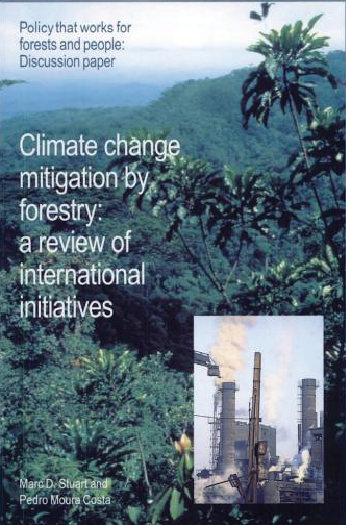
Exporing the inter-nation equity implications for forestry of the “contraction and convergence” principle of Kyoto i.e. where rich nations contract and poorer nations expand, until some point presumably where we all have similar ecological space.
Climate Change Mitigation by Forestry.
A Review of International Initiatives
Marc Stuart, Pedro Moura Costa
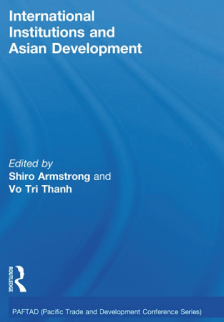
"I recall a conversation with leading environmental officials in China in the early 1990s in which my Chinese interlocutors stated that anthropomorphic global
warming was a substantial problem that required a global response. They said then that China would accept control on levels of greenhouse emissions and be ready to join a global 'system for trading emissions rights, as long as the starting point was equal per capita initial rights. This is not an unreasonable position: but it alone would provide no basis for agreement with developed countries. What sort of principle might guide allocation of a global emissions budget across countries? To be widely accepted as being reasonable, the principles will need
to be simple. ln the end, they will need to give much weight to equal per-capita rights to emissions. They will need to allow long periods for adjustment towards such positions - within the overriding requirement to stay within an environmentally responsible global emissions budget.
One possible way of bringing together the latter two elements would be the 'contraction and convergence’ approach that has been discussed favourably in Germany and India and within which all countries emissions converge on an equal per capita amount at some appropriately defined future time. There will need to be headroom for emissions growth in rapidly growing developing countries within a general principle of equitable sharing of the adjustment burden. The headroom may take the form of challenging emissions intensity targets for example with emissions intensity of output falling at a rate that exceeds half of the GDP growth rate. A limit would need to be placed on the provision of headroom for rapidly growing developing countries. For example, if the ‘contraction and convergence’ approach were to be accepted as the first organizing idea and an 'emissions intensity alternative’ introduced for rapidly growing developing countries, the 'headroom' could be withdrawn at the point where the developing country rising per-capita emissions reach the (rapidly falling) per-capita emissions of standard (that is, moderate emissions developed countries (Europe, Japan, New Zealand). The principles will need to embody developed country commitment to investment in research and development and subsequent diffusion of technologies related to greenhouse gas mitigation to developing countries."
International Institutions and Economic Development in Asia
Thanh Tri Vo Editor
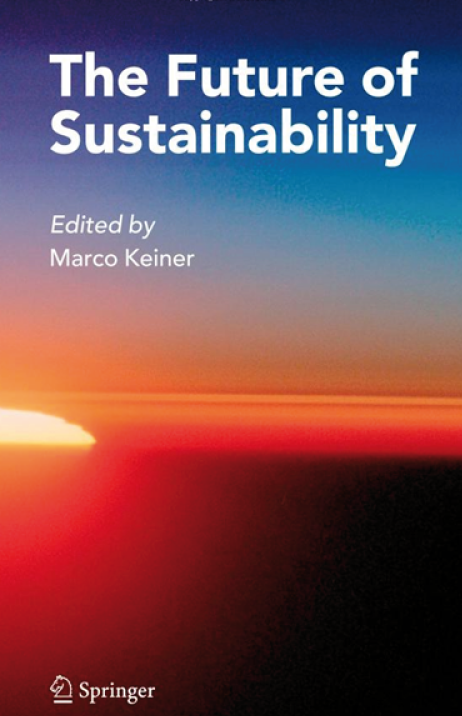
"Sustainable Development is a commitment to improving people's well being, while recognizing the existence of only one planet. Living within global limits requires from humanity to define these limits in realistic terms and find ways to allocate maximum human demand' in ways acceptable to all nations. Contraction and Convergence as proposed by Aubrey Meyer from the Global Commons Institute provides such a framework for globally allocating the right to emit carbon in a way that is consistent with the physical constraint, of the biosphere. The approach
rests on two transparent principles:
Contraction: reducing humanity's emissions to a rate that the biosphere can absorb.
Convergence: distributing total emissions in a way that is considered fair to all."
The Future of Sustainability
Edited by Marco Keiner
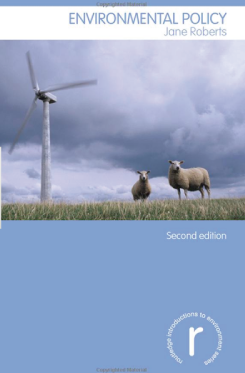
The Contraction and Convergence model (C&C), developed by the Global Commons Institute, seeks to reconcile the goals of greenhouse gas stabilisation and international equity. Figure 7.3 illustrates one possible scenario for projected emissions from various regions of the globe were the model to be adopted.
Environmental Policy (Routledge Introductions to Environment)
Jane Roberts

In 2000 the Royal Commission on Environmental Pollution [RCEP] famously called for a 60 per cent reduction in carbon dioxide emissions by 2050, based on the principle of contraction and convergence. In doing so it paved the way for the 80 per cent target now enshrined in legislation. This illustrates France's bid for cognitive leadership by promoting an argument for policy norms based on fairness. The French approach bears similarities to the 'contraction and convergence' model promoted by Meyer (2000), which views the atmosphere as a global commons and distributes national responsibilities on the basis of international and intergenerational equity. In addition, China and the developing world have a normative preference for the 'contraction and convergence' model.
Meyer, A (2000) “Contraction and Convergence - The Global Solution to Climate Change” Green Books
The European Union as a Leader in International Climate Change Politics
Rüdiger Wurzel (Editor), James Connelly (Editor)

"If the complex process of reducing global carbon emissions is to have a fighting chance of succeeding, then it must start with a broad framework agreement, one that nations both big and small can live with. The most likely candidate is Contraction and Convergence (C&C) devised by the Global Commons Institute GCI). C&C is a science-based, global policy framework proposed to the UN since 1990 by GCI with the objective of safe and stable greenhouse gas concentrations in the atmosphere and the principles of precaution and equity. The contraction budget for global emissions will be consistent with stabilising atmospheric concentrations of greenhouse gases [GHGs] at a pre-agreed concentration maximum deemed to be safe, following IPCC WG1’s carbon cycle modelling. The international sharing of the budget as ‘entitlements’ results from a negotiable rate of linear convergence to equal shares per person globally by an agreed date within the timeline of the full-term contraction:concentrations agreement."
The ZEDbook: solutions for a shrinking world
Bill Dunster (Author), Craig Simmons (Author), Bobby Gilbert (Author)
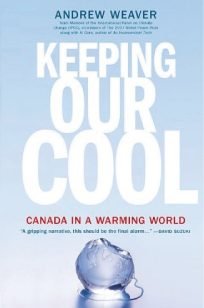
The fact that everyone has to eventually eliminate their emissions and arrive at carbon neutrality makes it a little easier to construct an international policy framework. Achieving carbon neutrality is a grand challenge, but it's one that we can and must meet. The good news is that an international policy framework already exists. In the early 1990s, Aubrey Meyer, founder of the U.K.-based Global Commons Institute, developed "contraction and convergence." The concept is simple and straightforward.
First, you determine what level of global warming is tolerable and what is unacceptable. We'll use 2 degrees C as the threshold. Second, you determine
the allowable emissions that would keep you within this target. Our analysis suggests 539 billion tonnes of carbon from 2001 onward (484 billion tonnes from 2007 onward). This corresponds to the assumption of a 4.5 degrees C climate sensitivity, the upper bound of the IPCC likely range, meaning that there is less than a 330/0 chance of breaking the 2 degrees C threshold. The final contraction target is carbon neutrality, and we'll assume this occurs in 2100.
Now we must allocate the 539 billion tonnes of carbon emissions to individual countries between 2001 and 2100. This is the convergence phase. On the convergence date, the principle of global equity is evoked, and every person on Earth is given the right to emit the same amount of carbon. That is, per capita carbon emissions for all countries converge to a common number. We'll use 2075 as the convergence year, although there is no reason why it could not be the same as the contraction year, 2100. Finally, a date has to be chosen beyond which additional credits are not gained for increasing your country's population. That is, increasing your allowable emissions by increasing your country's birth rate is not to be encouraged.
Keeping Our Cool
Andrew Weaver
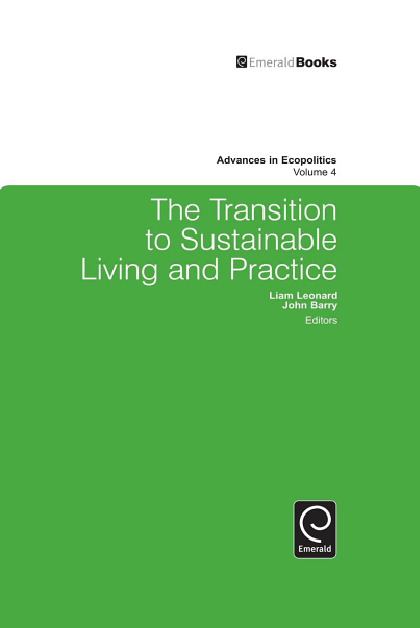
We need a global system where countries agree to limit their carbon dioxide emission with Contraction and Convergence model (C&C), which proposes that countries do this within a framework of equal per capita emissions entitlements for all global citizens.
The Transition to Sustainable Living and Practice
Liam Leonard
John Barry

“Contraction & Convergence is the centrepiece of our Climate Justice Project, but it’s just a framework, and won’t achieve anything unless people know about it and support it. Ultimately, our politicians have to be convinced that Contraction & Convergence is the way forward, and the Climate Justice Project is all about how we achieve this.”
The Climate Justice Project

The "Contraction and Convergence" approach (Meyer 1999) seems to be the most reliable approach to mitigate the impacts of climate change, while making the distribution of emission rights and justice possible and politically feasible.
Theorie und Praxis starker Nachhaltigkeit
Konrad Ott, Ralf Döring
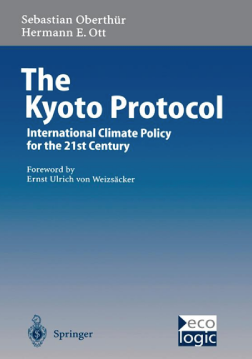
"One of the possible and likely the most prominent approaches is the process of "contraction and convergence" towards equal per capita emissions.
This is based upon the assumption that the world's population seeks to stabilise CO2 concentrations at 450 ppmv (a level that might prevent dangerous impacts).
Annual emissions of about 2 Gt carbon by the end of next century and not more than 600 Gt cumulative carbon emissions in the period from 1990 to 2100 would be the upper limit to the worlds carbon dioxide emissions. Under the convergence approach, equal per capita emissions would guide the allocation procedure over the long-term, i.e. per capita emissions of the various countries would converge to an amount considered to be sustainable. Obviously, this scenario would demand that industrialised countries curtail emissions significantly. Yet imposing this limit would also necessitate caps on developing countries in the near future.
Most developing countries perceive equal per capita emissions in the long-term as an acknowledgement of the "equity" concerns of the Convention."
“Contraction and Convergence; A Global Solution to a Global Problem",
Global Commons Institute
The Kyoto Protocol
Herman Ott and Sebastian Oberthur

"The French approach bears a similarity to the Contraction and Convergence model promoted by Meyer (2000) which favours a transition of GHG emissions by promoting deep cuts on the part of the industrialised nations. This model views the atmosphere as a ‘global commons’ and seeks to distribute rights for its use on a per capita basis."
France on the World Stage: Nation State Strategies in the Global Era
Professor Mairi Maclean (Editor), Dr Joseph Szarka (Editor)
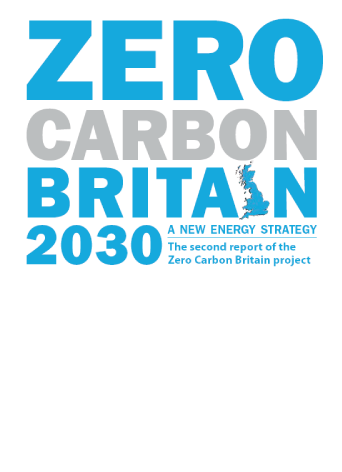
Contraction and Convergence (C&C) is one popular and well known policy option which assumes that the only practical and equitable way of allocating carbon is on an equal per capita basis (Meyer, 2004).
It allows nations to choose their own policy path towards low emissions. This more flexible approach then creates the opportunity for lessons learnt to be adopted elsewhere and for policy efforts to be scaled up or down as appropriate.
It would ensure some level of global fairness and could provide Britain the opportunity to take a global lead on local action, international climate aid and technology transfer. Once the carbon budget has been allocated between countries, governments can develop their own national policy framework, or band together with other countries to develop regional carbon cap or tax schemes.
ZERO CARBON BRITAIN 2030 A NEW ENERGY STRATEGY
The second report of the Zero Carbon Britain project

"Contraction and Convergence. A single NGO - the Global Commons Institute [GCI] has initiated an ingenious approach to COP-4 and beyond."
Environmental Science for Environmental Management
Tim
O'Riordan

A major option proposed is Contraction and Convergence [C&C] in which national per capita emissions begin to converge until they become equal in 2050. This approach tends to require more stringent targets across the board in 2050 because early reductions are less significant.
The Future of North America Outlook and Recommendations
Center for Strategic and International Studies Washington, D.C.
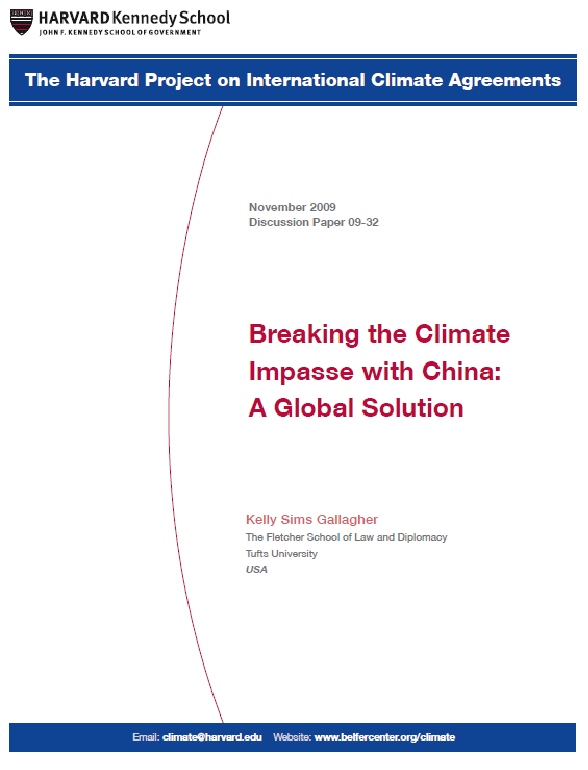
One of the most
prominent for emissions allocations is the Global Commons Institute’s “contraction and convergence”
approach (Meyer 2001).
Breaking the Climate
Impasse with China:
A Global Solution
The Harvard Project on International Climate Agreements
November 2009
Discussion Paper 09-32

It's important to note that one typically unmentioned aspect of being socially responsible is to abstain from having children or, at the most, to only conceive one child per family, especially in the developed nations. There arc already too many consumers on this planet for our collective good, and children in the North consume much more wastefully than children in the South. The U.N. Millennium Forum Declaration (2000) demanded "a world where everyone lives in a clean environment with a fair distribution of the earth's resources," This international resolution validates the concepts of "contraction and convergence" and "equitable rationing on a per capita basis" as the best way and the only fair way to allocate resources and greenhouse gas emission pennits at the global and national level relative to absolute nominal targets. This far-sighted global resolution has vitally important implications for the future treatment of global climate refugees.
Awakening to World Disorders and Climate Realities
Michael Clarke
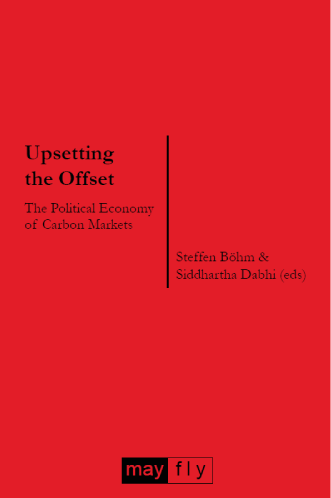
Governments obviously have a key role in both causing and aiding solutions to Climate Change. Just as clearly, companies that are particularly damaging must change their ways and help to reduce the threat. However, we cannot rely on these institutions to do this out of goodwill: we must take action ourselves, both by pressurizing governments and companies, and by changing our own lifestyles. In the summer of 2005 a group of between 60 and 80 cyclists rode from London, England, to the site of the G8 summit in Gleneagles, Scotland. Climate change was high on the agenda for the G8 that year and the riders were joining Upsetting the Offset with 1000s of other people in Scotland to lobby, protest and demonstrate. Their concerns were diverse. Some wanted to lobby the leaders of the G8 to
take the environment more seriously and adopt contraction and convergence policies to mitigate what they saw as an imminent climate catastrophe, others saw the G8 itself as part of the problem and incapable of offering effective solutions to this or any other problem of late capitalism. As the G8 consists of the leaders of the most polluting, and advanced capitalist, nations, these protestors saw little hope that they would be able to do anything to solve the problems that were a product of the very system they oversaw and which gave them their authority. Instead, they saw a need for a more radical change in which people took direct responsibility for the problems of climate change and sought to create a more egalitarian world in which the rapacious economic growth of the affluent capitalist nations was challenged both through protest and through a strategy of selective disengagement: a process of creating alternative ways of organizing, and developing alternative technologies, in everyday life.
See Global Commons Institute (1996) ‘Draft Proposals for a Climate Change Protocol based
on Contraction and Convergence: A Contribution to Framework Convention on Climate
Change’, Ad Hoc Group on the Berlin Mandate, 6th September 1996 AGBM/1.9.96/14, Global Commons Institute (2001) References for Contraction and Convergence, 11 August,
http://www.gci.org.uk/refs/C&CUNEPIIIg.pdf and Meyer, A. (2004) ‘Briefing: Contraction
and Convergence, Engineering Sustainability’, 157(4): 189-92.
Upsetting
the Offset
The Political Economy
of Carbon Markets
Steffen Böhm &
Siddhartha Dabhi
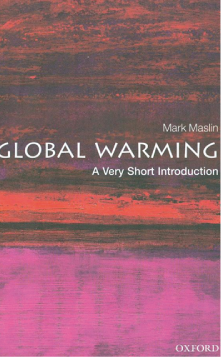
"The principle of Contraction and Convergence should be enshrined in the post 2012 agreement."
Global Warming: A Very Short Introduction
Mark Maslin
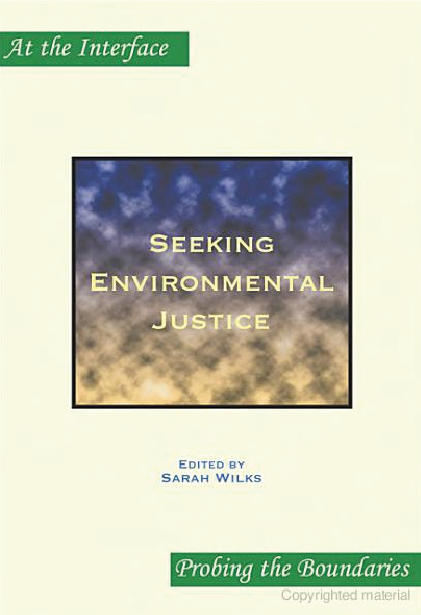
I. The Case for Carbon Egalitarianism
The search for an adequate response to the problem of climate change has fostered a minor industry in the development of new proposals that advocates suggest should be incorporated into post-Kyoto climate agreements. One proposal that has become increasingly popular in recent years is "Contraction and Convergence" (C&C). Its most persistent and vocal advocate is Aubrey Meyer, the founder of the Global Commons Institute (GCI). a small non-governmental organisation which
has consistently "punched above its weight'" in the climate policy community. GCI describe C&C as a "science-based, global climate policy framework”. The "contraction" elcment of C&C is straightforward. The science tells us that global carbon dioxide emissions ultimately exced "safe" levels. Therefore, the "budget" for global emissions must contract to a level "consistent with stabilising
atmospheric concentrations of greenhouse gases at a pre-agreed
conccntration maximum deemed to bc safe.” In other words, global emissions must be reduced ("contracted") to a safe level. The "convergence" element of C&C is also quite simple. Currently, some people (regions. nations and individuals) emit more carbon dioxide than other people. "Convergence" requires that we move toward "equal shares per person globally" or an equal per capita allocation of emission rights." It is the convergence element - or, more accurately the end point of convergence - that is of primary interest to us. The idea of equal emission rights per person globally suggests a universal right to equal carbon emissions. This rights-based reading of the proposal is supported by Athanasiou and Baer:
A workable climate treaty must ... be a constitutional, "rights of man" kind of treaty, one in which we affirm that we all, however proud or humble we may be, have the same ultimate claim to the atmospheric commons. They make it clear that they envisage. "a radical expansion of [human] rights ... into the new territory of economic rights to global environmental resources." We might call this position, "cosmopolitan carbon egalitarianism" (or, for brevity, "carbon egalitarianism").
Why should we be "carbon egalitarians'? Athanasiou and Baer put the case dramatically: "We need to restrict global emissions - drastically and soon - and this means that we need a global climate accord. And this, in turn, means that we have to find a fair way to divide up a finite ‘atmospherie space'. To be blunt: unless you think that global apartheid is a realistic and desirable option, the issue is, necessarily, frairness in a finite world. And at the end of the day, there just isn't any way to conceive of such fairness except in [equal] per capita terms."
Seeking Environmental Justice
Sarah Wilks
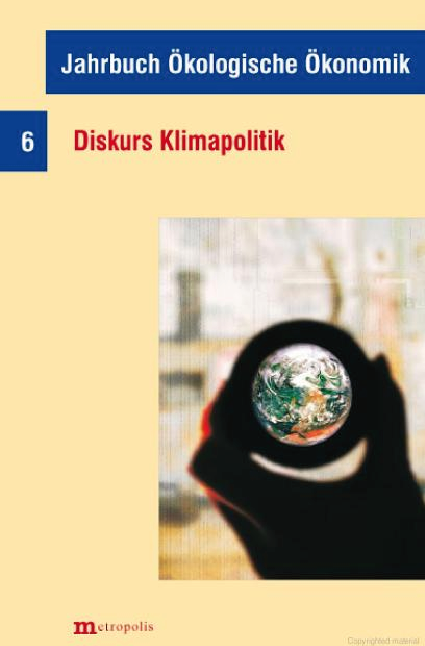
Contraction and Convergence - Climate Policy that is effective and fair.
Jarbuch Okologishche Okonomik

"One of the most promising ideas in this area is called Contraction and Convergence, in which a ‘carbon budget’ is set for all nations based on a per capita allocation of allowable emissions. Under this system, nations with more carbon usage (usually the rich ones) would be able to buy credits from the poorer nations which had operated within their ‘carbon budget’."
Modern Life: As Good as It Gets?
Richard Docwra
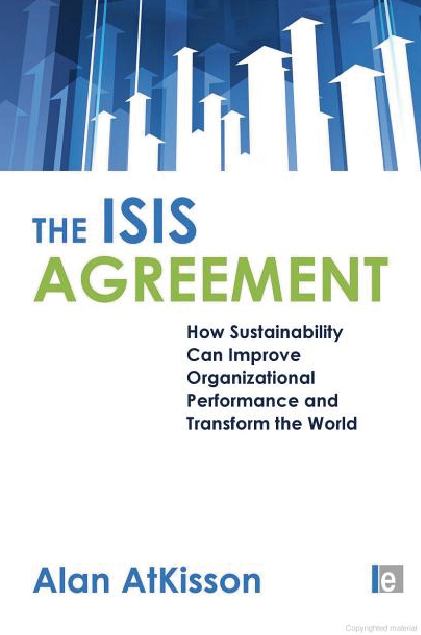
Peter Garrett capped a 25-year career as rock star with the band Midnight Oil by being named Minister of Environment in Australia. Less well known, but just as influential, is the work of the London-based violinist Aubrey Meyer, who has campaigned tirelessly and with considerable success for an equity-based solution to greenhouse gas emissions called “Contraction and Convergence”.
The ISIS Agreement
Alan Atkisson

"Aubrey Meyer's principle of Contraction and Convergence, while
hinging on the absolute equitability of allocating every person on
earth the right to the same quantity of carbon emissions, in practice
calls for a dramatic reduction in the non-renewable energy use of the
most industrialized populations."
Inhuman Nature
Nigel Clark
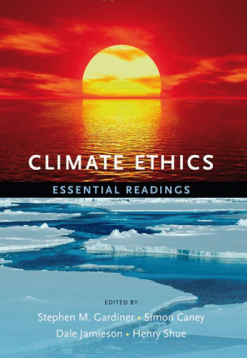
"Per capita emissions allocated according to Contraction and Convergence [2030 convergence year] under an emissions pathway designed to stabilize atmospheric GHG concentrations at 450 ppmv CO2 equivalent."
Climate Ethics
Henry Shue
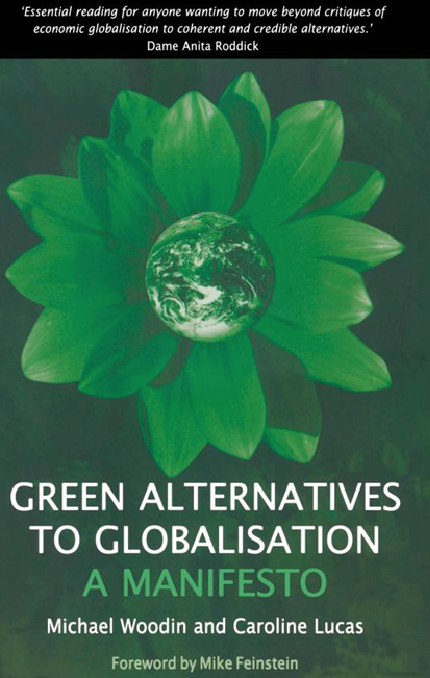
A robust emissions-trading scheme should be introduced as part of a new iunternation treaty to cut greenhouse gas emissions, based on the contraction and convergence (C&C) model. Under the C&C model each country would be allocated the same per capita allowance for greenhouse gas emissions.
Green Alternatives to Globalisation: A Manifesto
Michael Woodin, Caroline Lucas

Many Green support the idea of contraction and convergence (C&C).
No-Nonsense Guide to Green Politics Derek Wall
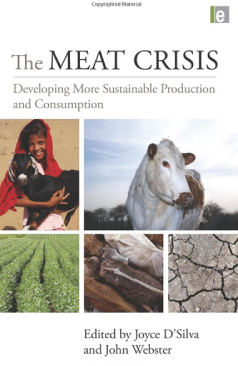
"The Contraction and Convergence strategy, phased in over several decades, would therefore be good for the planet, good for enhancing global equity and generally good for population health."
Meat Crisis
Joyce D’Silva and John Webster
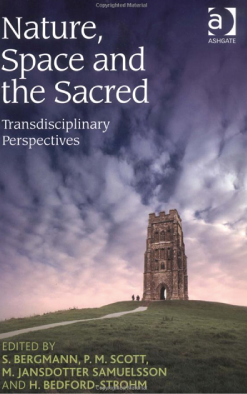
"Nature, Space and the Sacred known as ‘Contraction and Convergence’ which was first advanced by Aubrey Meyer at the Global Commons Institute."
Nature, Space and the Sacred
P. M. Scott, M. Jansdotter Samuelsson, H. Bedford-Strohm, S. Bergmann

"With their huge population China now emits more greenhouse gas each year that the United States. This problem can be resolved using a principle called Contraction and Convergence [C&C]."
Evolution’s Edge: The Coming Collapse and Transformation of Our World
Graeme Taylor
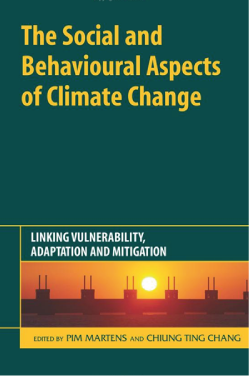
“The EU position resembles the Contraction and Convergence [C&C] approach, which requires long-term convergence of per capita emissions, while affording countries with per capita emissions below the global average the right to increase further their emissions before reducing them in line with the required global average.”
"The Social and Behavioural Aspects of Climate Change"
Pim Martens
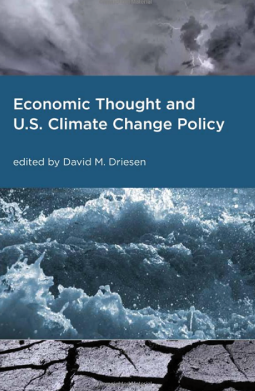
"Contraction and Convergence. The Global Commons Institute has suggested setting a deadline of either 2020 or 2050 for reaching an equal shares allotment. See GCI briefing www.gci.org.uk"
Economic Thought and U.S. Climate Change Policy
David M. Driesen

"One widely discussed and advocated framework for tackling climate change which claims a strong foundation in this mythic position of climate change as social justice is that of 'Contraction-and-convergence' (Meyer. 2001). Contraction-and-convergence has been widely endorsed by organizations ranging from the international negotiating bloc of the Africa Group, the Church of England, and from individuals such as Germany's Chancellor, Angela Merkel. The Indian Prime Minister has repeatedly stressed this principle when articulating the negotiating
position of his country in international negotiations: 'Longterm convergence of per capita emissions is ... the only equitable basis for a global compact on climate change' (Singh. 2008)."
The Future of Ethics
Stefan Skrimshire
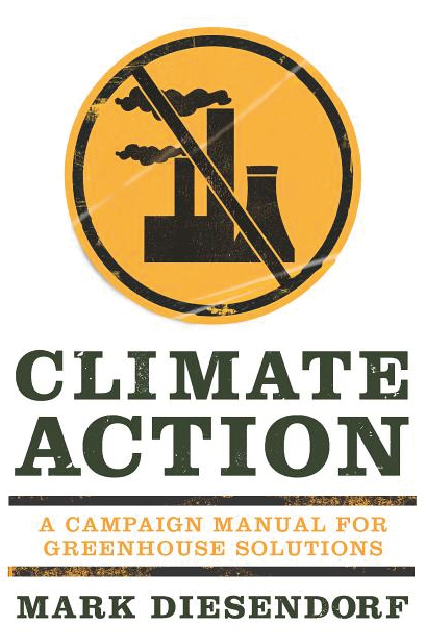
An international agreement to set the nations on the pathway known as Contraction and Convergence with the goal of achieving the same average per capita greenhouse gas emissions by all countries within several decades is essential policy for the 21st Century.
Climate Action a campaign manual for greenhouse solutions
Mark Diesendorf

"Contraction and Convergence, the proposal put forward by the Global Commons Institute, may be the only fossil fuel reduction scheme acceptable to the rapidly developing nations of S E Asia."
Countdown: Responding to a Global Crisis
Michael V. Thomas
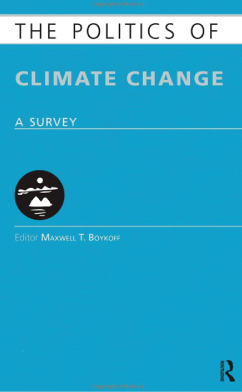
Contraction and Convergence is a concept that refers to a long-term strategy for reducing global greenhouse gas (GHG) emissions. This is a process where overall GHG emissions are reduced (contraction) while emissions reductions from the Global South would be less aggressive than those of the Global North through per capita allocation so a, to enable development in the Global South as well as flexibility for a transition from carbon based energy sources to renewable energy sources. This proposal has gained support from a number of policy participants with a particular sensitivity to issues of climate justice and equality. Eventually, all emissions entitlements would converge at an equal per capita emissions level dependent upon particular geography and political economy.
The Politics of Climate Change
Maxwell T. Boykoff (Editor)
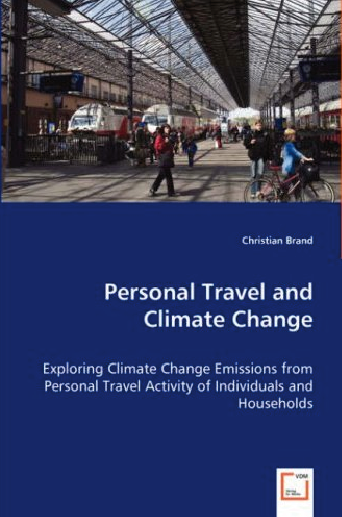
Avoiding negative environmental and social consequences (Jackson, 1985) - it is the underlying philosophy of the `contraction and convergence’ approach discussed later.
Personal Travel and Climate Change
Exploring Climate Change Emissions from Personal Travel Activity of Individuals & Households
Christian Brand

Avoiding extreme climate change would require the worldwide adoption
of significant behavioural and policy changes towards the reduction
of greenhouse gas emissions. The only ethically sustainable solution would
involve the progressive equalisation of emission rights for all the inhabitants
of the planet. The notion of ‘contraction and convergence’ advanced by Aubrey
Meyer is possibly the best proposal in this respect.
Communicating Global Responsibility?
Discourses on climate change and citizenship
Professor Anna Carvalho, University of Minho Portugal

C&C Demonstration in Trafalgar Square London
"Contraction & Convergence is the logical conclusion of an equitable approach to resolving climate change."
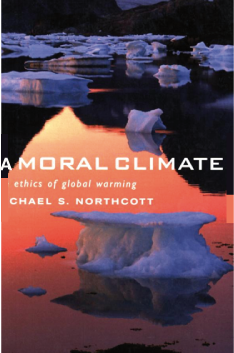
"This approach is given the name of contraction and convergence as articulated by Aubrey Meyer of the Global Commons Institute."
A Moral Climate: The Ethics of Global Warming
Michael S. Northcott
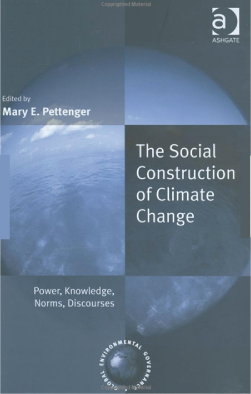
"The contraction and convergence framework models how the trajectory of emissions would travel if we were to start from status quo emissions distribution and mover towards per capita equality [convergence] while reducing emissions to an overall level shich is a politically set goal to achieve climate stability [contraction]."
The Social Construction of Climate Change: Power, Knowledge, Norms, Discourses
Mary E. Pettenger
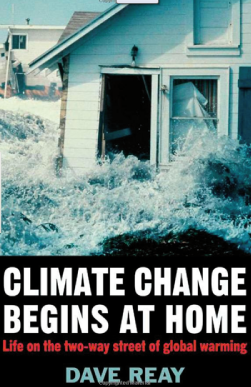
"Then imagine the reactions to the news that instead of no new taxes, everyone will be getting quotas under the ground-breadking Contraction and Convergence model."
Climate Change Begins at Home: Life on the Two-Way Street of Global Warming
Dave Reay
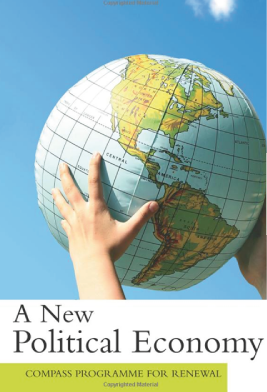
"Contraction and Convergence seems a long way off the agenda at present, but such a programme seems the only likely lon-term way to secure an acceptable level of emissions at the global level."
A New Political Economy: Compass Programme for Renewal
Hetan Shah Martin McIvor
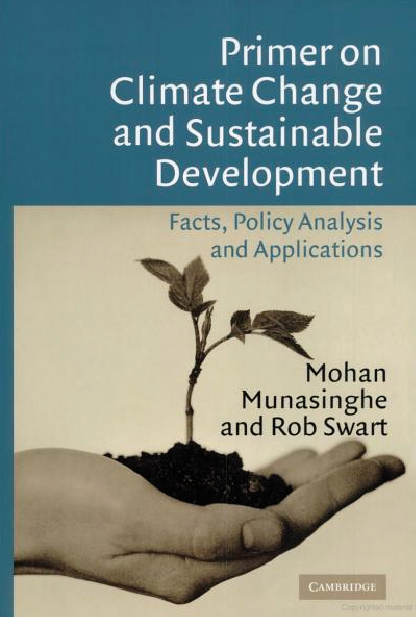
From a scientific perspective it is interesting to consider the issues of ‘common but differentiated responsibilities’ and ‘bureden-shring’ in the context of meeting the ultimate objective of the UNFCCC. A ’rights-based’ approach wold be based on equal rights of people to the global commons and can be translated into equal per capita emissions rights. This is the backbone of the 'contraction & convergence' approach that has been embraced in the climale change policy debate by quite a number of non-govemmental and political groups, 'contraction' implying a global reduction of carbon dioxide emissions consistent with the canying capacity of the atmosphere, and 'convergence' referring to converging per capita incomes in different regions at some future date.
Primer on Climate Change and Sustainable Development
Mohna Munasinghe and Rob Swart
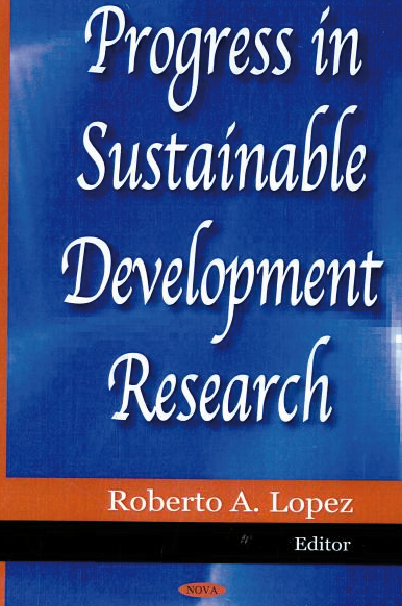
Climate Change has health impacts and is arguably the most important global health issue of the 21st century, as it threatens to undermine the environmental conditions that sustain life on earth. Fossil fuel buming is impacting un the Earth's climate, through build-up of carbon dioxie in thc atmosphere. The atmosphere is a global, limited resource. Developed Countries such as the UK are using a disproportionately large share of the atmosphere. The UK emits 10 to 12 tonnes of carbon per person per year, compared with a global average of 1.2 tonnes per person. This resource should be distributed equitably between countries which should not exceed a fair 'carbon allocation (ESRC 2001) the so·cal1ed Contractiona and Convergence framework.
The NHS both contributes to climate change and wil1 have to deal with its health impacts.
It is a high priority for the NiHS to reduce its caroon dioxide emissions.
Progress in Sustainabale Development Research
Roberto A Lopez
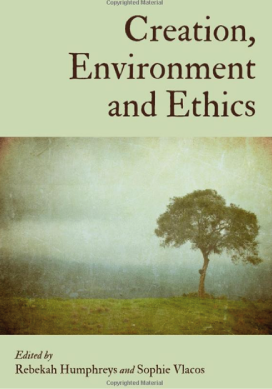
"This is what the White Paper favours a particular interpretation of the principle by Aubrey Meyer, the contraction and convergence account in which there would be contraction of the total emissions and convergence to equal human entitlements."
Creation, Environment and Ethics
Rebekah Humphreys (Author, Editor), Sophie Vlacos
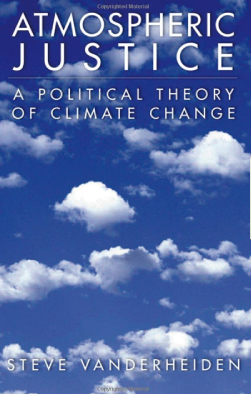
"The contraction and convergence scenario offers an alternative normative foundation for the equal shares approach to assigning national emissions caps."
Atmospheric Justice: A Political Theory of Climate Change
Steve Vanderheiden
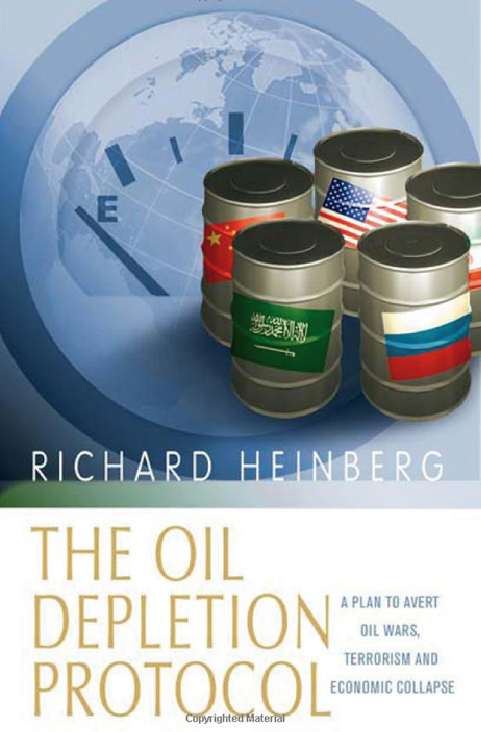
Some organizations believe that the Kyoto Protocol, while a step in the right direction, could be improved upon. Perhaps the most widely discussed alternative proposal is 'contraction and convergence’ from the Global Commons Institute.
Oil Depletion Protocol: A Plan to Avert Oil Wars, Terrorism and Economic Collapse
Richard Heinberg
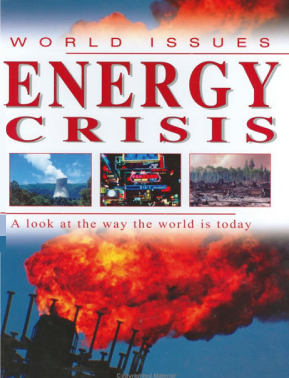
"The Kyoto agreement was a start. Now there is a new idea Contraction and Convergence."
Energy Crisis
Ewan McLeish

The point is made by those promote more drastic solution such as the `contraction and convergence’ promoted by the Global Commons Institute.
Energy Beyond Oil
Paul Mobbs
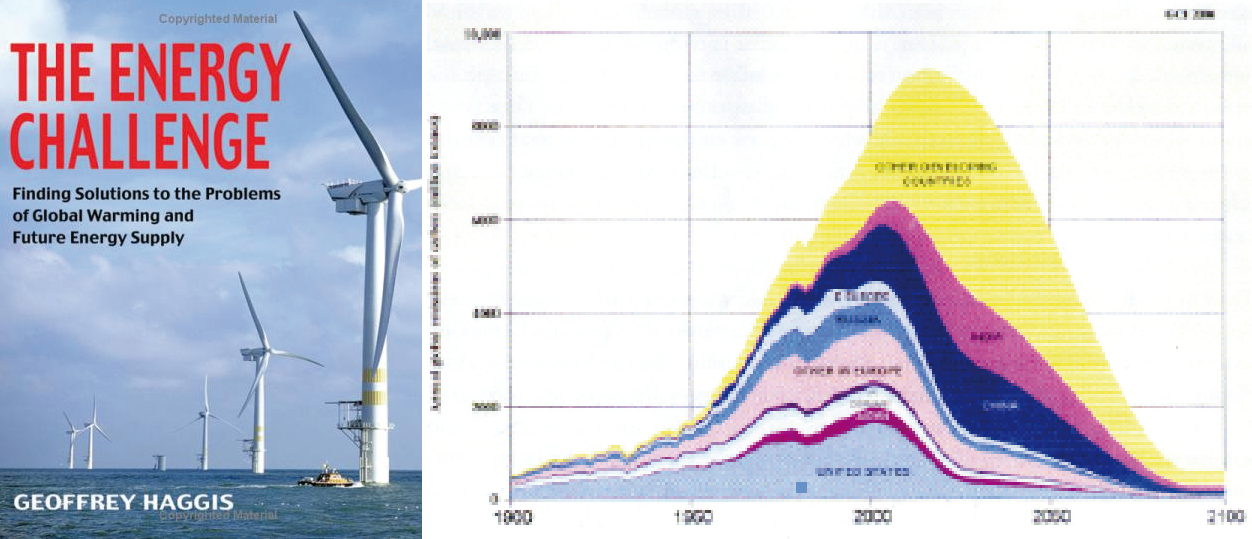
Future Emission Reduction Negotiations
It is accepted by all that the present Kyoto Protocol is still only a start. By 2012 new targets must be set to achieve genuine reductions in emissions. A musician, Aubrey Meyer, concerned about the problems of implementing the present agreement, has proposed a fair solution to the global warming problem. He feels that it has the 'harmony and internal consistency' of music.
The Energy Challenge
Geoffrey Haggis
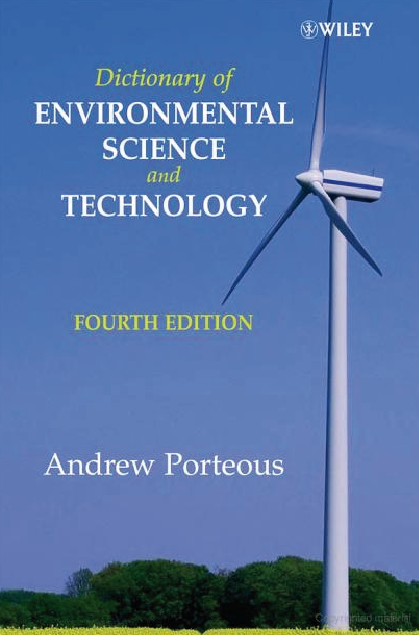
Contraction and Convergence" A shorthand term for the equitable distribution of carbon dioxide releases to atmosphere, so that each nation eventually has the same per capita emission level. This would achieve (in time) a stabilized global CO2 ceiling level of say 450 ppmv. Thc Royal Commission on Environmental Pollution's 22nd Report 'Energy - the Changing Climate' of June 2000 has stated: 'The most promising and just basis for securing long·tcrm agreement is to allocate emission rights to nations on a per capita basis - enshrining the idea that every human is entitled to release into the atmosphere the same quantity of greenhouse gases. But because of the very wide differences between per capita emission levels around the world and because current global emissions are already above safe levels, there will have to be an adjustment period covering several decades in which nations' quotas converge on the same per capita level This is the principle of "Contraction and Convergence" which we support'. The Royal Commission went on to say:
'For the UK, international agreement along these lines which prevented carbon dioxide concentrations in the atmosphere from exceding 550 ppmv and achieved convergence by 2050 could imply a reduction of 60 per cent from current annual carbon dioxide emissions by 2050 and perhaps of 80 per cent by 2100. These are massive changes'.
Dictionary of environmental science and technology
Andrew Porteous
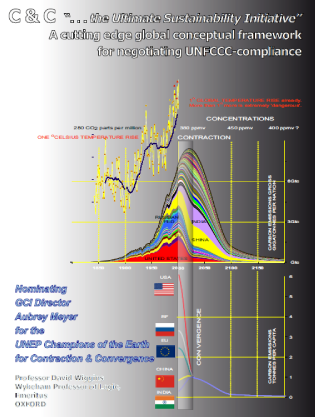
Contraction and Convergence “. . . the Ultimate Sustainability Initiative”
A cutting edge global conceptual frameworkfor negotiating UNFCCC-compliance
Nominating GCI Director Aubrey Meyer
for the UNEP Champions of the Earth
for Contraction & Convergence
Professor David Wiggins - Wykeham Professor of Logic, Emeritus OXFORD
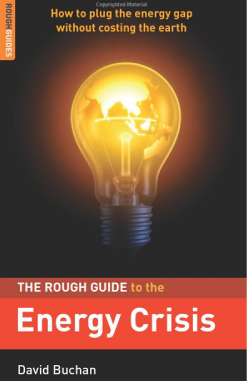
The “Contraction and Convergence” proposal. The idea is that overall emissions should contract to a safe level. and that per capita emissions should converge to the same level for all. It can hardly be faulted on moral grounds.
The Rough Guide to the Energy Crisis
David Buchan
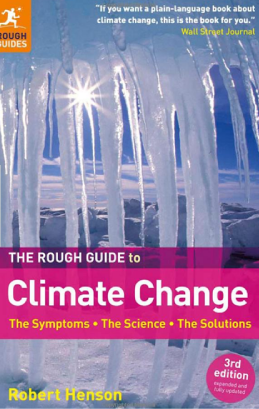
Aubrey Meyer Contraction and Convergence [2001]. The full story about one of the leading
candidates for a post-Kyoto system if controlling greenhouse emissions. Meyer developed C&C more than a decade ago and makes the case for it with passion and conviction.
The Rough Guide to Climate Change Third Edition
Robert Henson
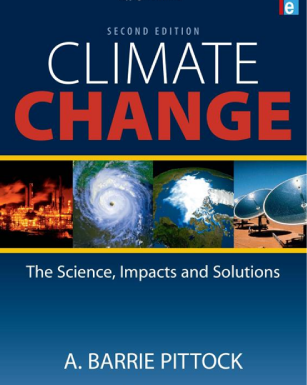
Contraction and Convergence. This proposal originally from the Global Commons Institute in the UK, defines as the goal a target of stabilised greenhouse gas concentration, assesses a global emissions pathway [variation in emissions with time] that would lead to this goal, and allocates emissions pathways to individual countries aimed at converging on the same emissions per capita at some future date such as 2050 or 2100. This would allows some initial increase in emissions per capita, but greater reductions for countries with high emissions per capita.
Climate Change: The Science, Impacts and Solutions A. Barrie Pittock
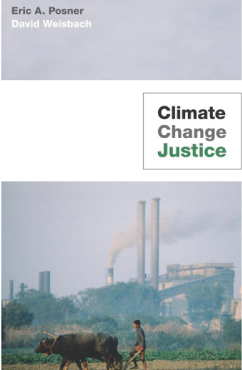
"A number of commentators have supported a slow move towards equal per capita emissions on the theory that a slow transition reduces disruptions, calling this approach contraction and convergence."
Climate Change Justice
Eric A. Posner David Weisbach

A fairer system would be based on per capita emissions such as the “Contraction and Convergence” model championed by the Global Commons Institute.
People-First Economics
David Ransom
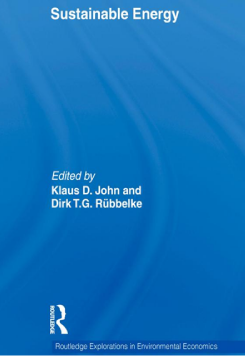
Different visions of the energy system and how the low carbon transition is employed.
“Contraction and Convergence” - Global Commons Institute.
Sustainable Energy (Routledge Explorations in Environmental Economics)
Klaus D. John, Dirk Rübbelke
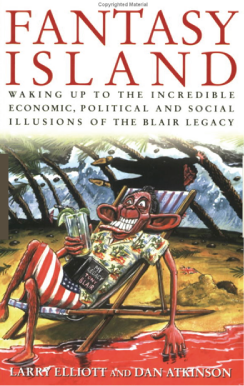
"However, policy makers do have an off-the-peg mechanism for tackling global climate change at a global level, known as Contraction and Convergence."
Fantasy Island
Larry Elliott Dan Atkinson
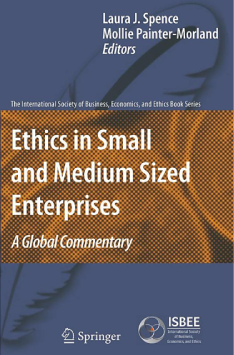
"South African musician Aubrey Meyer has secured the support of several countries and international agencies for his “Contraction and Convergence” strategy to tackle the fundamental causes of global warming.”
Ethics in Small and Medium Sized Enterprizes
Laura J Spence
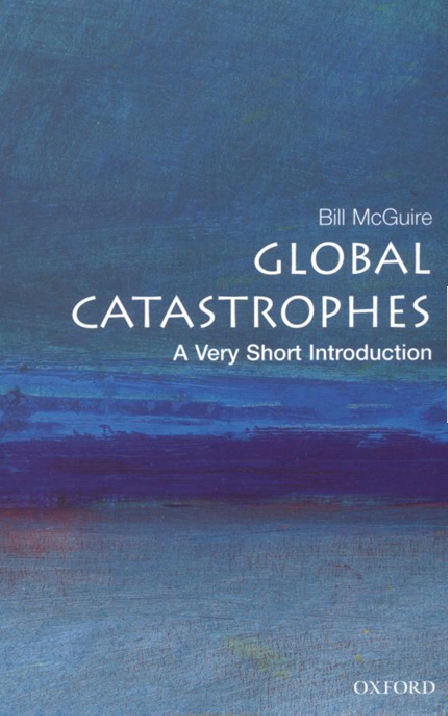
There is an alternative plan to reduce greenhouse gas emissions on the table that might just start things moving along the road to stabilization and even reduction called ‘Contraction and Convergence’ or simply C&C.
Global Catastrophes: A Very Short Introduction
Bill McGuire
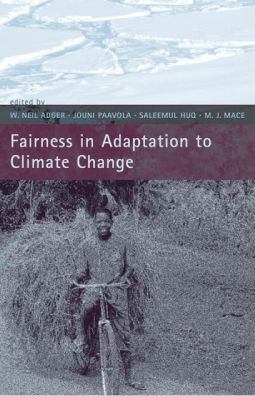
The history of the climate negotiations shows that such commitments for developing countries, even for the most powerful and resource rich of them, can only be within reach if they are perceived as fair and just. This is a political fact. The concept of Contraction and Convergence may be very difficult to give concrete shape, but the idea needs to be present in the future structure of an international climate regime. Principles of justice must however, also be reflected at the national level where they raise difficult problems of equality, with potentially far-reaching politcal connotations.
Fairness in Adaptation to Climate Change
W. Neil Adger, Jouni Paavola, Saleemul Huq, M. J. Mace
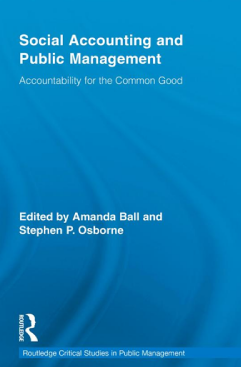
“Contraction and Convergence” - Global Solution to Climate Change. Devon. UK Green Books
Social Accounting and Public Management (Routledge Critical Studies in Public Management) Stephen P. Osborne, Amanda Ball

Significantly this translates exactly into Aubrey Meyer’s visionary yet scientific ‘Contraction and Convergence’ proposition for how humankind might still tackle climate change. See Aubrey Meyer
‘The Case for Contraction and Convergence’ in Cromwell and Levene, ‘Surviving Climate Change’.
The Oxford Handbook of Genocide Studies (Oxford Handbooks in History)
Donald Bloxham, A. Dirk Moses.
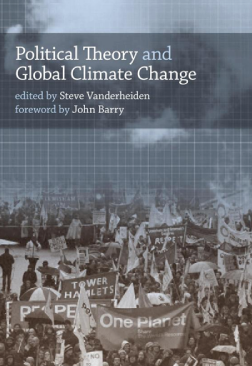
Relying on past cases of appropriorion or allocation of other unclaimed resources from the "globa[ commons" of Antarctica, the oceans and the moon, Raymond finds link precedent ror any of the five standard allocation arguments. Instead the recurring Humean claim to exclusive national property rights based in possession (like those implicit in GHG emission rights) is often opposed by "a more radical egalitarian re jection of any exclusive control that does not benefit all citizens of the world." Such a view can be seen, he suggests, in the Common Heritage of Mankind [CHM] principle that has been proposed for the management of the high sea, and that is reflected in the Moon Treaty. This principled resistance to what Raymond terms the ‘enclosure’ of the global commons contrasts with schemes that assume private-property-right allocation to be a necessary mechanism for avoiding the "tragedy of the commons," of an over-appropriated atmosphere. Despite its explicit rejection in principle of the private allocation of the atmosphere’s absorbtive capacity, Raymond identifies several coneptual links between the CHM idea and the "Contraction and Convergence” proposal for an equal per capita
assignment of national emissions shares, and sees in this ideal the potential to overcome several prominent normative objections to the privatization of the atmosphere.
Political Theory and Global Climate Change
Steve Vanderheiden, John Barry
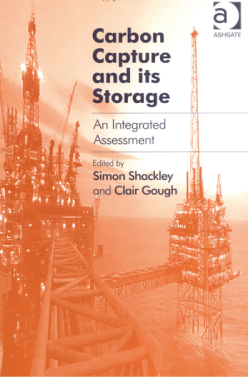
Setting out to demonstrate International Leadership on action against climate change, the UK set a national target of 60% reduction in CO2 emissions by 2050 in its Energy White Paper [2003]. The 60% was derived through a Contraction and Convergence approach [Meyer 2000] to meet the 550 ppmv atmospheric CO2 concentration stbilisation target [RCEP 2000].
Carbon Capture and Its Storage: An Integrated Assessment
Ashgate Studies in Environmental Policy and Practicw
Simon Shackley Clair Gough
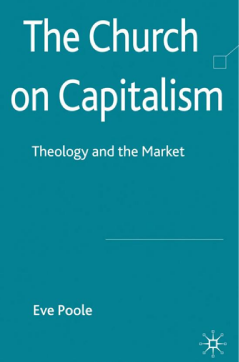
The same motion commended to consumers of material energy the approach of “Contraction and Convergence”.
The Church on Capitalism: Theology and the Market -
Eve Poole

The slowly increasing acceptance of Contraction and Convergence which the Global Commons Institute put foward as a means of fairly apportioning global CO2 emissions rights on an equal per capita basis.
Green Spirituality: One Answer to Environmental Problems and World Poverty - Chris Philpott

Climate scientists have proposed a contraction and convergence approach in order to share out the impacts of climate change in a more equitable manner on a global scale. This approach adopts the following principles: -
The precautionary principle
The polluter-pays principle
The equity principle
Eco-Theology Celia Deane-Drummond
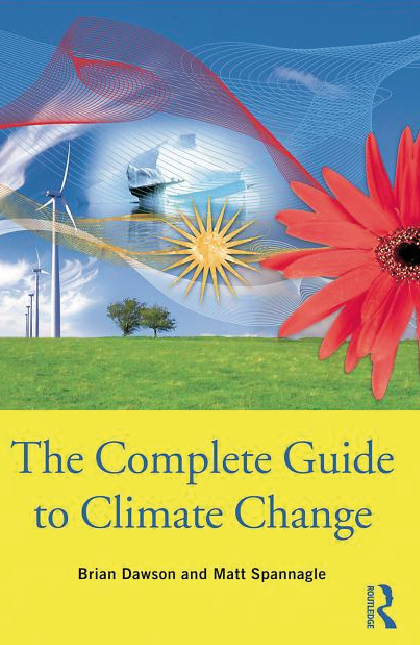
Equal per capita emissions allocations underlie the “contraction and convergence” framework put forward by organization, such as the Global Commons Institute. Under this approach, annual emissions per capita in different countries would be allowed to converge toward similar levels over time and possibly roughly equate to the rate at which the natural systems can absorh the excess greenhouse gasses in the
atmosphere (thus stabilizing concentrations). This would require contractions in emissions by some countries and allow increases in emission, in others. Some also suggest that this should form a basic principle underlying the allocation of emissions caps in a global emiss ions trading system, should one eventually be established. Elements of the principle of contraction and convergence have merit and should on equity grounds hold some sway in the international negotiation proces. However, a single equal allocation of emissions rights across the globe is somewhat
simplistic and may not necessarily lead to an efficient outcome. Different countries have different resource endowments, different population growth rates ane different opportunities for cost-effective emissions reductions. Countries are also likely to face different transitional constraints and adjustment burdens. These differences would at least to some extent need to be reflected in any negotiated agreement to
ensure that they did not present perverse incentives or excessive burdens to particular countries. The allocution of emissions rights would also need to take into account international flows of embodied emissions. Understandably, there is considerable resistance to the contraction and convergence principle alliong countries that have high per ca pita emission levels.
The Complete Guide To Climate Change
Brian Dawson and Matt Spannagle

Because of the long phase-in time that would be required to move toward per capita allocations in the developed nations. those developing nations pushing for per capita allocation have proposed an approach usually re ferred to as ·'contraction and convergence’.
Contraction and convergence means an allocation that would allow the large emitter nations long enough time, perhaps thirty or forty years to contract their emissions through the replacement of greenhouse gas-emitting capital and infrastructure and eventually converge on
a uniform per capita allocation. Support for contraction and convergence has been building around the world with the European Parliament in 1998 recently calling for its adoption with a 90 percent majority. A per capita allocation would be just for the following reasons:
• It treats all individuals as equals and therefore is consistent with theories of distributive justice .
• It would implement the ethical maxim that all people should have equal rights to use a global commons.
• It would implement the widely accepted polluter-pays principle
American heat: ethical problems with the United States’ response to global warming
Donald A. Brown.
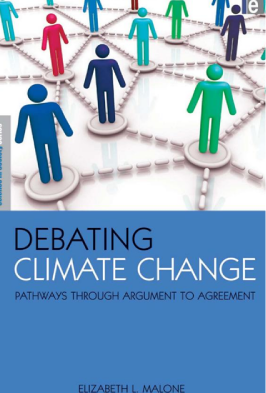
Aubrey Meyer takes this tack in advocating. C&C is the idea that each person should get an allowance of greenhouse gas emissions; at first wealthy country citizens would get a larger allowance than citizens of poorer countries but eventually the allowances would converge to one amount, which would contract to the level commensurate with climate stabilization. What Meyer does, in a steady stream of emails and on his web is Contraction and Convergence to point to statements made by others that either explicitly or implicitly refer to this idea. Thus over time he has developed a very long list of people who agree with contraction and convergence.
Debating Climate Change: Pathways Through Argument to Agreement
Elizabeth L. Malone
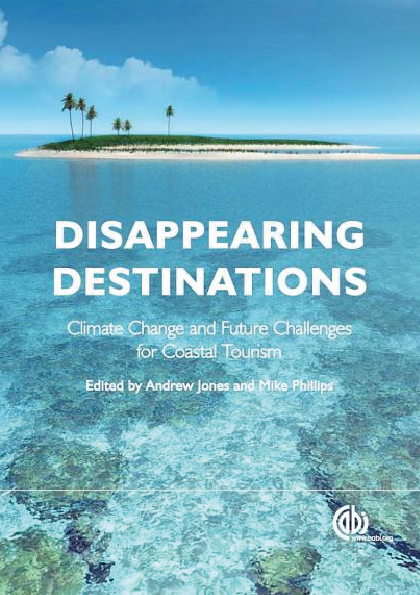
The Royal Commission on Envrionmental Pollution (RCEP) in its 22nd Report, Energy: The Changing Climate had, inter alia, already addressed these two issues with the Commisslon favouring the 'contraction and convergence' approach, which would allow an equaJ per-capita emission allowance to every citizen of the world, thus 'the result of this new allocation would, of course, be an enormous reduction for the current high emitters and some scope for emissions growth by developing countries [http://jel.oxfordjournals.org/cgi/pdf_extract/13/2/287 ] What is interesting is the broad conclusion of the 22nd Report; a reduction
by industrialized countries of 60% or more by the year 2050, was formally adopted by tbe UK Government in the Energy 'White Paper of 2003 (OTI, 2003), only to be taken to a legally binding target of at least an 80% cut in greenhouse gas emissions by 2050 with a reduction in emissions of at least 34% by 2020 by
the Climate Change Act 2008.
Disappearing Destinations
Andrew Jones Mike Phillips
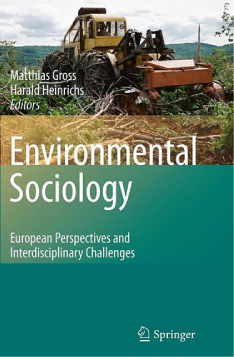
The Bush administration lost its credibility to developing countries due to its unwillingness to accept such obligations and start reducing immediately according to a “Contraction and Convergence” regime.
Environmental Sociology: European Perspectives and Interdisciplinary Challenges
Matthias Gross, Harald Heinrichs
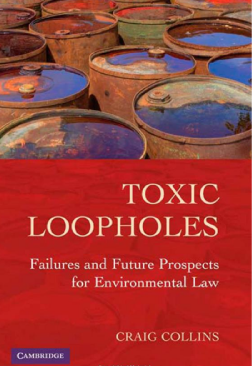
The basic plan, known as ‘Contraction and Convergence’ has important advantages. It takes into account differing circumstances and means of all countries [rich and poor], thereby meeting the developing countriesm for fairness, at the same time it eventually imposes the same climate-safe GHG limits on everyone.
Toxic Loopholes: Failures and Future Prospects for Environmental Law
Craig Collins
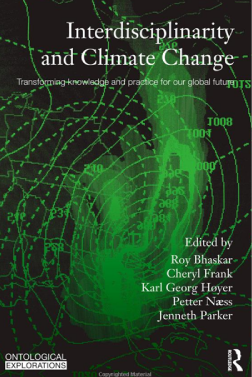
Such has been the origin of new concepts like ‘Contraction and Convergence’ [Meyer 2000], influential at Kyoto, based on the principle of equal use of atmospheric resources by the world’s citizens.
Interdisciplinarity and Climate Change (Ontological Explorations)
Roy Bhaskar, Cheryl Frank, Karl Georg Høyer, Petter Naess, Jenneth Parker

‘Contraction and Convergence’ a proposal to reduce GHG emissions in which every country converges on the same per capita allowance of emissions.
Climate Change in Canada (Issues in Canada)
Rodney White
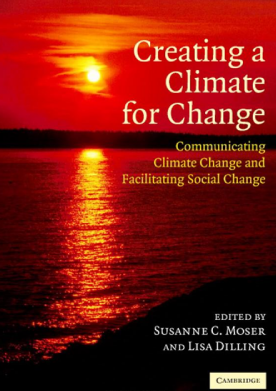
It is imperative that any climate mitigation regime take into consideration issues of ethics humanc right and justice. EcoEquity and the Centre for Science and the Envrionment lay out a visiou for fairness that in their words is equal per capita rights to the atmosphere. Internationally this vision is captured in the proposed “Contraction and Convergence approach which reduces emissions from developed high emissions countries and over time comes to a worldwide equal but much reduced per capita standard [Global Commons Institute Meyer 2000]
Creating a Climate for Change: Communicating Climate Change and Facilitating Social Change Susanne C. Moser, Lisa Dilling
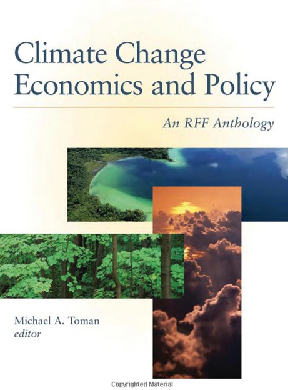
The idea of making per capita emissions the basis for equitable burden sharing Is a much·dlscussed option that Is favored by many developing countries. Such formulas are often referred to as convergence measures. A dynamic example of this approach from the Global Commons Institute is Contraction and Convergence [see suggested reading]. Under this option over time developed countries wound reduce emissions in proportion to their population and developing countries would increase emissions according to their population. Eventually, developed and developing coutries would converge to the same
per capita emissions ratio. For the environmental goals of the UNFCCC to be met, the ratio and length of expected of time until convergence would have to be calculated to ensure the necessary amount of GHG emissions reductions.
Climate Change Economics and Policy:
An RFF Anthology Professor Michael A. Toman
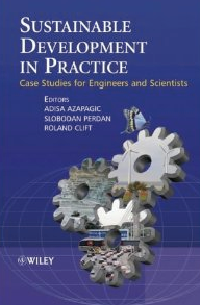
The next step in the RCEP's analysis moved into the socio-economic deploying ethical argument, to address how the tolerable emissions might be allocated among the inhabitants of the planet, "Our view is that an effective. enduring and equitable climate protocol will eventually require emission quotas to be allocated to nations on a simple and equal per capita basis." The policy recommendalion was that “nations emissions quotas (should) follow a contraction and convergence trajectory". Applying the general principle to the specific case of the UK led to the conclusion that UK carbon dioxide emissions (must) be reduced by almost 60% from their current level by mid-century.
Sustainable Development in Practice
Case studies for engineers and scientists By
Adisa Azapagic, Slobodan Perdan, Roland Clift
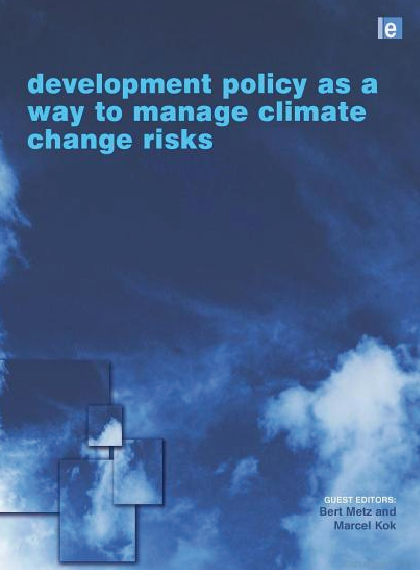
The economics of dealing with climate change - both adaptation and mitigation - must be addressed at the level of macro-economics (Stern, 2007; UNDP 2007). The recognition that climate change requires a macro-ecocnomc or programmatic approach means the linking climate change to the global poverty alleviation programme is a useful way forward. One radical climate change position has been “Contraction and Convergence" which proposes emissions allowances on a per capita basis (Aubrey Meyer 2001).
Development Policy as a Way to Manage Climate Change Risks
Bert Metz Marcel Kok
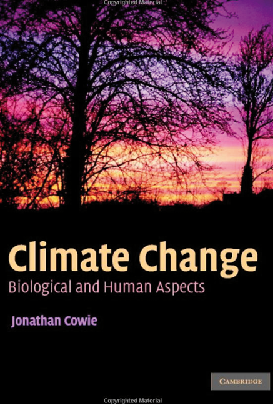
With regard developing and developed nations, carbon emissions and economic growth have been the subject of some discussions about compromise, and indeed it can be found within the Kyoto Protocol. This is the idea of Contraction and Convergence [C&C] [Meyer 2000] The developed , wealthy nations would switch to a low fossil high energy efficiency economy and so contract their carbon emissions.. Meanwhile, the developing nations would be allowed some leeway and so increase emissions. In this way the developing and the developed nations, on a per capita basis, would see their respective emissions converge.
Climate Change: Biological and Human Aspects
Jonathan Cowie
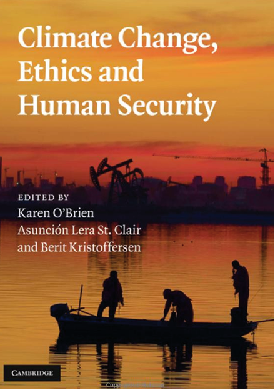
For excellent discussion of the rights of future people see Meyer 2003
Climate Change, Ethics and Human Security [Hardcover]
Karen O’Brien, Asunción Lera St. Clair, Berit Kristoffersen
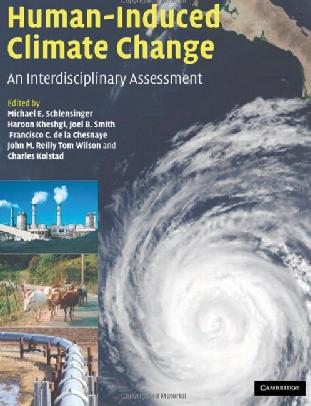
Although several burden sharing schemes such as Contraction and Convergence [C&C] [Meyer 2000] have been proposed, quantitative simulation studies on the subject are scant.
Human-Induced Climate Change: An Interdisciplinary Assessment
Michael E. Schlesinger, Haroon S. Kheshgi, Joel Smith, Francisco C. de la Chesnaye, John M. Reilly, Tom Wilson, Charles Kolstad
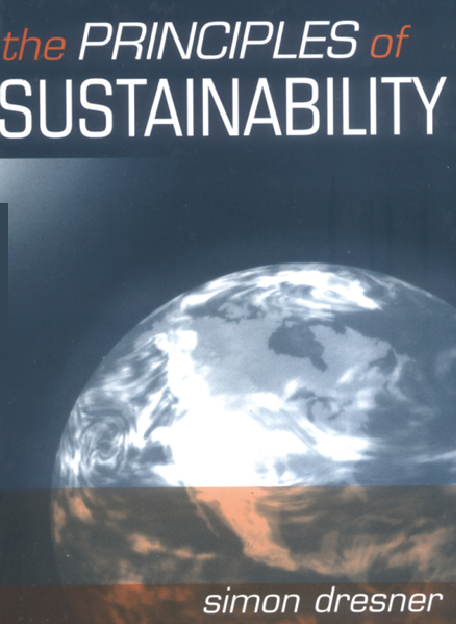
We know something about the principles that would underlie sustainability and it is possible to suggest measures that would move us in its direction, but reflexivity means that it is impossible to draw up a detailed blueprint. Contraction and Convergence is the proposal that the total of emissions produced globally should contract over the next few decades. It is under consideration for the future.
The Principles of Sustainability
Simon Dresner
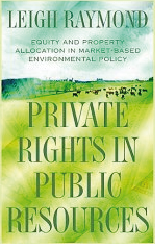
The Contraction and Convergence model from some environmental activists is mentioned in the French proposal. If and when Developing Countries receive their own allocations of emissions rights, C&C may become a much more important distributive principle.
Private Rights in Public Resources:
Equity and Property Allocation in Market-Based Environmental Policy
Professor Leigh Raymond
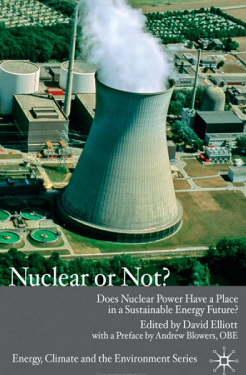
Global Commons Institute 'Contraction and Convergence’ model is leading the field [Meyer 2000].
Nuclear Or Not?: Does Nuclear Power Have a Place in a Sustainable Energy Future?
(Energy, Climate and the Environment) Professor David Elliott
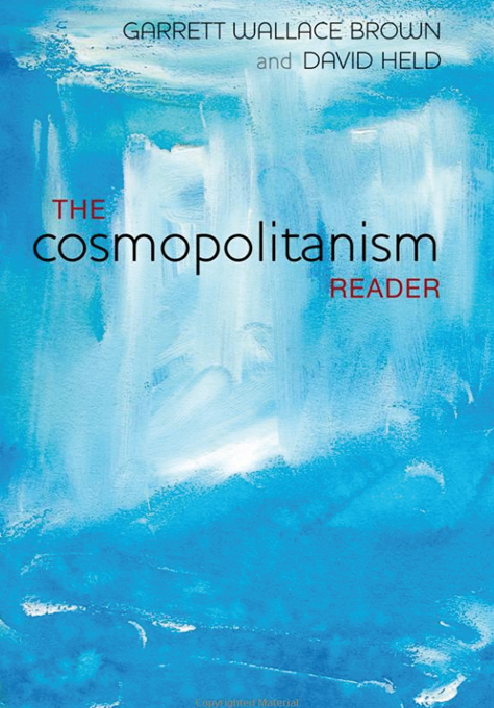
This basis of the highly influential Contraction and Convergence approach to climate change.
The Cosmopolitanism Reader Garrett Wallace Brown David Held

As an immediate enforcement of the per capita entitlement was politically unworkable, software for the continuous Contraction with Convergence of per capita emissions was developed by the Global Commons Institute.
Erfolgreich oder ruinös?:
Transnationale Unternehmen und nachhaltige Entwicklung -
Kritische Reflexionen aus menschenrechtlicher Perspektive -
Johannes Reidel
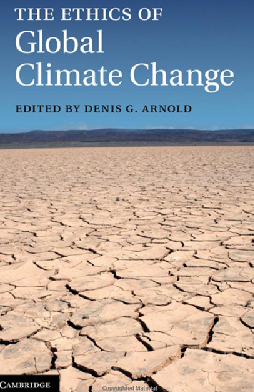
One suggestion made by a variety of different people is that each person has a right to emit an equal amount of greenhouse gases. This view then takes an egalitarian approach to the distribution of one kind of energy right. This view is remarkably popular. It was for example expressed by Anil Agarwal in their Global Warming in an Unequal World. It also underpins the proposal known as Contraction and Convergence which has been developed and defended by the Global Commons Institute.
The Ethics of Global Climate Change
Denis G. Arnold

Contraction and Convergence - one of the most interesting concepts for a contract for peoples’ CO2 justice is currently being discussed under the title Contraction and Convergence [C&C]. Here, a contract of a global CO2 emissions allowable limits in advance [contraction] is proposed with a process of gradually approximating a distribution of emission allowances to egalitarian criteria [convergence].
Principle of sustainability: A draft of theological and ethical perspective
Markus Vogt
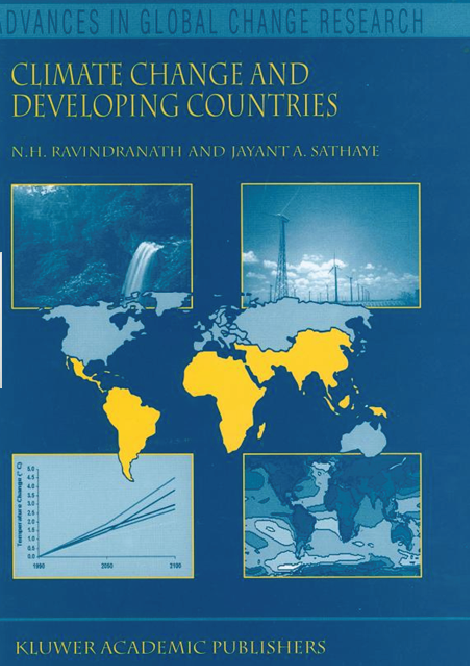
Redress for profligacy, incentives for conservation, allowing resources to be transferred from rich countries to poor ones, thus leading to distributional equity, equity, efficiency and sustainability. A formulation that carries this insight is that of Contraction and Convergence [C&C]. A market based scheme can work well in achieving cost-effective reductions within this allocation framework. Some have suggested using the C&C and per capita entitlements as the basis for long-term negotiations.
Climate Change and Developing Countries (Advances in Global Change Research)
Nijavalli H. Ravindranath, Jayant A. Sathaye

See A Meyer “Contraction and Convergence the Global Solution to Climate Change” or the web-site of the Global Commons Institute for a discussion of the classic “Contraction and Convergence” proposal.
Climate Change Science and Policy Stephen H. Schneider, Armin Rosencranz, Michael D. Mastrandrea, Kristin Kuntz-Duriseti
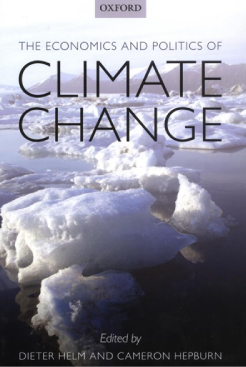
Somewhat more realistically, ‘Contraction and Convergence’ scheme proposes national emissions quotas would start from current levels and very slowly converge - over several decades - to being proportional to population.
The Economics and Politics of Climate Change [Hardcover]
Dieter Helm (Editor), Cameron Hepburn
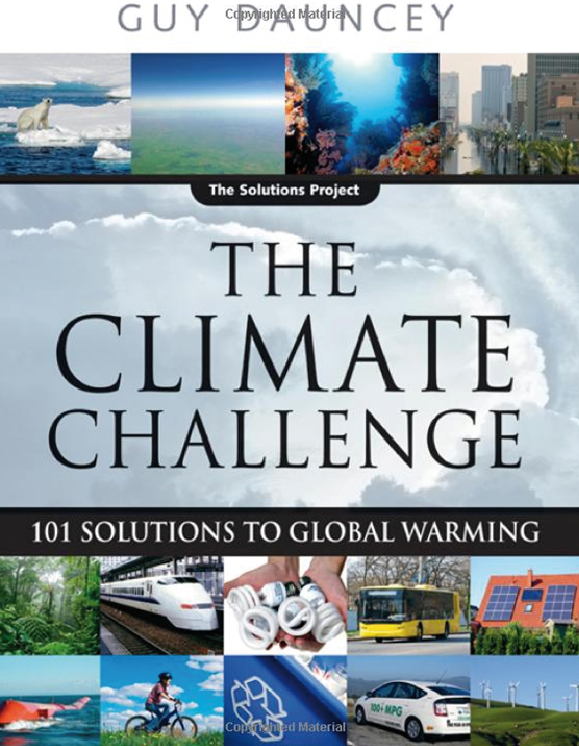
Contraction and Convergence
Aubrey Meyer, a former viola player and composer, has been promoting Contraction and Convergence (C&C) since 1991, soon after he became aware of the dangers that climate change presented, and how little Kyoto would do to solve the problem. C&C would establish an annual global cap on emissions based on the best science; create an entitlement to the emissions that would be shared by all humans, reflecting the principles of justice and equity; allocate each country a share of the emissions based on population; trade the allowable emlssions internationally, creating a considerable flow of money from the richer to the poorer nations; and shrink the availabllity of emissions certifica tes as the annual allowable emissions level was lowered. C&C has won considerable support, Including from some national leaders and many climate leaders. The consensus among its supporters is that C&C should provide the foundation for a future global treaty.
The Climate Challenge: 101 Solutions to Global Warming
Guy Dauncey

In the absence of systemic change, there certainly are things that have been done and more can be done in the future to lessen capitalism’s negative effects on the environment and people. There is no particular reason why the United States can’t have a better social welfare system, including universal health care, as is the case in many other advanced capitalist countries. Governments can pass laws and implement regulations to curb the worst environmental problems. The same goes for the environment or for building affordable houses.
A carbon tax of the kind proposed by James Hansen, in which 100 percent of the dividends go back to the public, thereby encouraging conservation while placing the burden on those with the largest carbon footprints and the most wealth, could be instituted. New coal-fired plants (without sequestration) could be blocked and existing ones closed down. At the world level, contraction and convergence in carbon emissions could be promoted, moving to uniform world per capita emissions, with cutbacks far deeper in the rich countries with large per capita carbon footprints. The problem is that very powerful forces are strongly opposed to these measures. So such reforms remain at best limited, allowed a marginal existence only insofar as they do not interfere with the basic accumulation drive of the system.
What Every Environmentalist Needs to Know About Capitalism
Fred Magdoff and John Bellamy Foster
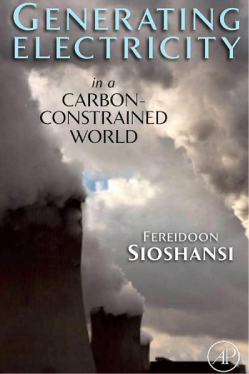
This definition of equity matches that proposed within the ‘Contraction and Convergence’ global approach being championed by German Chancellor Angela Merkel ‘Contraction and Convergence’ the Global Solution to Climate Change Meyer Green Books 2000.
Generating Electricity in a Carbon-Constrained World
Fereidoon Perry Sioshansi
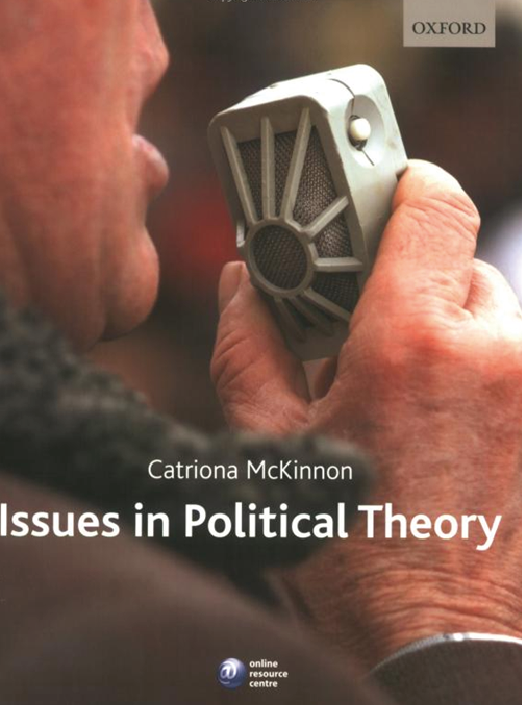
Many analysts endorse Contraction and Convergence
Issues in Political Theory - Catriona McKinnon
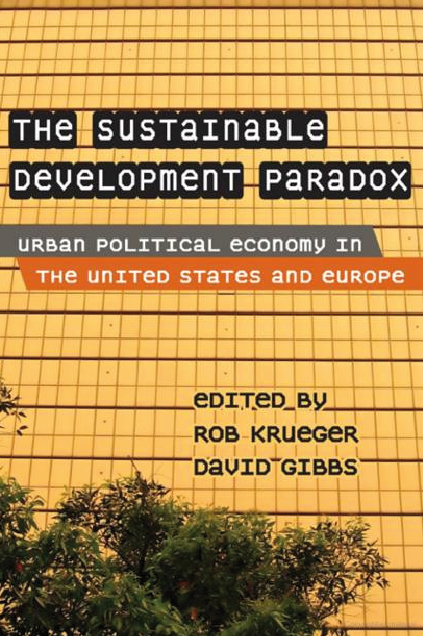
“Contraction and Convergence” - the concept increasingly being taken up international agencies referes to the need to reduce consumption among wealthy states to enable poorer states to raise their standard of living. A similar commitment is needed at the smallest scale so that gender equality can be harnessed to reduce negative envrionnmental impact on the whole population, not just those who have the power and wealth [as currently obtains] or the visibility [the risk of the current environmental movement] to affect policy.
The Sustainable Development Paradox
Rob Krueger David Gibbs
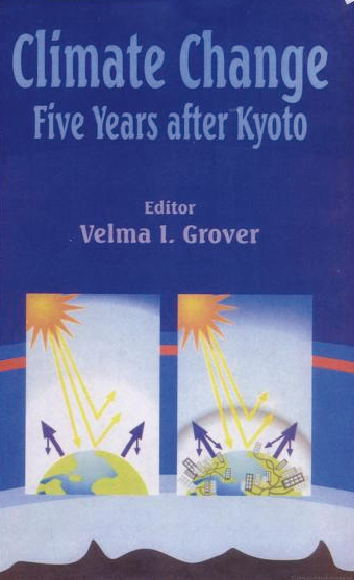
Under what we have termed a “Beyond Kyoto” scenario, all nations would pursue the goals of “Contraction and Convergence” [Meyer 2000] consistent with the IPCC’s findings on carbon-carrying capacity and principles of equity and sustainability. The purpose of the collective effort in this case is to begin the process of withdrawing society from activities presumed appropriate for designing nature. Instead humanity would embrace the goal of restoring a commons relation between society, the atmosphere and climate.
Climate Change Fiver Years After Kyoto
Velma Grover

Contraction and Convergence - the fairest solution, a simple mathematical truth.
The Final Call: Investigating Who Really Pays For Our Holidays
Leo Hickman
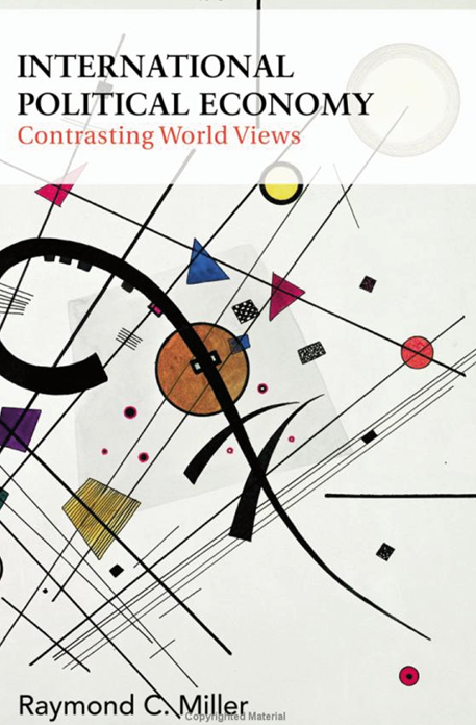
Not private credit needs of corporations and hedge funds, the Contraction and Convergence dimension would impose monetary limits and lead to the contraction of the total of greenhouse gas emissions.
International Political Economy
Raymond Miller

A new climate treaty would at least pay lip service to the obligations of developing nations, although it could probably not require them to reduce emissions. Instead, a new Kyoto might be shaped by the notion of “Contraction and Convergence” [Meyer 2000] now popular in European environmental circles.
Unstoppable Global Warming
Fred Singer Dennis Avery

Recognising the atmsophere as a global commons Contraction and Convergence has been put forward to achieve a low carbon economy.
Ecosystem Services (Issues in Environmental Science and Technology)
Erik Gomez Baggethun, John Murlis, Piran White and John B. Thornes
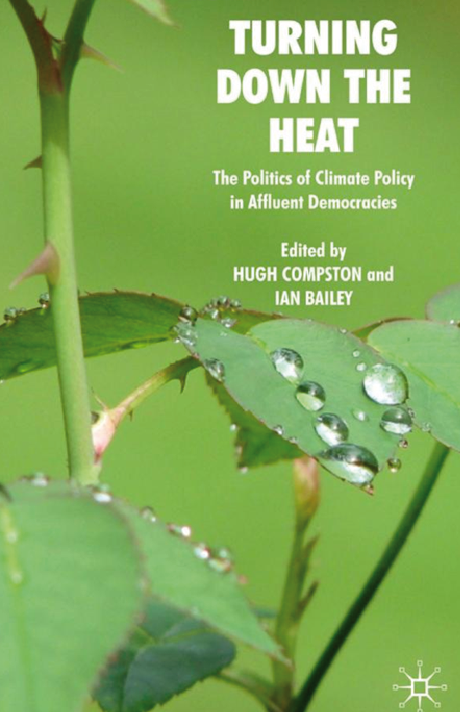
The indicator for assessing liability should be emissions per capita. This approach still informs the French approach and bear similarities to the Contraction and Covnergence approch of Meyer [2000].
Turning Down the Heat: The Politics of Climate Policy in Affluent Democracies
Dr Hugh Compston, Dr Ian Bailey
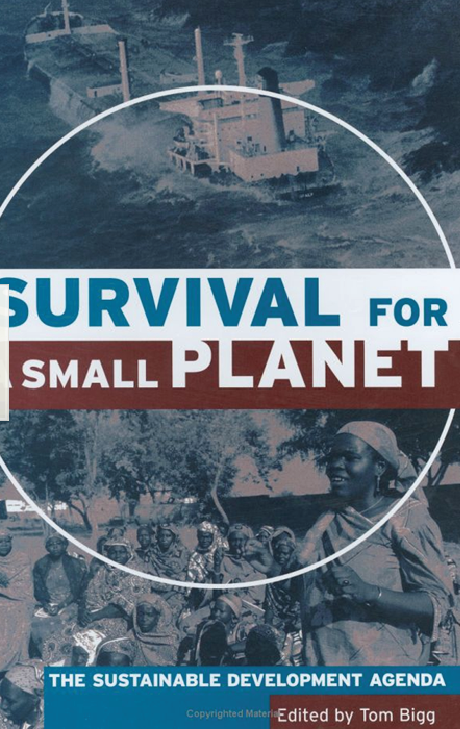
Environmental Space is an essential prerequisite to make the so-called “Contraction and Convergence” approach, now attracting the attention of Climate Convention delegations, viable.
Survival for a Small Planet
Tom Bigg
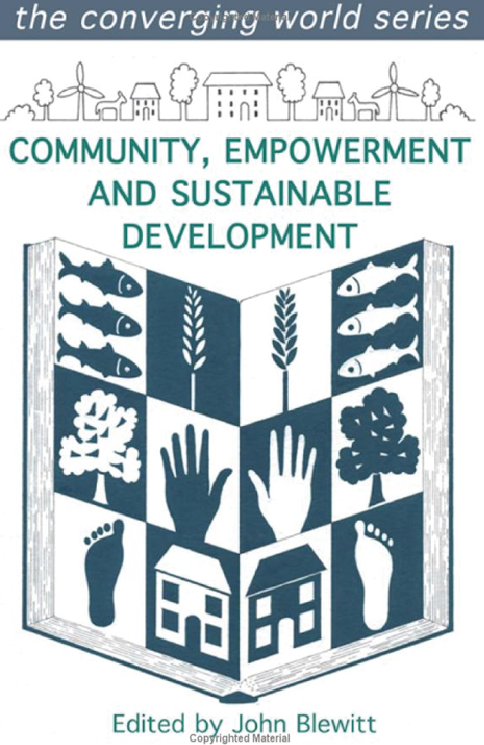
The Converging World Project is a social enterprise that uses the ideas of Contraction and Convergence to reduce the differences in resource us. Aubrey Meyer the orginator of the concept has described it as a beautiful model and it is know by some as a triple-decker sandwich because of its three disctinct benefits.
Community, Empowerment and Sustainable Development (Converging World Series)
John Blewitt
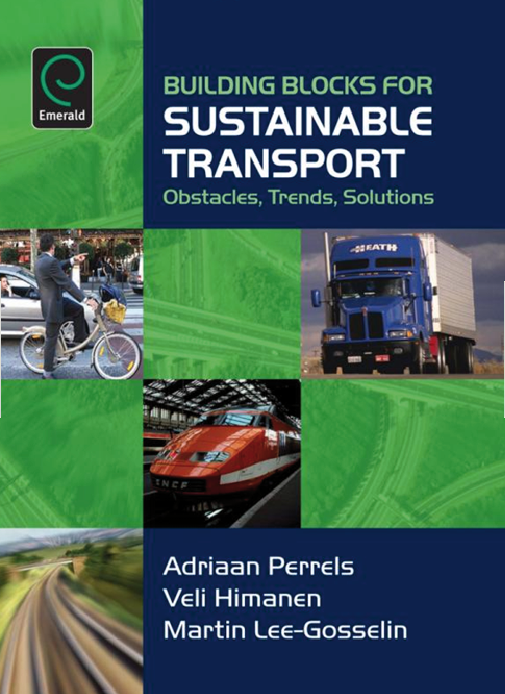
Towards 2030 issues relating to personal tradable emissions are discussed with a view to moving twoards a more stringetn contraction and convergence global environmental future in the UK with the need to travel more buying credits from those that have spare credits from travelling less.
Building Blocks for Sustainable Transport
Adriaan Perrels, Veli Himanen, Martin Lee-Gosselin
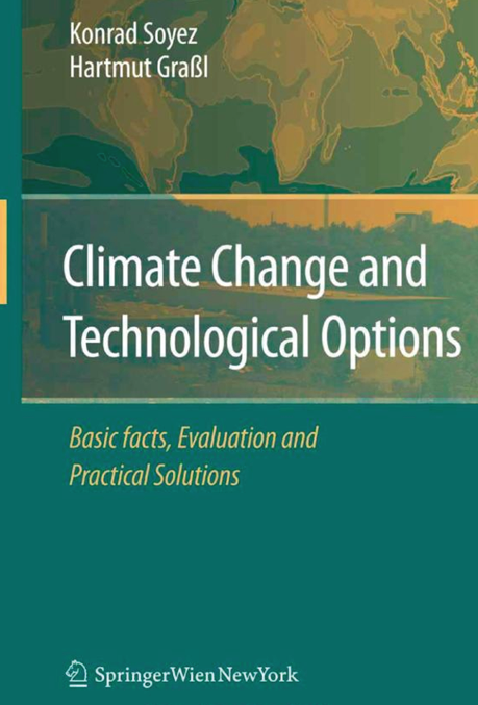
In 2003 and German Advisory Council has shown for a subdivision into eleven regions none would have to invest more than 1.5% of gDP in a contraction and convergence scenario aiming at equal emissions per capita in all regions to be reached by 2100.
Climate Change and Technological Options
Hartmut Grassl
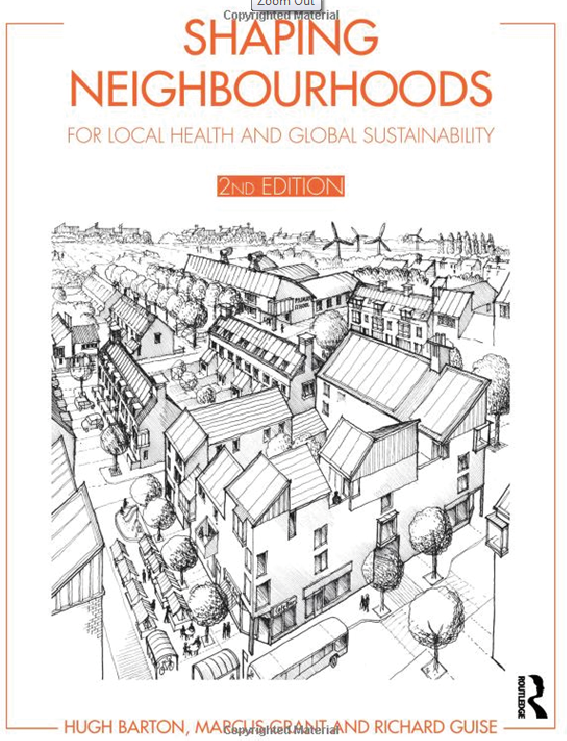
This process is referred to as Contraction and Convergence and the intention is for per capita emissions to be capped for all countries at a level that can sustain human life on the planet.
Shaping Neighbourhoods
Hugh Barton Marcus Grant, Richard Guise

The UK’s target of a 60% reduction by 2050 was originally suggested by the Royal Commission on Environmental Pollution (RCEP) as a means to limit the rise in atmospheric concentrations of carbon dioxide to 550 parts per million (ppm) (RCEP 2000) and was adopted by the Government in the 2003 Energy White Paper (DTI 2003c). The RCEP target was based on the assumption that all nations would be contributing to a global reduction in carbon emissions via a framework called ‘contraction and convergence’. This ensures that over time, firstly global carbon emissions would contract and secondly, there would be global convergence to equal per capita shares of this contraction (GCI 2001). The UK Government has not yet adopted C&C as its international negotiating position for the period after the Kyoto agreement, despite RCEP’s advice. Setting a national target is only part of what is needed to stabilise global atmospheric concentrations of carbon dioxide and other greenhouse gases – it has little value unless it eventually forms part of a strong global agreement, which the UK must work towards achieving.
40% House Brenda Boardman, Sarah Darby, Gavin Killip, Mark Hinnells,
Christian N. Jardine, Jane Palmer and Graham Sinden

Step forward Contraction and Convergence. This framework conceived by Aubrey Meyer of the Global Commons Institute proposed that the world decides how much more CO2 can be emitted and how to share this.
The Optimist’s/Pessimist’s Handbook: A companion to hope and despair
Niall Edworthy Petra Cramsie
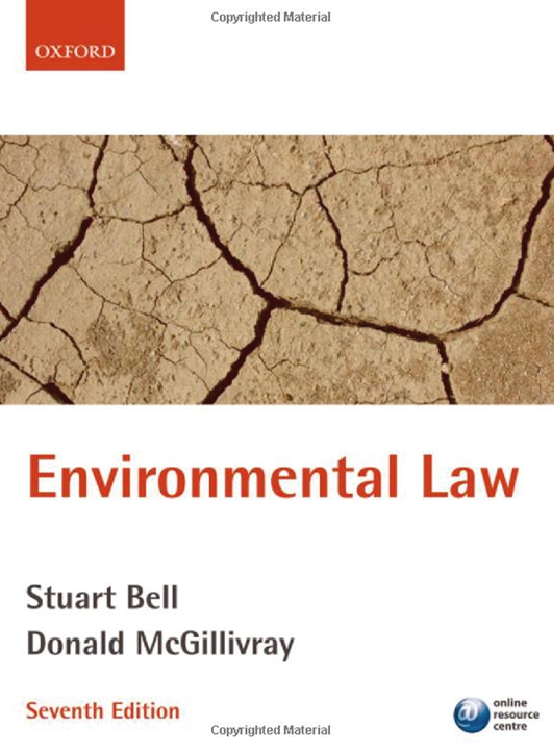
Domestic tradable quotas have strong links with the Contraction and Convergence proposal for a globally fair allocation of emissions rights, under which states would over time have emissions rights on a per capita basis. Contraction and Convergence
Environmental Law
Stuart Bell Donald McGillivray
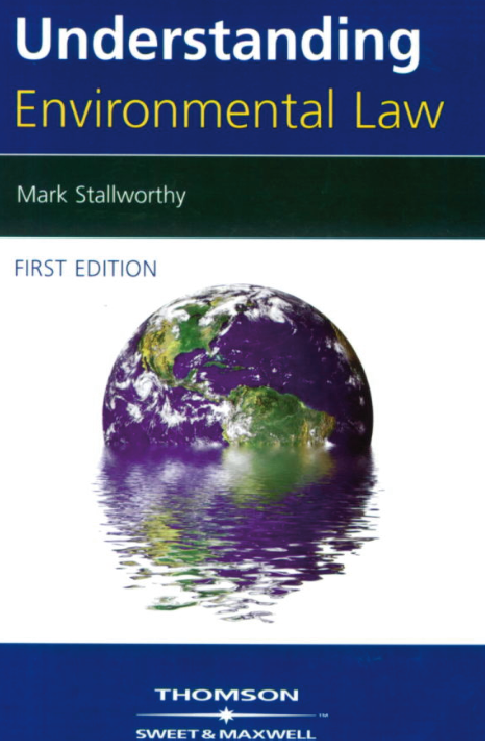
The recognition of differentiated responsibilities is a noble starting point, offering genuine hope for delivering global warming resonses alongside a rebalancing of the inequalities in wealth and capacity leading ultimately towards contraction and convergence.
Understanding Environmental Law
Mark Stallworthy

Aubrey Meyer attended all the sessions at the UNFCCC and has made an important contribution with his theory of ‘Contraction and Convergence’ which proposes setting a global cap and then gradually reducing emissions entitlements until each person on the planet has the same emissions rights.
Lawless World: Making and Breaking Global Rules
Philippe Sands
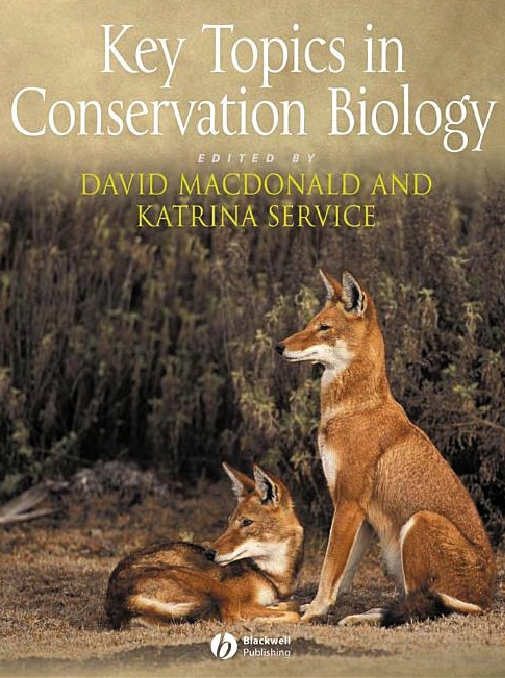
One widely accepted proposal is to stabilize emissions at 450 ppmv through a process of 'contraction and convergence', permitting the developing world to grow economies and emissions while the developed world reduces emissions so that the two converge at roughly equal per capita allocations by 2050, perhaps as a result of trading in carbon permits.
Key Topics in Conservation Biology
David McDonald Katrina Service

Any movement critical of the unrestricted growth of a global Carbon Shop has the good fortune of having available to it at least one already-formulated positive agenda –a rallying point which is both scientifically sound and based on the principle that everyone should have equal rights to use of the atmosphere. This is the principle of “contraction and convergence”. According to this principle,
countries would negotiate (and, if necessary, constantly renegotiate) a ceiling on carbon-dioxide concentrations in the atmosphere in line with changing scientific estimates of the danger level. They would then agree to progressive cuts in emissions which would allow that goal to be reached at the same time that emissions levels among rich and poor were gradually equalized.
The Carbon Shop Planting New Problems
Larry Lohmann - World Rainforest Movement
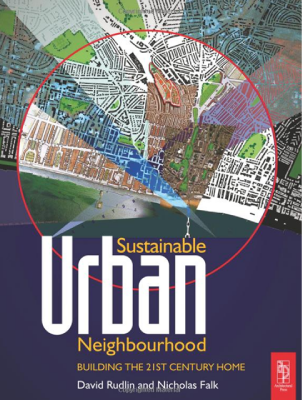
Mayer Hillman of the Policy Studies Institute working with Aubrey Meyer of GCI has promoted the concept of ‘Contraction and Convergence’ global approach being championed by German Chancellor Angela Merkel ‘Contraction and Convergence’ the Global Solution to Climate Change Meyer Green Books 2000
Sustainable Urban Neighbourhood: Building the 21st Century Home David Rudlin BA MTP, Nicholas Falk BA (University College Oxford) MBA (Stanford Graduate School of Business California) PhD in Urban Regeneration (London School of Economics)
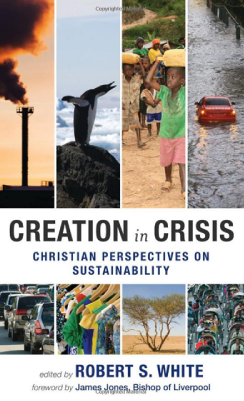
Ways need to be found to achieve reductions that are both realistic and equitable - for instance a mechanism called ‘Contraction and Convergence’.
Creation in Crisis
Robert White
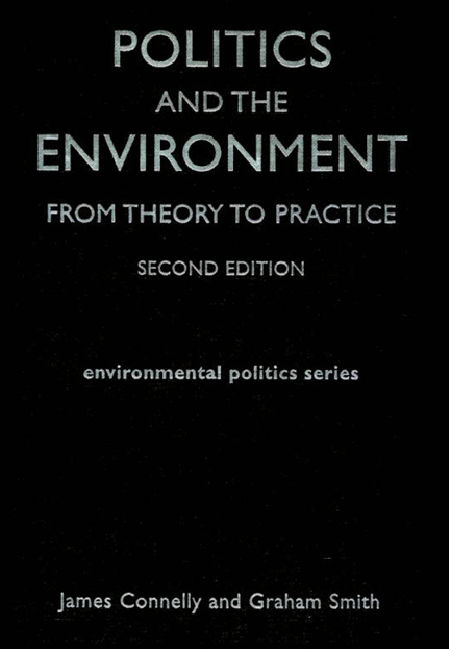
The Global Commons Institute has developed a plan Contraction and Convergence: contraction of overall emissions and convergence of Northern and Southern emissions. The proposal is in many ways a return to and development of the principles of the orgiginal UNFCCC.
Politics and the Environment: From Theory to Practice (Environmental Politics Series)
James Connelly, Graham Smith, David Benson

An area of interest in Kyoto related discussion concerning mitigation is the notion of targets for per capita emissions. As of 2007, the Kyoto Protocol has no global targets for per capita emissions; existing targets are just for particular countries, specifically developed countries. There is no policy measure that addresses the atmosphere as a whole, since exiting instruments are all based on only a part of the world’s emissions. Outside the Kyoto process, particularly in developing countries, a number of authors have written about the desire to create a more equitable approach for “sharing the atmosphere based on establishing that all countries are entitled to the same per capita consumption of energy and materials and are therefore also entitled to equal per capita GHG emissions rights. This approach is known as Contraction and Convergence, an idea initiated by the Global Commons Institute during the 1990s.
Climate Change in the 21st Century
Stewart J. Cohen, Melissa W. Waddell
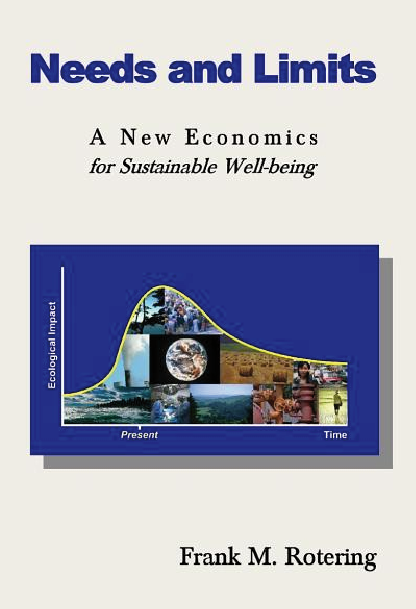
In a proposal made by the Global Commons Institute called Contraction and Convergence, the total emissions are reduced [Contraction] and the per capita emissions become more equal over time [Convergence].
Needs and Limits
Frank M Rotering
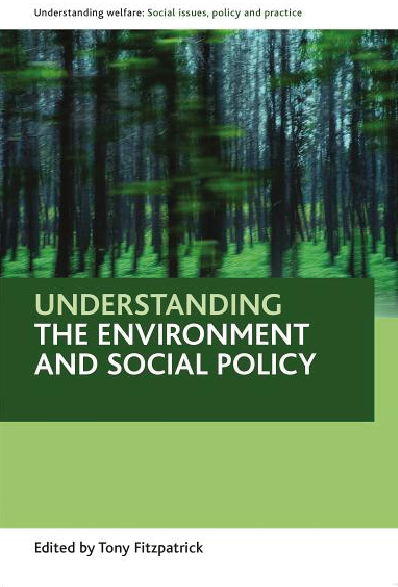
Contraction and Convergence. By contraction we mean the shrinking of carbon emissions over time and by convergence we mean that that the amount of carbon emitted by developed nations falls as, for a time, that of developing nations continues to rise so that the crucial social issues, for example poverty, can be addressed.
Understanding the Environment and Social Policy
Edited by Tony Fitzpatrick
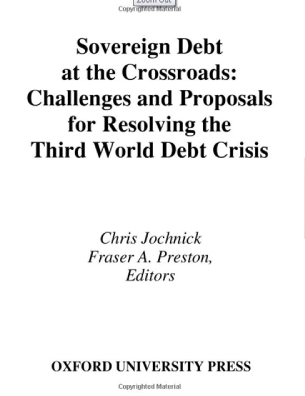
Contraction and Convergence. It is unlikely that everyone in the world will ever use identical amounts of fossil fuels. However, it is highly likely that any deal to manage the global commons of the atmosphere will have to based on this principle. In an agreed timeframe, entitlements to emit are predistributed in a pattern of international convergence so that globally they become equal per capita. This procedure is unavoidable if chaos is to be prevented. But it is possible that this framework will succeed without reform of our moneytary system.
Sovereign Debt at the Crossroads: Challenges and Proposals for Resolving the Third World Debt Crisis Chris Jochnick, Fraser A. Preston

‘Contraction and Convergence’ proposal of the Global Commons Institute [1996] all coutries have to agree a safe level of GHGs for instance no more than 450 ppmv by 2100
Rules for the Global Economy
Gary Hufbauer
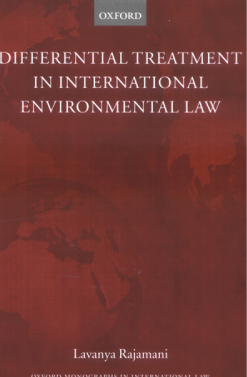
The ultimate objective of the UNFCCC is the stabilization of GHG concentration in the atmosphere. This is a recognition of what has come to be know as the Contraction and Convergence vision.
Differential Treatment in International Environmental Law
Lavanya Rajamani

One proposal called ‘Contraction and Convergence’ involves setting a scientifically-based global limit on greenhouse gases and then allocating a share to each person on the planet.
The Dragonfly’s Question
Darcy Hitchcock
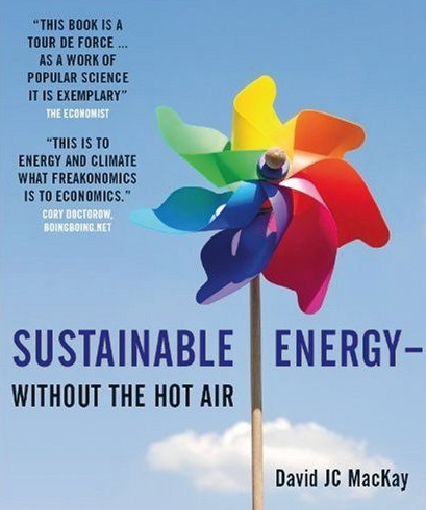
These possibly-safe trajectories require global emissions to fall by 70% or 85% by 2050. What would this mean for a country like Britain? If we subscribe to the idea of “contraction and convergence,” which means that all countries aim eventually to have equal per-capita emissions, then Britain needs to aim for cuts greater than 85%: it should get down from its current 11 tons of CO2e per year per person to roughly 1 ton per year per person by 2050. This is such a deep cut, I suggest the best way to think about it is no more fossil fuels.
Sustainable Energy
David Mackay
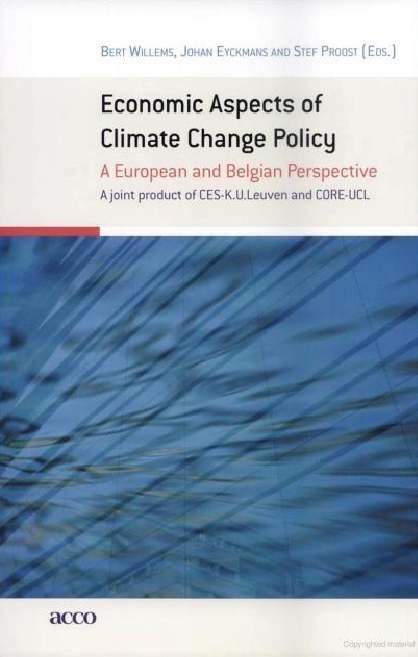
Per Capita Convergence - derived from the Global Commons Institute (GCI) Contraction and Convergence proposal - in which the target is to converge to an equal per capita emission at a certain period in the future, here 2050
Economic Aspects of Climate Change Policy
Bert Willems Johann Eyckmans Stef Proost

Towards 2030 issues relating to personal tradable emissions are discussed with a view to moving towards a more stringent Contraction and Convergence global environmental future in the UK with those that need to travel buying credits from those that have spare.
Building Blocks for Sustainable Transport
Adriaan Perrels, Veli Himanen, Martin Lee-Gosselin
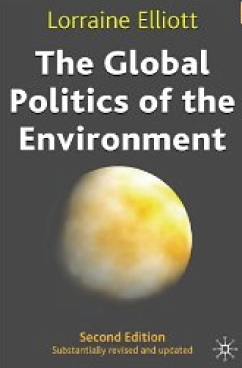
A politically challenging issue; the Global Commons Institute has proposed a Contraction and Convergence strategy It aims to make burden-sharing and emissions levels more equal and equitable.
The Global Politics of the Environment
Lorraine M. Elliott
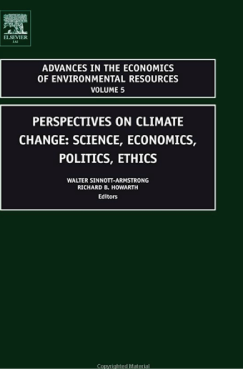
The Contraction and Convergence framework is useful for reconciling the divergent interests and views of nations on the basis of their diverse per capita emissions profiles.
Perspectives on Climate Change: Science, Economics, Politics, Ethics (Advances in the Economics of Environmental Resources) Walter Sinnott-Armstrong, Richard B. Howarth

The Contraction and Convergence concept, among key developing countries and even some developed countries seeking a leadership position on the climate change issue, implies a contraction of emissions from developed countries in oder to create ecological space for an increase in emissions in developing countries towards an agreed international benchmark of per capita entitlements.
Global Civil Society 2005/6 (Global Civil Society - Year Books)
Helmut K. Anheier, Professor Mary Kaldor, Marlies Glasius
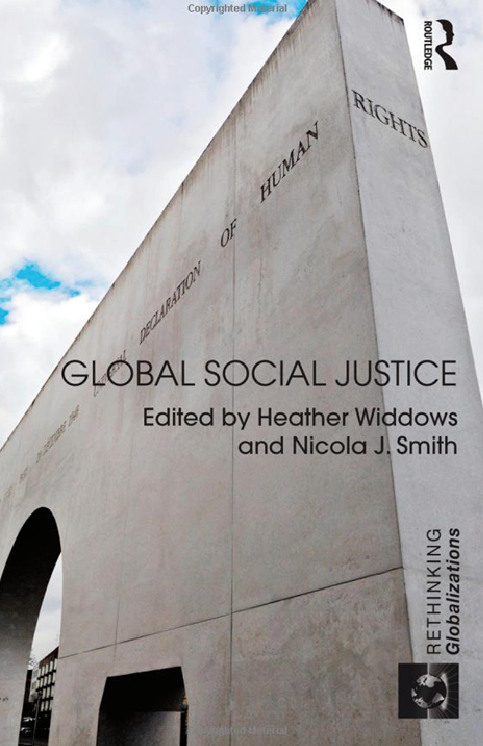
Contraction and Convergence [Meyer 2000] developed by the Global Commons Institute, allows industrialised countries gradually to reduce their emissions and for developing countries gradually to increase theirs.
Global Social Justice
Heather Widdows and Nicola J Smith

The Global Commons Institute has developed the idea of Contraction and Convergence to allow equal shares per person, set at such a level that we do not exceed safe atmospheric concentrations of CO2.
Car Sick: Solutions for Our Car-addicted Culture
Lynn Sloman
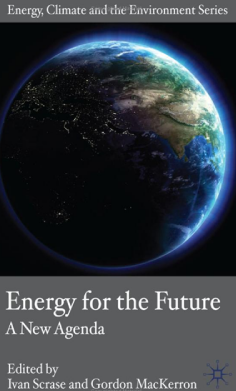
The Royal Commission on Environmental Pollution [RCEP 2000] started from the proposition that the industrialised world should primarily be resonsible for tackling climate change and that the right way forward was ‘Contraction and Convergence’ towards equal per capita carbon emissions across the world. Energy for the Future: A New Agenda (Energy, Climate and the Environment)
Dr Ivan Scrase, Professor Gordon MacKerron

‘Contraction and Convergence’ is a global framework for reducing GHG emissions to cobat climate change. Conceived by the Global Commons Institute in the early 1990s, the ‘Contraction and Convergence’ strategy consists of of reducing overall emissions of greenhouse gases to a safe level while setting per capita emissions equity as the ultimate goal.
The Corporate Greenhouse : Climate Change Policy in a Globalizing World: Climate Change Policy and Greenhouse Gas Emissions Reductions in a Globalizing World Yda Schreuder
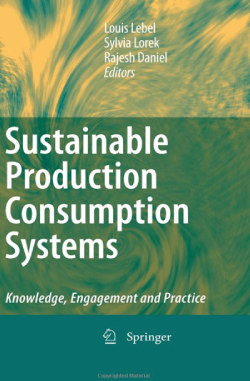
This is contraction and convergence on a grand scale. Contraction of the consumption by the rich as the foundation for the convergence of consumption levels by all at some sustainable level. At first blush, any talk of contraction and convergence seems hopelessly naive. You’ll never get the rich to cut back is one reflexive resonse. The poor will never show restraint is another.
Sustainable Production Consumption Systems: Knowledge, Engagement and Practice
Louis Lebel, Sylvia Lorek, Rajesh Daniel
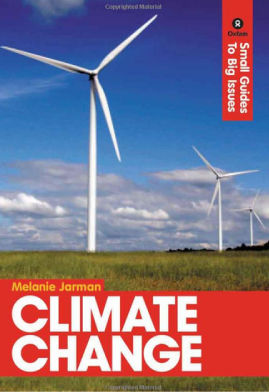
The most high-profile possible frameworks for emissions cuts and climate change is ‘Contraction and Convergence’. Under this proposal each country would be allocated its share of the overall emissions budget fulfilling the US requirement that developing countries are given emissions targets.
Climate Change: Small Guides to Big Issues
Melanie Jarman

The concept of Contraction and Convergence of carbon emissions has emerged as a leading principle for the next round of international negotiations on climate change.
Feelbad Britain: How to Make it Better
Pat Devine Andrew Pearmain, David Purdy

Redress for profligacy, incentives for conservation, allowing resources to be transferred from rich countries to poor ones, thus leading to distributional equity, equity, efficiency and sustainability. A formulation that carries this insight is that of Contraction and Convergence [C&C]. A market baserd scheme can work well in achieving cost-effective reductions within this allocation framework. Some have suggested using the C&C and per capita entitlements as the basis for long-term negotiations.
Climate Change and Developing Countries (Advances in Global Change Research)
Nijavalli H. Ravindranath, Jayant A. Sathaye

Contraction and Convergence. One of the most interesting concepts for a contract for people’s CO2 justice is currently being discussed under the title Contraction and Convergence [C&C]. This is a contract that allows an upper limit global CO2 emissions [contraction] with a process of gradually approximation to a distribution of emission allowances to egalitaristichen criteria [convergence].
Prinzip Nachhaltigkeit
Markus Vogt
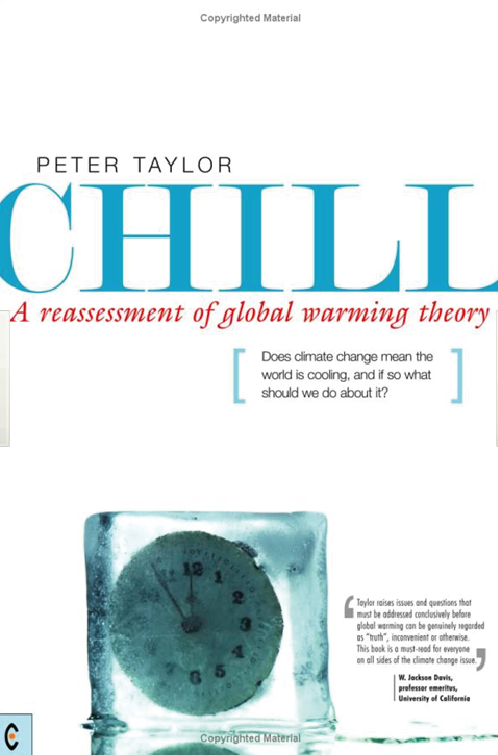
Contraction and Convergence are terms put forward by Aubrey Meyer of the Global Commons Institute proposing a movement towards equal per capita emissions allowances for every planetary citizen and it has gained widespread endorsement.
Chill, A Reassessment of Global Warming Theory:
Does Climate Change Mean the World is Cooling, and If So What Should We Do About It?
Peter Taylor
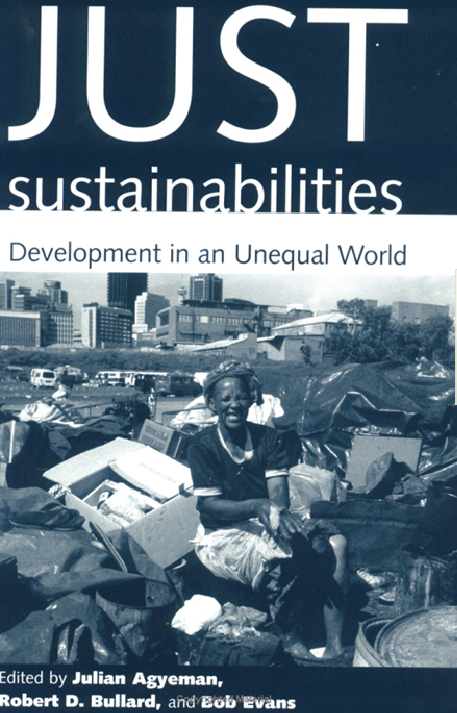
An equitable alternative would be to allocate consumption or pollution rights according to population, or in accordance with a planned transition to equal consumption. An example of this for fossil fuel use is the Contraction and Convergence scenario.
Just Sustainabilities: Development in an Unequal World (Urban and Industrial Environments)
Julian Agyeman
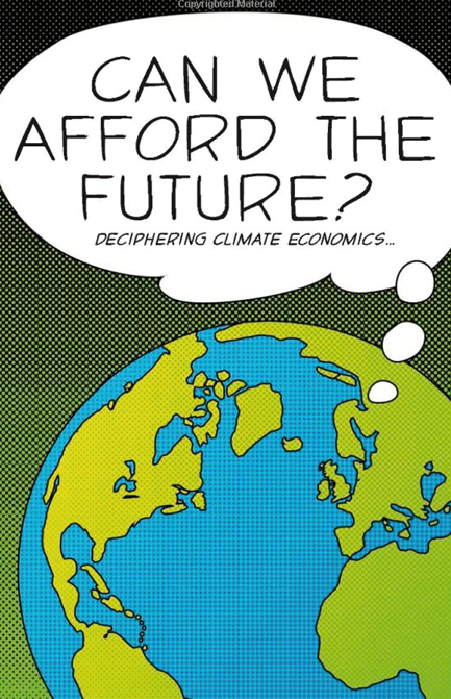
One widely discussed idea is contraction and convergence (C&C).
Can We Afford the Future?:
The Economics of a Warming World (The New Economics): Deciphering Climate Economics
Frank Ackerman
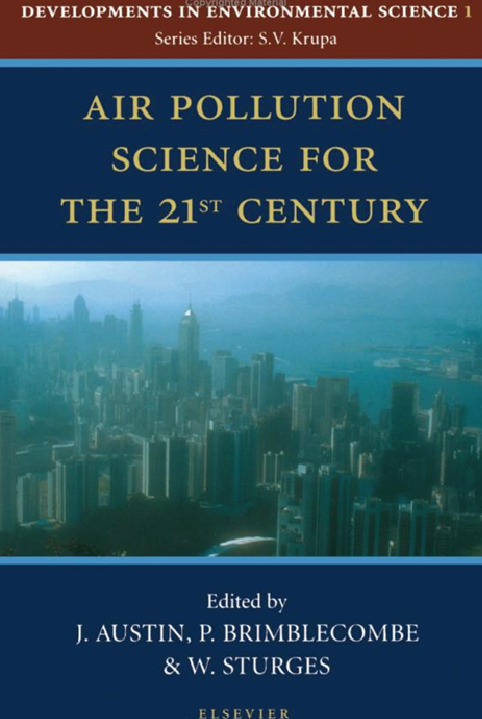
Contraction and Convergence [C&C] is a political framework that only work if all parties accept the need to compromise in order to achieve the Convention’s ultimate. If this is achieved then C&C is the structure that can form the basis of negotiations regarding global budgets and target dates.
Air Pollution Science for the 21st Century (Developments in Environmental Science) J. Austin, Peter Brimblecombe, W.T. Sturges
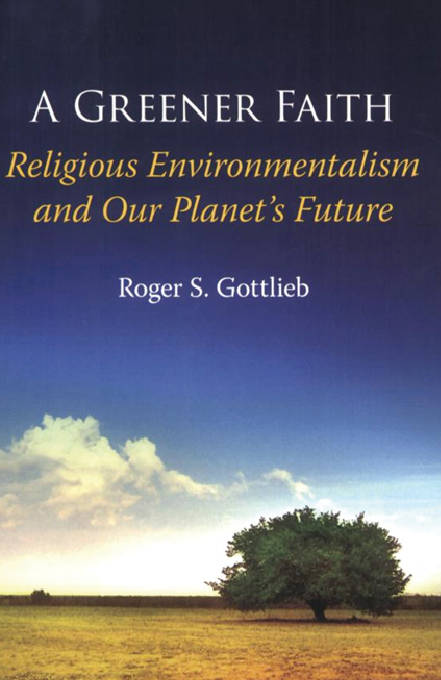
In a quite radical moral initiative, the WCC also called for “Contraction and Convergence” allowing each country and equal amount of emissions per head.”
A Greener Faith: Religious Environmentalism and Our Planet’s Future
Roger S. Gottlieb
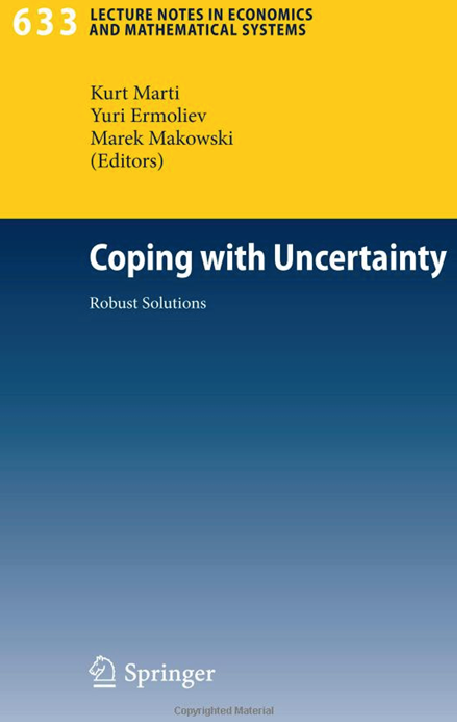
A rule that applies equally to all countries as would be the case for instance under the so-called Contraction and Convergence approach.
Coping with Uncertainty: Robust Solutions
Kurt Marti, Yuri Ermoliev, Marek Makowski
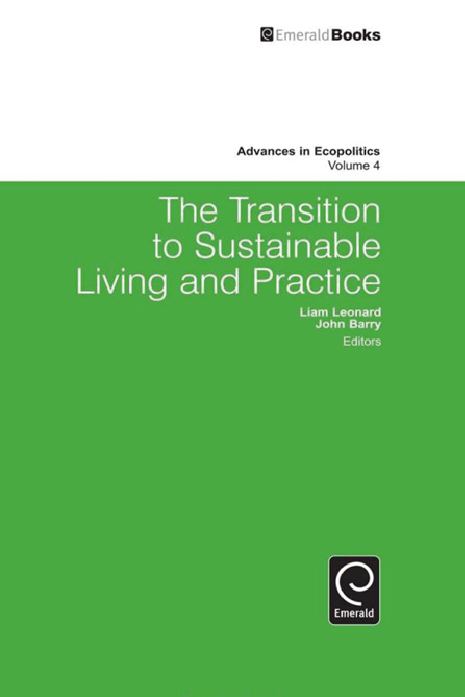
We need a global system where countries agree to limit their caron dioxide emissions. This chapter outlines the Contraction and Convergence model - a mechnism for reducting emissions and sharing them equally between world citizens.
The Transition to Sustainable Living and Practice
Liam Leonard John Barry
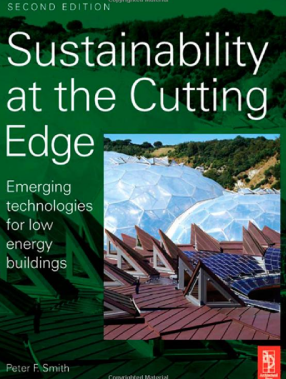
Ways need to be found to achieve the reductions that are realistic and equitable, for instance following a suggestion of the Global Commons Institute called ‘Contraction and Convergence’.
Sustainability at the Cutting Edge: Emerging Technologies for low energy buildings
Peter Smith

His answer was the brainchild, the doctrine of ‘Contraction and Convergence’ which envisages a global limit on the production of greenhouse gases at a level tolerable to the planet.
Under the Weather: Us and the Elements
Tom Fort
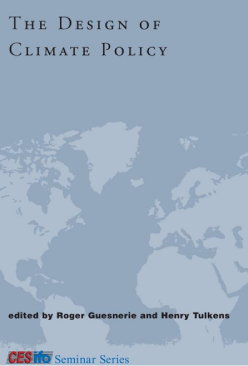
To achieve a ‘Contraction and Convergence’ towards equal per capita emissions equity in the long run. [Meyer].
Design of Climate Policy (CESifo Seminar Series)
Roger Guesnerie, Henry Tulkens
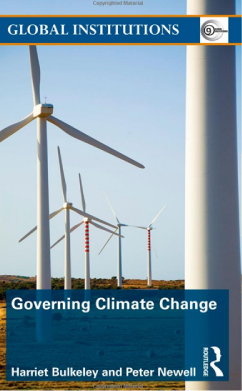
‘Contraction and Convergence’ is one such proposal developed by a small London-based NGO called the Global Commons Institute and its charismatic head, the musicican Aubrey Meyer. The basic idea which underpins the proposal is that developed countries have to contract their emissions down to an agreed level which would address the UNFCCC’s aim of avoiding dangerous interference in the climate system. Governing Climate Change (Global Institutions)
Harriet Bulkeley, Peter Newell

‘Contraction and Convergence’. Aubrey Meyer, an English concert viola player among other things, has proposed the concept of Contraction and Convergence [C&C] as a reasonably fair way to allocate and cut carbon dioxide emissions.
A Brief Guide - Global Warming - Heavyweight Issues, Lightweight Read
Jessica Wilson Stephen Law

Contraction and Convergence - a mathematical equation, of a convergence towards equal per-capita carbon allocations in the context of a contraction of overall global emissions. This is the framework known as contraction and convergence.
Is Global Warming a Threat
David Haugen Susan Musser
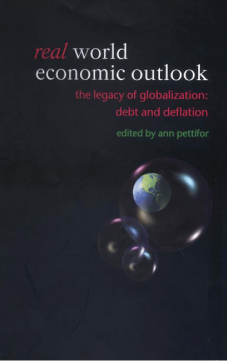
"We need a system of Contraction and Convergence as promoted by the London-based GCI."
The Real World Economic Outlook New Economic Foundation
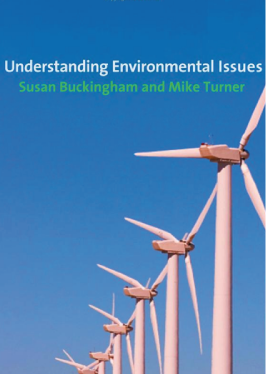
"Aubrey Meyer has called for a Contraction and Convergence model for capping global emissions which places an emphasis on distributional equity of emissions over time."
Understanding Environmental Issues Susan Buckingham
Mike Turner

“So the only other option requires us to make deeper cuts in our emissions in order to allow developing countries some room to expand theirs. If we divided up the total allowance of 10 billion tonnes equally between the 7 billion people in the world that would give us a new target of 1.5 tonnes each – just 1,500 carbos. This requires that we reduce our emissions by 87% by 2050, and if the world population keeps increasing, by even more. This proposal called Contraction and Convergence has many powerful supporters. Like them I believe it is the only just and politically feasible option.”
Carbon Detox
George Marshall
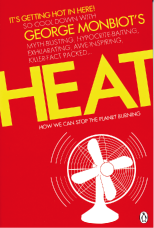
"The overall effect would be an annual contraction of global carbon emissions, as the different countries converged towards the same amount per person. Unsurprisingly, this approach is known as 'contraction and convergence'. It was devised by a man called Aubrey Meyer. He is one of those extraordinary people whose lack of relevant qualifications appears to work in his favour: he's a concert viola player. Meyer was able to leap over the more constrained proposals of the professionals and produce an idea that was simple, based on science and fair. But while adopting the principle of contraction and convergence would not mean an end to the political arguments, they would no longer take place in a moral and intellectual vacuum. The negotiators would have a target - an equal division of the planet's capacity to absorb pollution - which is both factual and fair. The best estimate of the planet's total carbon sink in 2030 will change as the science improves, but the target can change with it. With an equal global carbon allocation, countries will no longer be able to claim that they can't act because others are not obliged to join in. They might not like this proposal, but they cannot deny that it is even-handed."
Heat
George Monbiot
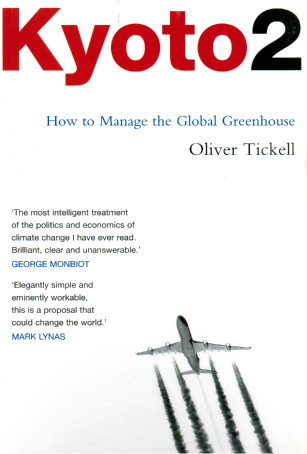
‘Contraction and Convergence’. Several proposals have been made for tackling the problems of global heating which recognize the atmosphere as a global commons. The best know of these is know as Contraction and Convergence [C&C].
Kyoto2: How to Manage the Global Greenhouse
Oliver Tickell
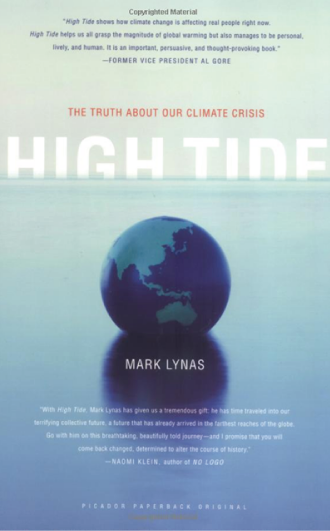
"Luckily, a workable solution is currently on the table, one which recognises that equal rights to the atmosphere are integral to efforts to protect the climate from major destabilisation. First developed by Aubrey Meyer of the Global Commons Institute in London, it has begun to receive tacit support from within the British government, adding to support from the European Parliament. the Africa Group of Nations and the governments of India and China. This solution has an elegant logic which cuts right through all the UN jargon and complexity which has blighted international climate policy so far. It's called Contraction and Convergence."
High Tide: The Truth About Our Climate Crisis
Mark Lynas
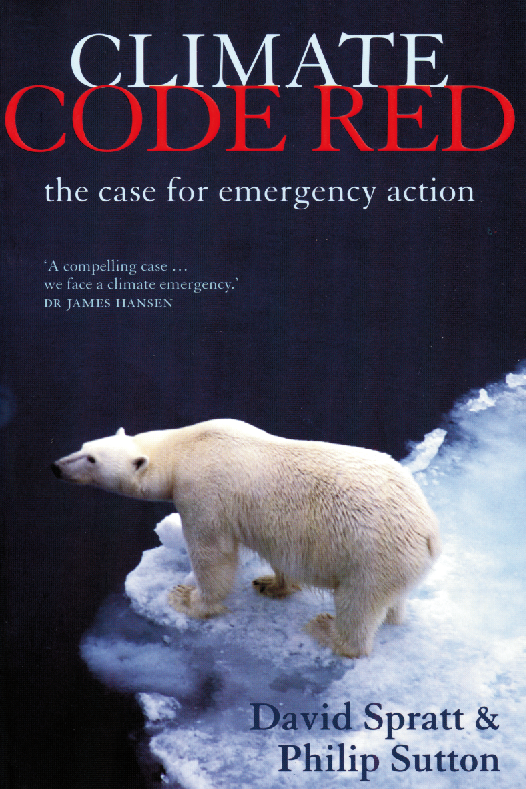
Until recently, most players in the climate-policy arena assumed that while global-warming emissions needed to be cut substantially, they did not need to be reduced to zero, so it would be fair for all people across the globe to share a reduced annual greenhouse-gas limit. Poor people could keep increasing their fossil-fuel use until their emissions reached the limit, and people in rich countries would need to keep reducing their emissions until they reached the same per capita level (a principle known as 'contraction and convergence').
Climate Code Red
David Spratt and Philip Sutton
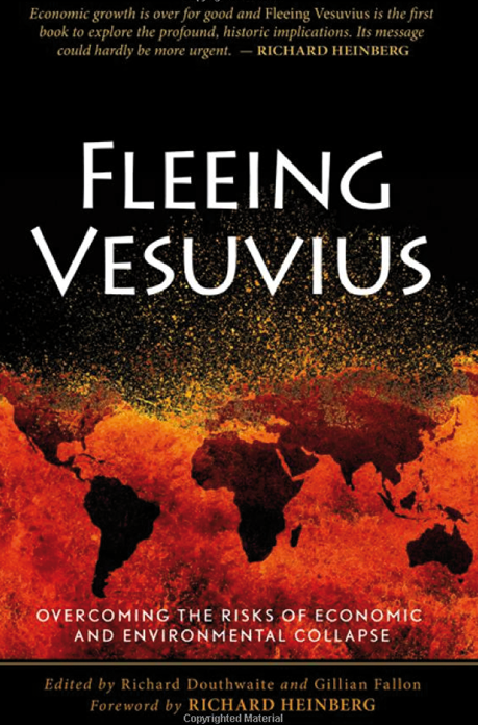
The apportionment formula is of course a thorny question. It might be based on Contraction and Convergence, the idea of a fair distribution of carbon emissions quotas to all citizens of the the Globe.
Fleeing Vesuvius: Overcoming the Risks of Economic & Environmental Collapse
Richard Douthwaite, Gillian Fallon

"The Global Commons Institute [GCI] coined the term and have campaigned to promote the 'contraction andconvergence' approach, backed with detailed and graphic numerical studies of what it might mean. Details may be found on the GGI web site, http://www.gci.org.uk, which includes access to a numerical model. The international parliamentarians group, Global Legislators for a Balanced Environment, has backed this approach; and see Aubrey Meyer, 'Global Equity and Climate Change: A History of the UNFCCC Negotiations for a Global Solution', GLOBE International, Brussels, 1998;
or Aubrey Meyer, 'Contraction and Convergence: A Global Solution to a Global Problem', in Man Made Climate Change - Economic Aspects and
Policy Options, Proceedings of ZEW conference, Mannheim, Germany, March 1997."
The Kyoto Protocol A Guide and an Assessment review
Michael Grubb, Christiaan Vrolijk and Duncan Brack
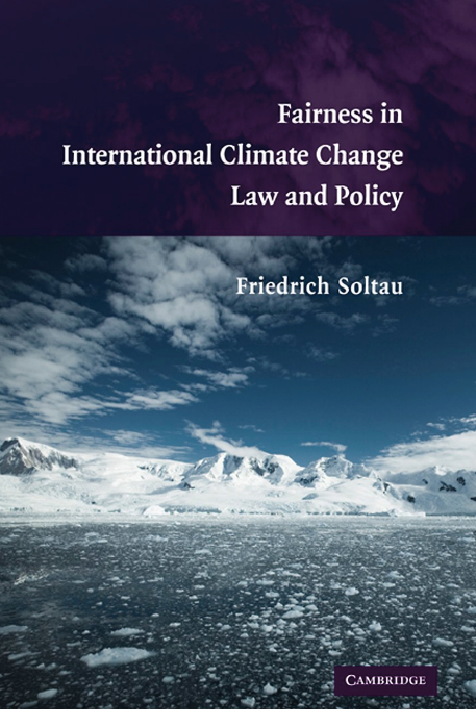
Equity and fairness concerns are reflected in the Framework Convention
itself. Equity is considered explicitly in many of the proposals for a post-Kyoto
climate agreement, perhaps most prominently the Contraction and Convergence proposal, put forward by the Global
Commons Institute, see: -
Fairness in International Climate Change Law and Policy

Naturally, an agreement will have to be found on the issue of reparations for these cuts. “Contraction and convergence” represents one proposed plan that shows an equal level of emissions per capita for all by the end of the century. The attainment of this objective (re-launched recently by German Chancellor Merkel with the idea of 2 tons annually per inhabitant) involves an expressed decrease of emissions by industrialized countries and smaller amounts by those developing nations reaching a peak by 2025-2030, in order to diminish these emissions.
The ENERGY GAME

OPT recommends: - "That the principle of “contraction and convergence” (rich and poor converging towards a common per person emissions target) be accepted as an equitable starting point for distributing total tolerable carbon emissions, provided that this is allocated to states on the basis of their population size at a specific date. This would encourage the adoption of population restraint policies; whereas allocation on a simple per person criterion would encourage continued population growth, thus continuously reducing every person’s carbon entitlement."
Statement endorsed by: -
Sir David Attenborough,
Naturalist, Broadcaster and wildlife film-maker*
Prof Sir Partha Dasgupta,
Frank Ramsey professor of economics, University of Cambridge*
Prof Paul Ehrlich,
Professor of population studies, Stanford University*
Prof John Guillebaud,
Emeritus Prof family planning, University College, London*
Susan Hampshire,
Actor and population campaigner*
James Lovelock,
Gaia scientist and author
Professor Aubrey Manning,
Pres Wildlife Trust, Emeritus Prof Natural History, Edinburgh University
Professor Norman Myers,
Visiting Fellow, Green College, Oxford University*
Sara Parkin,
Founder/Dir and trustee, Forum for the Future*
Jonathon Porritt,
Founder/Dir, Forum for the Future; Fmr Chair, UK Sus. Dev. Commission*
Professor Chris Rapley,
Former director, the British Antarctic Survey
"The Optimum Population Trust"on C&C
"Contraction and Convergence is a prime example of a UNFCCC-compliant Global Climate Change Framework. It is a rational formulation for reconciliation of 'Climate Justice without Vengeance'. Several ideas derived from C&C have surfaced since Kyoto with ideas that can be perhaps in various ways incorporated into C&C. However, there is an overwhelming need for an over-arching UNFCCC-compliant Framework that enables the globally competing interests of the over-consuming and the under-consuming to be reconciled with each other and with the objective of the UNFCCC in a non-random manner. We feel that C&C is the veteran and indeed the apex example of this and urge you to consider our request. At Kyoto in December 1997 and shortly before they withdrew from these negotiations, the USA stated, “C&C contains elements for the next agreement that we may ultimately all seek to engage in.” The adversarial reasons for their withdrawal then were in play again at COP-15: - http://www.gci.org.uk/public/COP_15_C&C.swf C&C answers this in a unifying and constitutional way and the need for this answer becomes increasingly critical." Letter and signatories at: -
http://www.gci.org.uk/politics.html
Colin Challen
Former Chair UK All Party Parliamentary Group on Climate Change
Professor Sir Tom Blundell FRS, FMedSci,
Department of Biochemistry, University of Cambridge,
Former Chairman of the Royal Commission on Environmental Pollution
Professor Peter Guthrie OBE
Professor in Engineering for Sustainable Development in the UK
Fellow of St Edmund’s College Cambridge
Professor Martin Rees
Trinity College Cambridge
Sir John Houghton
President, John Ray Initiative
Michael Hutchinson
CEO Tangent Films
The Rt Revd & Rt Hon Richard Chartres KCVO DD FSA
Bishop of London
Anthony J. McMichael, MBBS, PhD
Professor and NHMRC Australia Fellow National Centre for Epidemiology & Population Health
ANU College of Medicine, Biology and Environment
Australian National University
Honorary Professor of Climate Change and Human Health, University of Copenhagen
Ruth Reed
President Royal Institute of British Architects [RIBA]
Sunand Prasad
Former President of RIBA
Maneka Gandhi
Member of Parliament India
David Wiggins
Wykeham Professor of Logic, Emeritus, Oxford University
Lord David Puttnam
Film Producer
Jack Pringle
PPRIBA Hon AIA FRSA Dip Arch BA(hons)
Partner Pringle Brandon LLP; Director WIRED architects Ltd
Chair Article [25] (UK reg. charity 1112621 for Development and Disaster Relief)
Vice Chair Construction Industry Council (CIC)
Council Member International Union of Architects (UIA)
Past President Royal Institute of British Architects (RIBA)
Commandeur Des Arts et Lettres
Sir John Harman FRSA Hon FICE, FIWEM, FIWM, FSE, DCL
Professor Aubrey Manning, OBE,FRSE
Emeritus Professor of Natural History, University of Edinburgh
Tim Livesey
The Archbishop of Canterbury’s Secretary for Public Affairs
Sir Crispin Tickell
Director Policy Foresight Programme Oxford University
Professor Sir Michael Marmot MBBS, MPH, PhD, FRCP, FFPHM, FMedSci
Director, UCL International Institute for Society and Health
MRC Research Professor of Epidemiology and Public Health, University College London
Chairman, Commission on Social Determinants of Health
Chairman, Department of Health Scientific Reference Group
Professor Sir Andy Haines
Director, London School of Hygiene & Tropical Medicine, London WC1E 7HT
[in a personal capacity]
Professor Brendan Mackey
The Fenner School of Environment & Society
The Australian National University
* Member, IUCN Council (Oceania Regional Councilor)
* Member, Earth Charter International Council
Professor David Orr
Environmental Studies and Politics Oberlin College; James Marsh Professor University of Vermont.
Alistair Woodward
Head of the School of Population Health, University of Auckland
Dr Nigel Woodcock
Reader, Department of Earth Sciences, University of Cambridge
Roger Arthur Graef OBE
criminologist and film-maker
Professor Bill McGuire
Director, Aon Benfield UCL Hazard Research Centre
University College London
Lord Anthony Giddens
Professor Emeritus LSE
Susan Richards
non-executive director and founder of openDemocracy
John Carstensen
Chief Executive Officer Society for the Environment
Professor Mark Swilling
Sustainability Institute, School of Public Management and Planning
Stellenbosch University, South Africa
Lynne Jackson
Coastal & Environmental Consulting
Cape Town, South Africa
Dr David Pencheon
Director - NHS Sustainable Development Unit (SDU)
Professor Anthony Costello FMedSci,
Director UCL Institute for Global Health
Tom Spencer
Vice Chairman, Institute for Environmental Security
Dr Mayer Hillman
Senior Fellow Emeritus Policy Studies Institute
Susan George
President of the board of the Transnational Institute
Alex Kirby
Former BBC News environment correspondent
Professor Tim Jackson
Sustainable Development Surrey University
Director of the Research group on Lifestyles, Values and Environment
Professor William E. Rees, PhD, FRSC
UBC School of Community and Regional Planning, Vancouver, BC, CANADA
Jeremy Leggett
Chairman Solar Century
Andrew Dlugolecki
UK Climate Change Committee Member, Sub Committee on Adaptation
The Hon. Tom Roper
Board Member, Climate Institute, Washington DC
Adam Poole
The EDGE UK
Professor Lord Smith of Clifton
Peter Head,
Chairman of Global Planning Arup.
Linda Rosenstock MD, MPH
Dean, UCLA School of Public Health
Former Director, U.S. National Institute for Occupational Safety and Health
Professor Alan Maryon-Davis
President, UK Faculty of Public Health
John Guillebaud
Emeritus Professor of Family Planning & Reproductive Health, UCL
Professor Hugh Montgomery
Director, UCL Institute for Human Health and Performance
Dr Robin Stott
Director of the Climate and Health Council
Emeritus Professor Brian Moss
University of Liverpool
Steven Earl Salmony
AWAREness Campaign on The Human Population [estab. 2001]
Robert Costanza
Gordon and Lulie Gund Professor of Ecological Economics
Director, Gund Institute for Ecological Economics
Rubenstein School of Environment and Natural Resources
The University of Vermont
Jenny Griffiths OBE,
Member, Climate and Health Council
Tim Helweg Larsen
Director Public Interest Research Centre
Jonathon Porritt
Forum for the Future
Sara Parkin,
Founder Director, Forum for the Future
Lorna Walker
CABE
Dave Hampton
Carbon Coach MA (Cantab) C Env C Eng FCIOB,
Society for the Environment Board Member, The Edge,
RIBA Sustainable Futures, Superhomer, Transition Town Marlow Founder
Leslie Watson
Director Sustainability South West
Nick Reeves
Executive Director CIWEM
Professor Ernst Ulrich von Weizsäcker PhD
Lead Author, Factor Five, Former Chairman of the German Bundestag’s Environment Committee
Professor Robert B. Whitmarsh
School of Ocean and Earth Science, National Oceanography Centre, SOUTHAMPTON
Patrick Ainley
Professor of Training and Education, University of Greenwich
Michael H. Glantz,
Director CCB (Consortium for Capacity Building)
INSTAAR University of Colorado
Antonio Sarmiento G
Instituto de Matemáticas, UNAM México
Tim Smit
Director of the EDEN Project
Ulrich Loening
Former Director of the Centre for Human Ecology
Paul Allen
External Relations Director of the Centre for Alternative Technology
Dr Richard Horton
Editor in Chief Lancet Magazine
Fiona Godlee
Editor in Chief British Medical Journal
Dr Jean-Baptiste Kakoma
Rwandan School of Public Health
Ian Roberts
Professor of Epidemiology and Public Health LSHTM
University of London
Sarah Walpole, BSc, MBChB,
York District Hospital, UK
Professor Sir Sabaratnam Arulkumaran
President, Royal College of Obstetricians & Gynaecologists, UK
Mr Tim Campbell-Smith MBBS BSC FRCS (Gen Surg)
Consultant colorectal and general surgeon
Mark Thompson
General Practitioner
Dr. Marie-Claire Lobo
Consultant in Public Health Medicine NHS Hampshire
Tony Waterston
Consultant paediatrician (retired)
Chair of Royal College of Paediatrics and Child Health Advocacy committee
Robert Johnstone MSc MInstP MIPEM CEng
Clinical Scientist, London
Professor David Webb
Engineering The Praxis Centre Leeds Metropolitan University
Dr Stuart Parkinson
Scientists for Global Responsibility
Professor Fiona Stanley
Director Telethon Institute for Child Health Research Perth Western Australia
Bhavani Prakash
Founder Eco WALK the Talk.com, www.ecowalkthetalk.com/blog
Professor Andrew Weaver
Canada Research Chair University of Victoria
Dr Tom Barker
Sustainability ecologist, Dept of Ecology, University of Liverpool.
Sean Kidney
Chair, Climate Bonds Initiative
Dr Samuel Bonnett
Biogeochemist, Institute for Sustainable Water,
Integrated Management and Ecosystem Research,
University of Liverpool.
Dr Peter North,
Senior lecturer, Department of Geography,
University of Liverpool.
Dr Jane Fisher,
Lecturer in Ecology,
Liverpool John Moores University.
Prof Andy Plater,
Director of Oceans and Ecosystems Research Cluster and
Head of Green Economy incubation Network,
University of Liverpool
Romayne Phoenix
London Green Party Campaigns Officer
Penny Kemp - GCI
Jim Berreen – GCI
Lewis Cleverden - GCI
Dr Richard Lawson
General Practitioner
Mr Mike Zeidler
Chairman, Association of Sustainability Practitioners
John Bunzl
Trustee, International Simultaneous Policy Organisation
Roger Martin
Chair, Optimum Population Trust
Anthony and Anne Wilson
Staffordshire
Marianne McKiggan
Crisis Forum
David Cook
Executive Ambassador the Natural Step
Ian Roderick,
Director of the Schumacher Centre,
lead partner in the CONVERGE project
Michael Herrmann
Senior Lecturer in Sustainability
Kingston University School of Architecture & Landscape
Faculty of Art, Design & Architecture Surrey
Professor Peter Reason
School of Management, University of Bath
John H Crook Phd DSc
Formerly Head of Joint School in Psychology and Zoology
Psychology Department, Bristol University
Francesca Vandelli
Systemic Learning and Development Officer, Health and Social Care Bristol
Tim Malnick
Co-Director Ashridge Masters in Sustainability and Responsibility
Toddington Harper
MD, The Low Carbon Economy Ltd
Dr Nicholas Allott
Postdoctoral research fellow at Centre
for the Study of Mind and Nature, Oslo University
Doug Whitehead
Partner Consulting & Student Bond University
Post Graduate Programme Carbon Management
EnSight Consultancy, Brisbane
Hilary Griffiths
Coordinator of Friends of the Earth, Guildford and Waverley.
Elizabeth Tomlinson
BSc (Econ), ITEC, LLSA, MBNSRTA
Dr Keith Baker
Director, Sustainable Footprints
Keith Taylor
Green MEP
Jean Lambert
Green MEP
Caroline Lucas MP
Tim Yeo MP
Chairman of the House of Commons Energy and Climate Change Committee
Martin Caton MP
Joan Walley MP
Paul Flynn MP
Jo Swinson MP
Rt Hon Michael Meacher MP
UK House of Commons
Dr. Rupert Read
Norwich Green Party and University of East Anglia Philosophy Department
Jenny Jones AM
Green Party Group London Assembly
Darren Johnson AM
Green Party Member London Assembly
Dr Martin Hemingway
Green Party, North West Leeds
James Del-Gatto
Head of CSR - SThree plc
Raja Mitra
Senior executive & Management professional
Stuart Jeffery
Campaigns Officer, Kent Green Party
Andrew Dakers
Spokesperson for Hounslow Borough Liberal Democrats
Meenakshi Subramaniam
UCCK, Kodaikanal
Paul Anderson, PhD
Research Fellow, University of Warwick
John Russell
Chairman Giltbrook Studios, Nottingham
Esther Maughan McLachlan,
Managing Director, Strong Language Ltd.
Stephen Thomson,
Editor, Plomomedia.com
Peter Martin
Research Director CarbonSense
Dave Yates
Newport Friends of the Earth
Dr Michael Taylor
Retired Teacher
Terry Wyatt
Jo Abbess
BSc
Miles Litvinoff
writer
John Cossham
Milena Buchs
Stan Mowatt
Chemistry Teacher
Audrey Urry
Liberal Democrat
Chris Keene
Green Party
Dr Clive R Sneddon
Liberal Democrat
John Dougill
Artist
Tony Burton
Wind Energy Consultant
Tamas Szabados
PhD Maths Dept Budapest University
Rebecca Findlay
Lambeth Green Party & Sustainable Streatham
Brian Orr
Civil Servant
Penney Poyzer
Author and Broadcaster
Jeffrey Newman
Earth Charter
Kate Prendergast
Freelance consultant, member Crisis Forum
Mr Leo Giordano
Homes and Communities Agency
Rev. Canon Peter Challen
Christian Council for Monetary Justice
Alex Lawrie
CEO, Lightweight Community Transport
Chair, The Ecological Land Co-operative
John Whiting
GCT
Sabine McNeill
Green Credit
Dr Alan Bullion
Business Analyst, Informa Agra
Dr. Robert Davis
Steve Wright
Reader Global Ethics, Leeds Metropolitan University
Dr Arvind Sivaramakrishnan
Michael Sackin
Phil Harris
retired Government Grade 7 scientist
Barbara Panvel
Centre for Holistic Studies [India]
Dr Mark Levene
Reader in Comparative History, University of Southampton
Jonathan Ward
MSci, MSocSc, StudentForce for Sustainability
Richard Jordan MA
Nic Lee and Heather Finlay
London
Jim Roland
Liberal Democrat party member
Ashton Shuttleworth
BSc (Dunelm) MSc DipIC DipFM FRGS - Environmental Finance and Consulting
Ben Brangwyn
co-founder Transition Network
Michelle Thomasson
Transition Minchinhampton
Anne Adams
Peter Kent Bsc. Msc
Lib Dem. Town Councillor
Clare Palgrave
Chair; Woking Local Action 21
Scott Ainslie
Susan Chapman
BA (Theol) Retired Teacher
Georgia Meyer
Teacher
Lucinda Cridland
Sophie Rees
Zahra Akram
Laura Mccutcheon
Rhiannon Dorrington
Pippa Bartolotti
Carolyn Kelley Gopalan
Prakash Natarajan
IT Director
Brian Wills
Philip Valentino
The Food and More Project
Owen Clarke
Green Party Torfaen
Ms Mary Scott
Environmental consultant
Angie Zelter
Reforest the Earth
Nina Venkataraman
Liam Proven
Writer - London
Hugh Fraser
Transition Kensington
Jean Vidler
Green Futures Festivals Co Ltd
Ankaret Harmer
Kings Heath Transition Initiative & BrumLETS, Birmingham
Dr Martin Hemingway
Green Party, North West Leeds
Jamie Bull MSc
oCo Carbon
Sheila Freeman
Friends of the Earth London
Reggie Norton MA
Christine Dawson
Artist
Nicola Wareing
Physics Student, Lancaster University
Chris Speyer
Writer
Diana Korchien
Publisher of Calendar of Climate Change (2007, 2008, 2009)
Transition Leytonstone
Ros Bedlow
Transition Leytonstone
Roisin Robertson MICHT VTCT
Janice Connully
Womens Theatre
Julie Baker
Community Artist
Al Dutton
Alan Francis
Green Party Transport Speaker
Brig Oubridge
Former Director, Big Green Gathering
John Moore
Green Radio
Simon Eastwood
Steve Muggeridge
Director Big Green Gathering
Linda Benfield
Director Big Green Gathering
Helena Schnitner
Big Green Gathering Independent Astrologer
Alan Turnbull
Director Floating Lotus
Ossie Bash-Taqi
Chef
Hugo Charlton
Barrister
Eileen Noakes

"You know I agree, in the long term there is no other way to solve this problem.”
Chris Huhne MP UK Secretary of State Energy & Climate
Support for Saskawa Prize Nomination 2003
Support for Funding Appeal 2009
Support for GCI advocacy
Support Individuals for C&C advocacy
Support Organisationsfor C&C advocacy
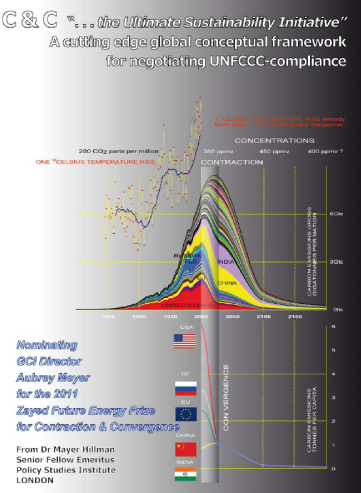
"Aubrey’s effort to keep the C&C approach visible at the centre-ground of UN climate politics has substantially paid off. It resulted in the adoption and advocacy of C&C by the UK Royal Commission on Environmental Pollution [RCEP] in 2000. After that he published a body of evidence on C&C for the UK Parliamentary Select Committees who in turn have repeatedly published reports strongly advocating C&C to successive UK Governments. In the light of all these recommendations, this has resulted in the UK Climate Act [2008] being clearly based on C&C. Awarding this Prize to Aubrey Meyer for Contraction & Convergence, could be invaluable in achieving consensus on the global deal needed for success at the UNFCCC. It would not just be a recognition of his effort, it would send a strong signal to the UN saying that to survive, we must finally transcend the politics of blame and join together globally in this constitution for Climate Justice without Vengeance."
Nomination of Aubrey Meyer and ‘Contraction & Convergence‘ for Zayed Prize
by Dr. Mayer Hillman, Senior Fellow Emeritus, Policy Studies Institute, London



















































































































































































































































































































































































































































